We visited the Meadowlark Botanical Gardens in Fairfax County, Virginia twice this week, once on Saturday at sunrise and again on Sunday in the afternoon. Although there wasn’t an impressive sunrise, we did see plenty of flowers and birds. We even found a Swainson’s Thrush, a species we’ve never seen before. We also managed to find Ruby-Throated Hummingbirds on both days.
Saturday Morning, September 21st
We arrived early Sunday morning just after Meadowlark Botanical Gardens opened for the day at 6:45am. The normal opening time is 10am, however, the gardens open early today:
It has been a few months since our last visit as we were busy traveling earlier in the year and didn’t visit during the summer due to the heat and humidity. The weather is much nicer now in the fall!
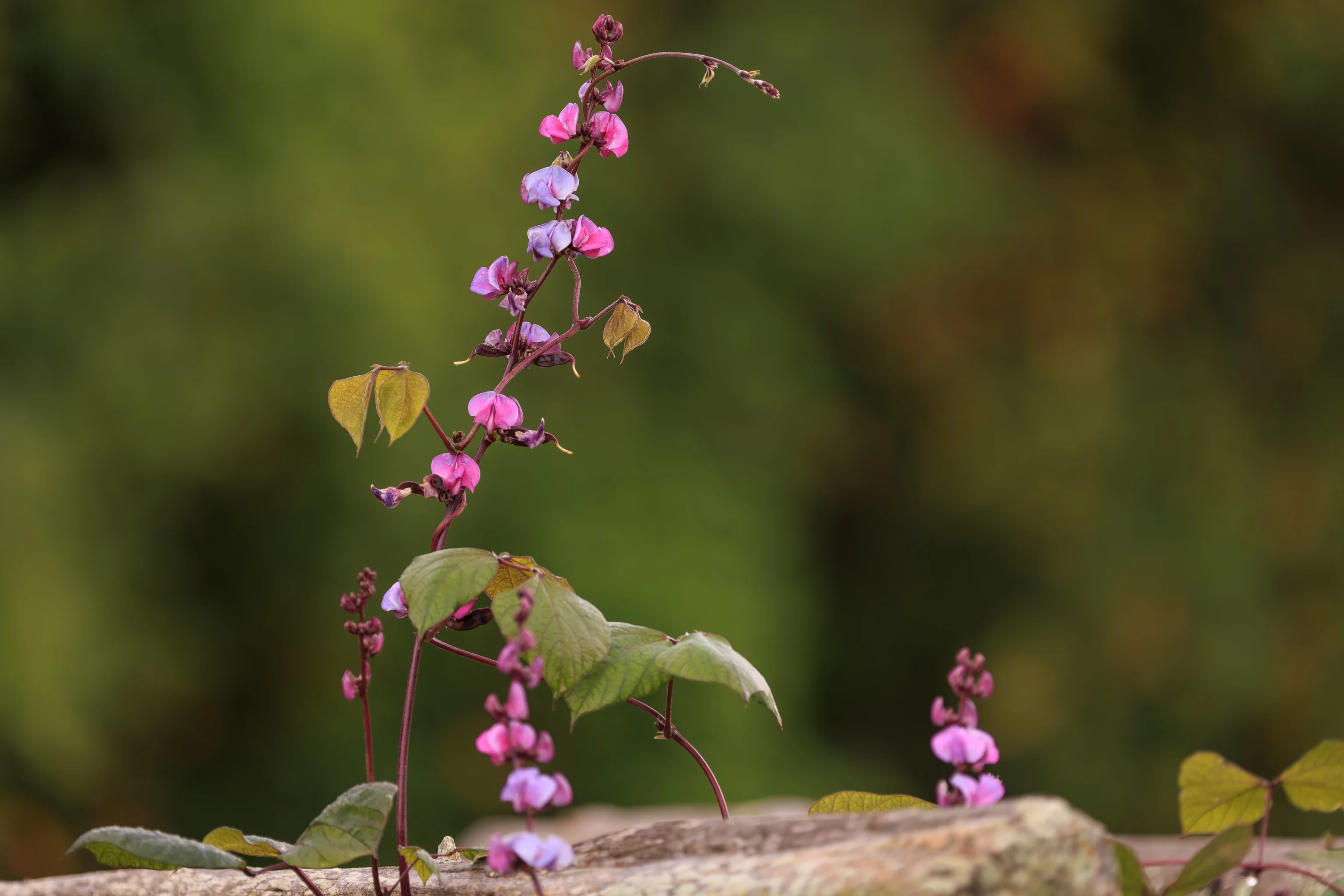
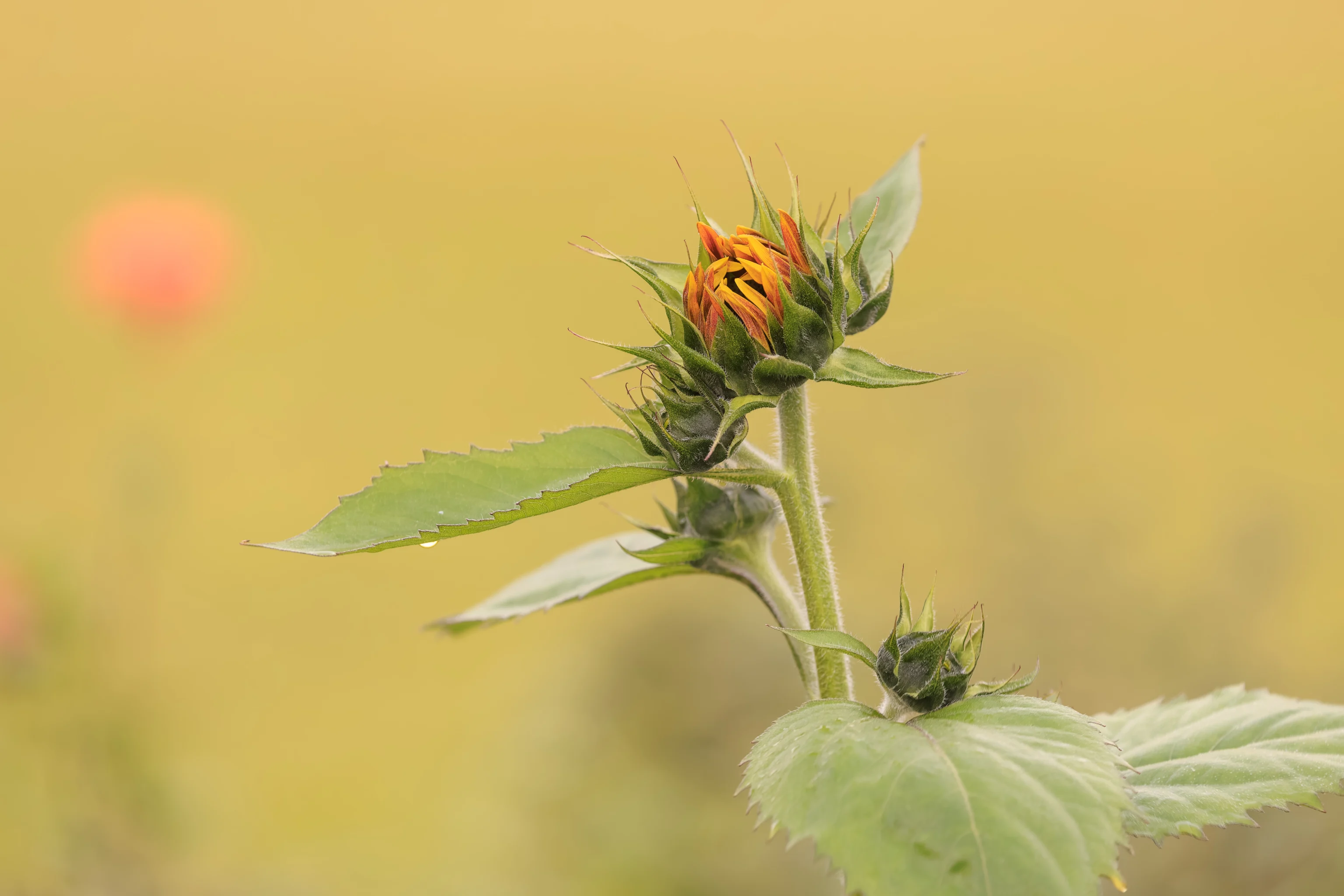
There weren’t as many flowers as there were in spring but we did see a few interesting specimens as we entered.
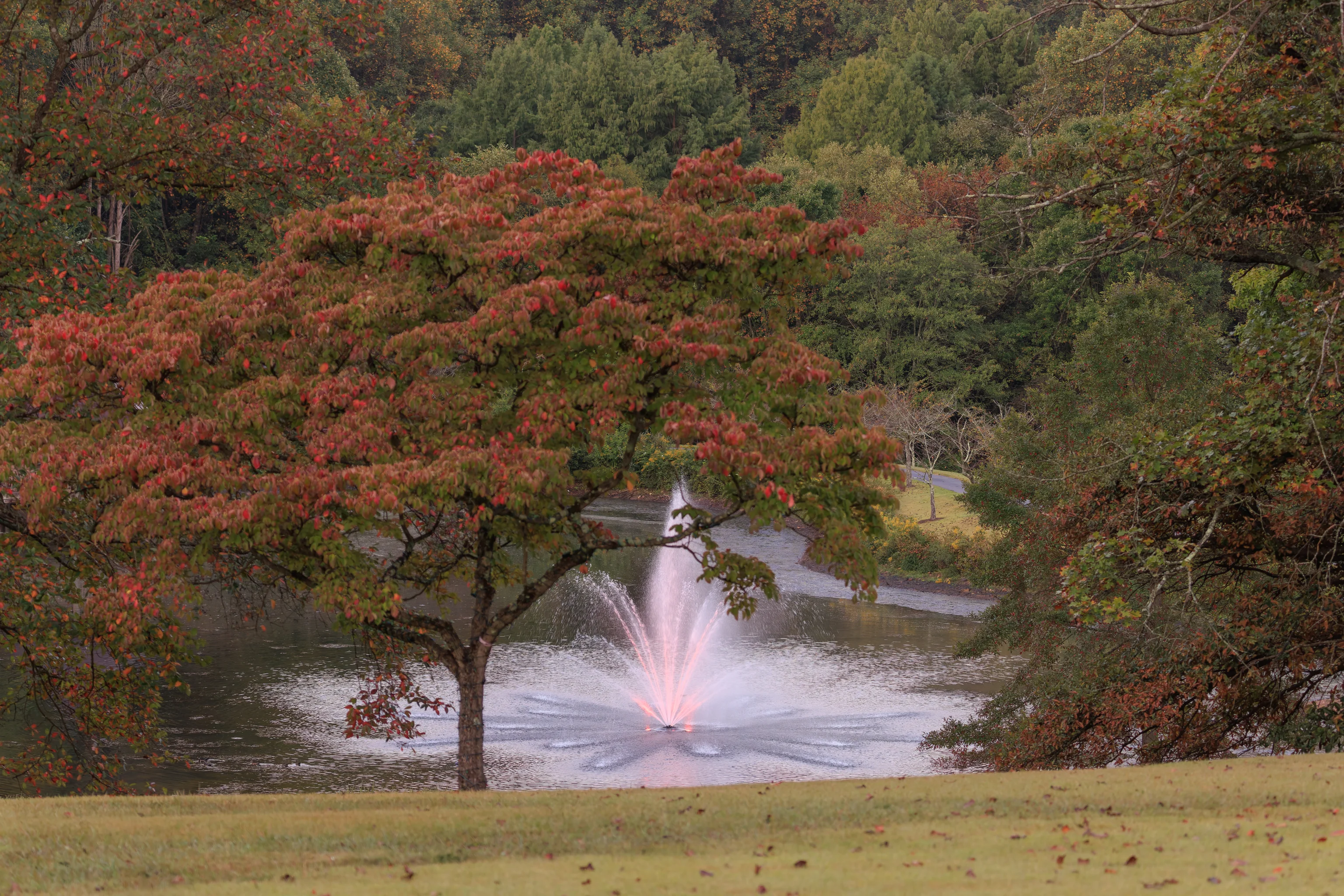
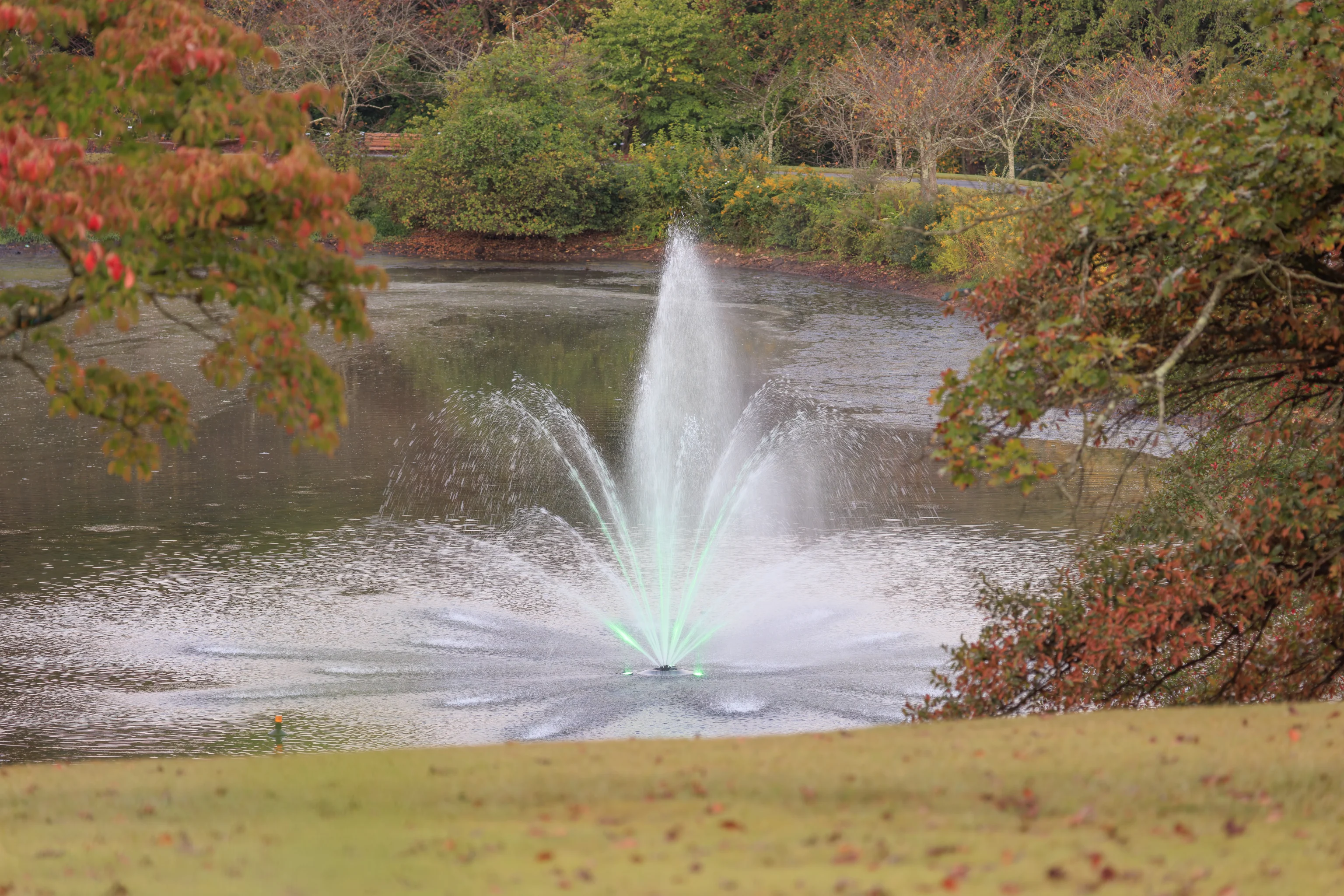
As we walked to the slope that leads down to the park’s ponds, we saw the new fountain that was just installed!
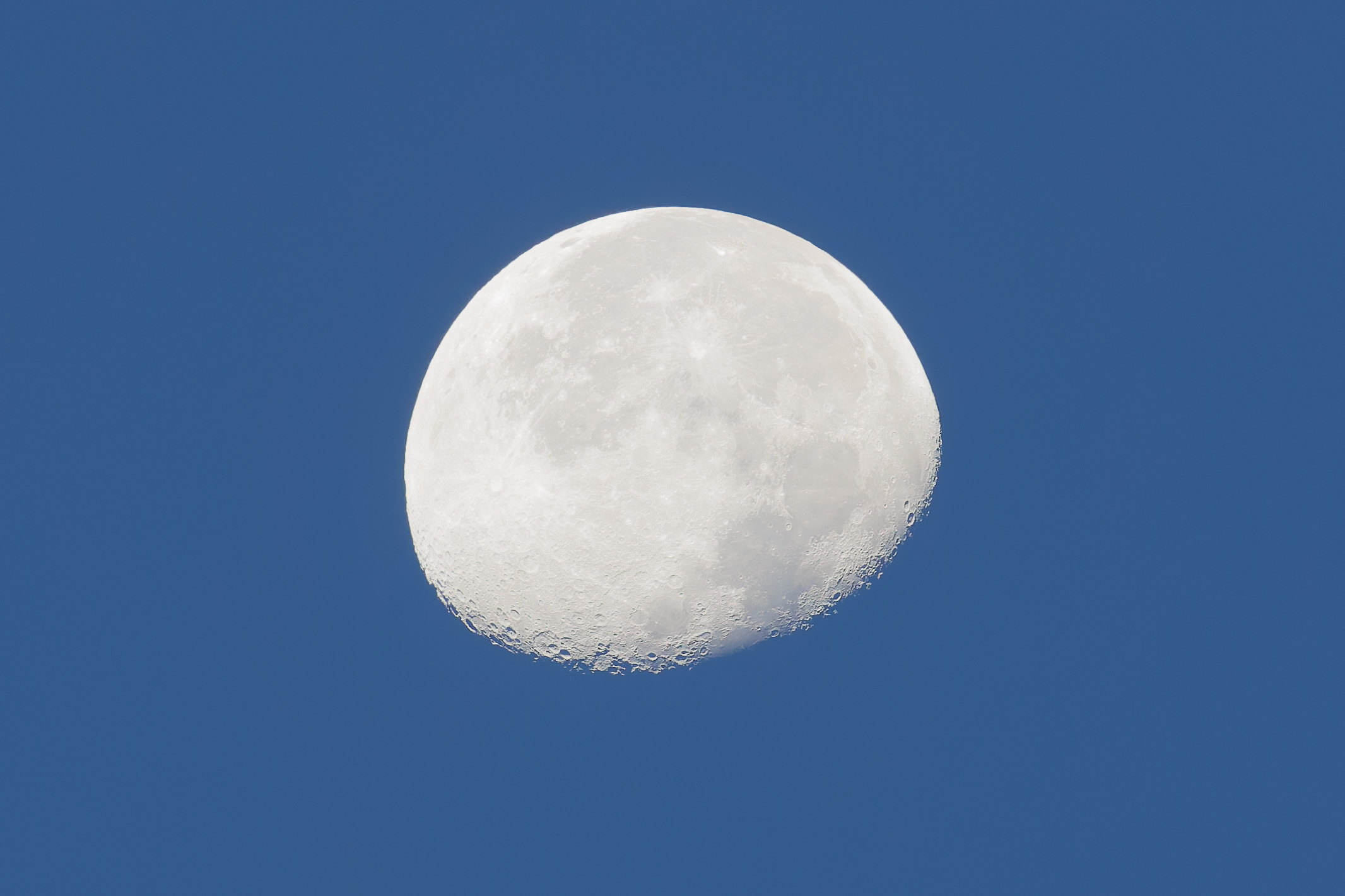
Looking up, we could see the moon. The full moon and the Chinese Mid-Autumn Festival just happened a few days ago.
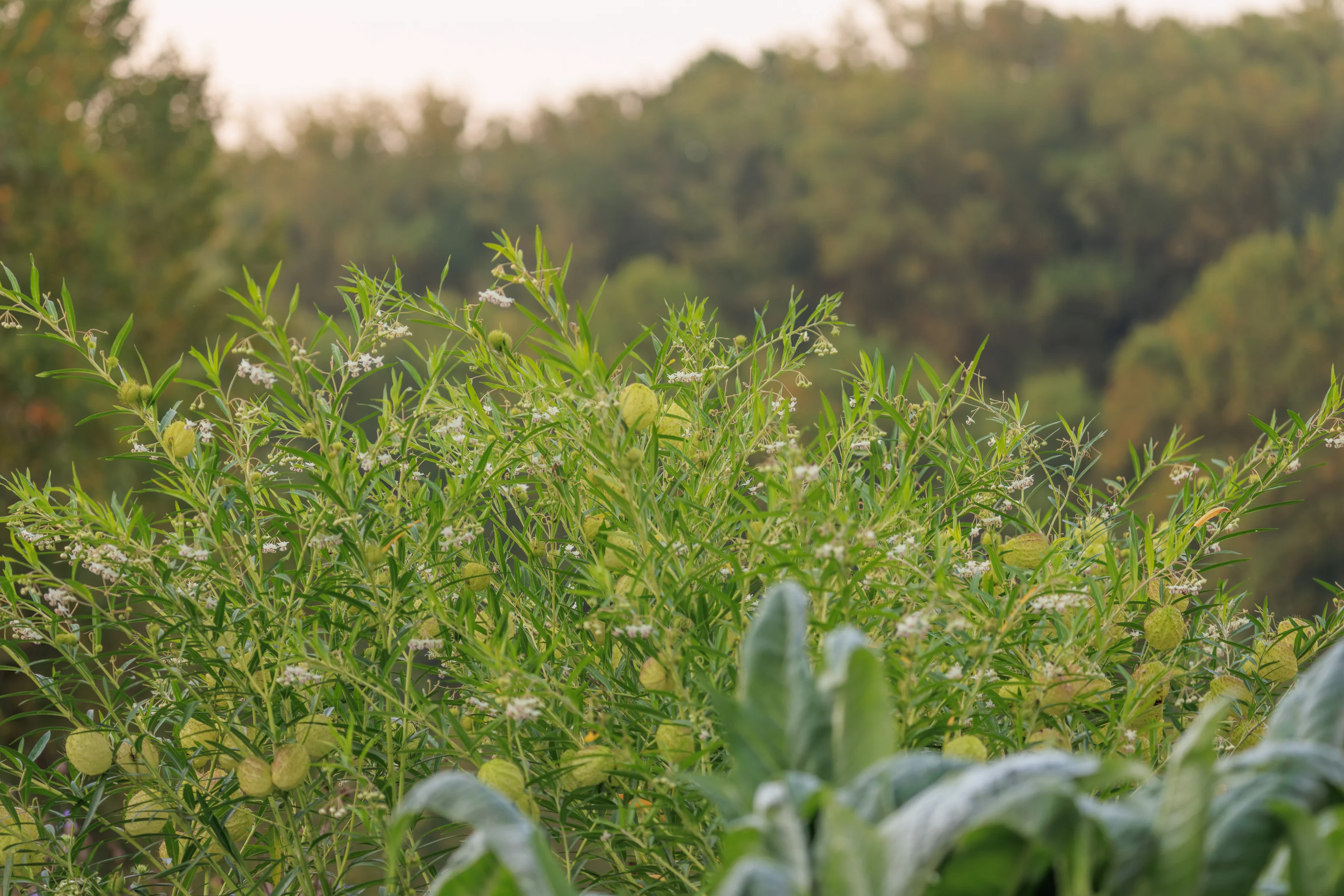
This flowering plant had what seems like relatively large fruit. While we’re generally pretty good at identifying things like birds, our knowledge of plants is still extremely limited.
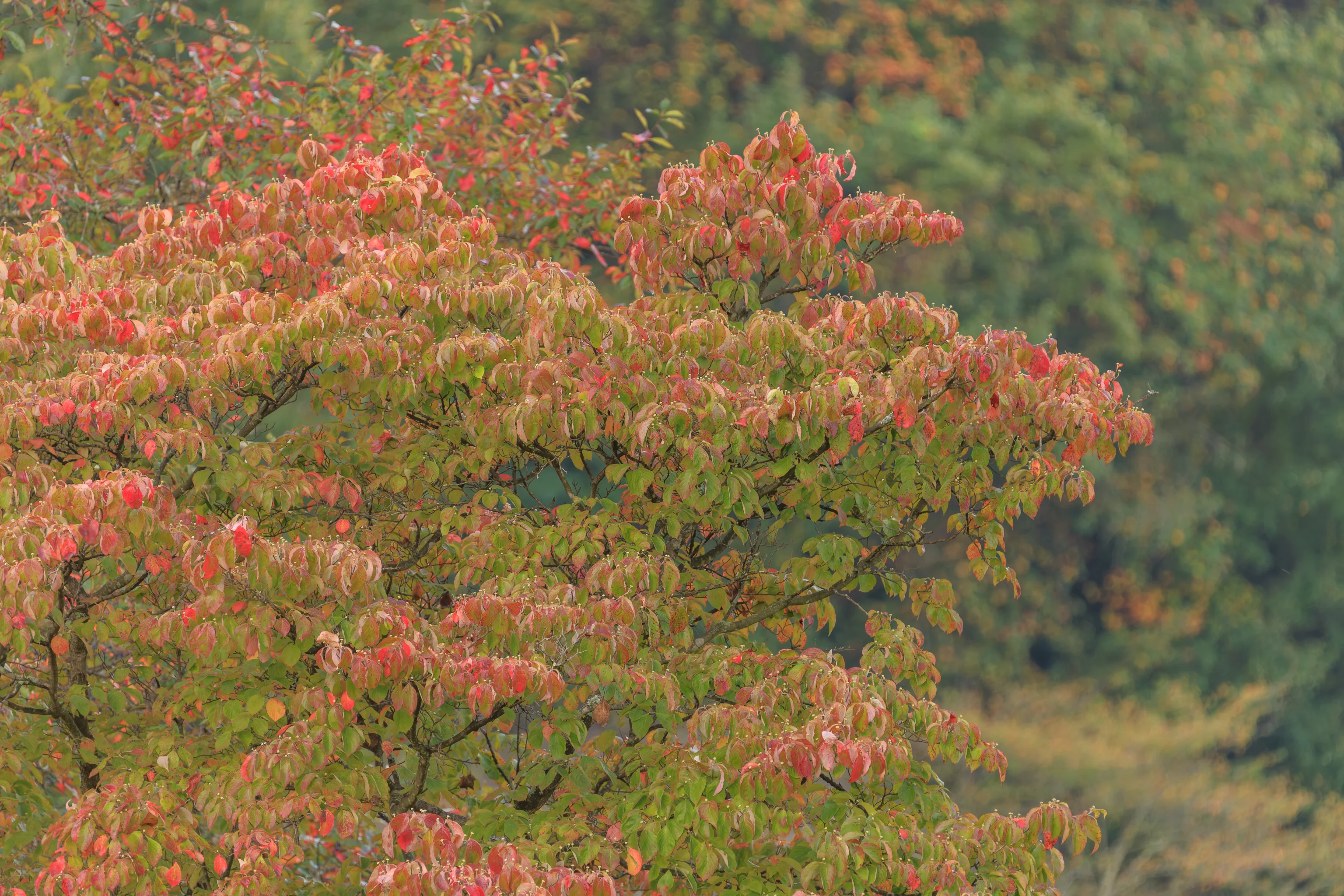
This distant tree seems to have small flower buds, or maybe fruit?
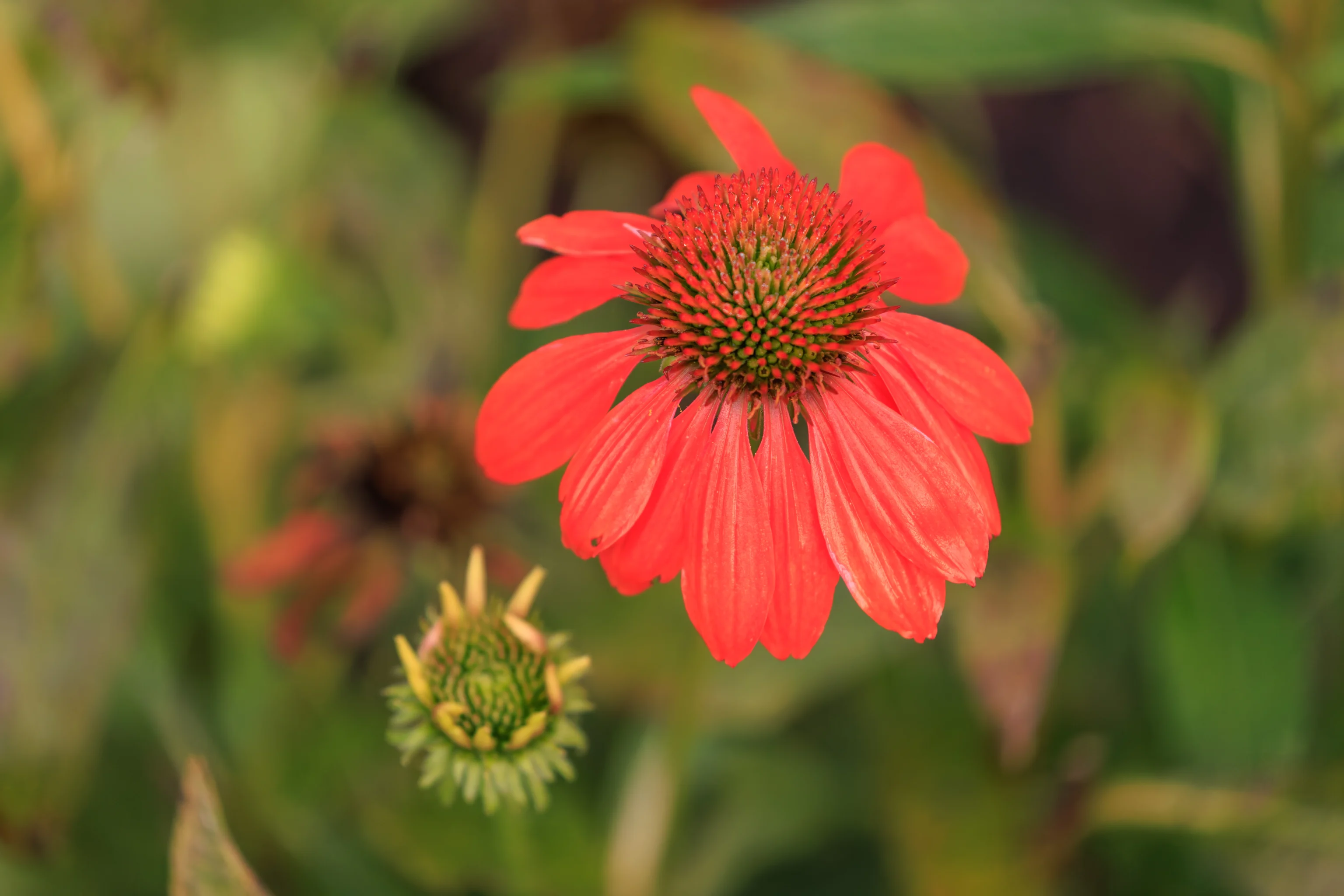
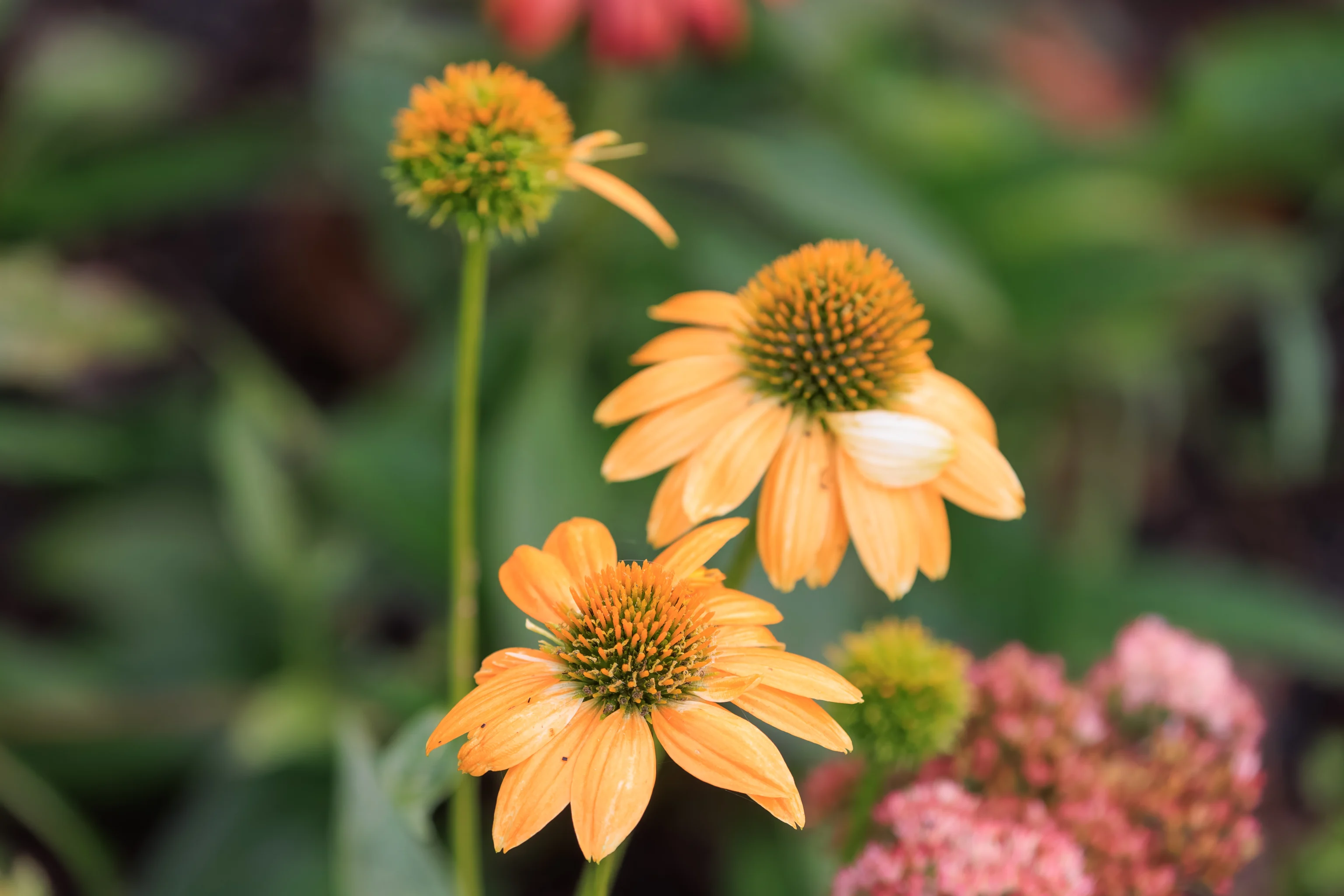
The gardens always seem to have coneflowers. More specifically, they seem to be different color varieties of Echinacea.
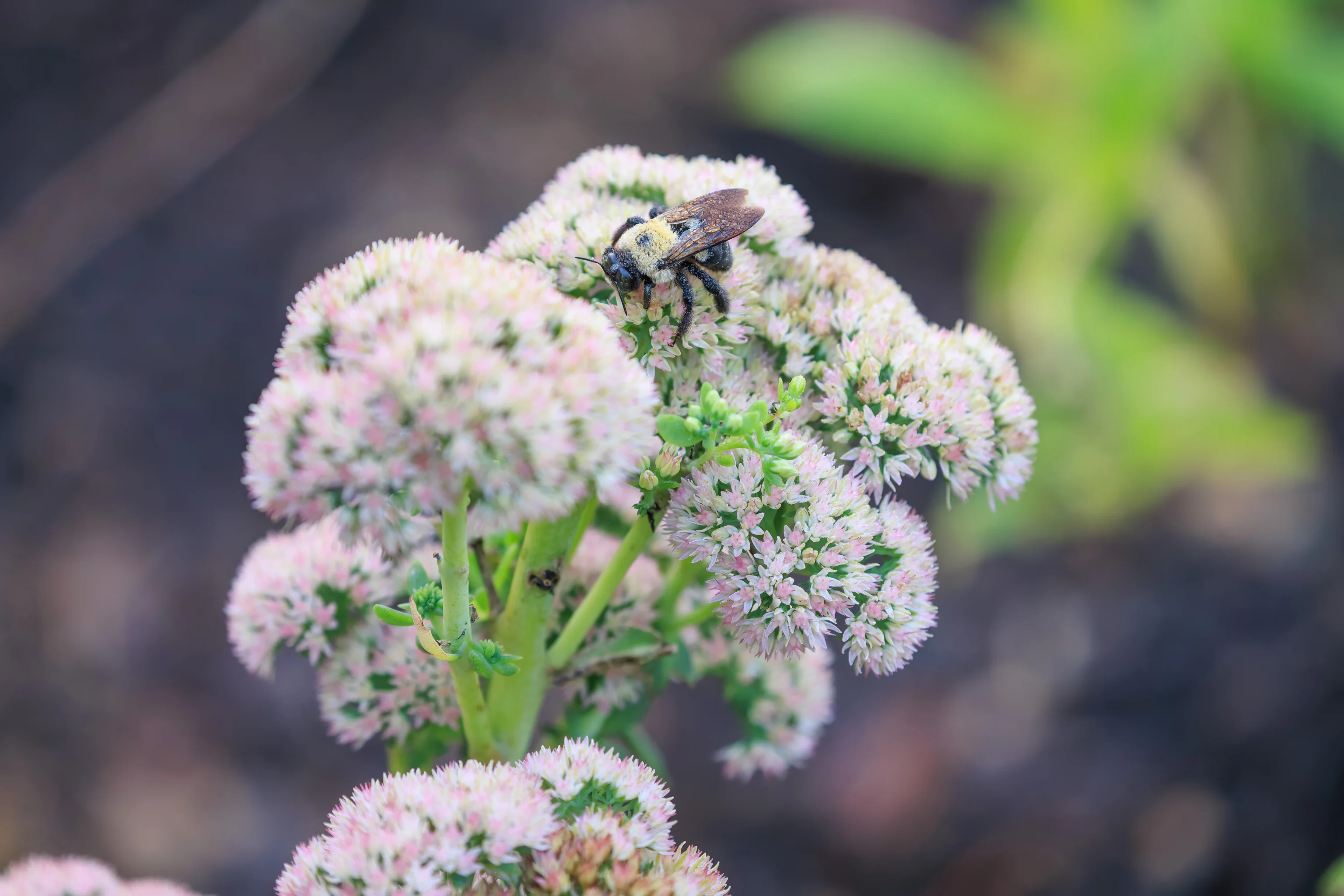
This bee seemed to be idle. Do bees sleep outside on flowers? The bee was covered with tiny water droplets from either condensation or overnight rains.
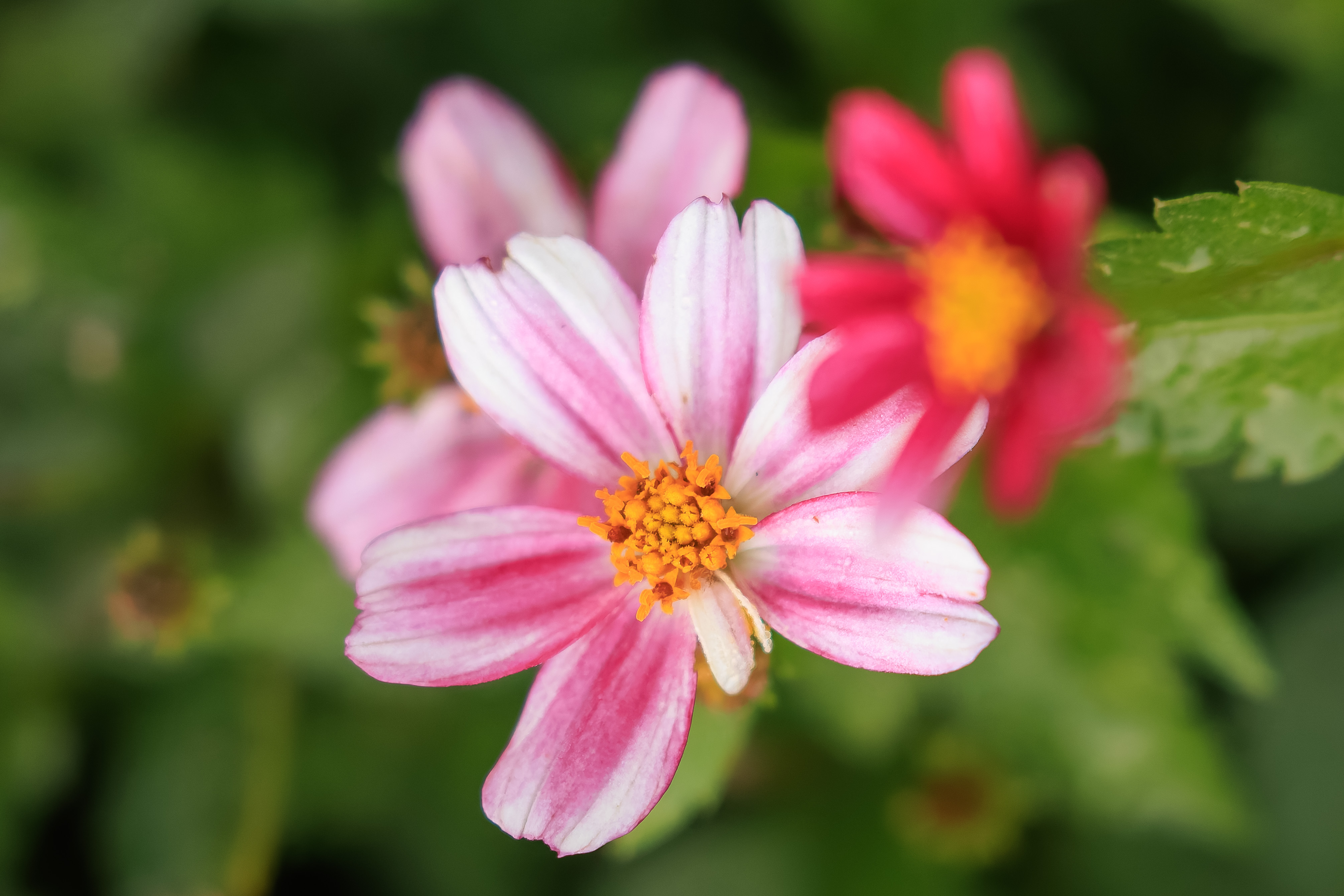
Just some pretty flowers…
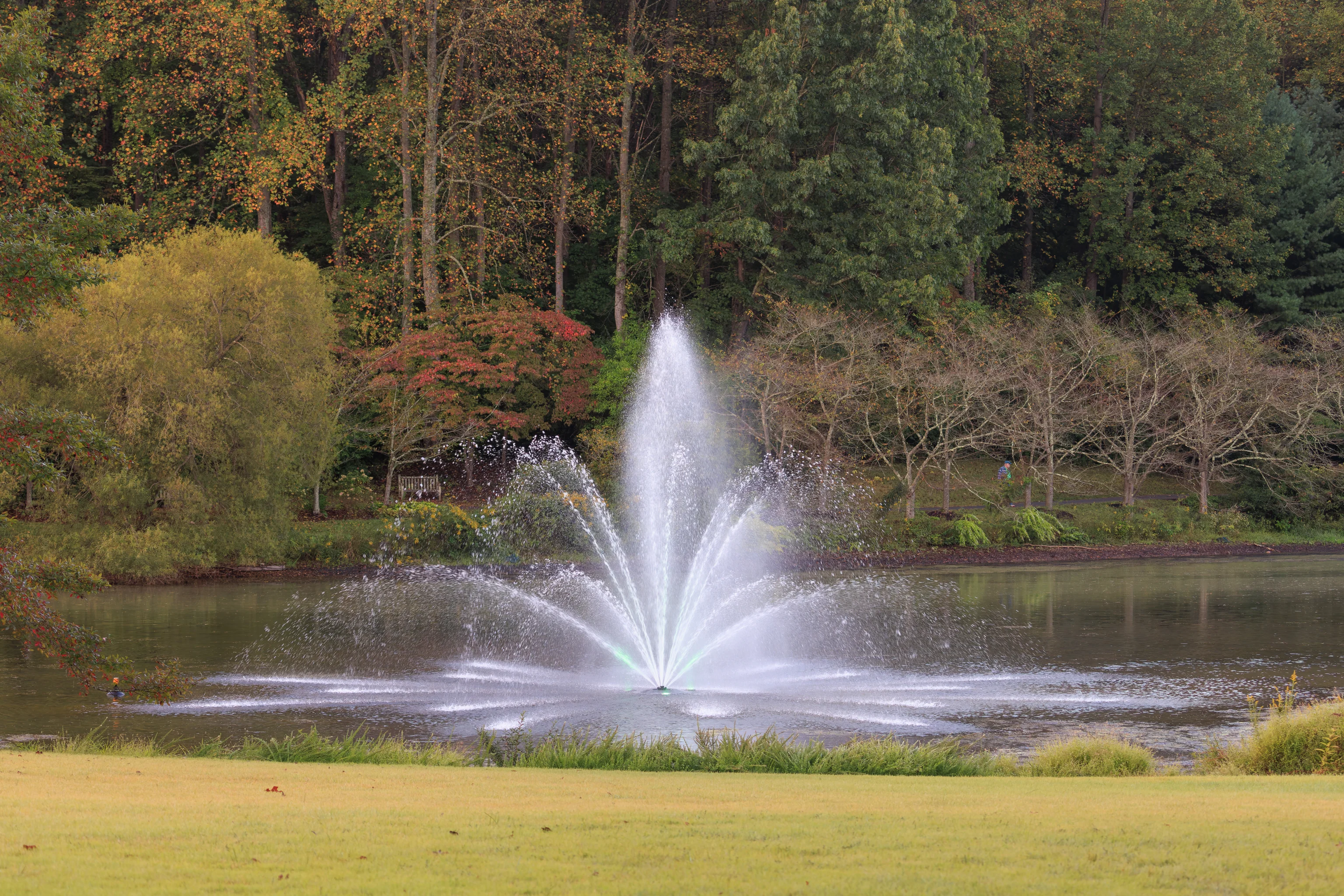
We got a closer look at the fountain when we reached the bottom of the hill.
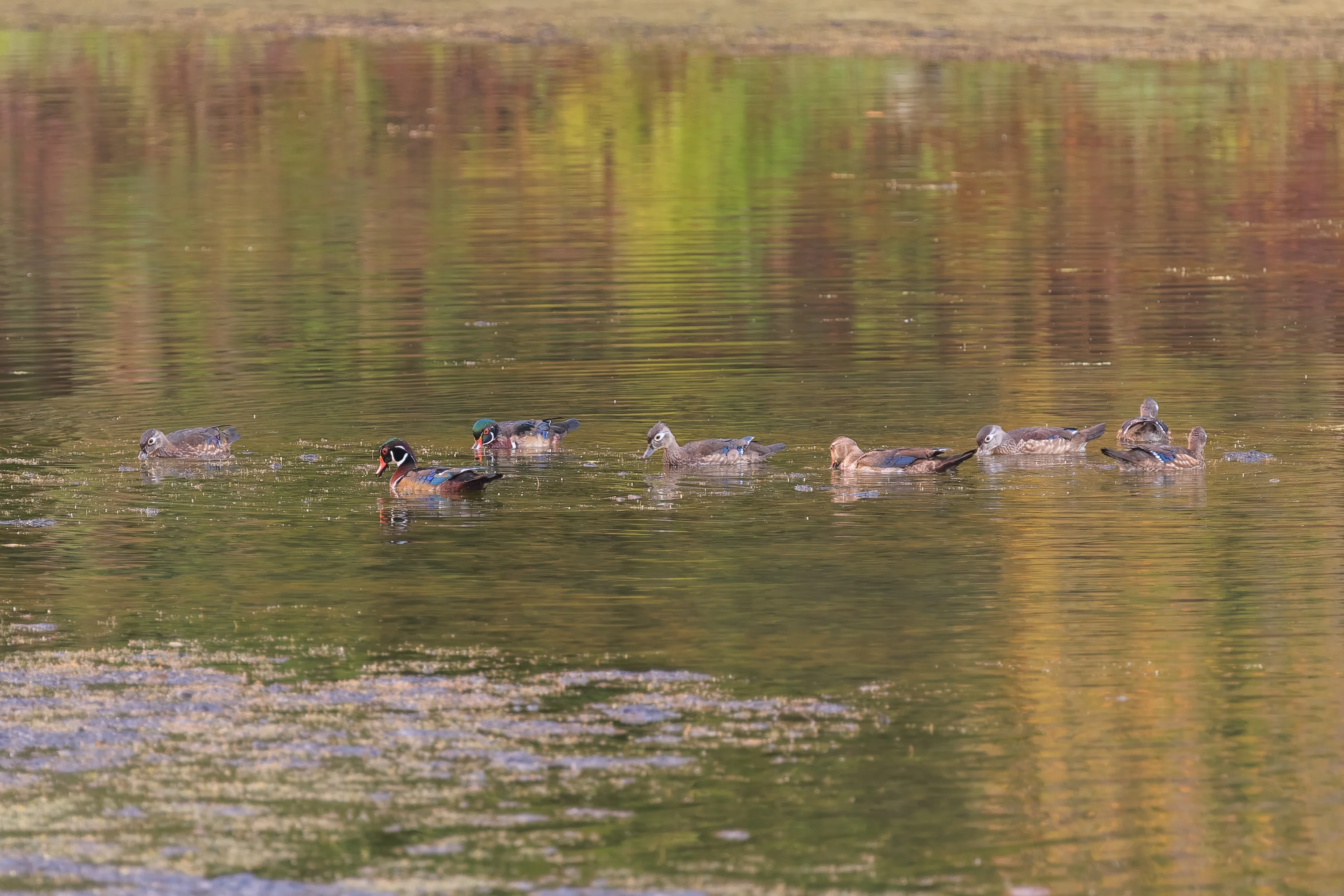
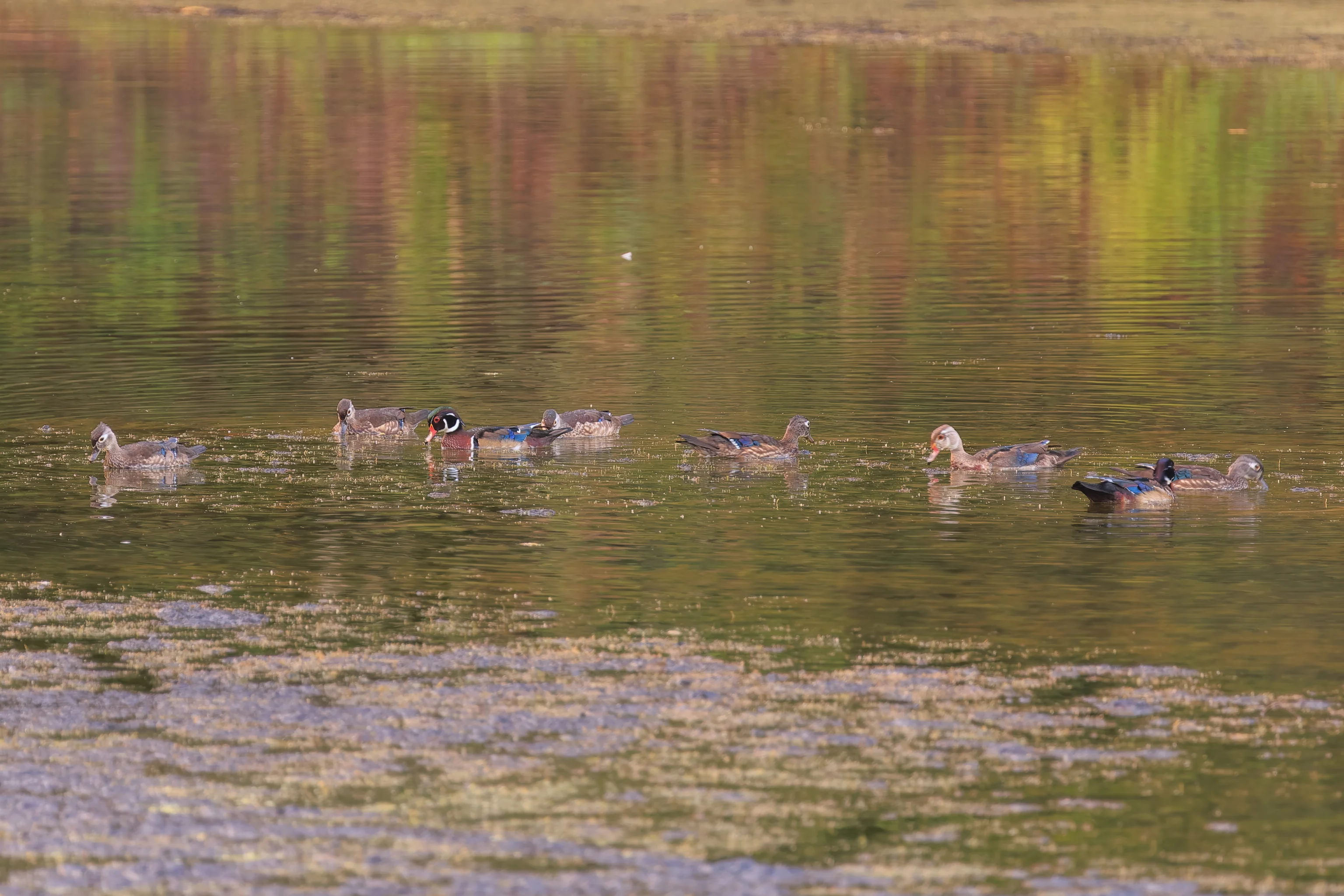
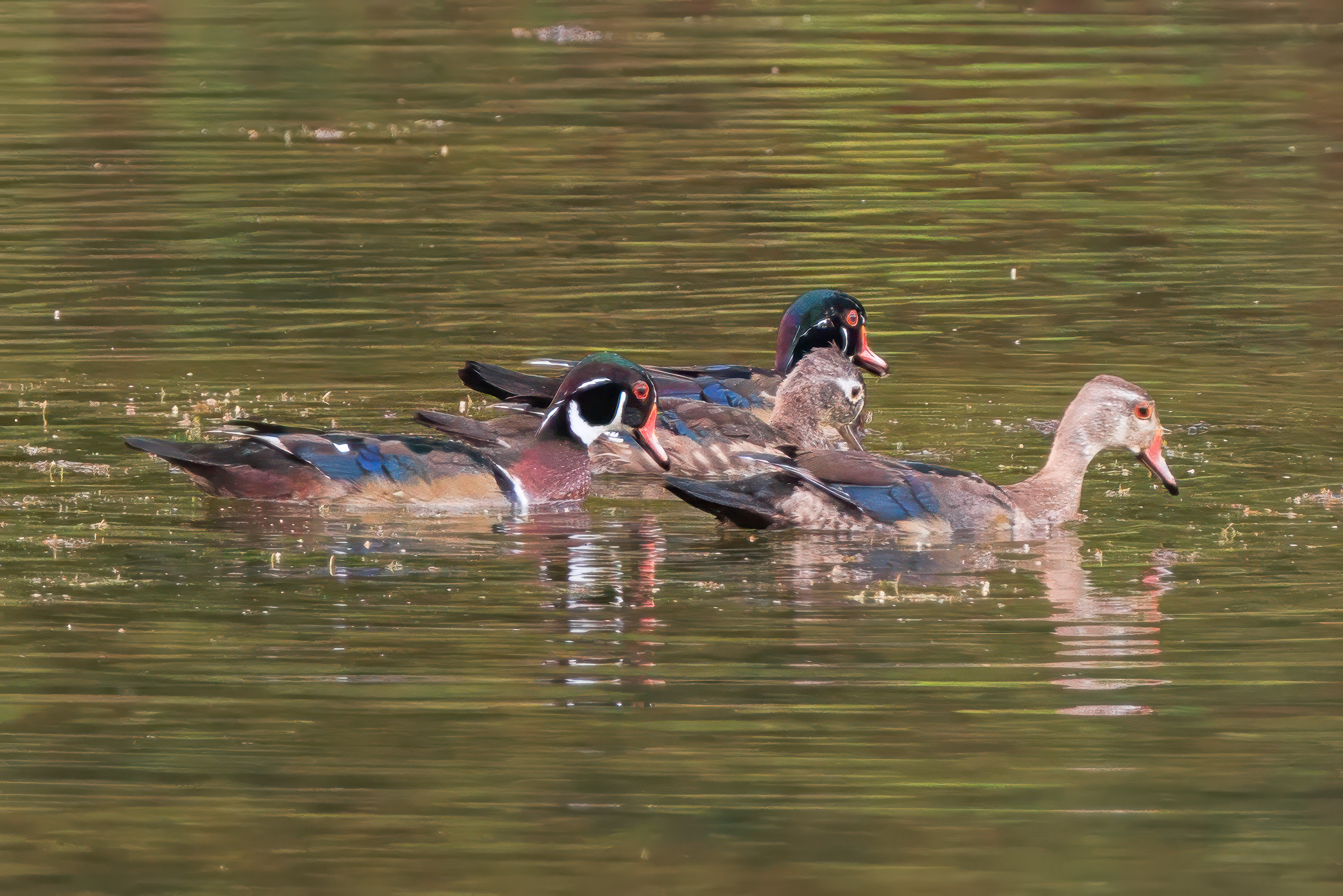
We were talking about how we didn’t see any Canada Geese here today and how we don’t see too many ducks here compared to the geese. Then, we saw eight ducks! But not just any ducks, they were Wood Ducks! The males of this species are particularly colorful!
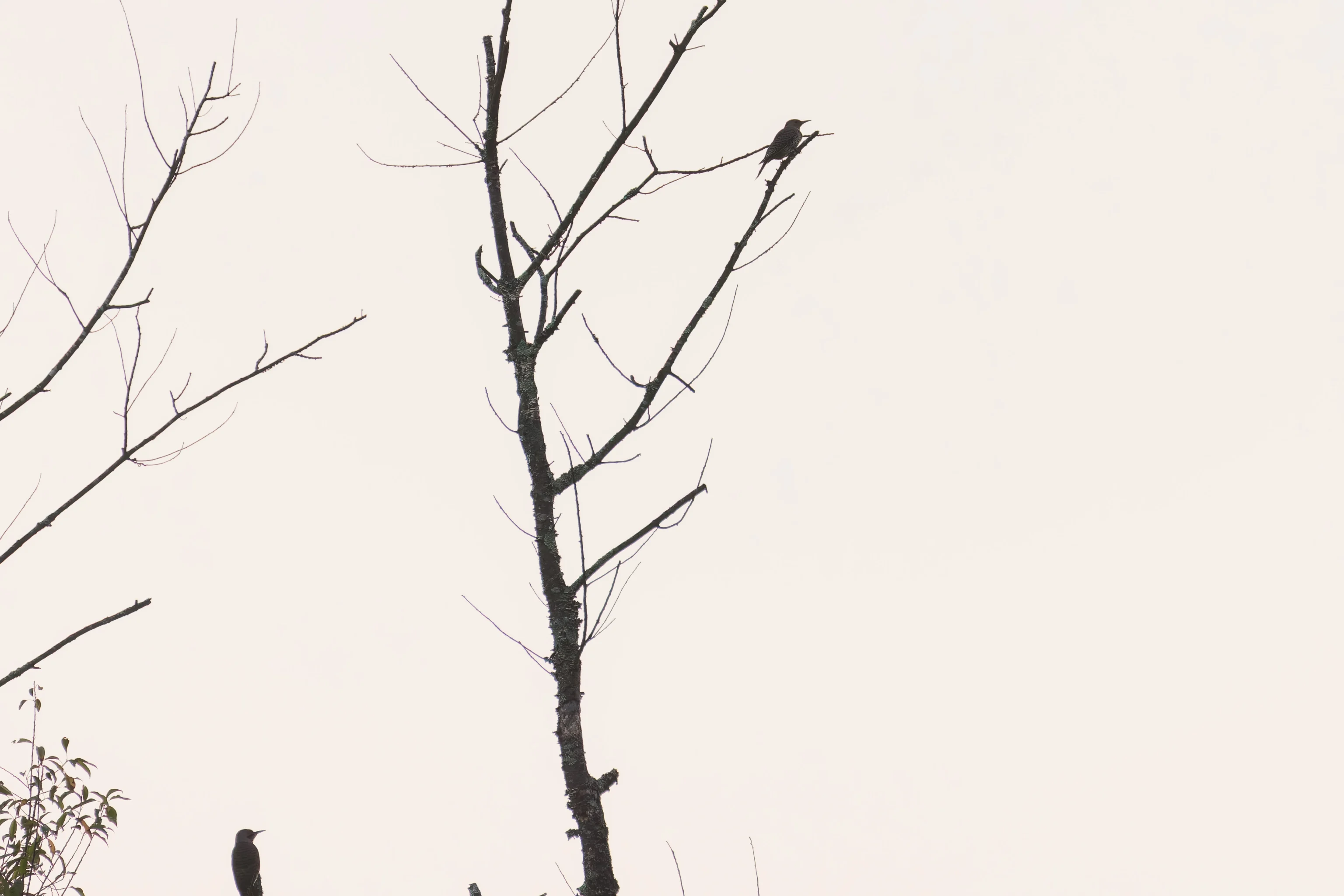
Looking up at a distant leafless tree, we saw a Northern Flicker at the top. Unfortunately, it was extremely backlit. We didn’t realize at the time that we photographed a second one at the bottom left corner of the frame!
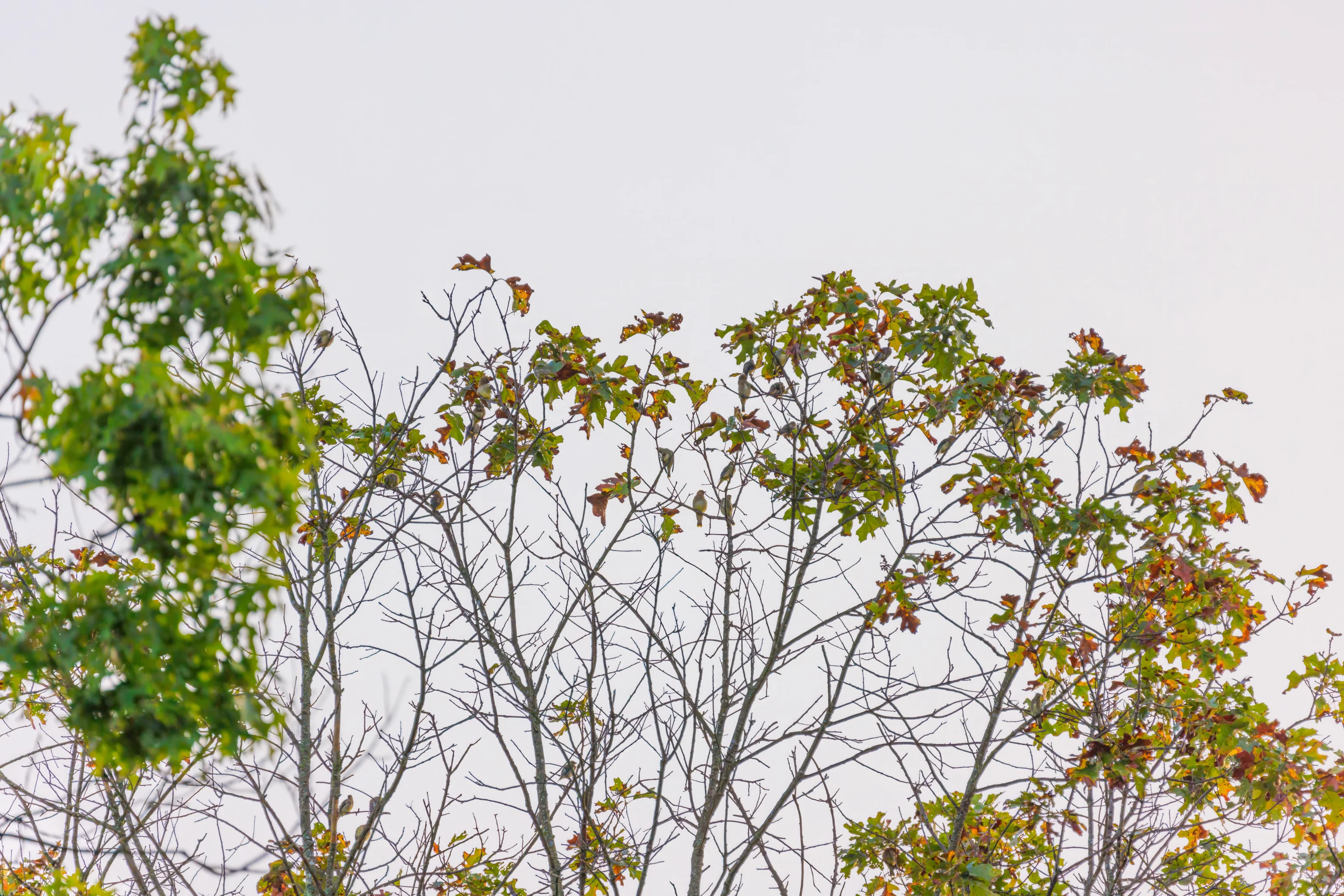
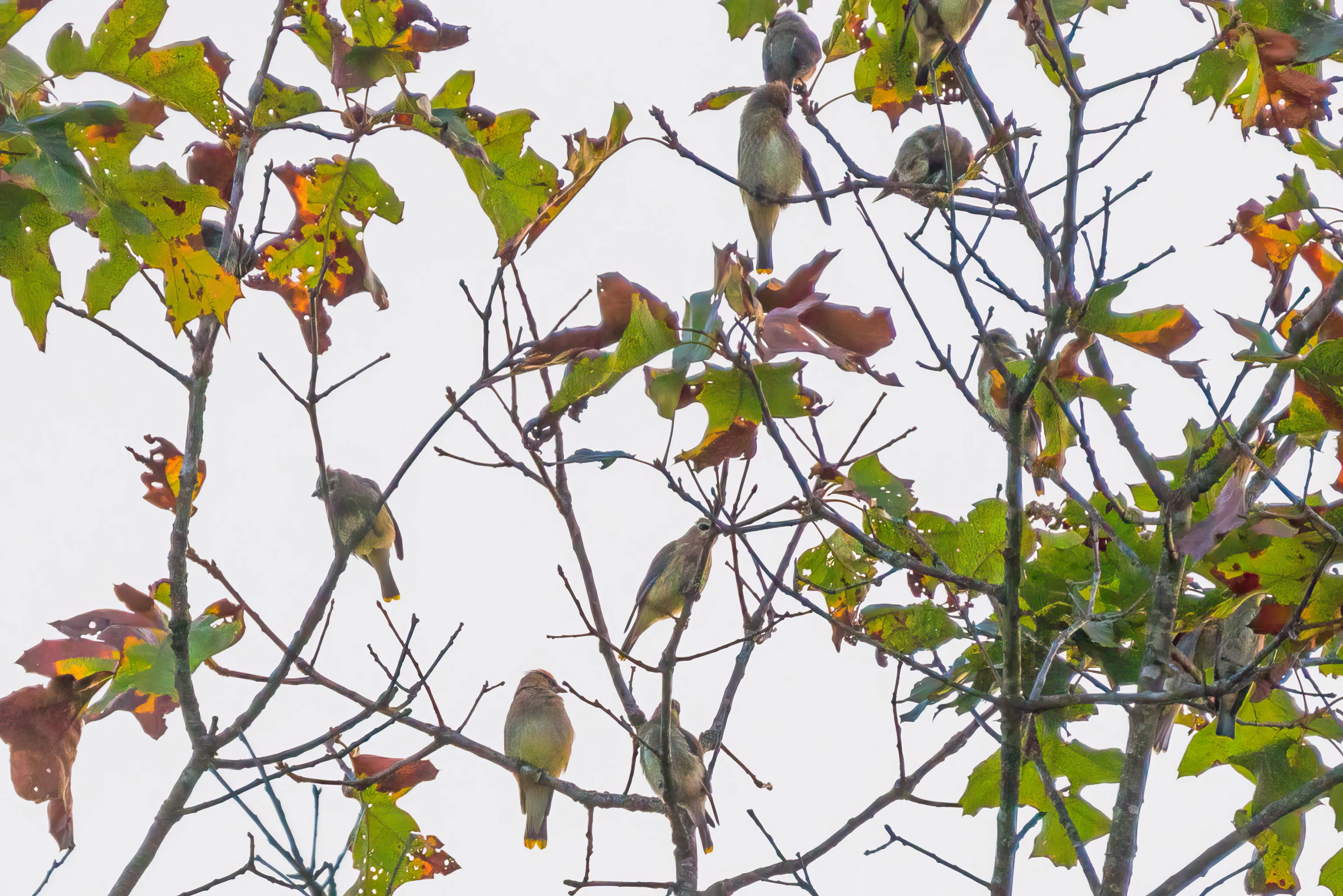
We noticed another distant tree that had many birds in it. Looking closer, we saw they were Cedar Waxwings! These pretty and unique looking birds are often seen in large groups. There are at least 31 of them in the first photo above!
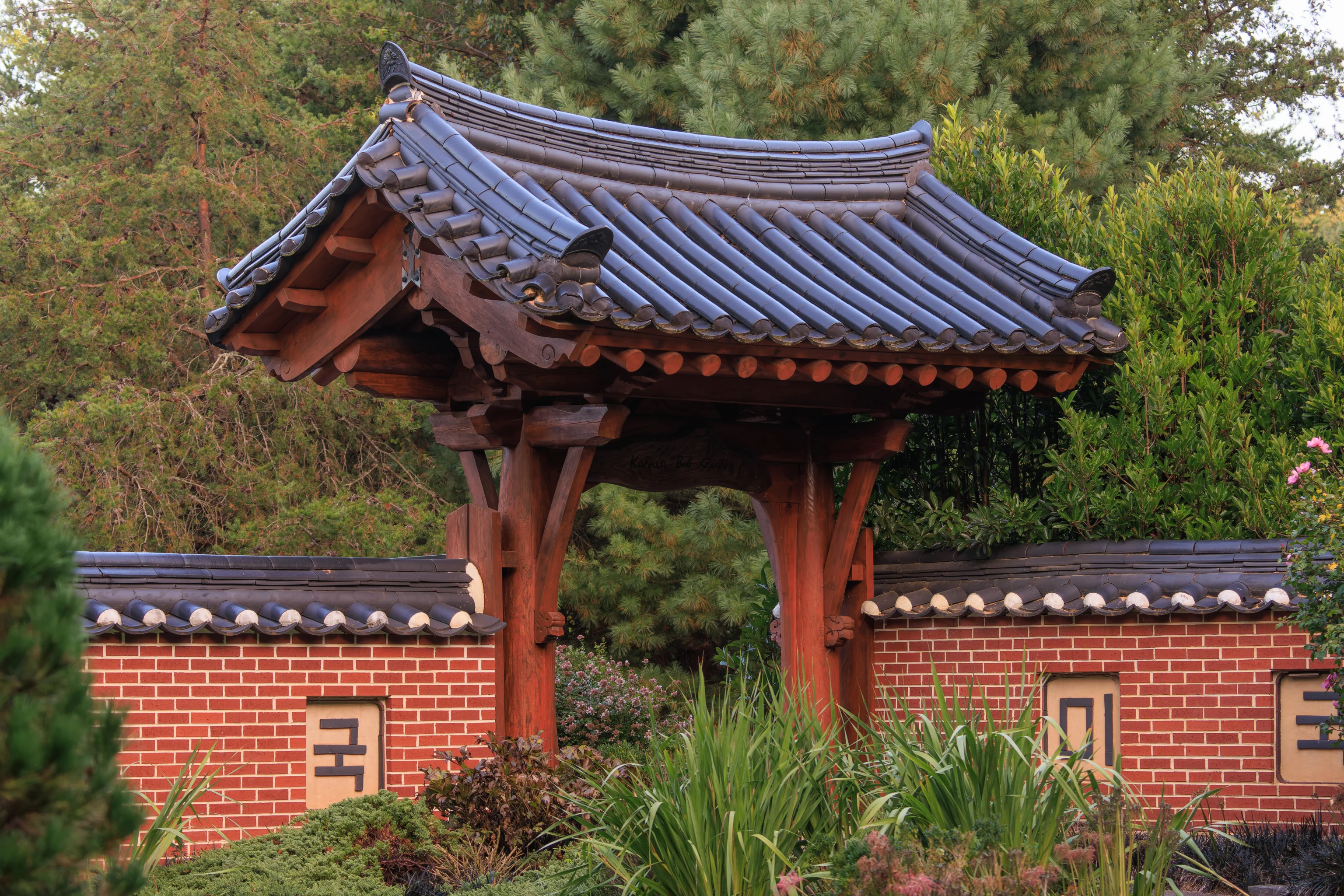
We decided to walk through the Korean Bell Garden. After all, we were in Korea earlier this year!
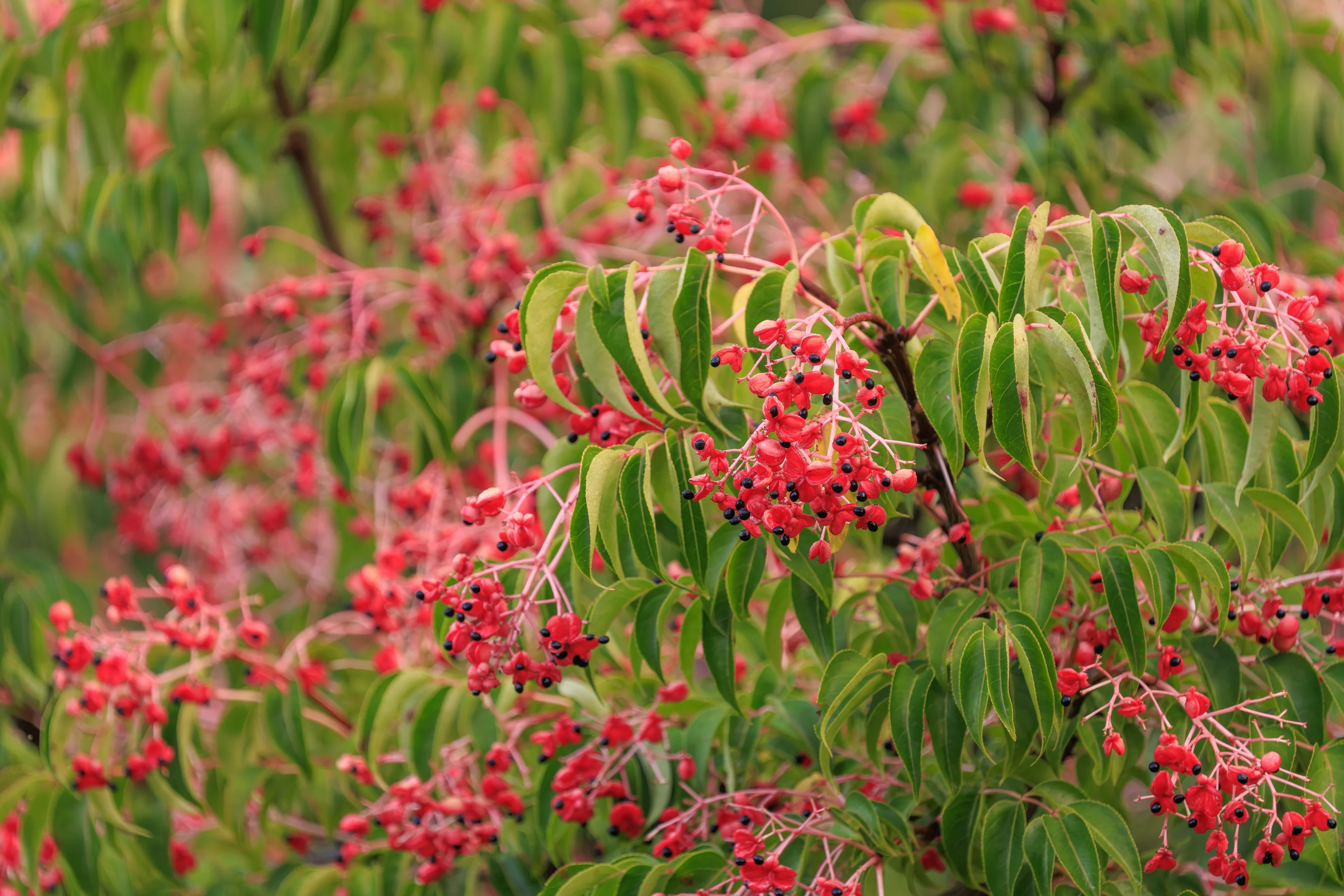
We noticed this interesting plant near the gate. The little black spheres seem to be attached to the red pieces. It seems to be Staphylea Japonica, also known as the Korean Sweetheart Tree. The red pieces are seed capsules which open up to reveal a small black seed.
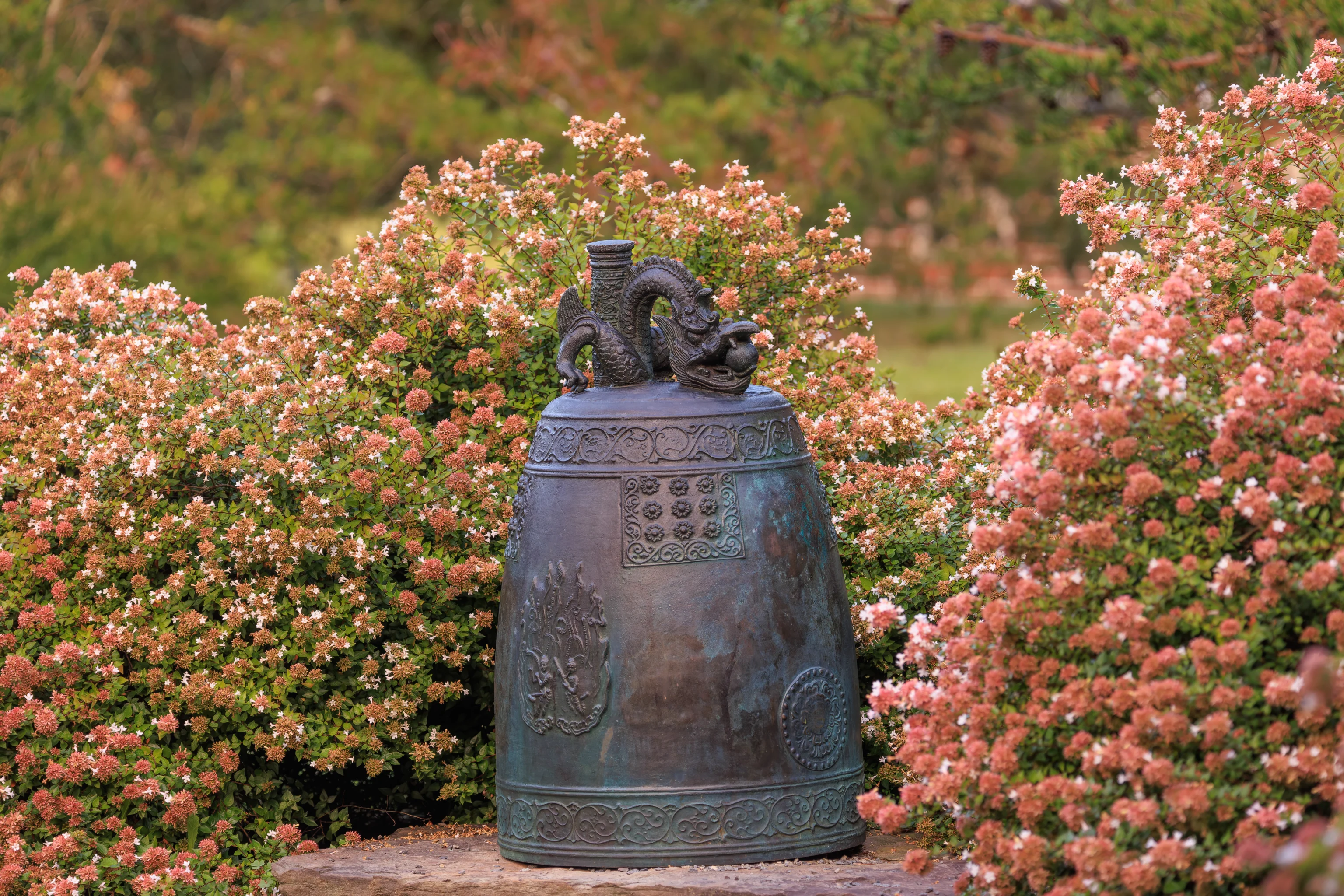
There is a small bell just beyond the gate.
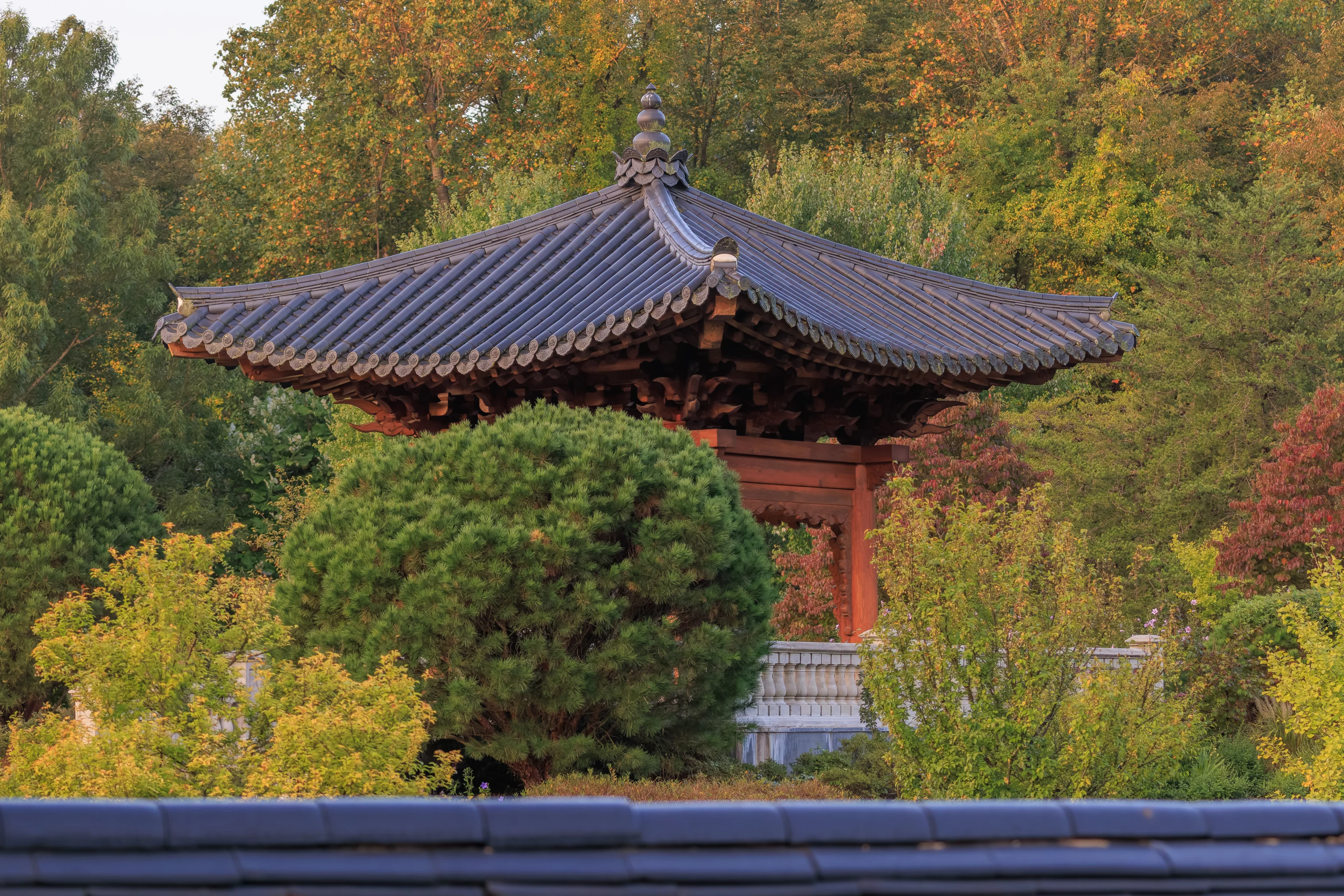
The garden’s much larger bell, inside of a pavilion, isn’t too far away.
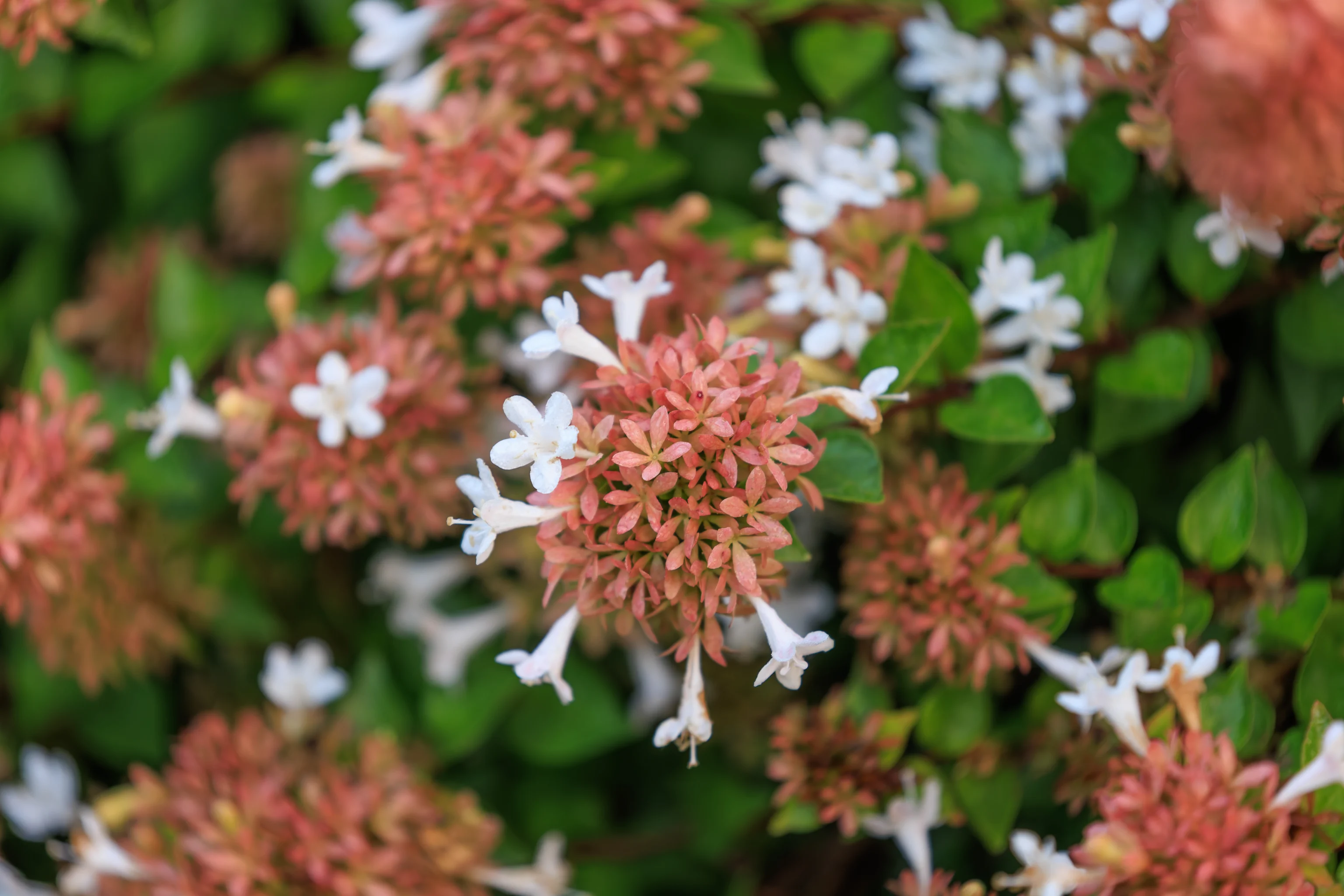
The plants next to the smaller bell were interesting as well.
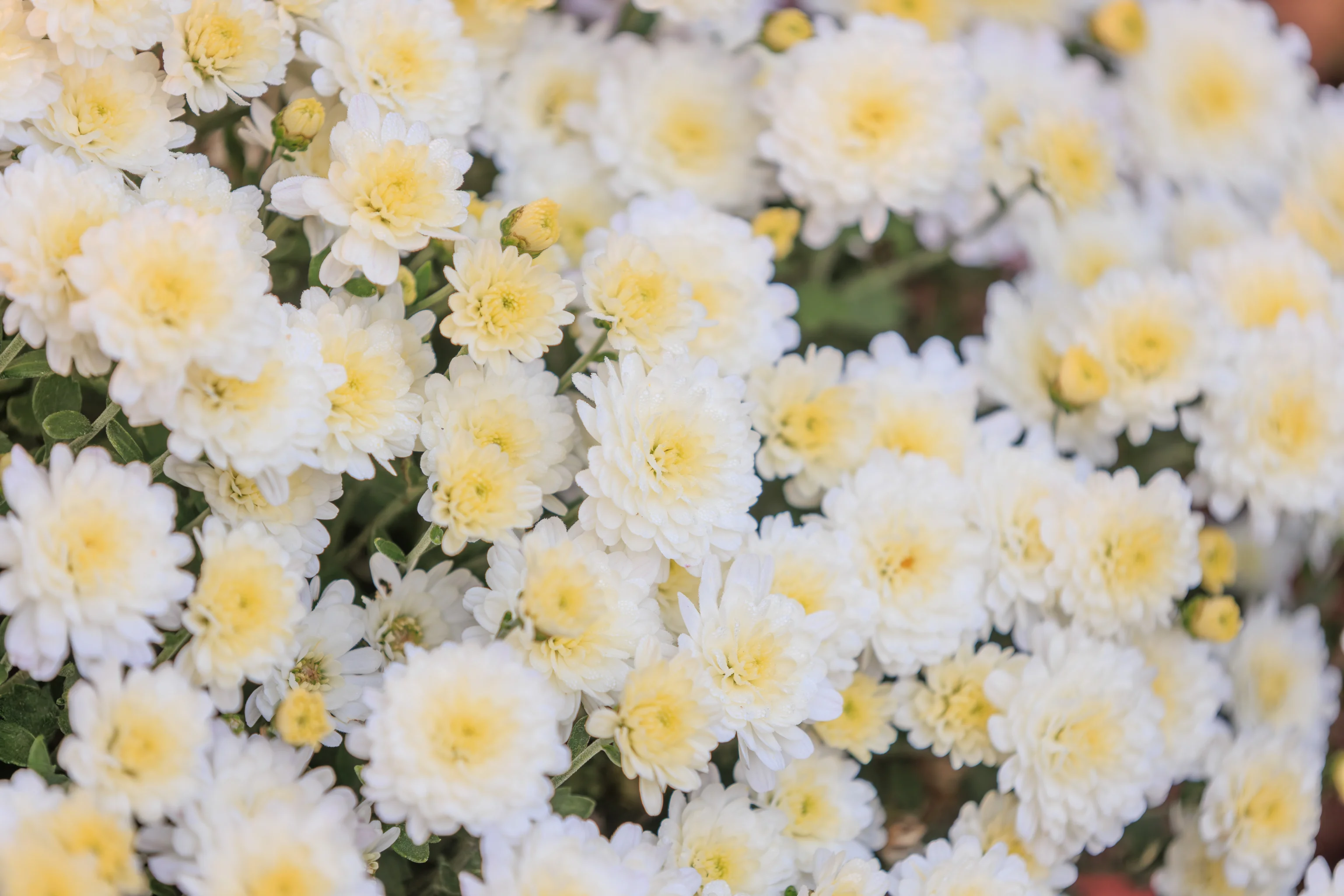
These flowers seem to be a white colored species of chrysanthemum.
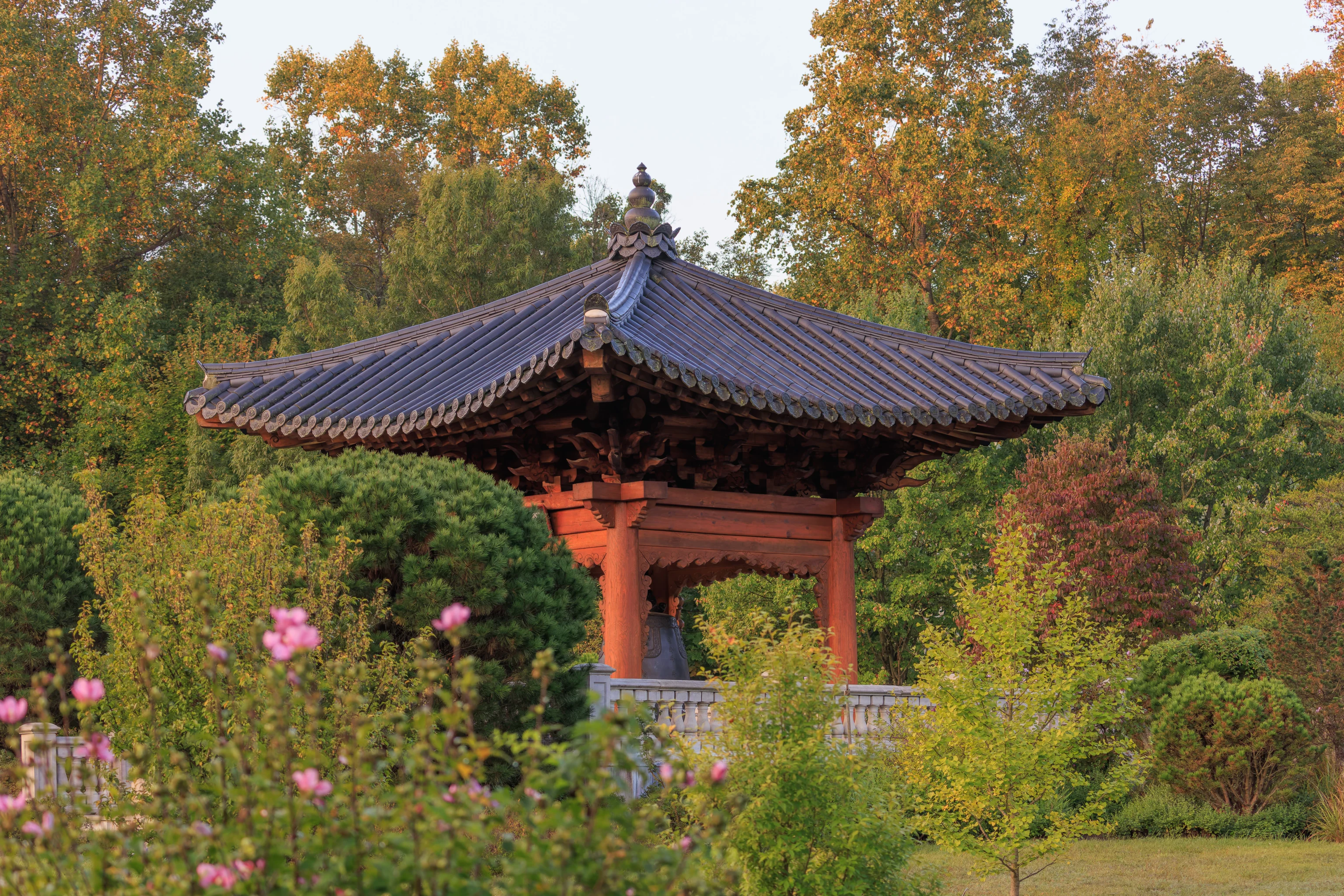
There is a small partially enclosed courtyard not far from the entrance gate. From this courtyard area, we could see part of the bell within the bell pavilion.
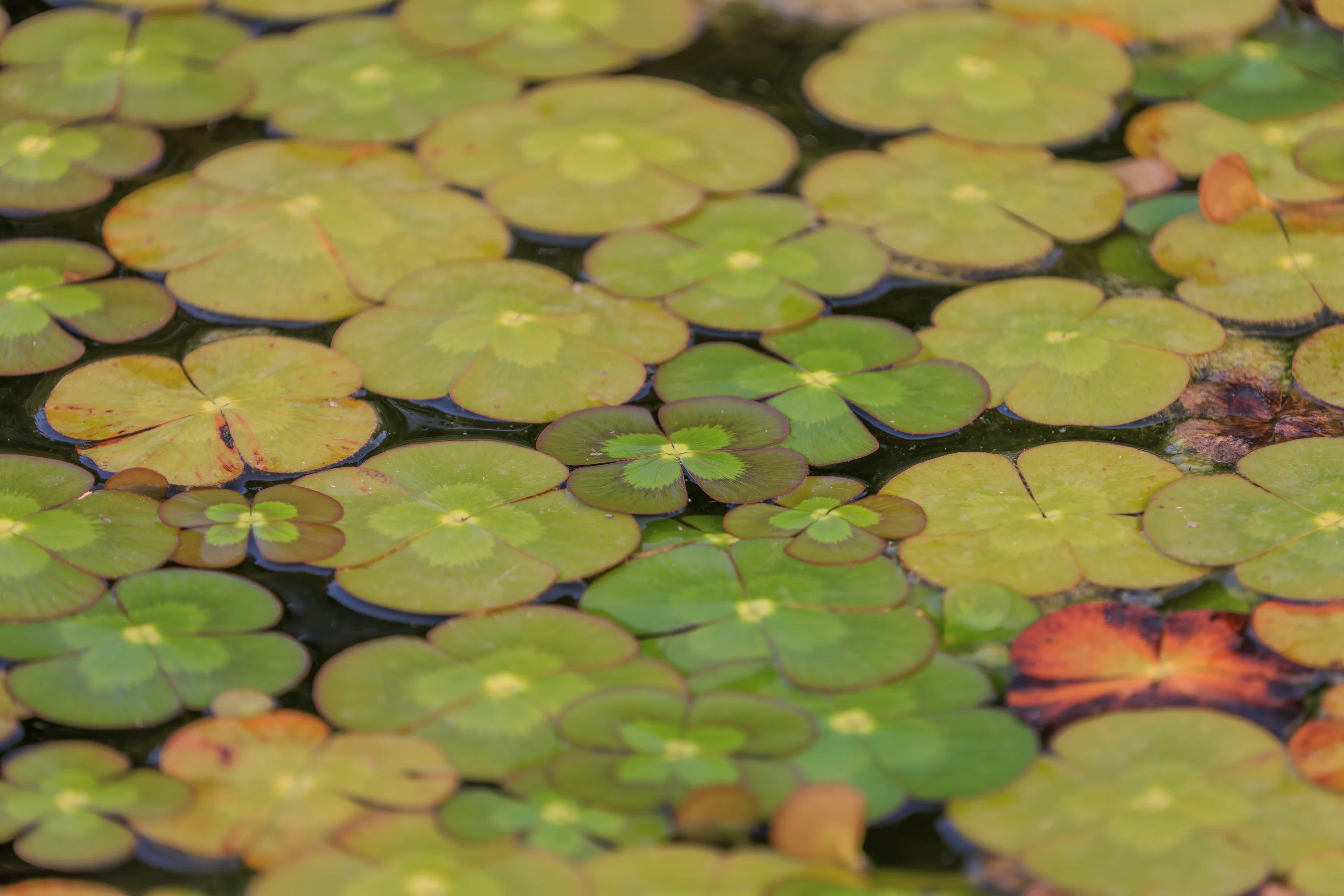
There is a small pool of water on one side of the courtyard. It was covered with these small water lily pads.
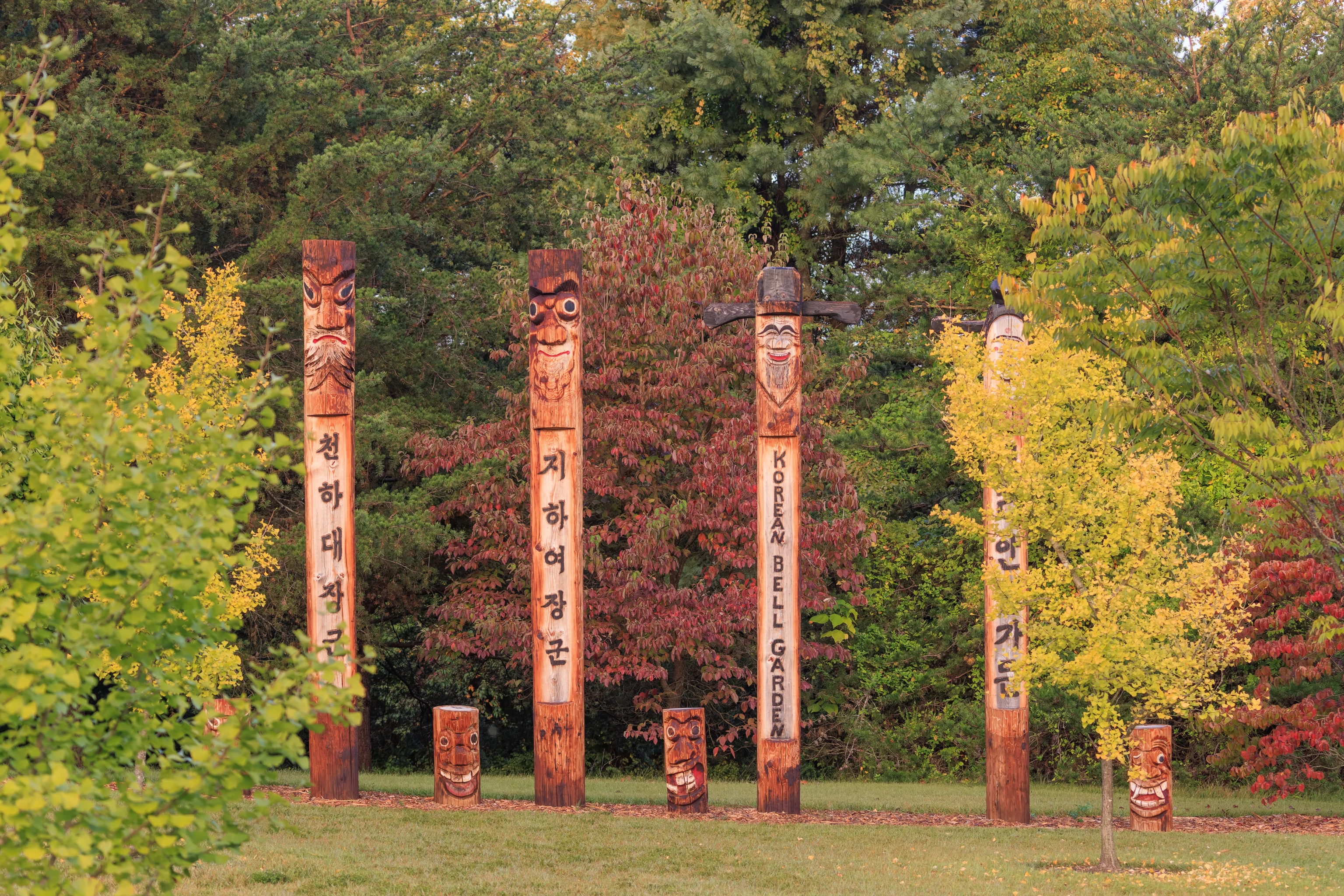
We headed to bell pavilion from the courtyard. To our right, we passed by the garden’s 장승 Jangseung, basically, Korean totem poles.
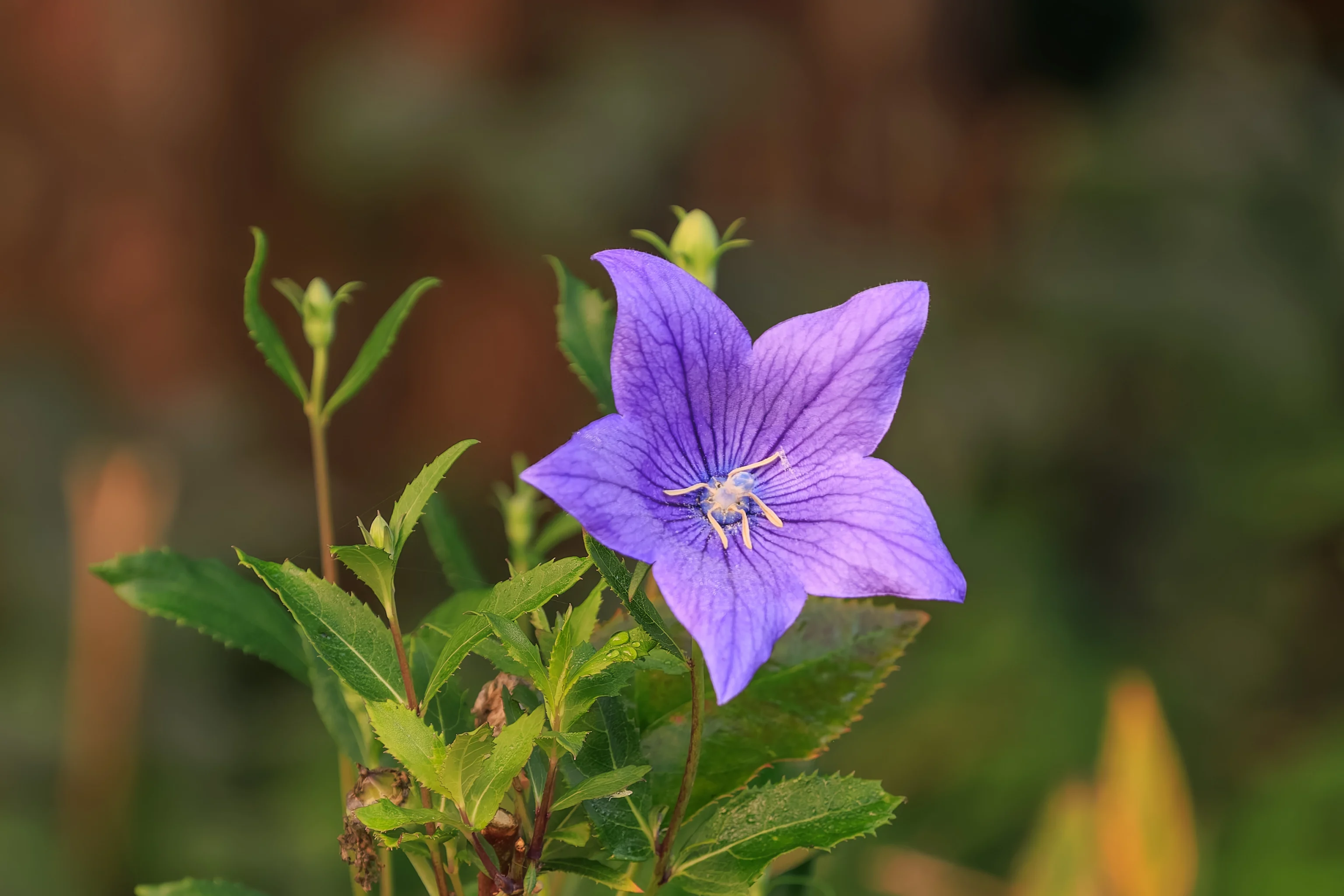
These flowers by the bell pavilion appear to be Platycodon Grandiflorus, also referred to as a balloon or bell flower. According to Wikipedia, the buds expand like a balloon before they open. And, once the flower comes out, the petals are fused together at the base and look like a bell. This is, apparently, not the right angle for for the bell-like appearance.
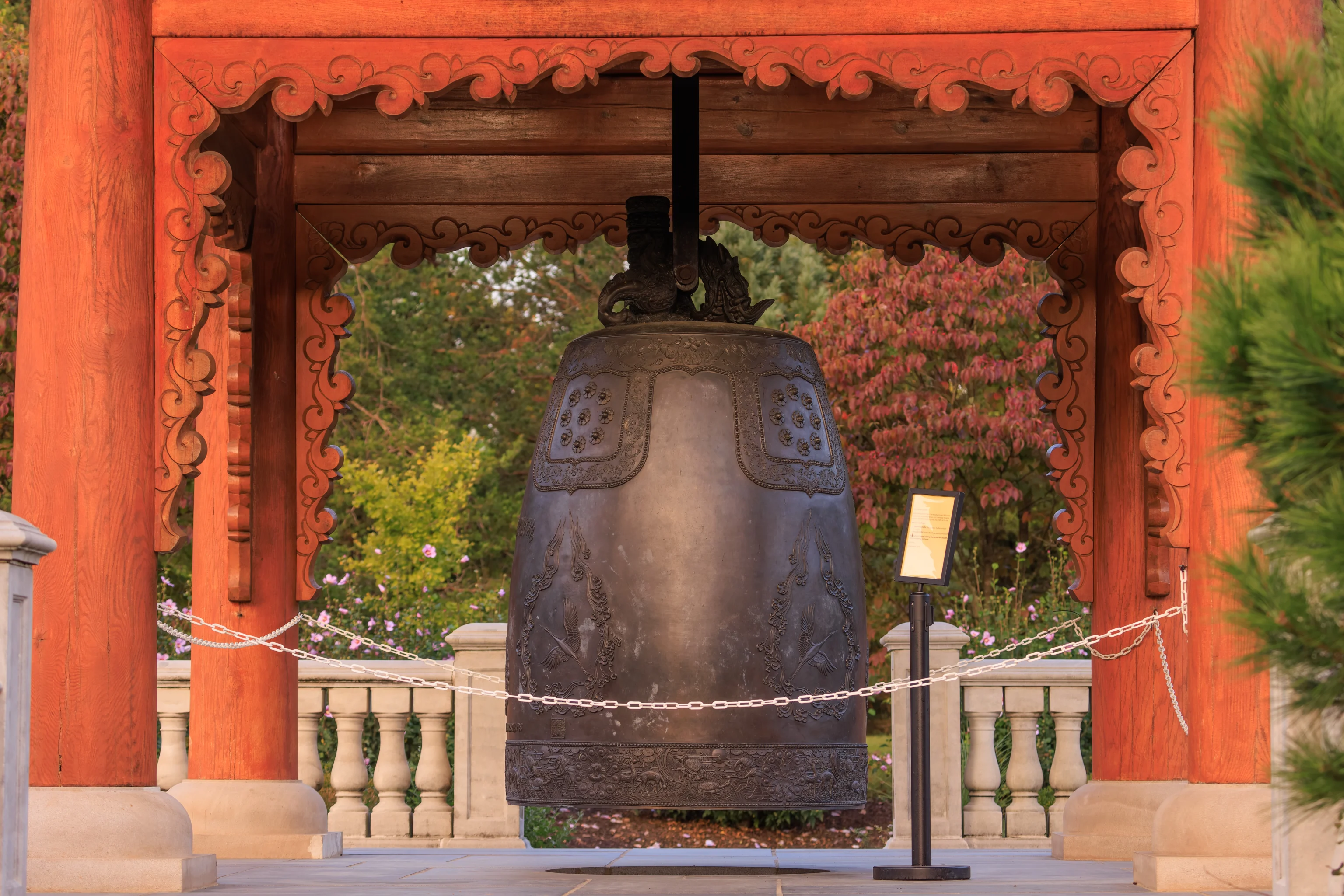
The garden’s large bell was made in Korea. It seems we didn’t photograph any bells from up close while we were in Korea. However, this bell has a similar appearance to the ones that we saw.
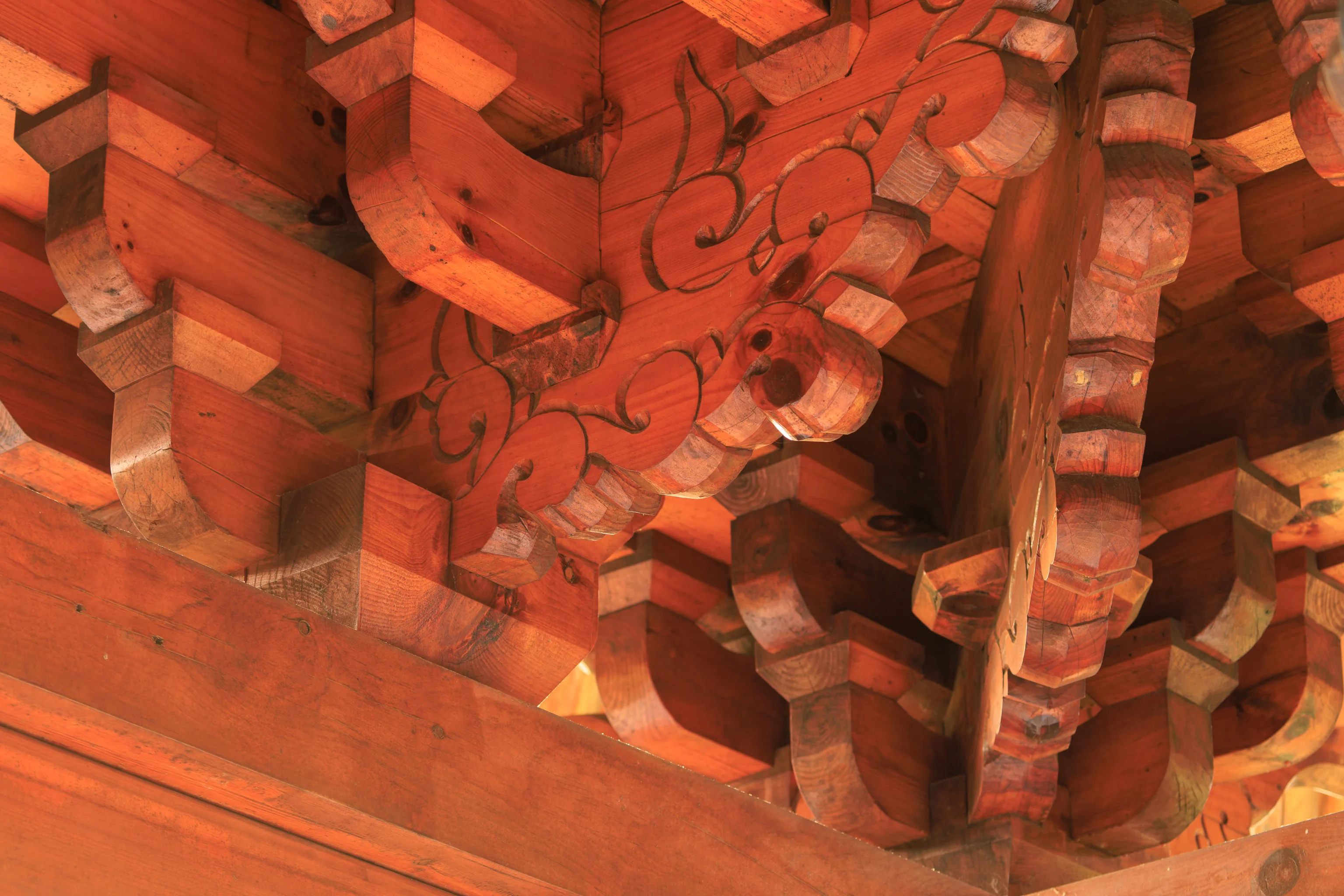
The bell pavilion here was assembled by hand using traditional techniques.
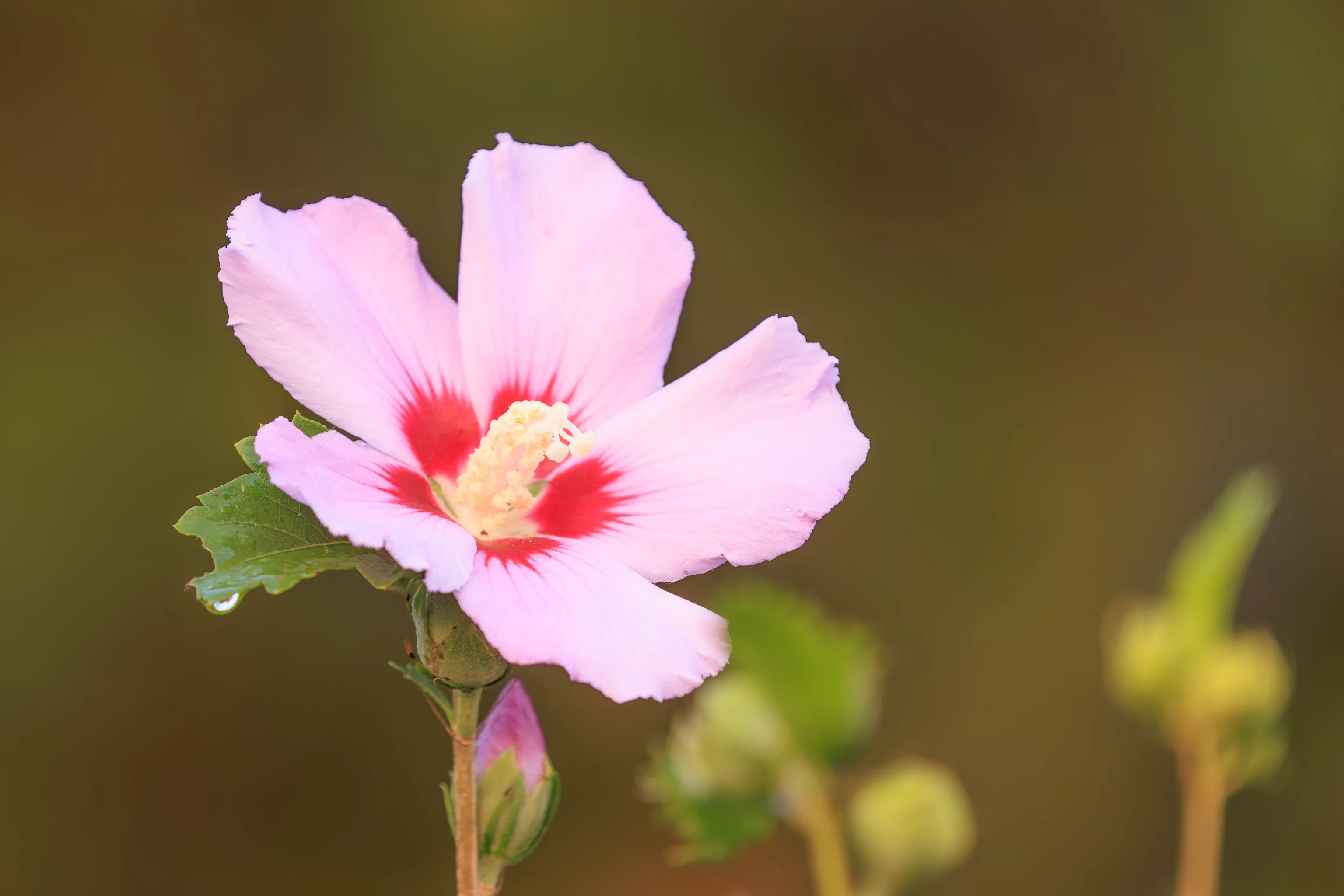
We continued on to return to the path that goes around the park’s ponds. As we headed back to the Korean Bell Garden’s gate, we passed by some Hibiscus. More specifically, this seems like it might be Hibiscus Syriacus, the national flower of South Korea.
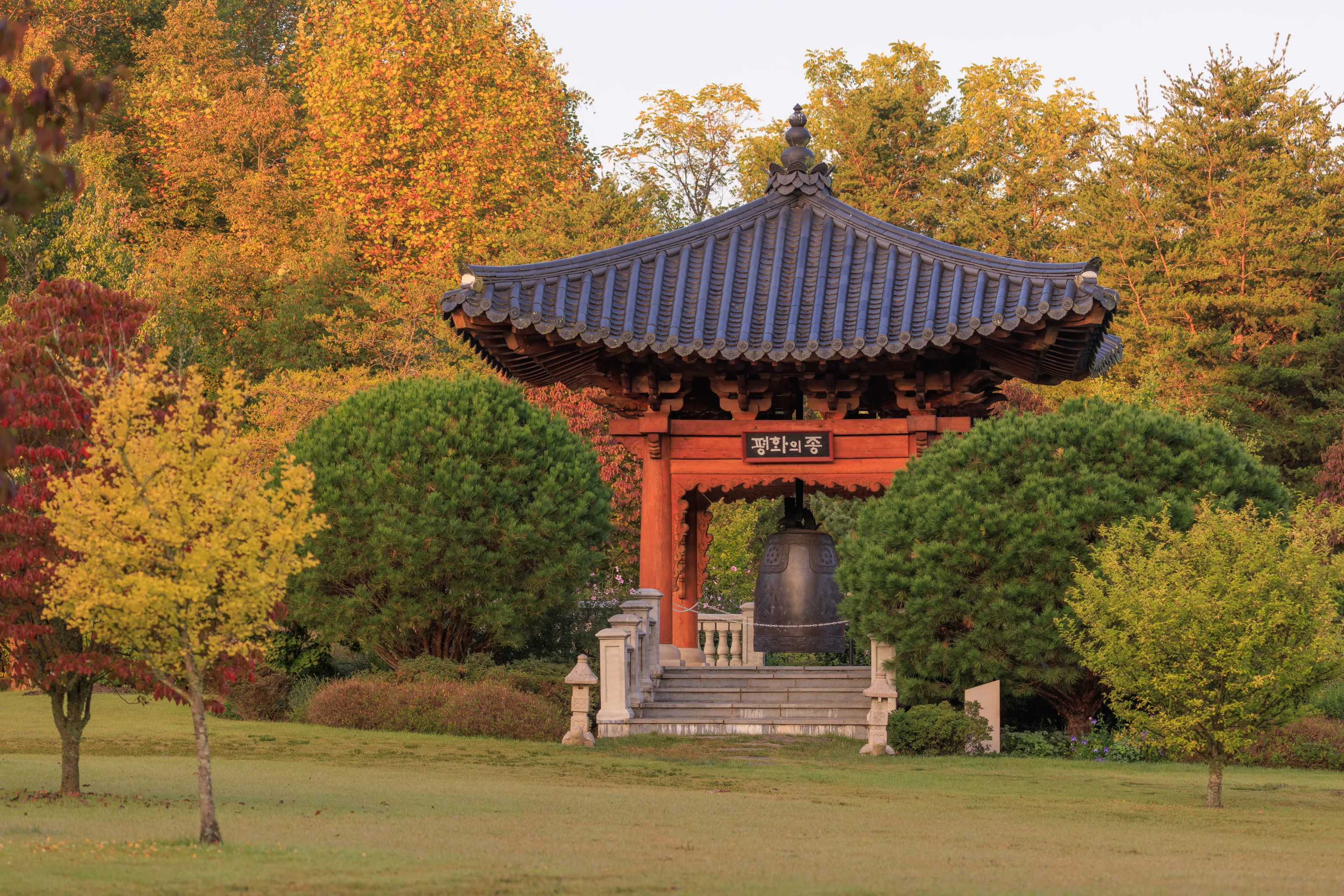
We glanced back to see the bell once again before as we exited the Korean Bell Garden.
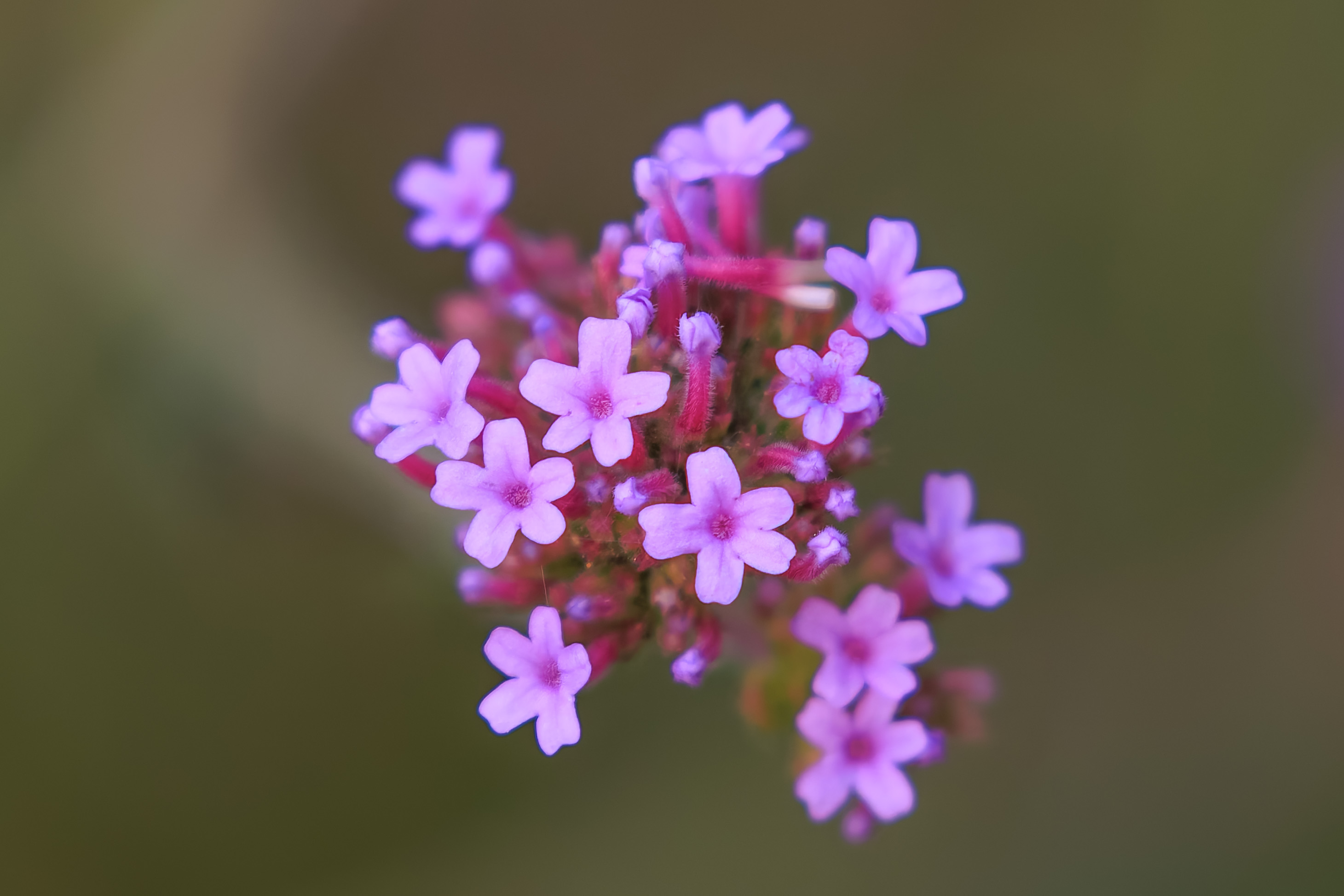
This seems to be Verbena Bonariensis, a plant native to Brazil and Argentina, with the name coming from Buenos Aires. They were all just starting to bloom.
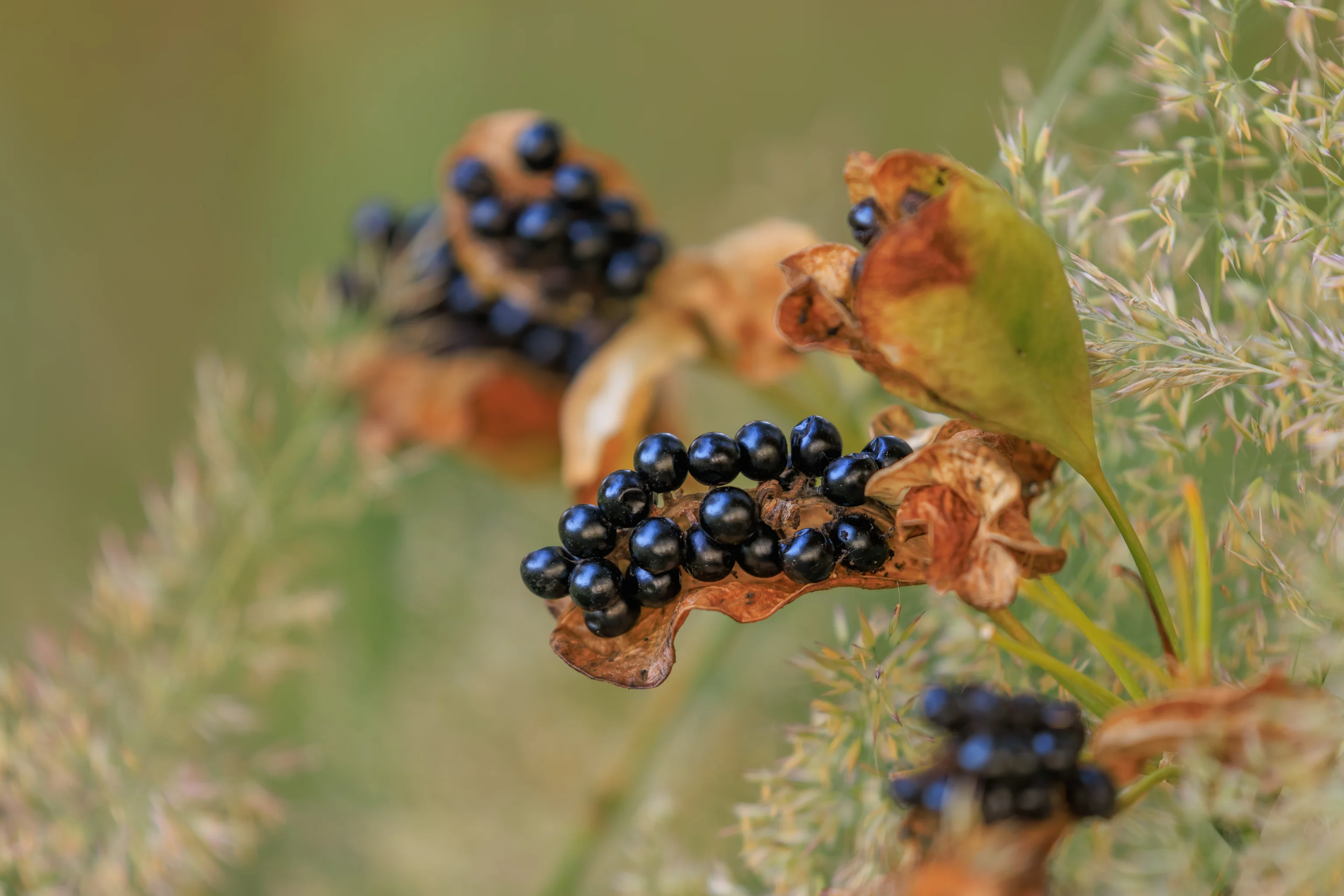
These odd plants seem to be Iris Domestica, also known as Blackberry Lily. They have fruit which open up to reveal a number of seeds which resemble blackberries.
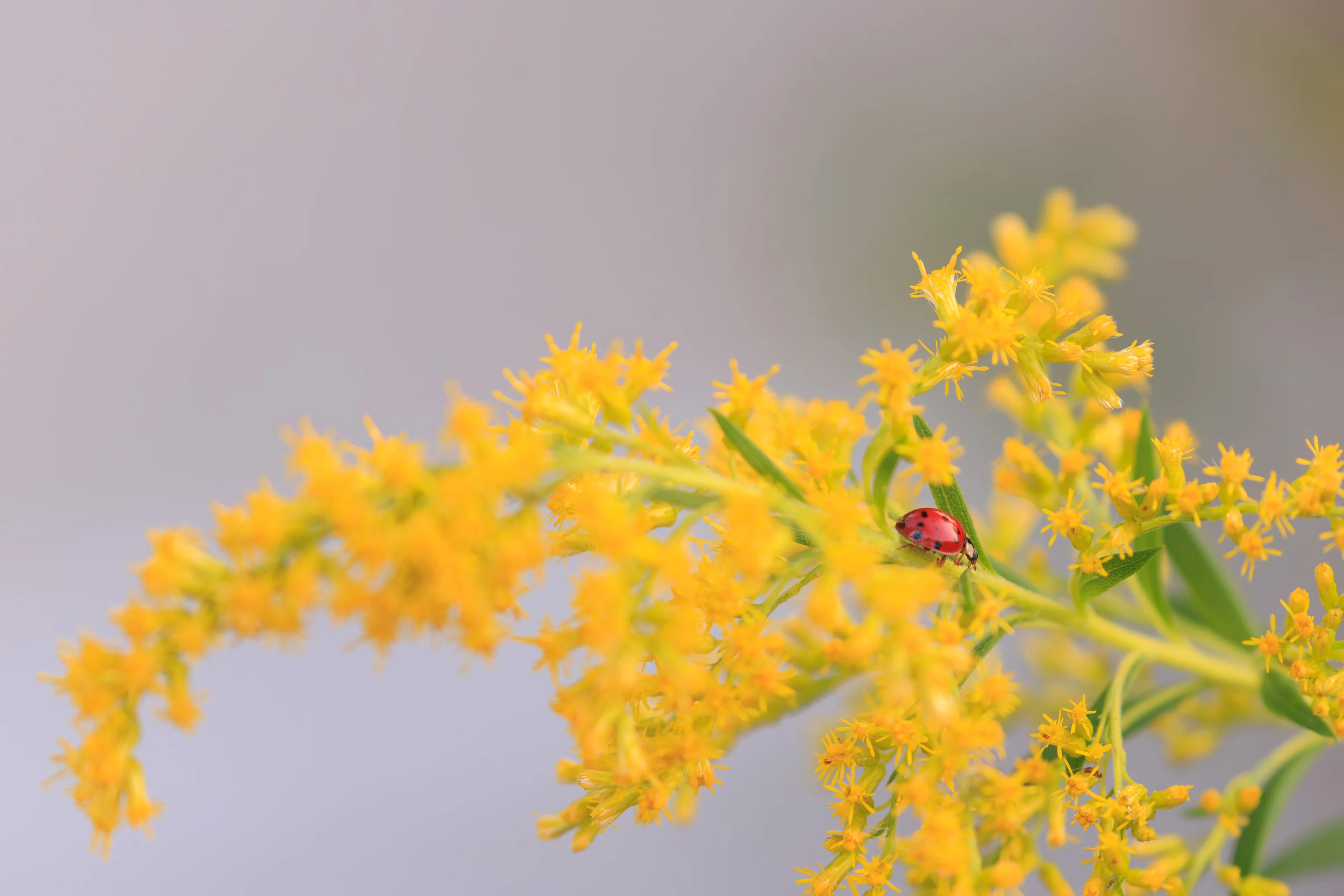
We noticed a small ladybug walking on one of the plants.
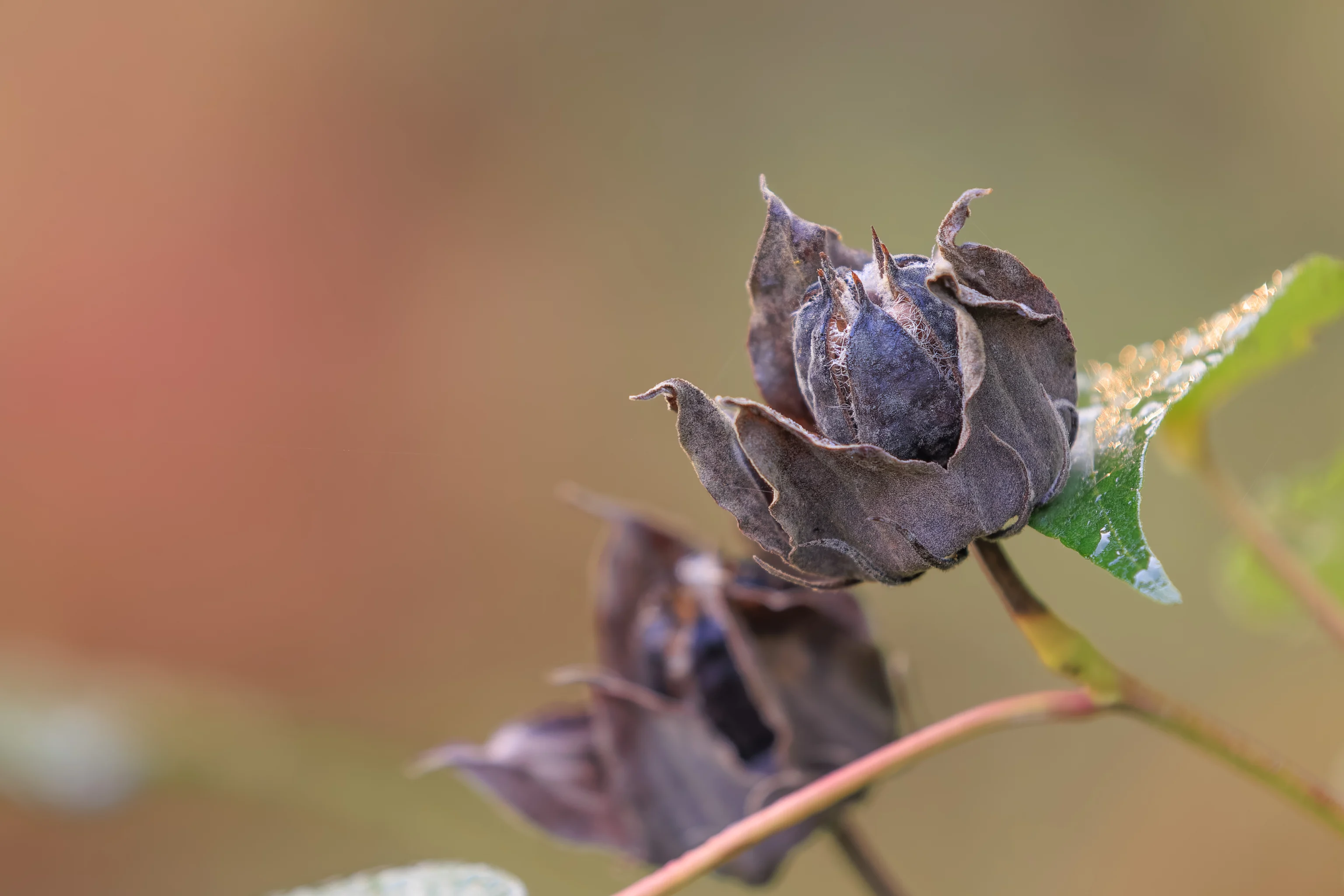
We’re not sure what species these are. However, it seems some Hibiscus seed pods look like this.
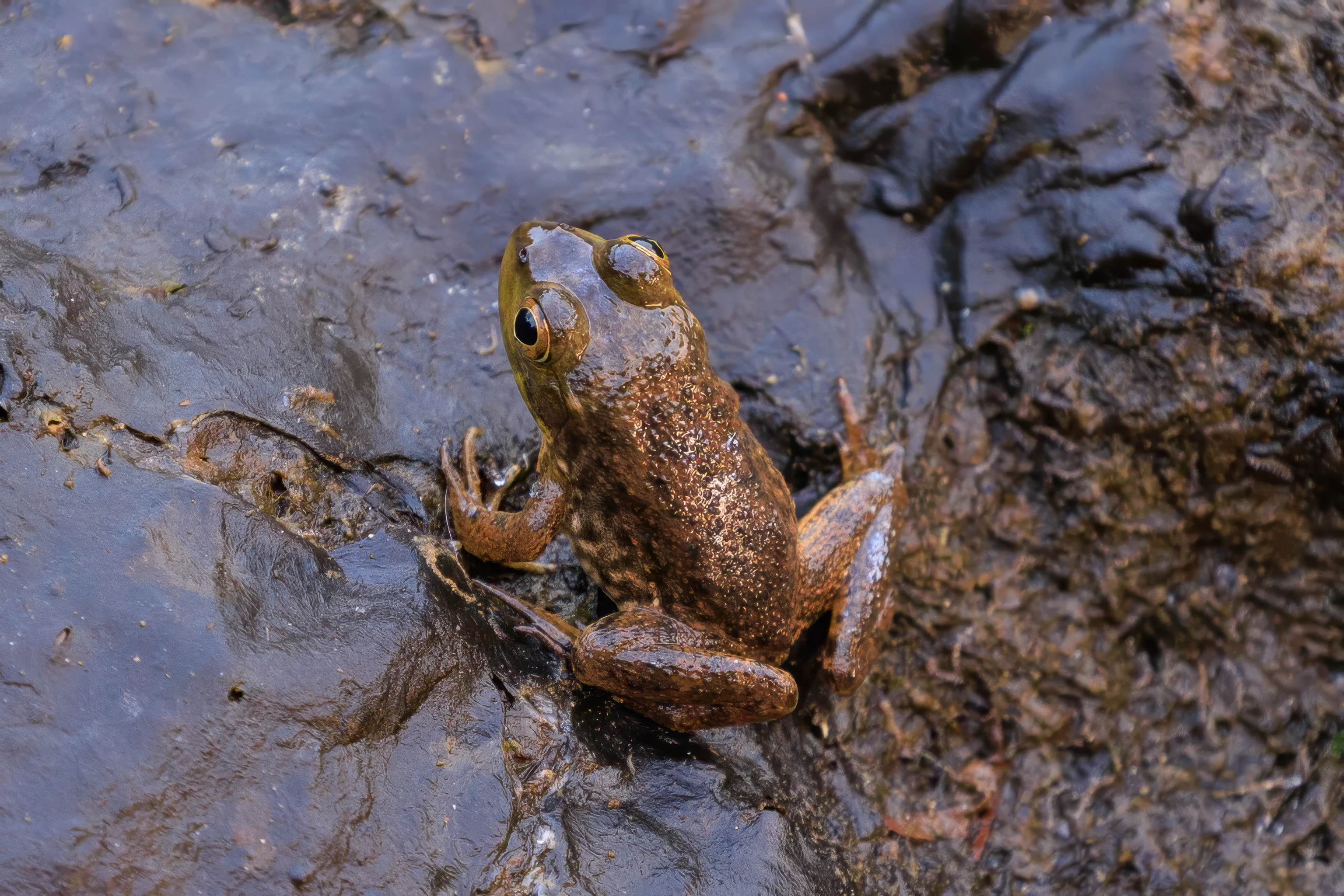
We tend to walk the same path through the gardens on our visits as the route goes by many areas with interesting flowers and birds. Today, the water in the ponds was pretty low, revealing quite a bit of mud. As we walked to the gazebo at the end of a short pier on the southwestern corner of Lake Caroline, the pond that contains the new fountain, we looked down and found a small frog sitting in the mud.
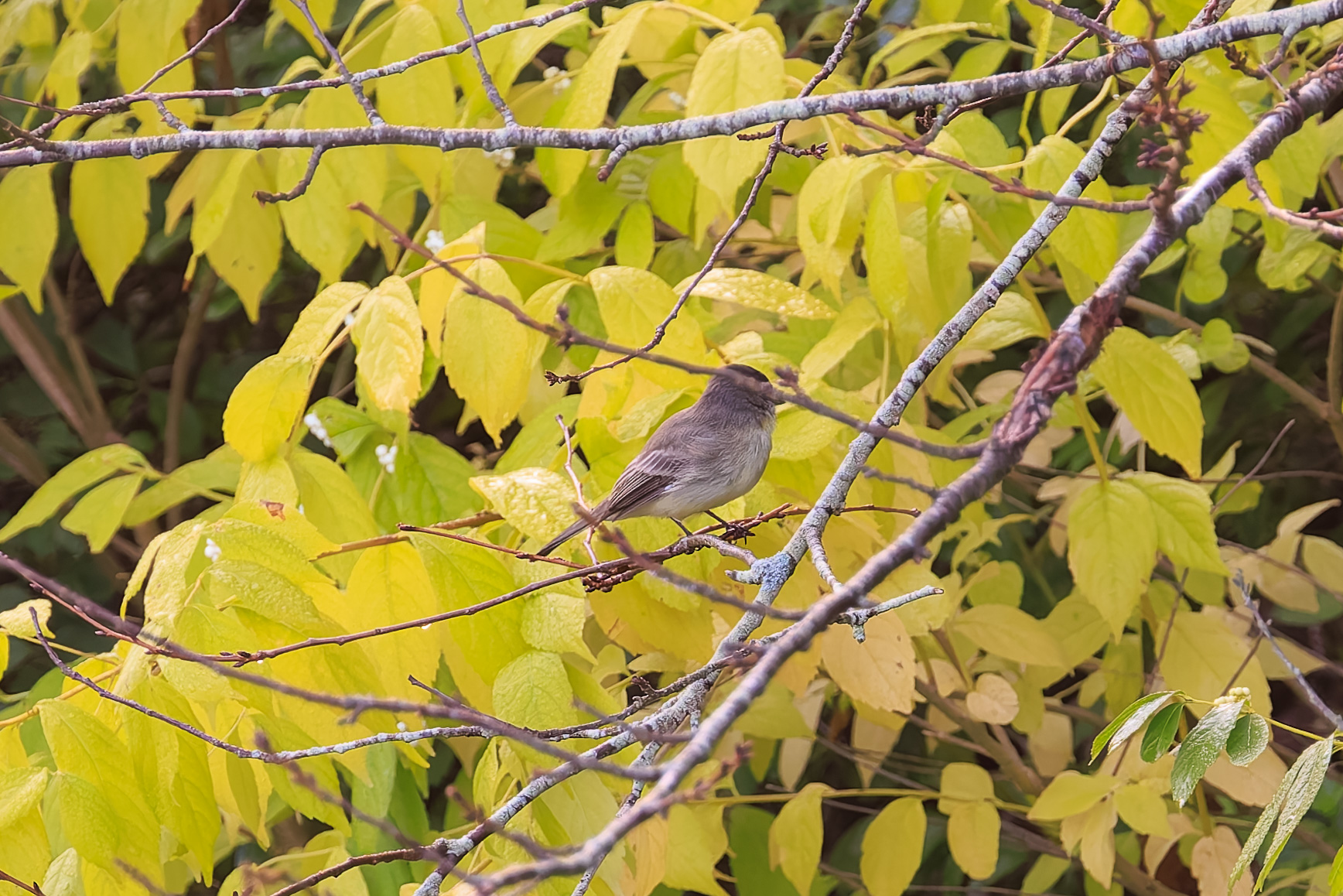
From this perspective, with a branch inconveniently covering the bird’s eye and bill, it almost seems like a Dark-Eyed Junco. However, we watched this bird as it moved from branch to branch. It is an Eastern Phoebe. This is unfortunately the best focused photo we got of it.
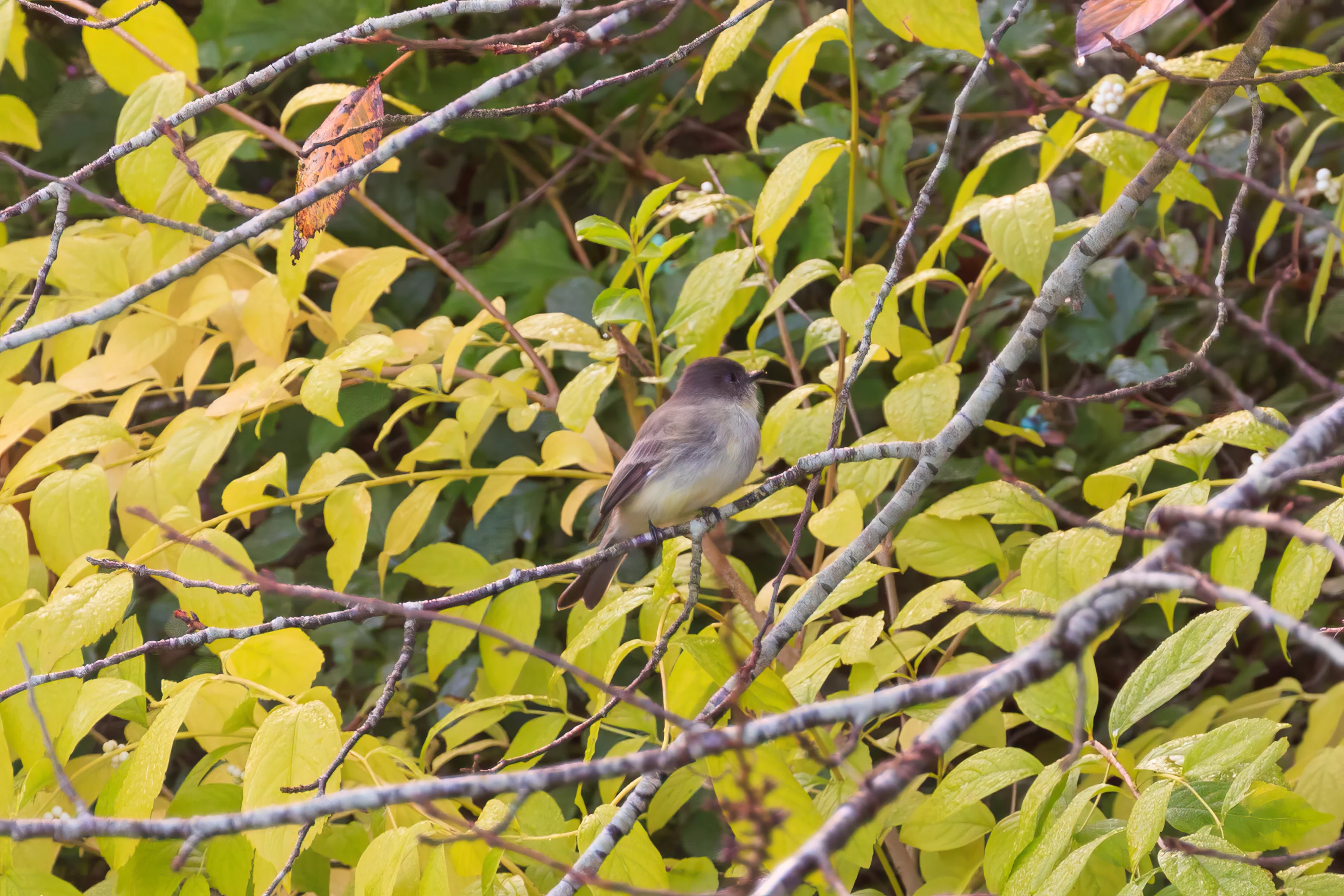
This photo of the same Eastern Phoebe is actually out of focus but you can’t really tell once its been sharpened.
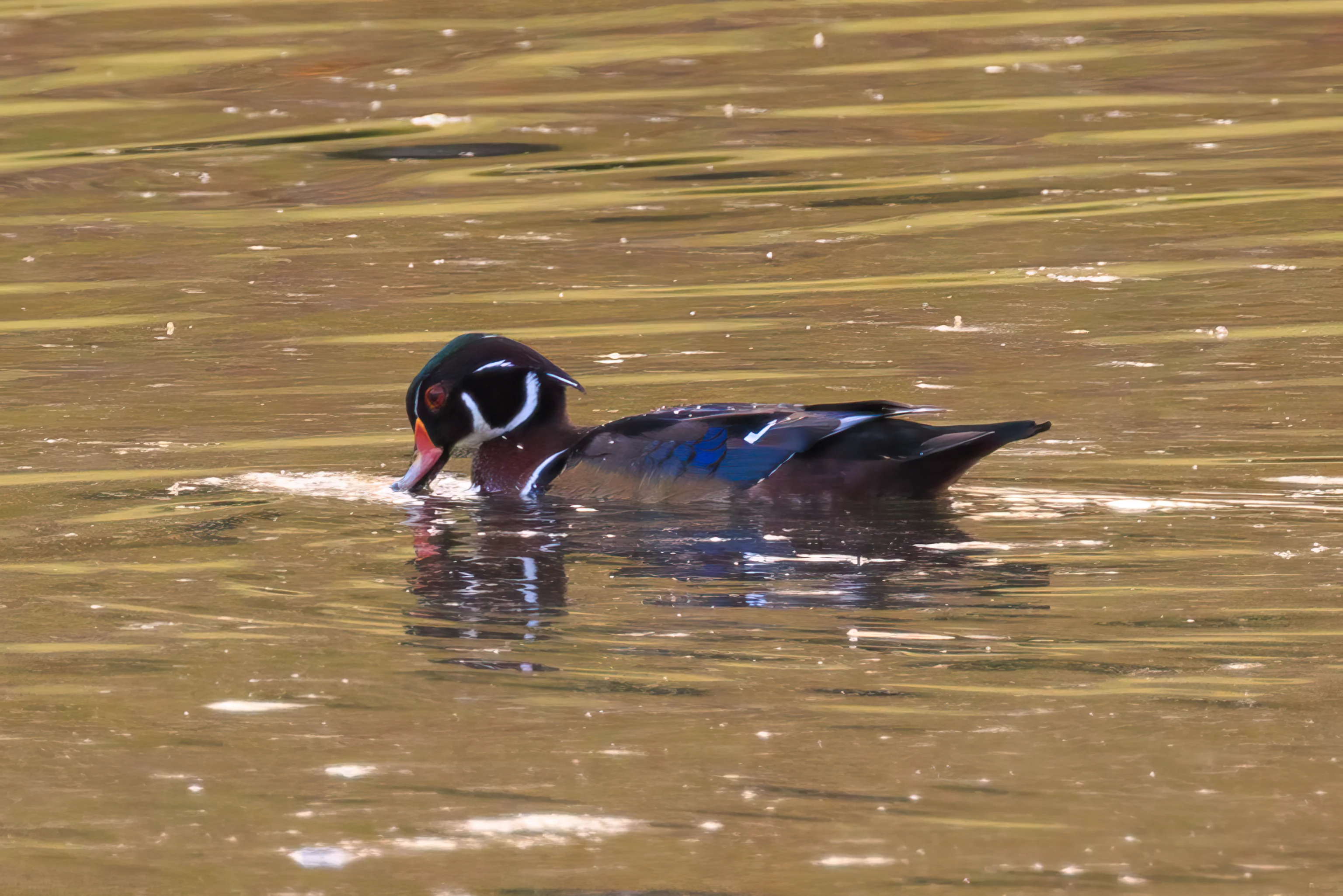
The Wood Ducks were still swimming in the pond.
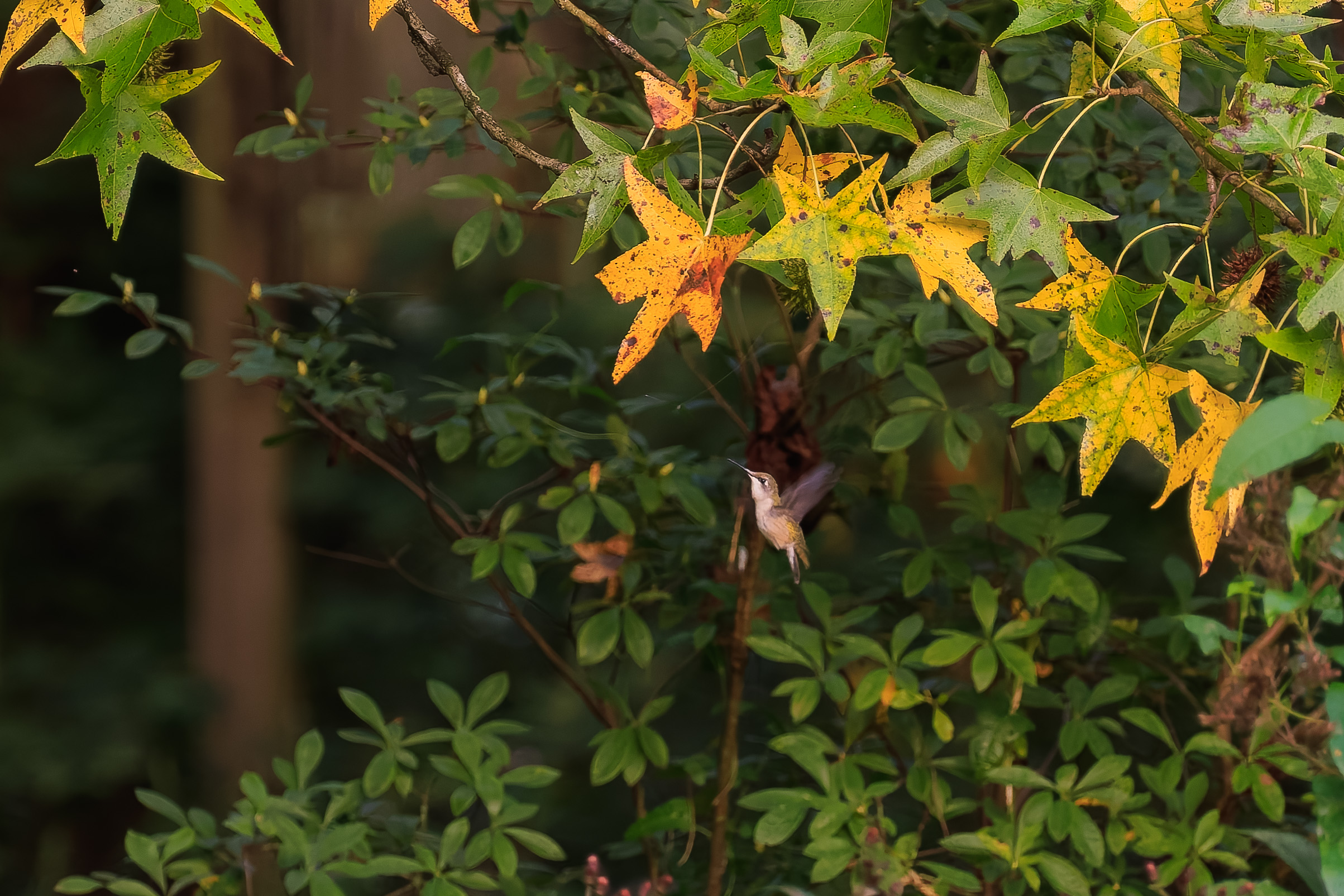
After leaving the gazebo, we saw some movement to the west. It was something small and fast. We somehow managed to get this photo of the bird, a Ruby-Throated Hummingbird! We got a few photos of it here as it hovered for a bit but this is the only one that was in focus. We saw it darting around for a short time before we lost it. We did try to find it again but didn’t have any luck.
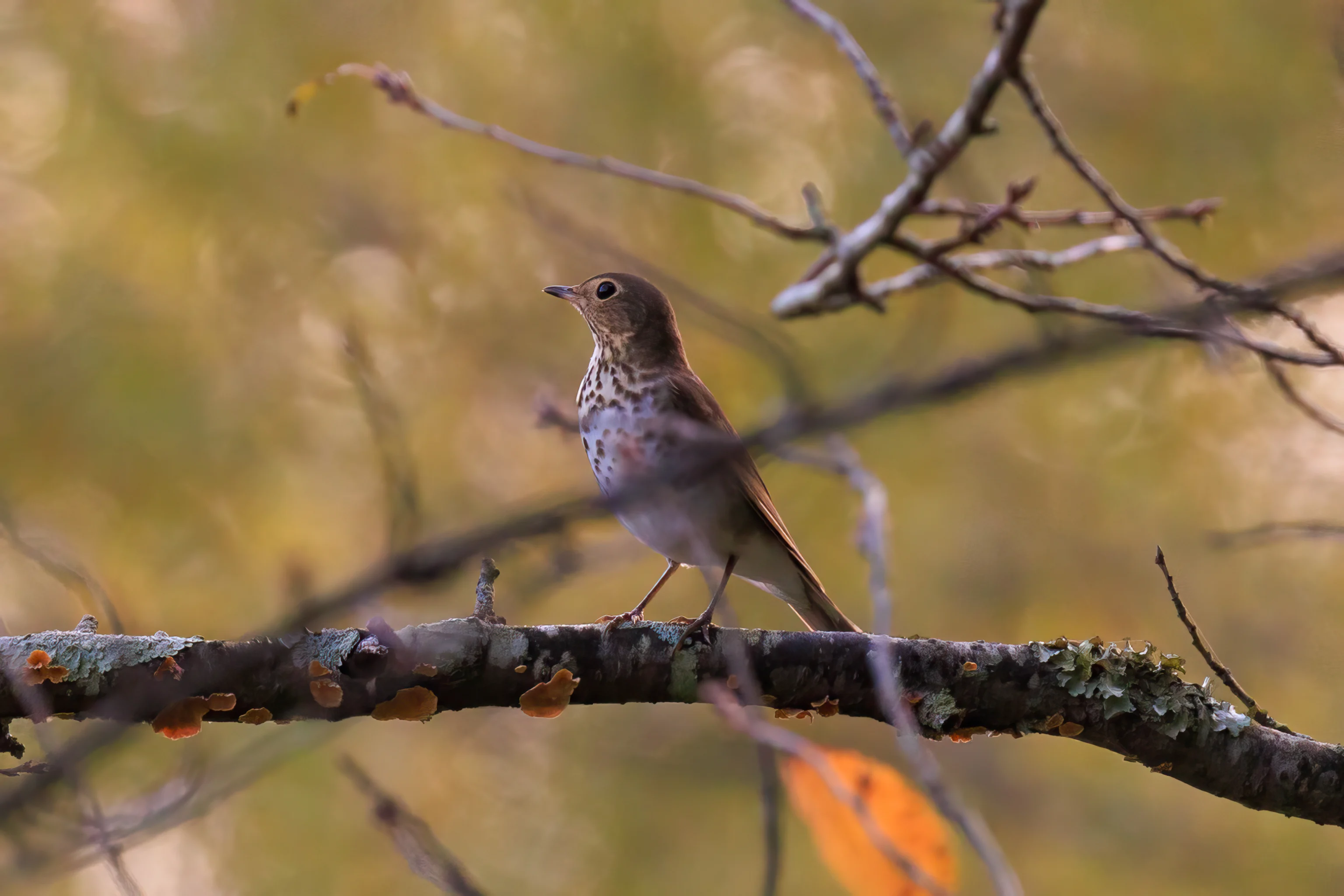
We continued on our way, walking to the east on the south side of the pond, Lake Caroline. This area is well shaded and tends to be a bit dark. But, we managed to spot a thrush! The only other thrush species we’ve ever seen is the extremely common American Robin. There are a few other thrushes that can be found in the region but during this time of year, the Swainson’s Thrush seems to be the most likely.
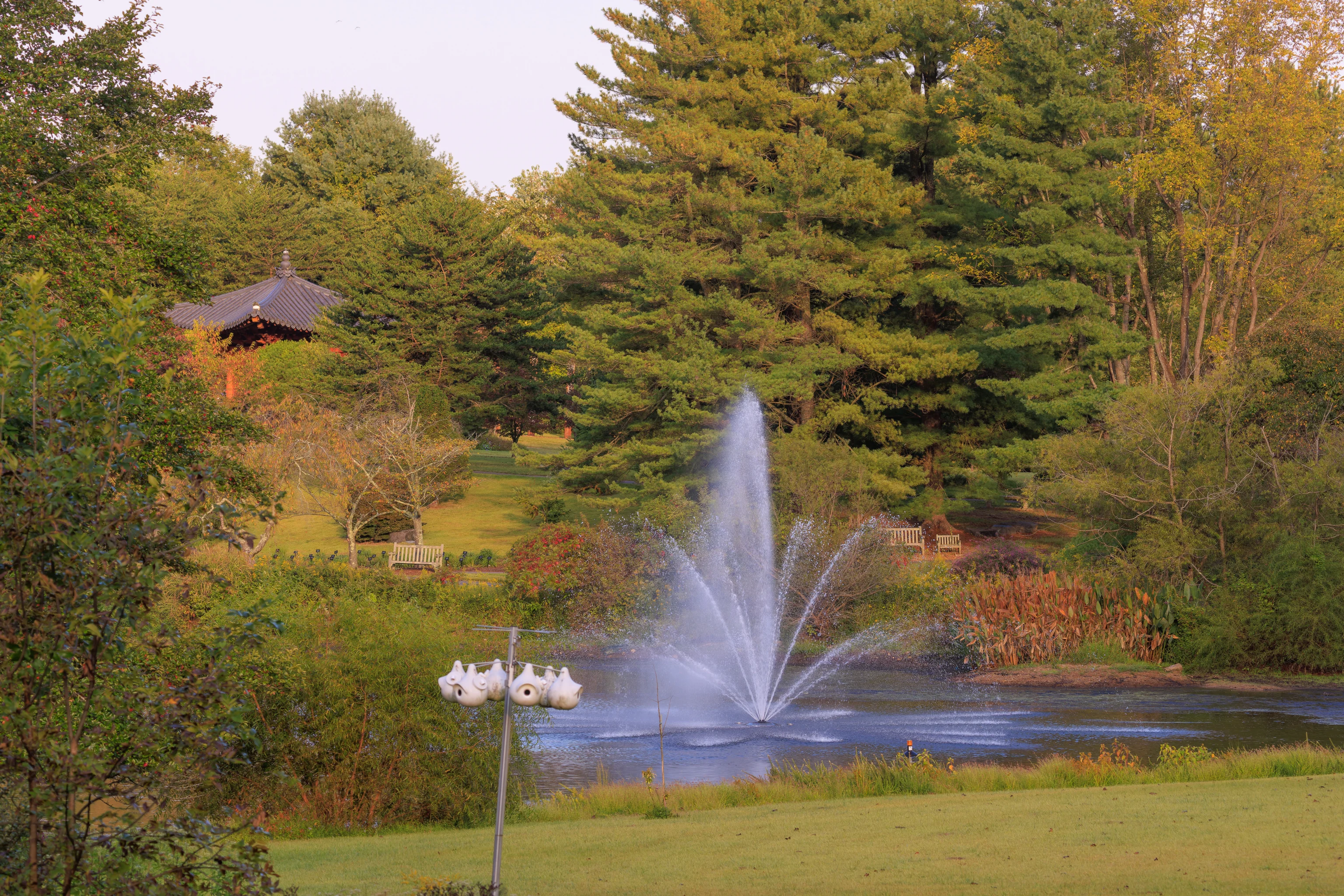
We continued walking to the northeast corner of Lake Caroline before turning to the east at a junction to walk around the east pond, Lake Gardiner. From this junction, we looked to the west to see the new fountain and the Korean bell pavilion in the background. The white structure in the foreground are nest boxes that we’ve only seen used by Purple Martins, a species of swallow.
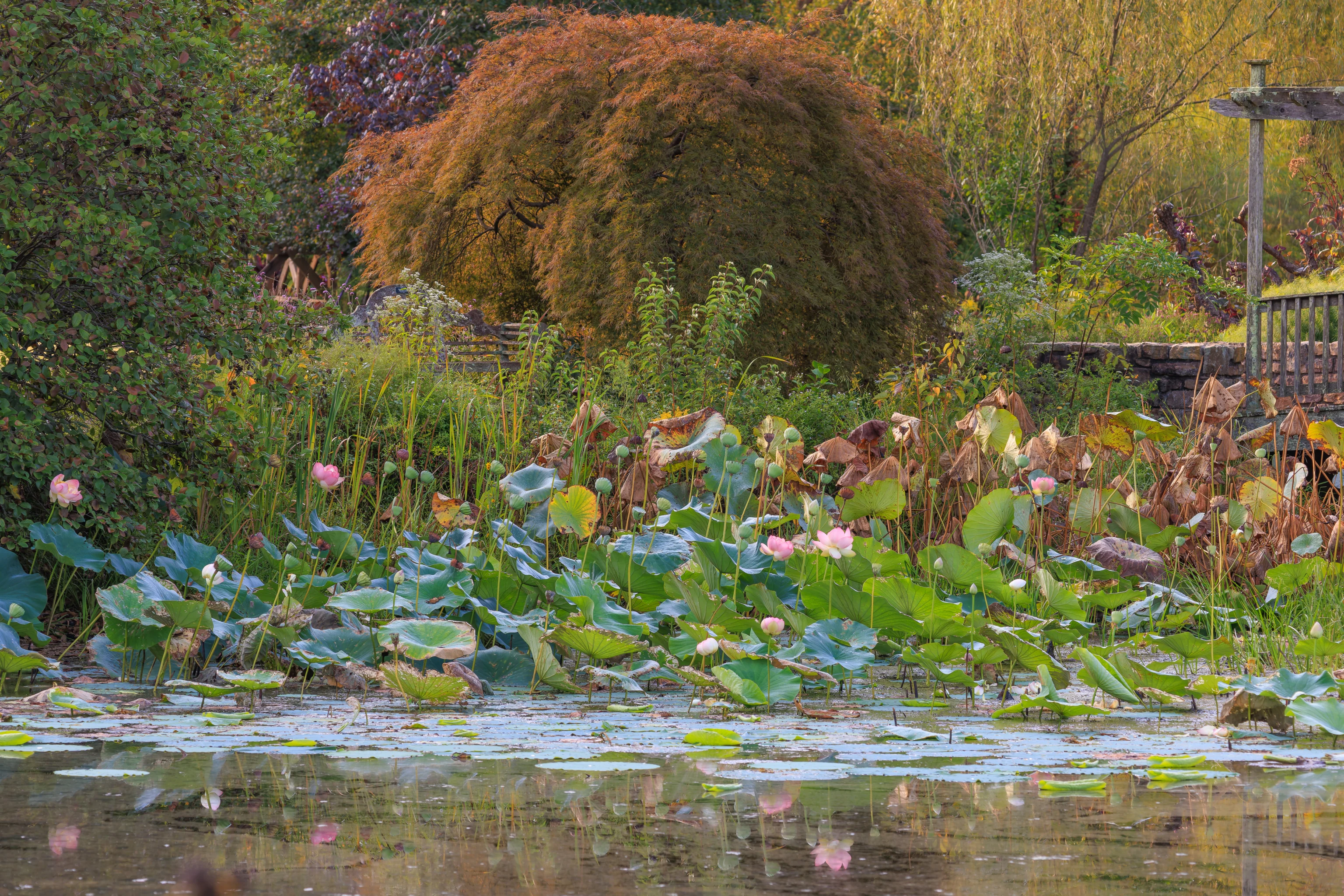
Lake Gardiner has many lotuses in various parts of the pond. It is past season for the flowers but there were still some in bloom. There were even a few buds that hadn’t opened yet.
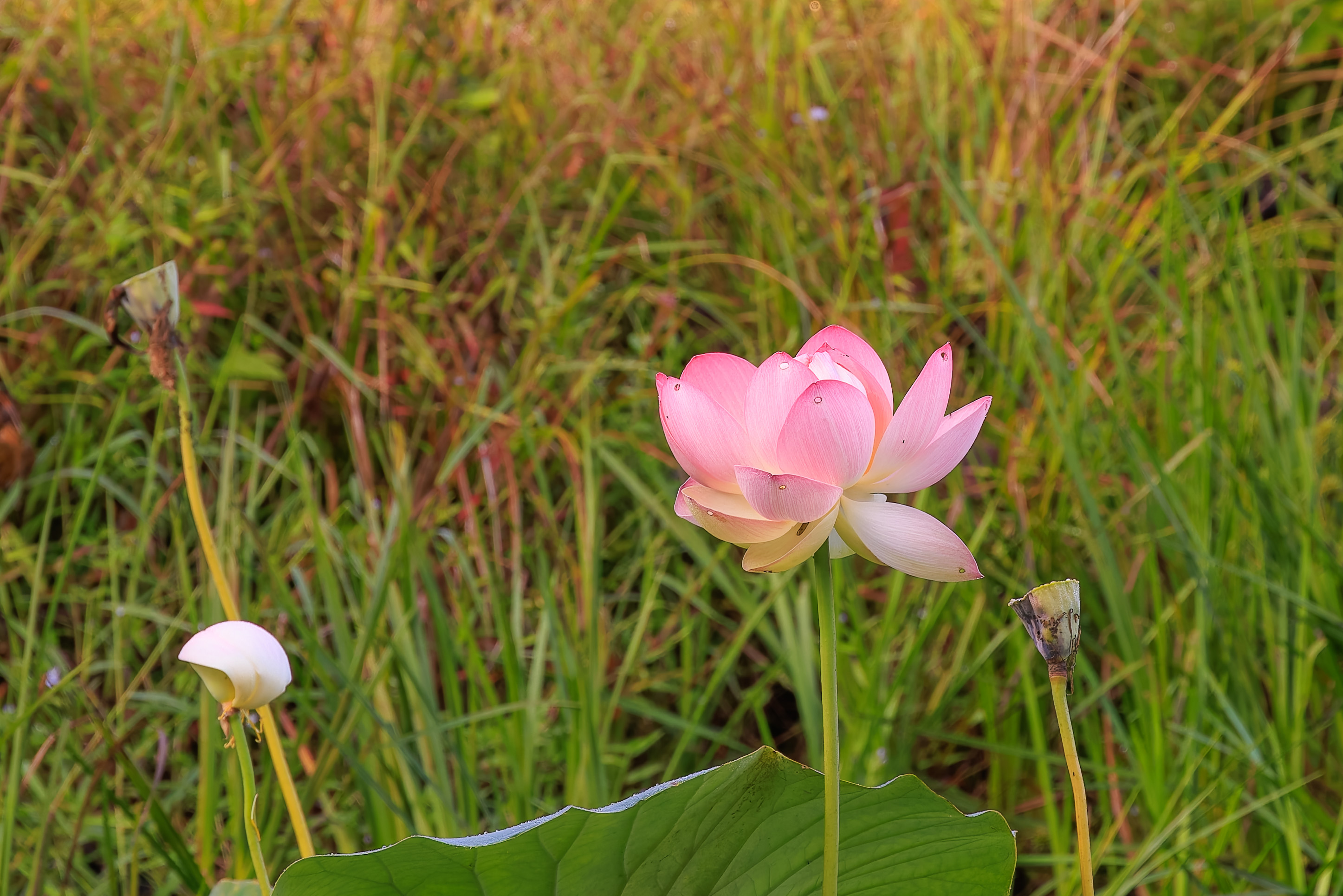
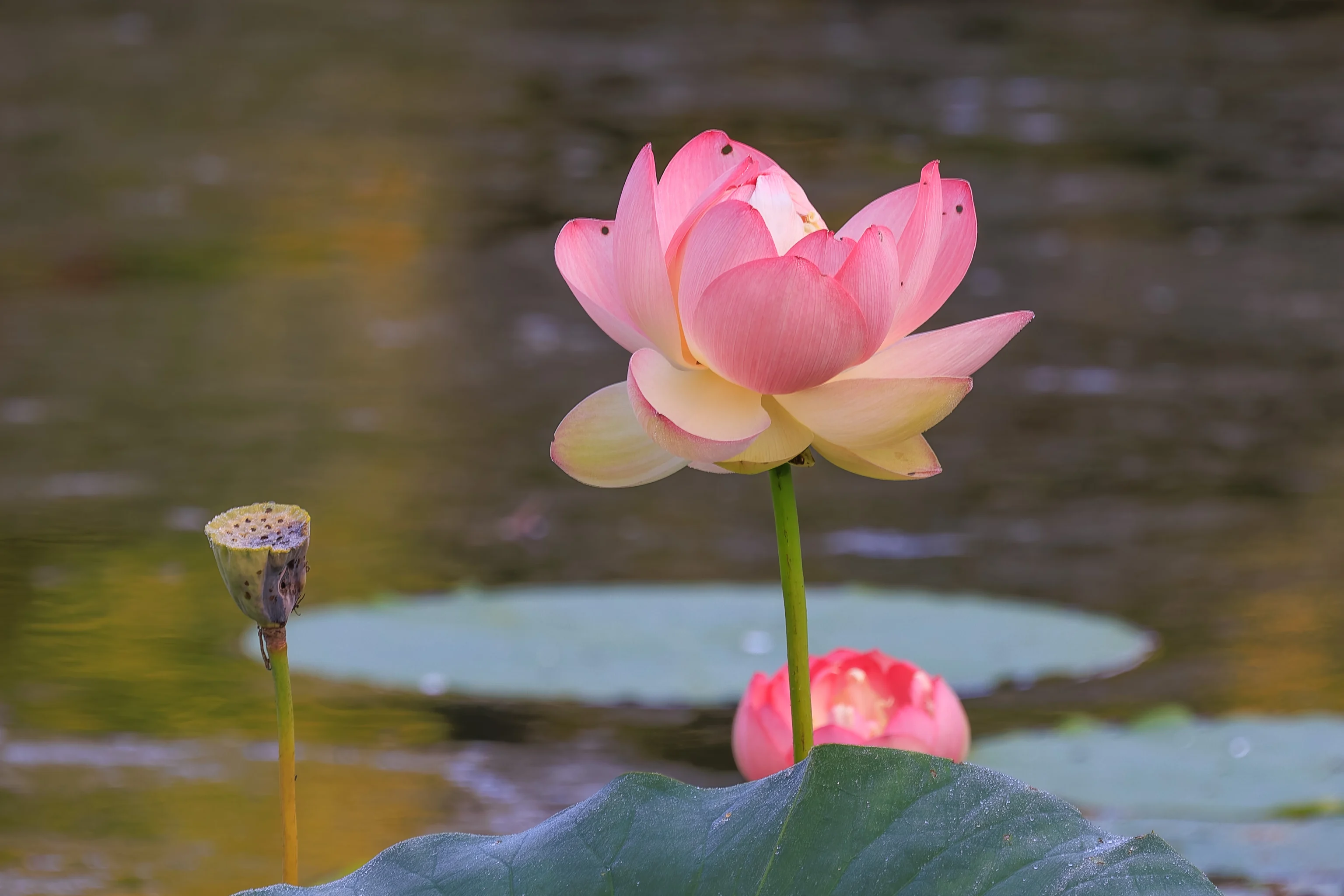
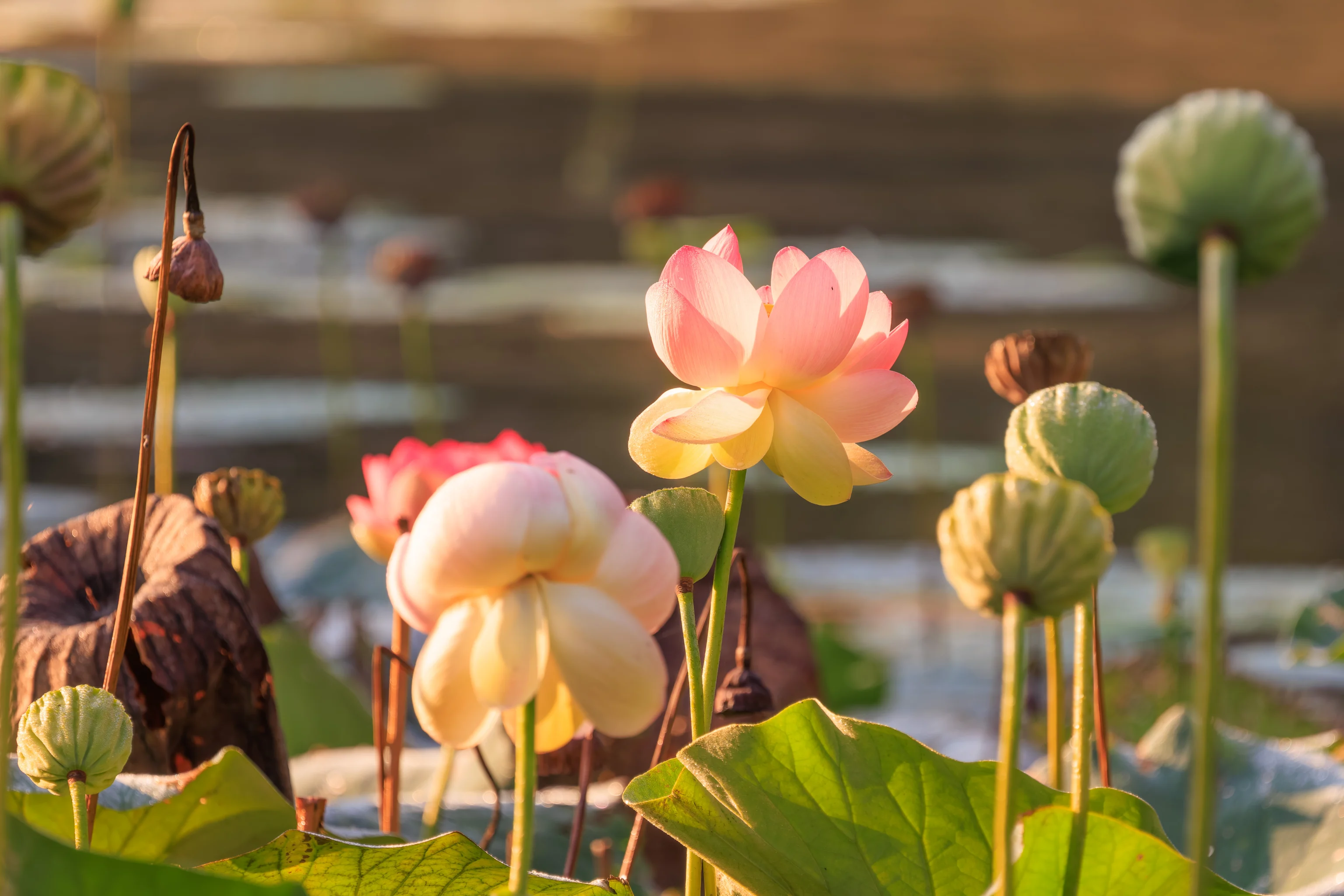
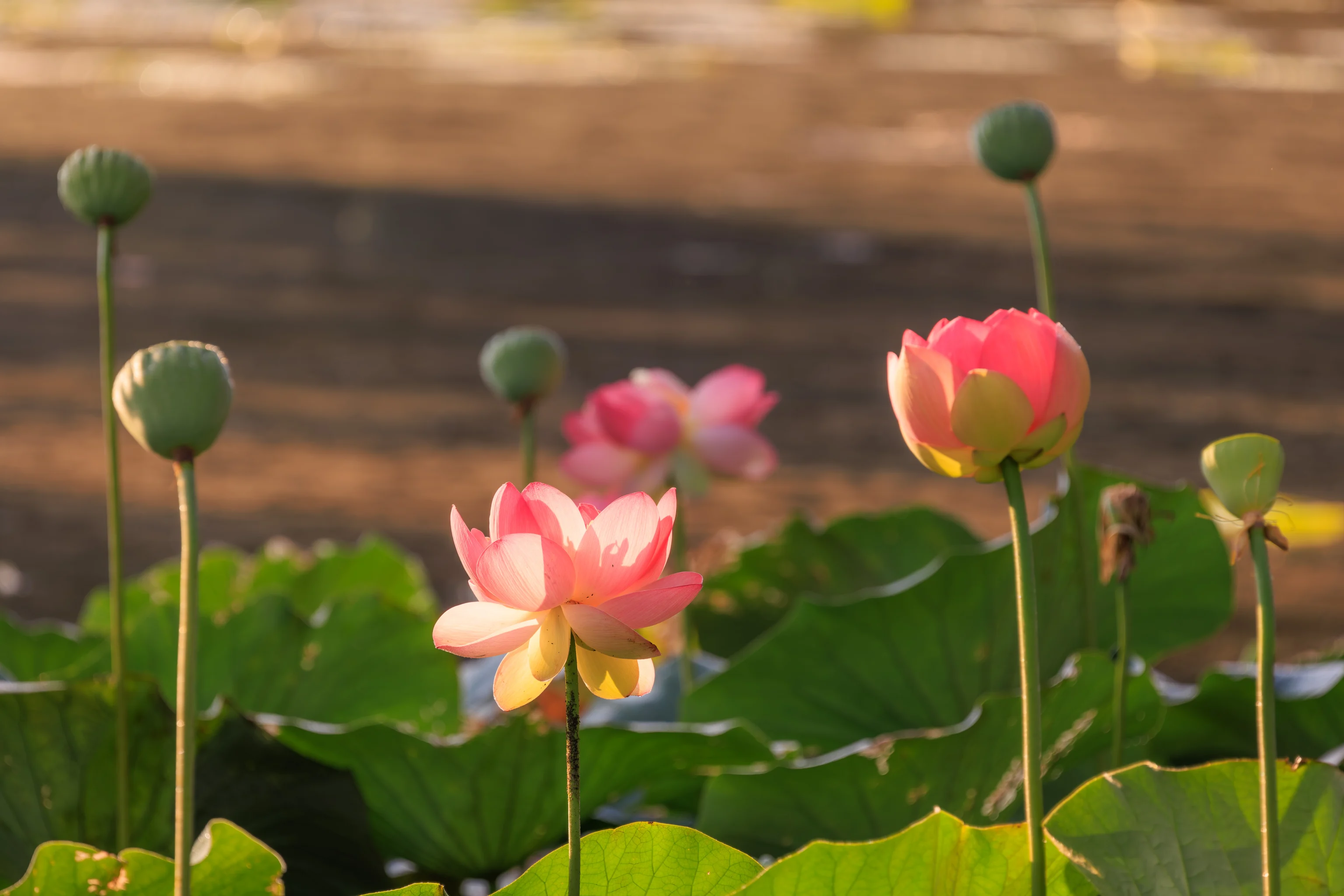
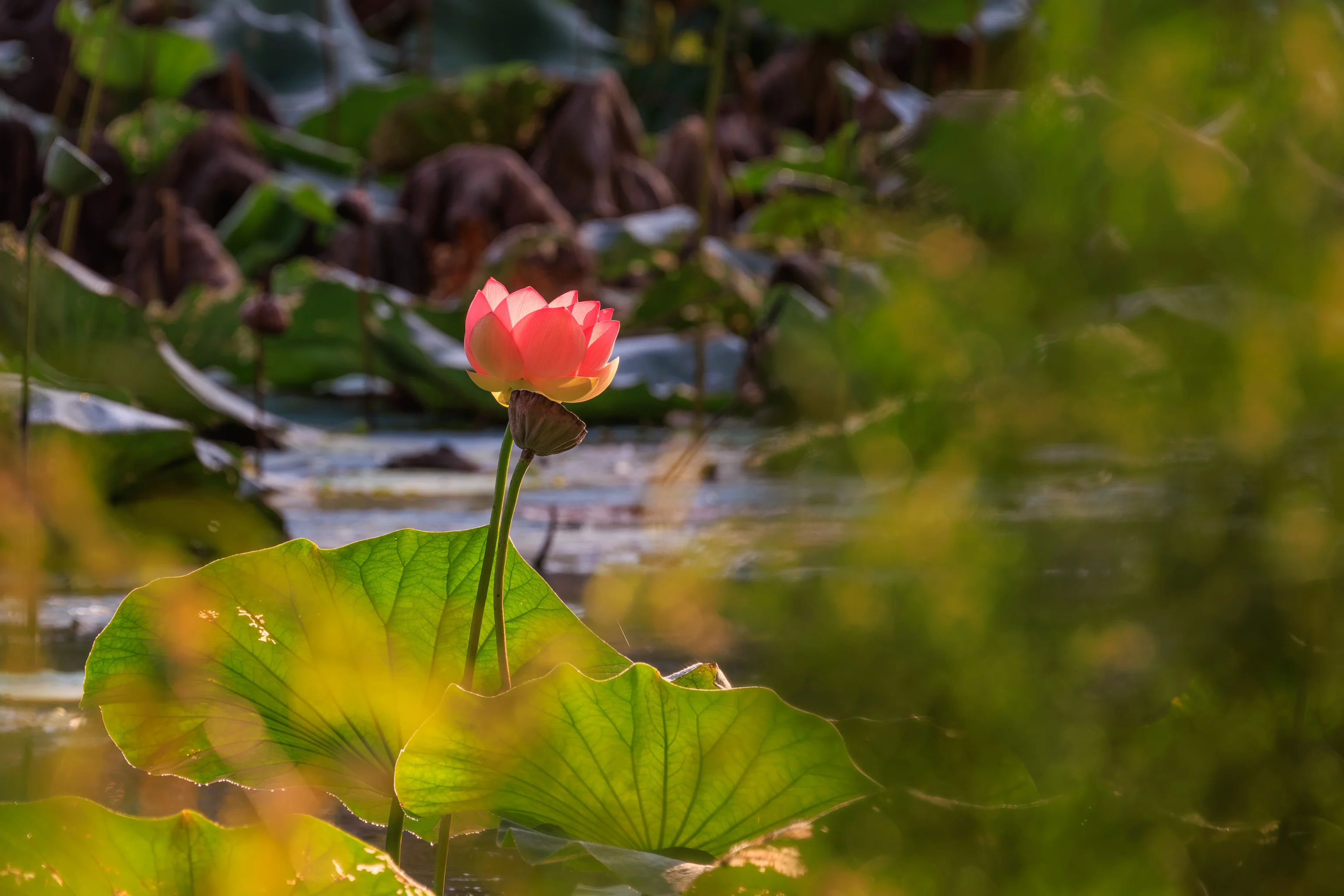
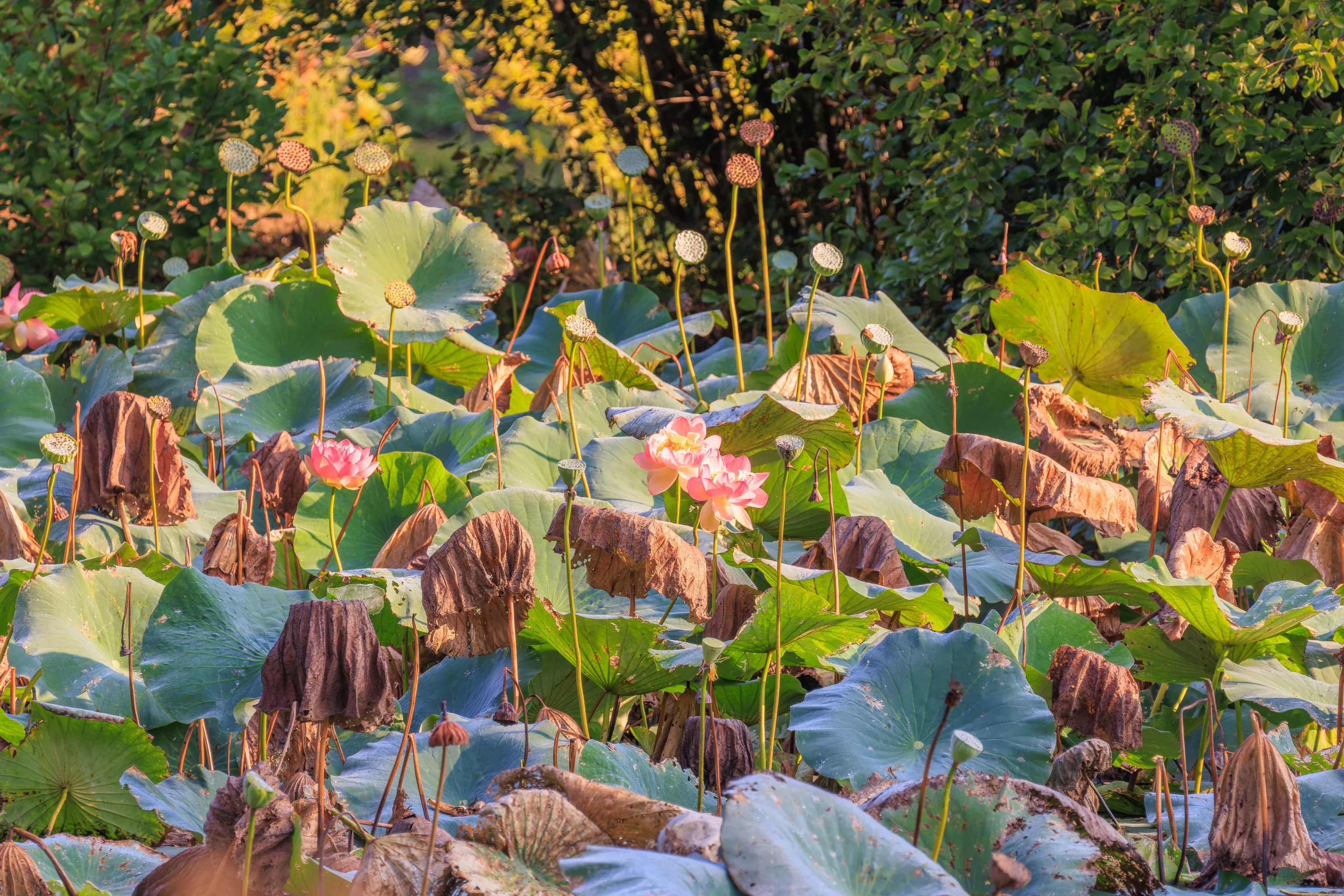
We photographed them from various perspectives.
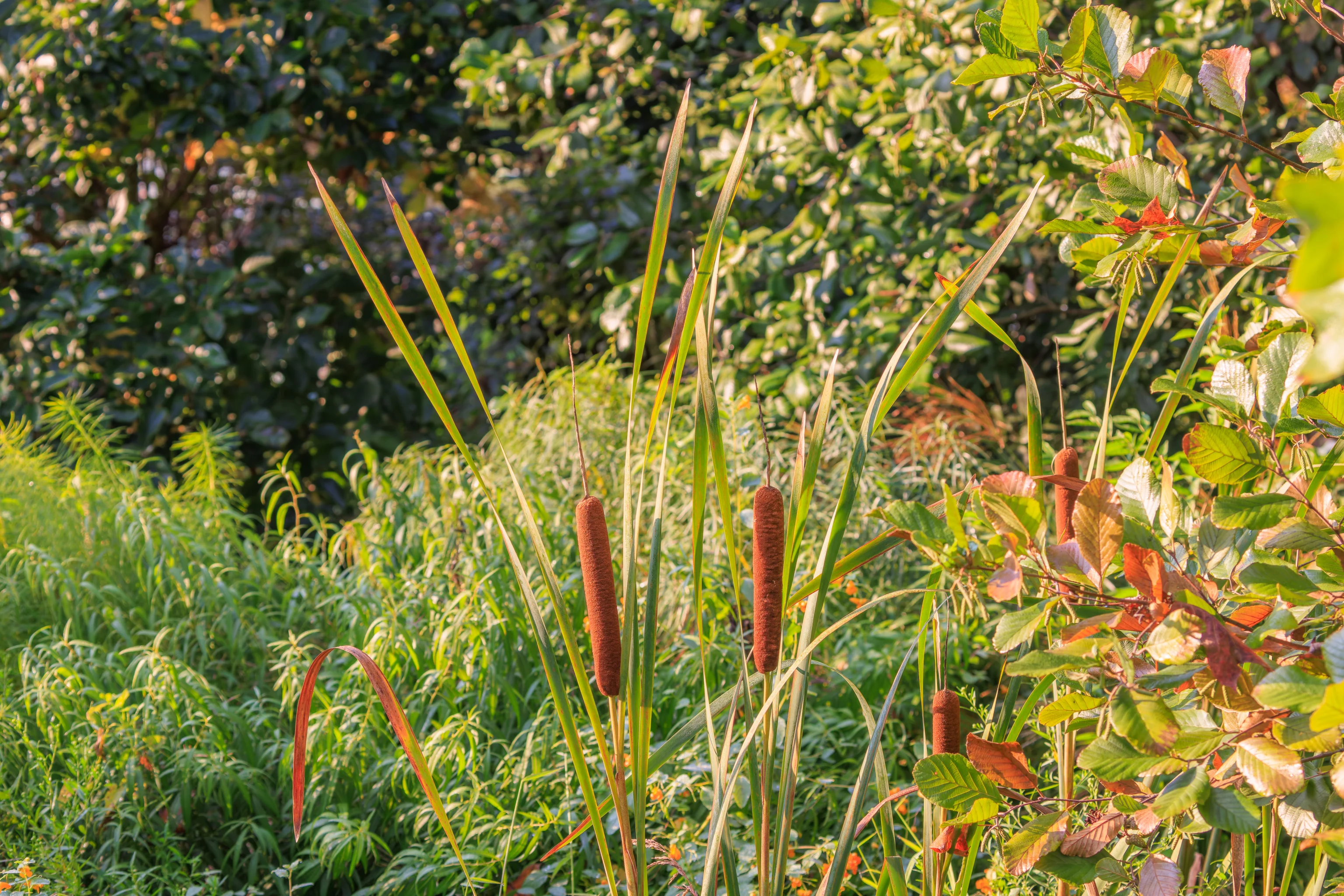
There aren’t really very many cattails here in the gardens. We’ve only really found them here near a bridge that leads to a small island in the pond.
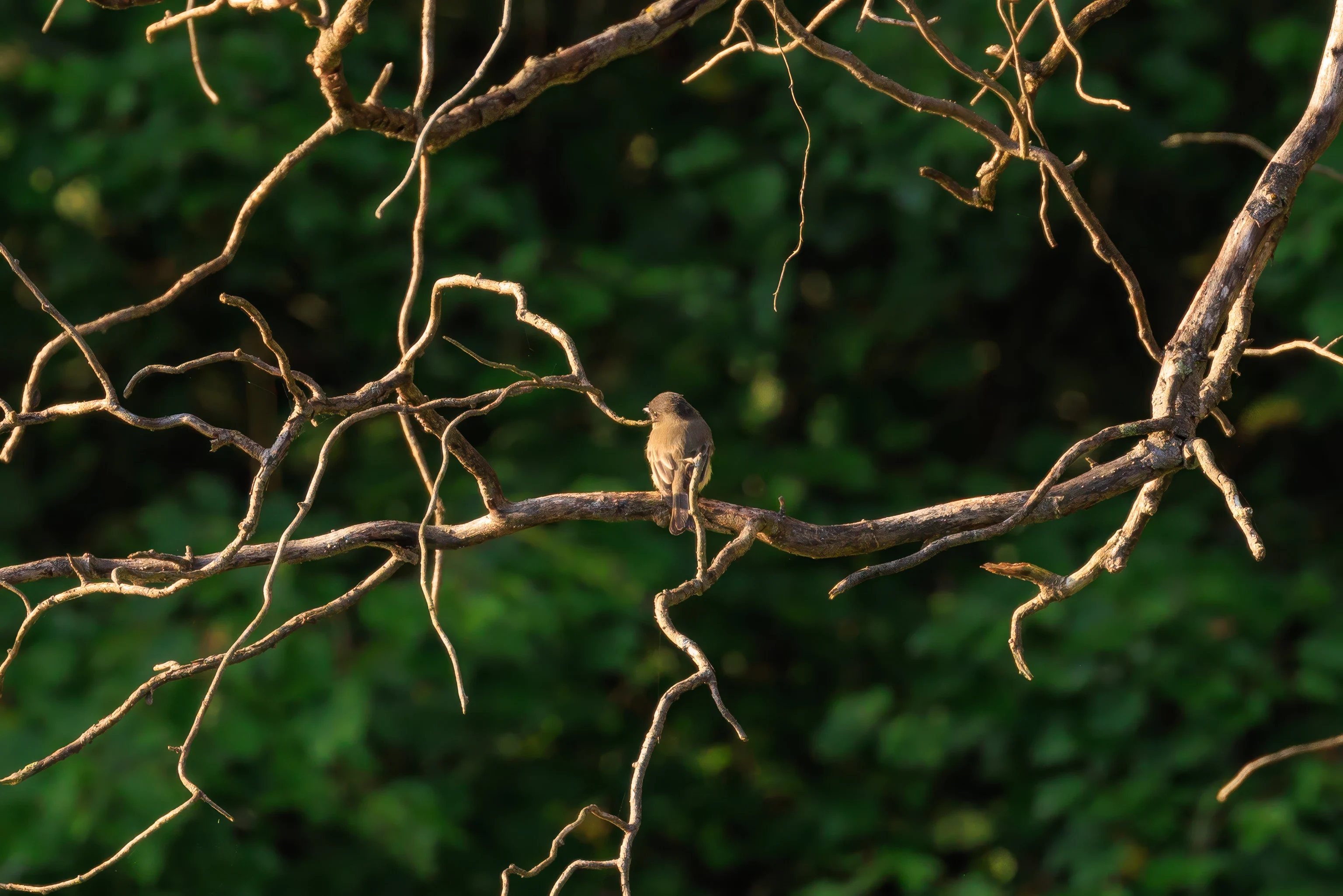
We spotted another Eastern Phoebe! Or, maybe the same one?
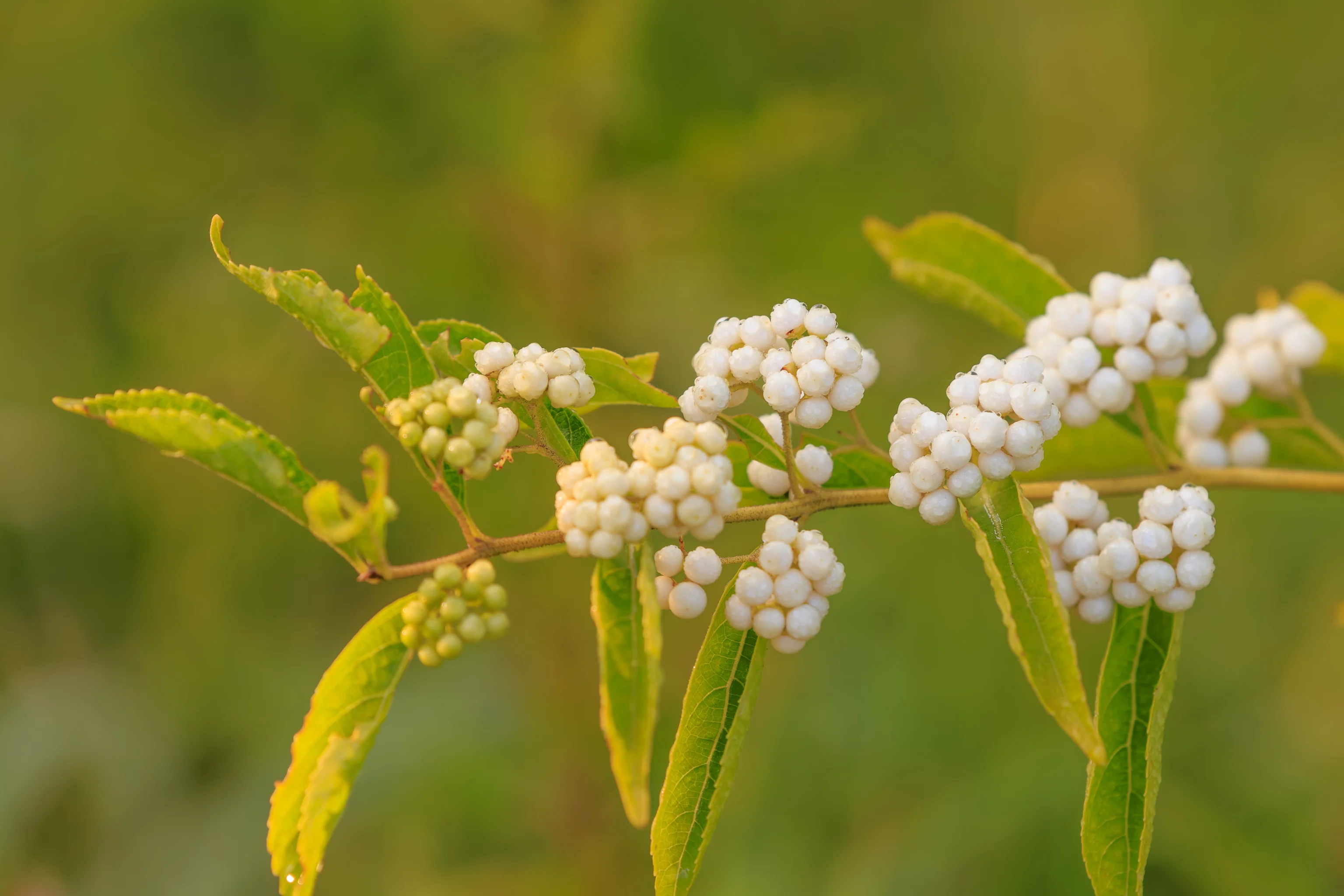
This plant has clusters of what seem to be white berries. They might start out as green before they grow larger based on the ones at the end of the branch. It looks like Callicarpa Americana but with white instead of purple berries. The Wikipedia page for the species does mention that there is a white-berried variety.
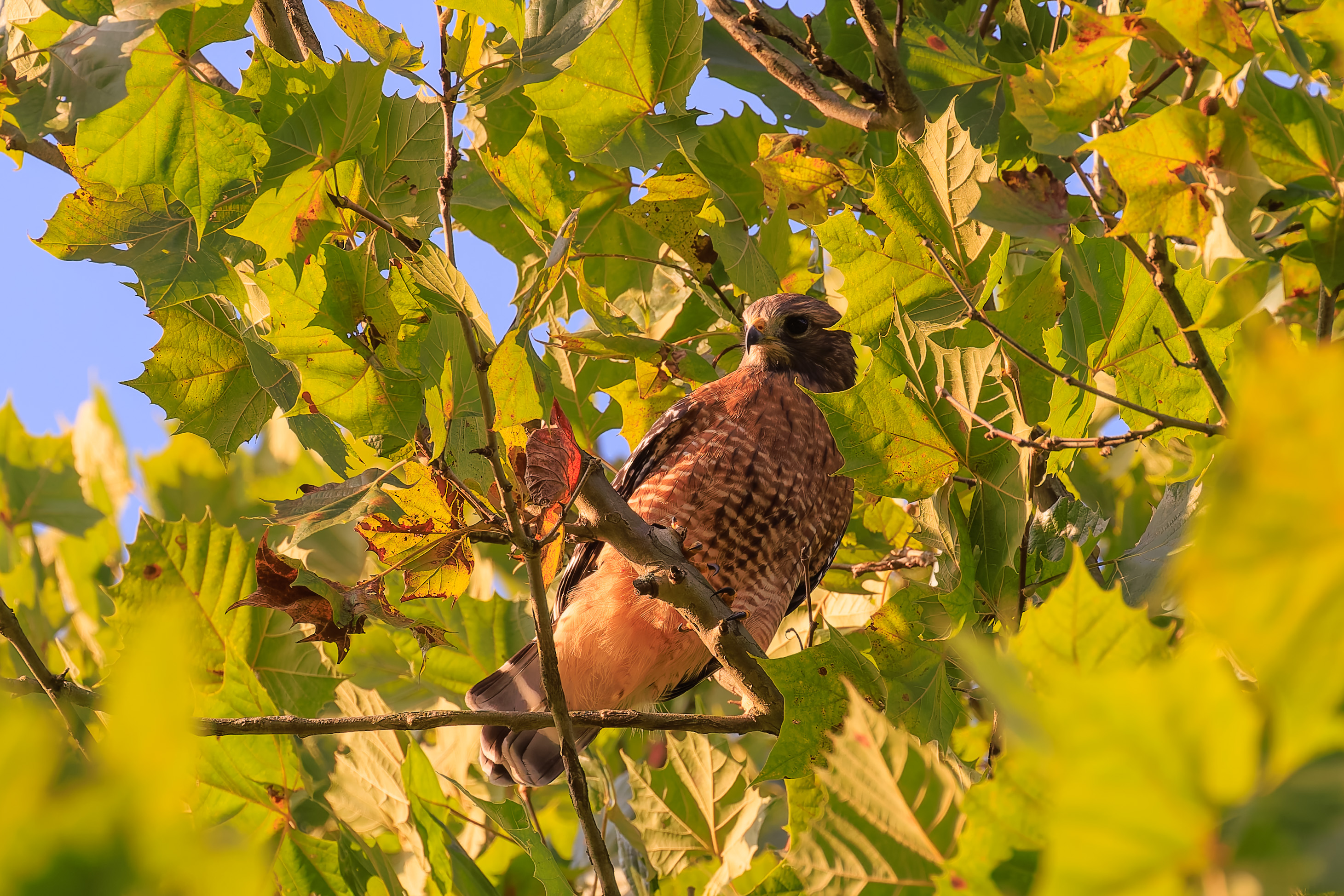
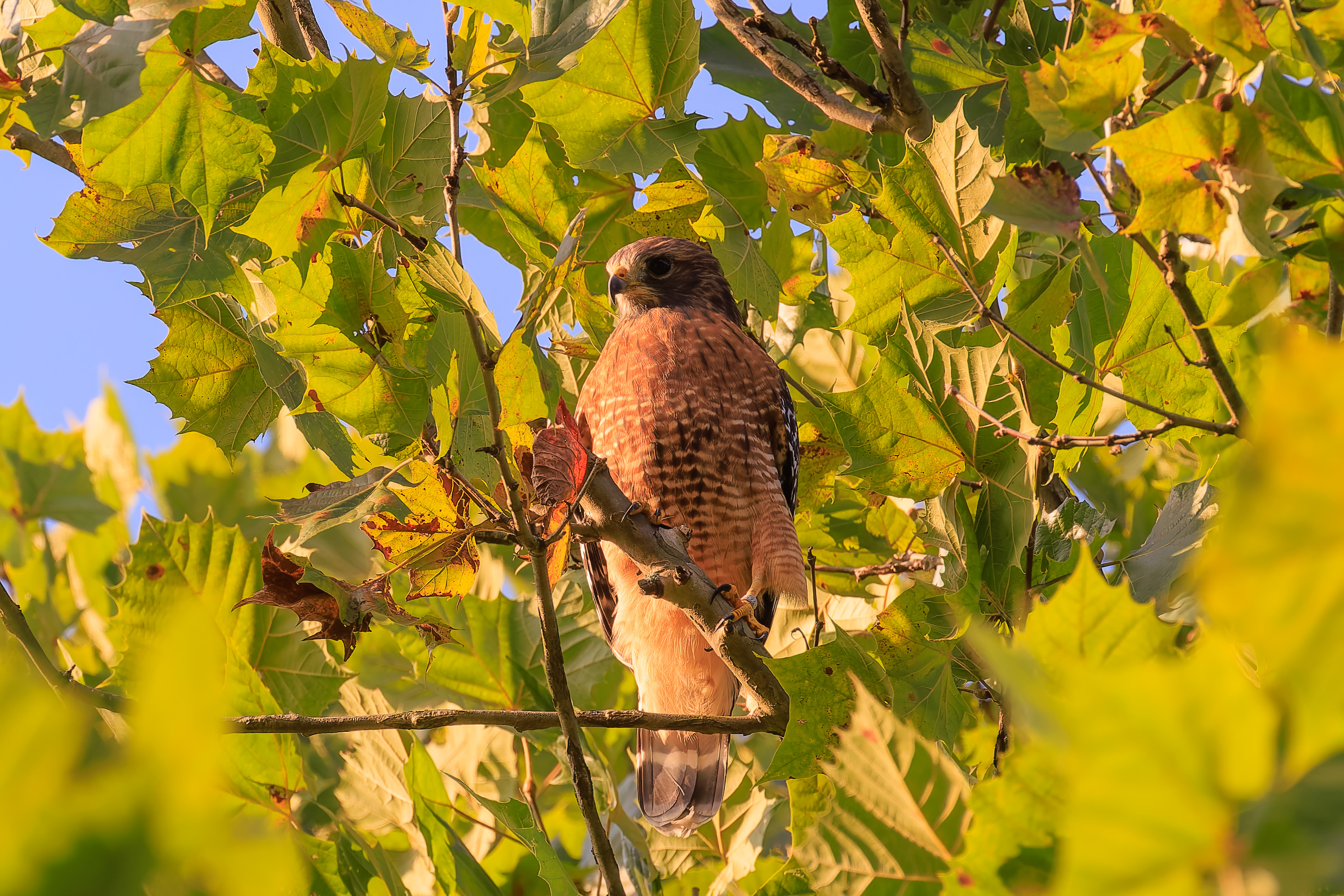
We heard the sound of hawks nearby. And indeed, we found hawks! One of the two Red-Shouldered Hawks flew off while the other remained perched on a branch. Although the hawk wasn’t directly above us, it was still at a high angle above us. We’re lucky that it wasn’t obscured by leaves!
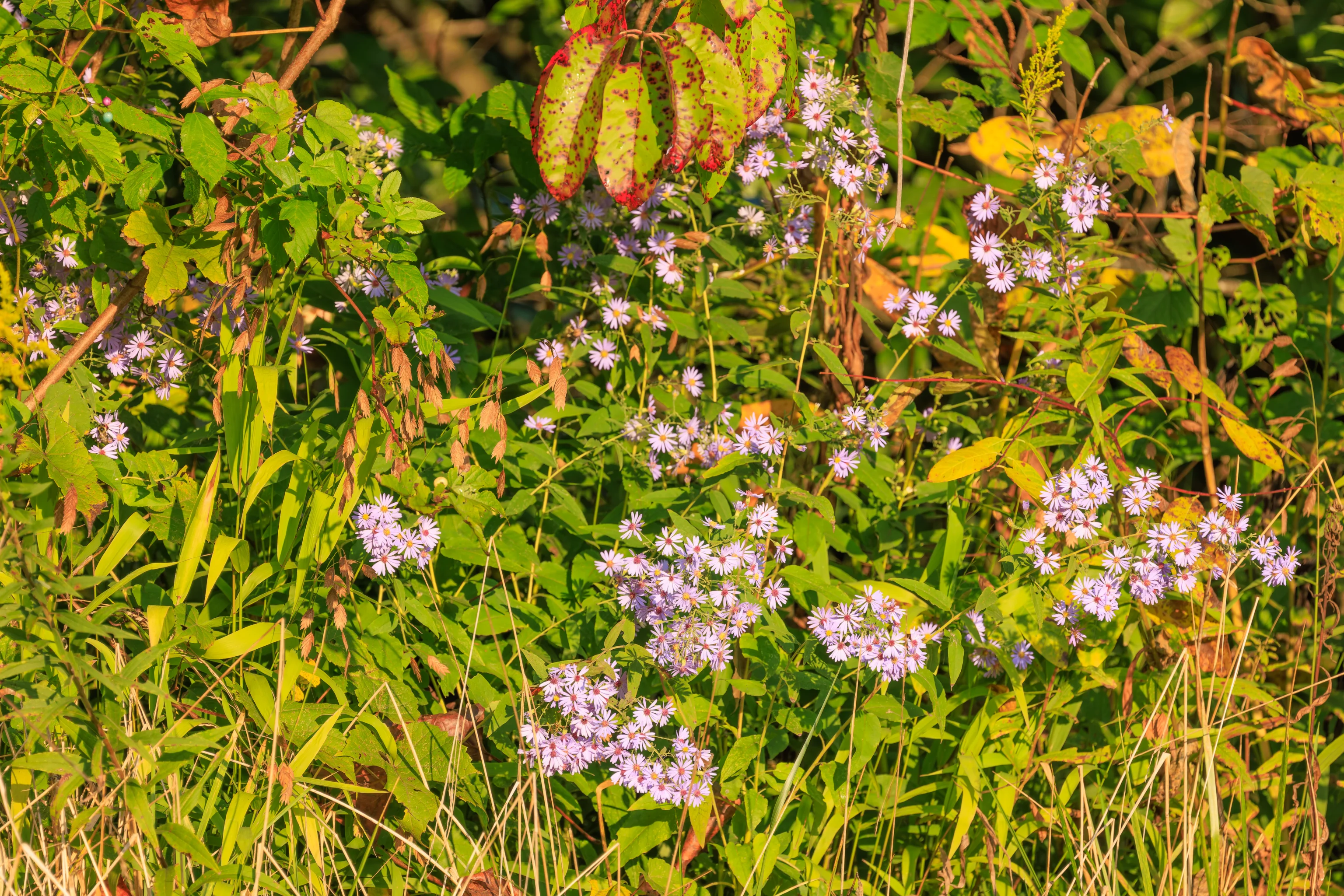
The hawk soon flew off and we continued looping around the pond. We saw these small flowers on the north side of the eastern tip of the more or less crescent shaped pond.
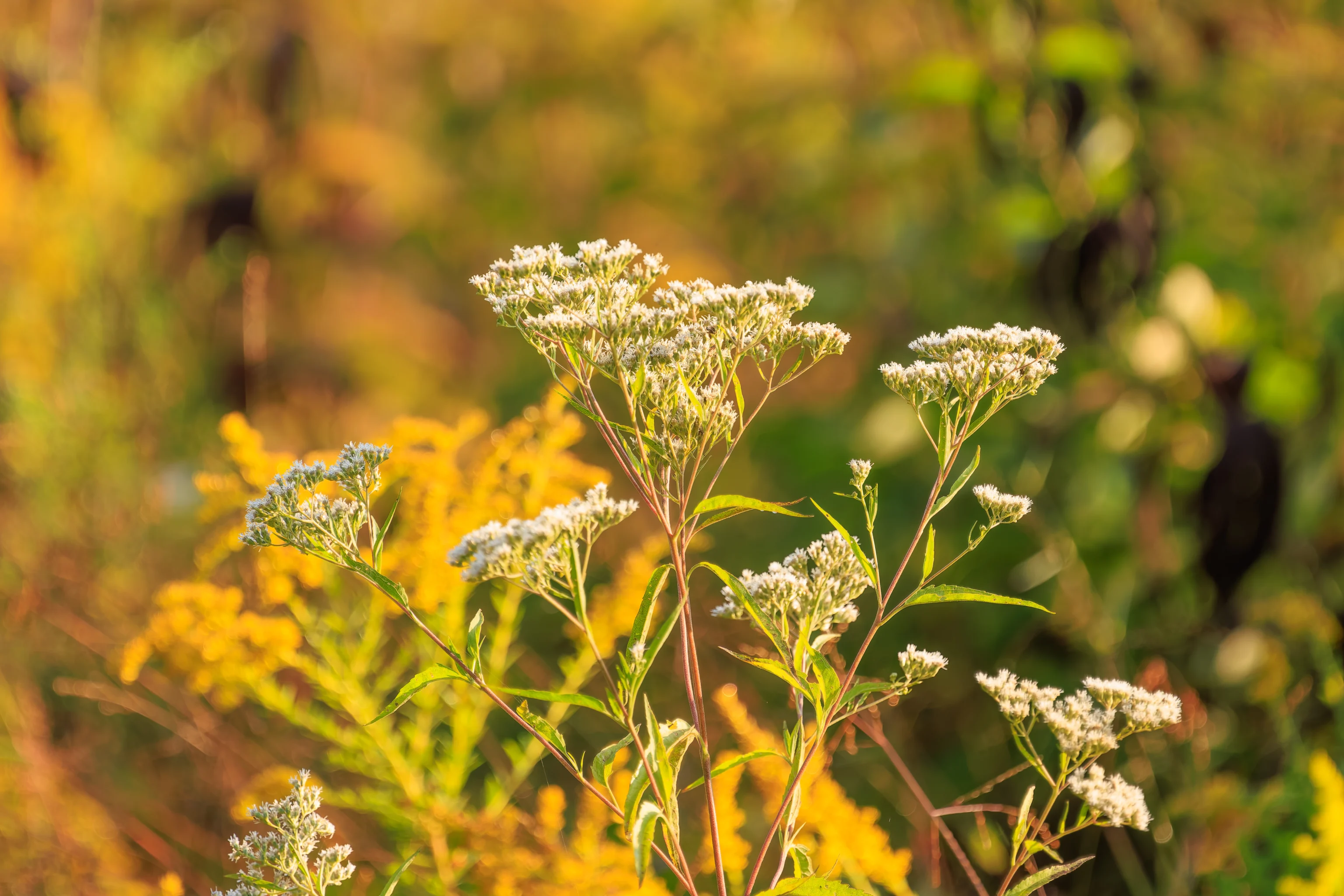
These were also nearby. Are these Eupatorium Serotinum? It appears to be the right time for them to be blooming.
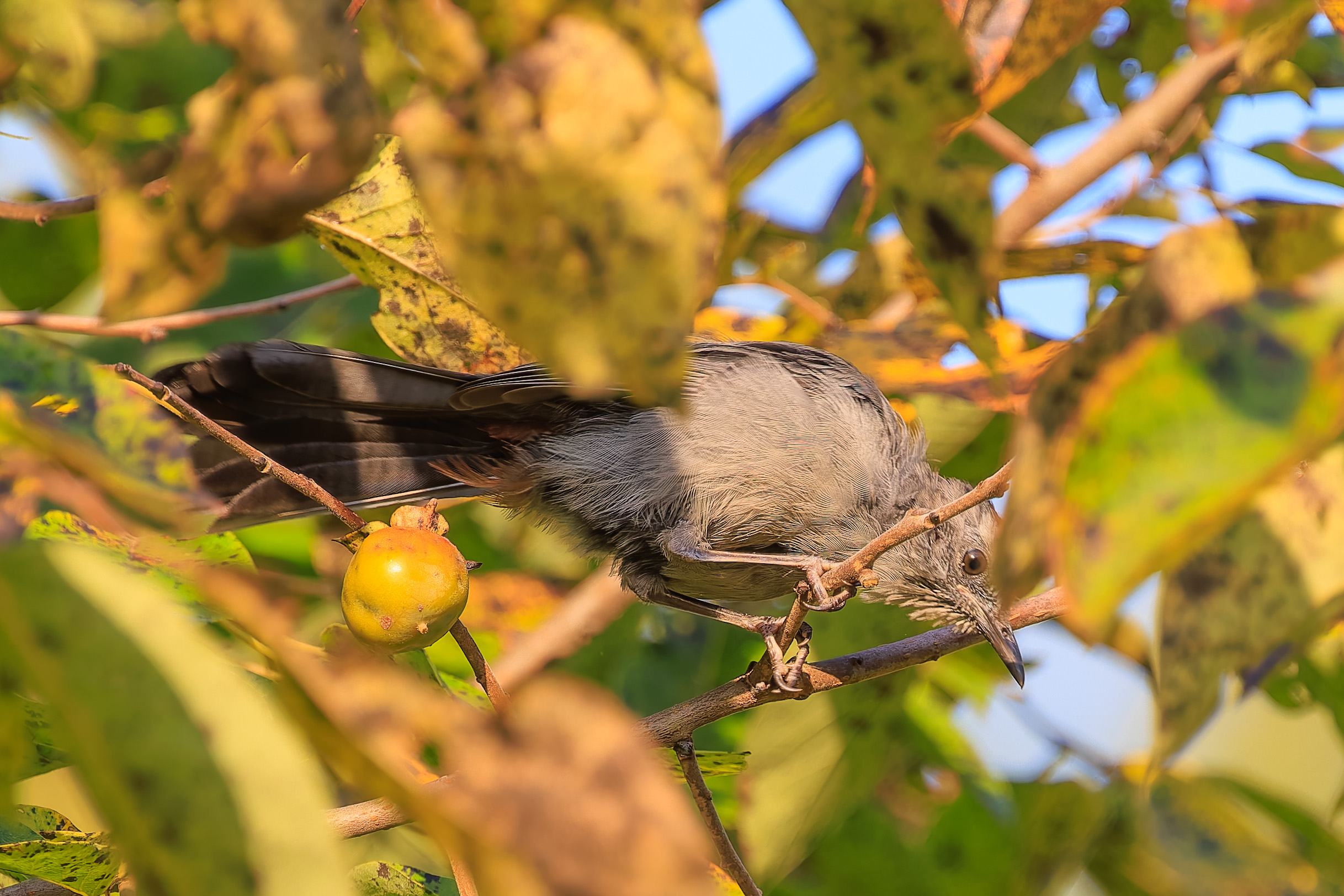
We found a Gray Catbird nearby! We are at the edge of their migratory range according to All About Birds’ range map. Looking at our sighting data on eBird, while we have seen them locally during the winter, it is pretty rare. So, its likely this one is going to leave soon.
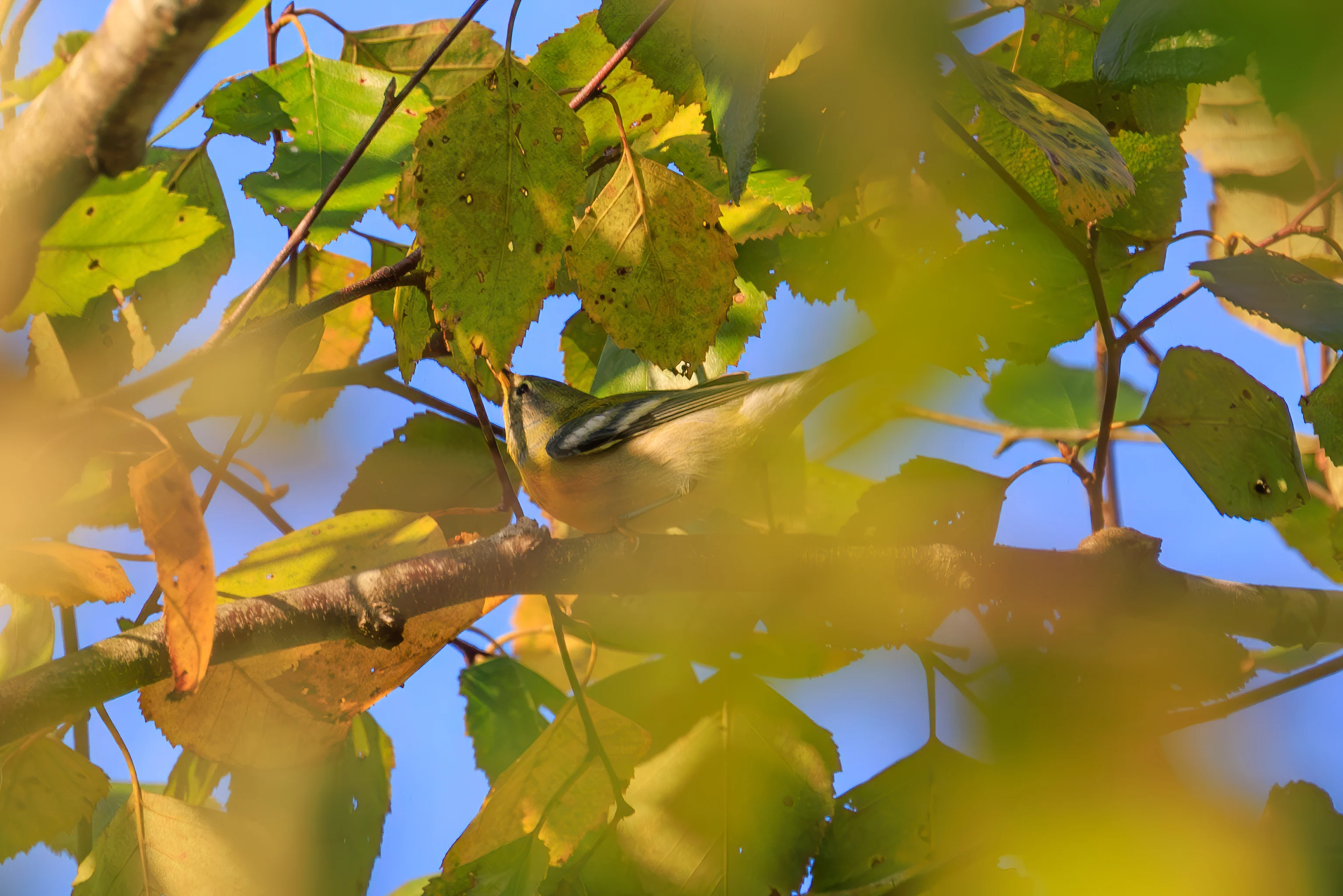
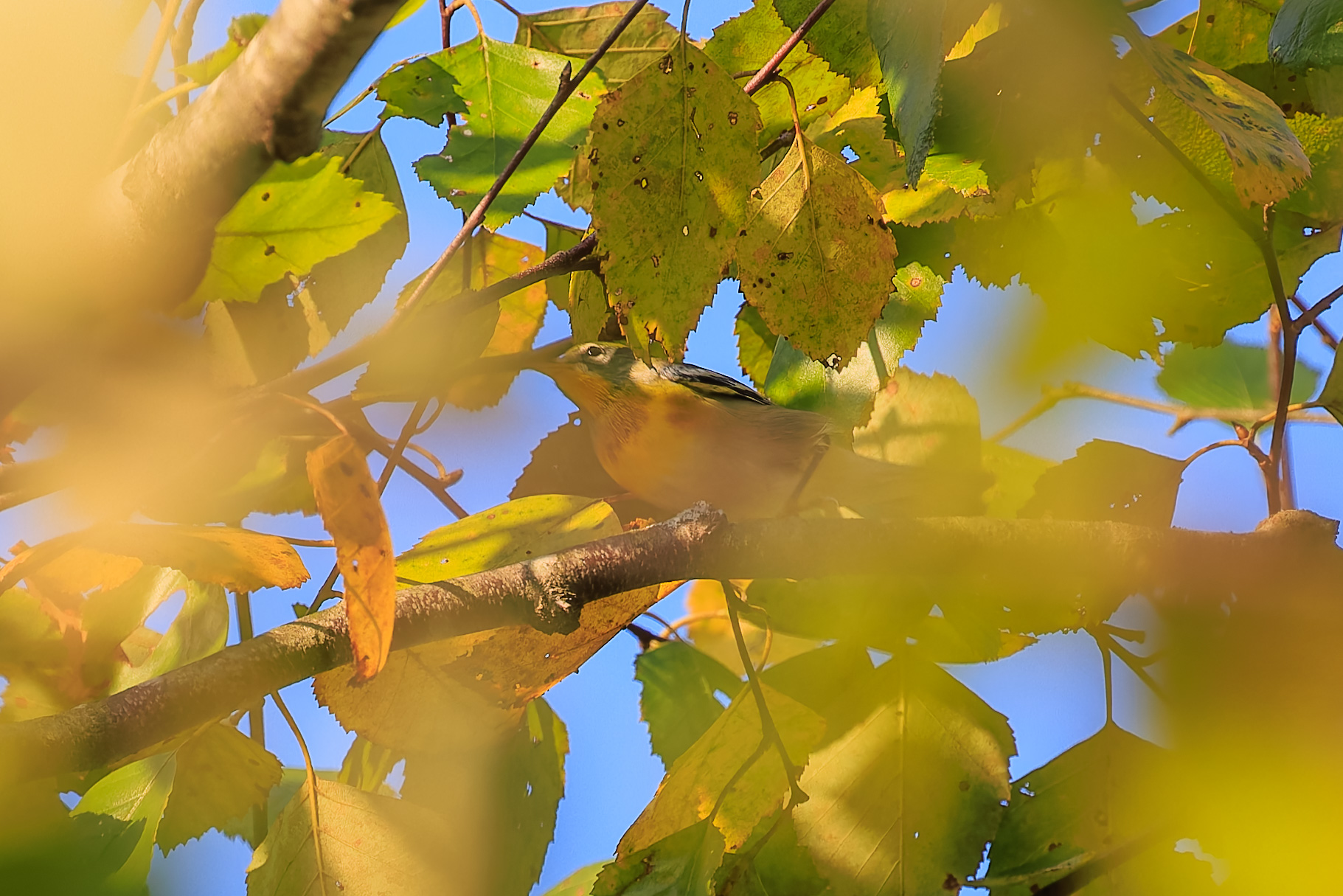
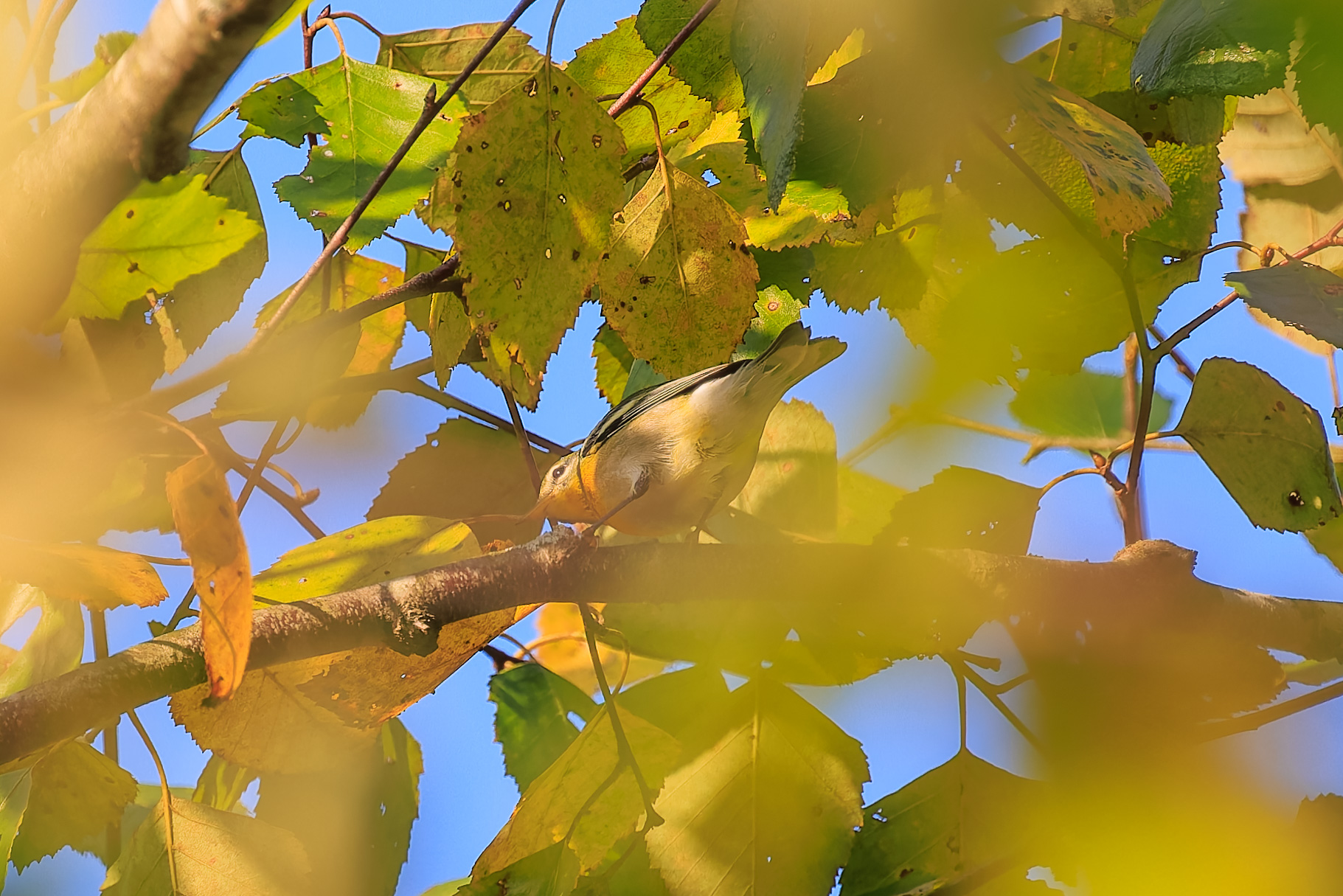
There are a few tall trees on the eastern side of Lake Gardiner where we often see many birds. Today, we saw this individual. It is warbler season right now as they are migrating through the region on their way south for the winter. This bird definitely looks like a warbler. After looking through all the warblers in the Merlin app, there wasn’t a good match. Then, I remembered the category of birds that are warblers but don’t have warbler in their name! This bird is a Northern Parula! We don’t see warblers that often and when we do, it typically is varying species.
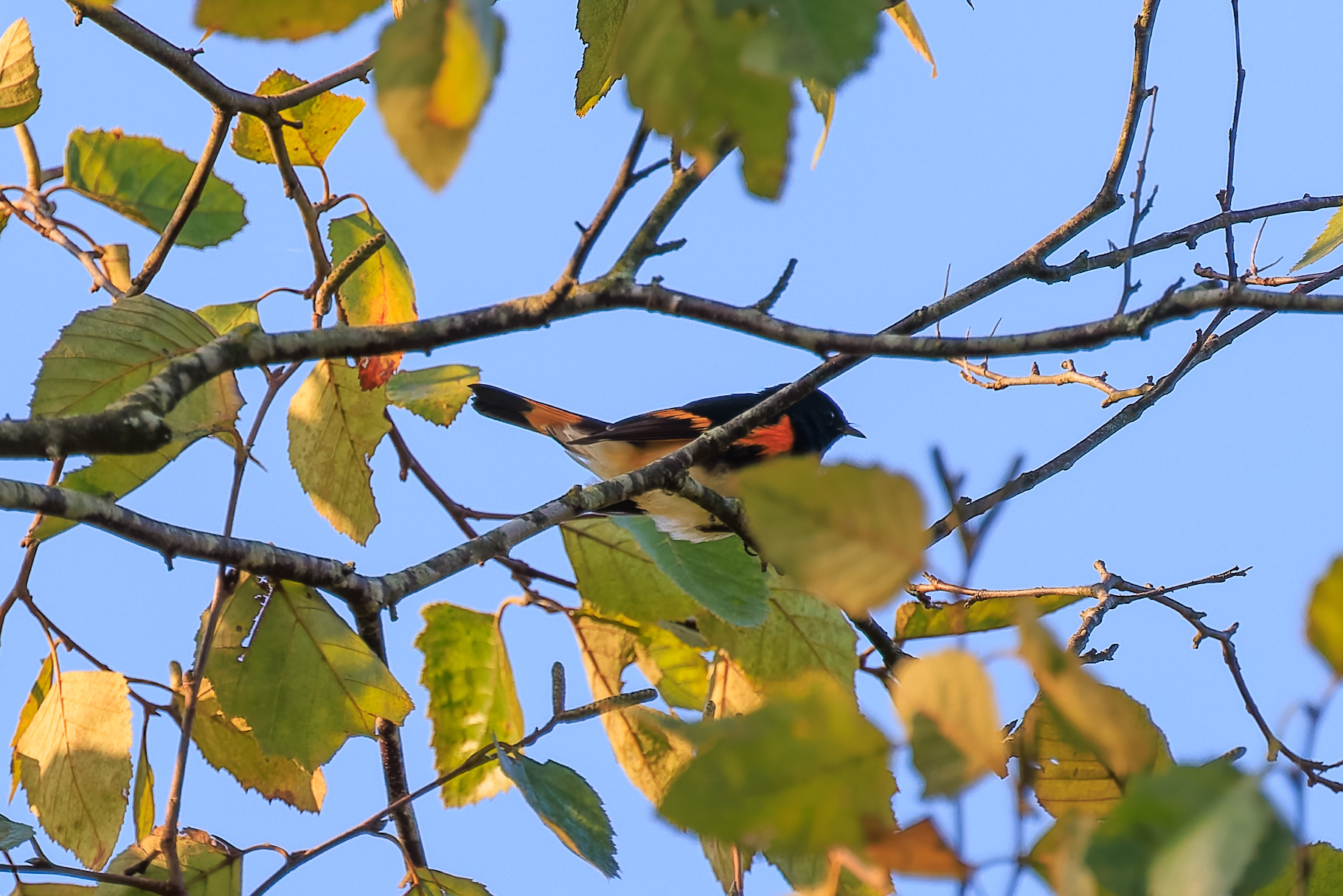
Small birds like warblers can move pretty fast so we were struggling to photograph all the birds that we could see zipping around. When we saw this one, the orange colors really stood out. Although Baltimore Orioles do seem to love these trees and build nests here, they have migrated away by now. And besides, it looks like a warbler! It turns out to be another warbler without warbler in its name, an American Redstart. This is just the 4th time we’ve spotted this species, with our last sighting in 2020.
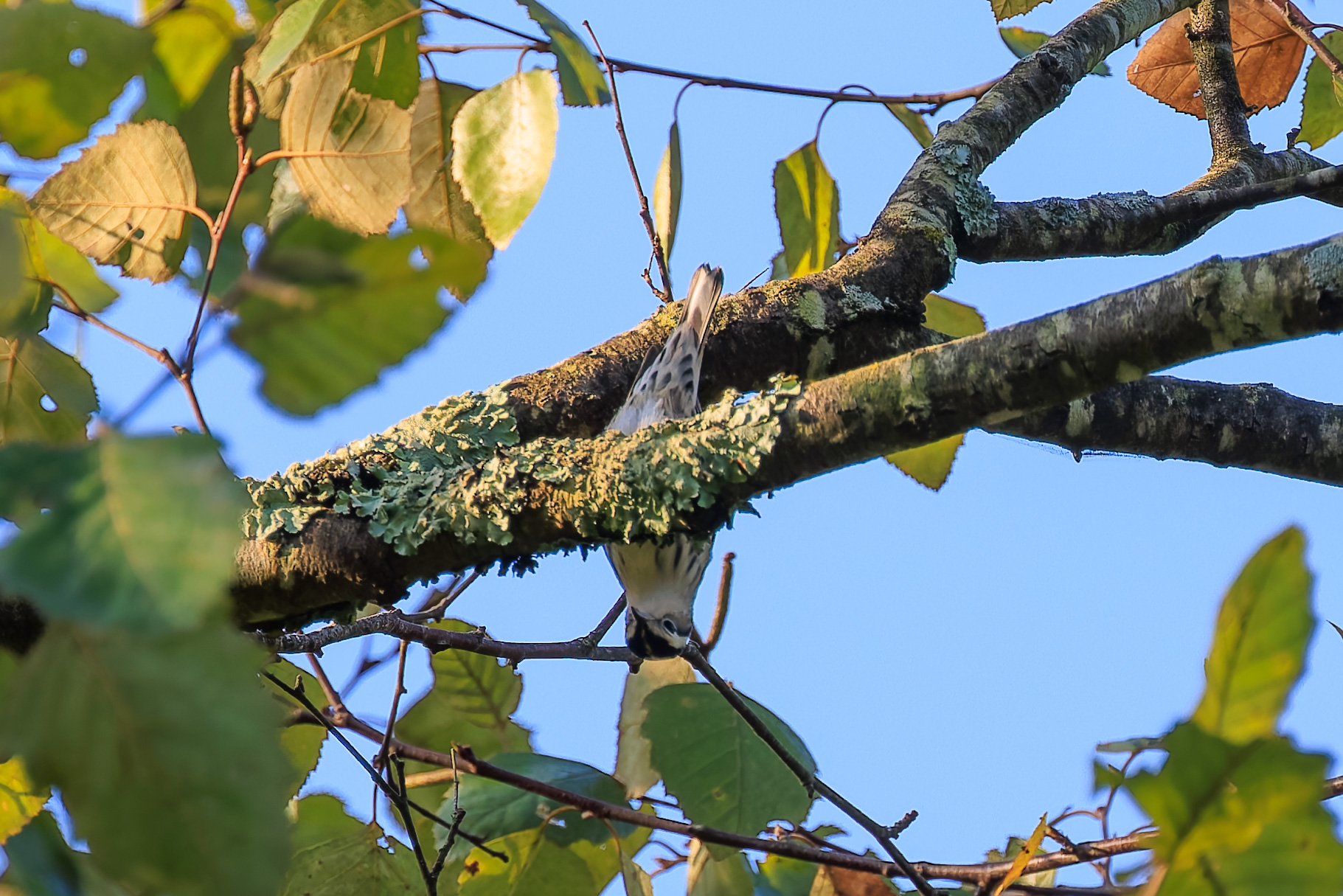
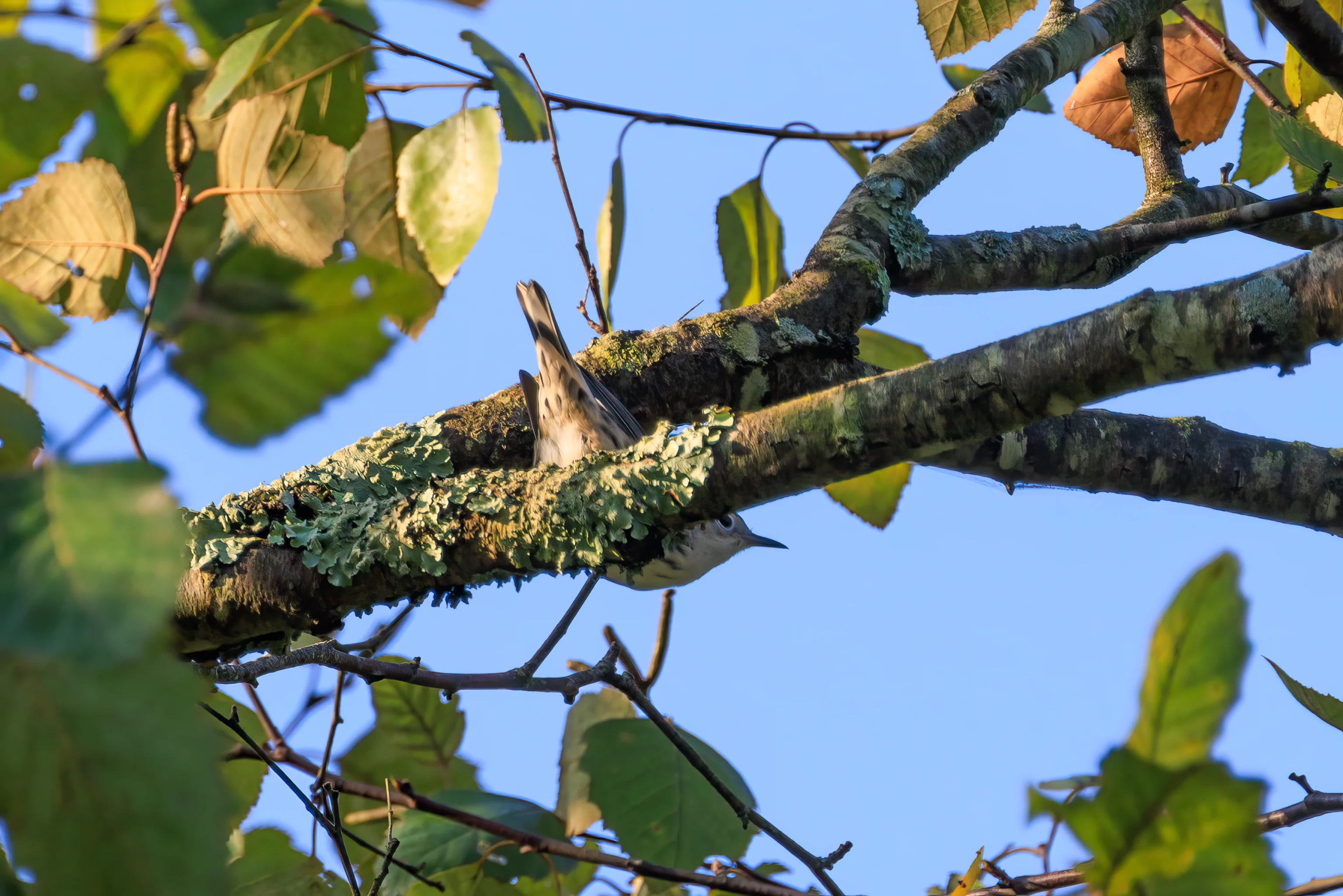
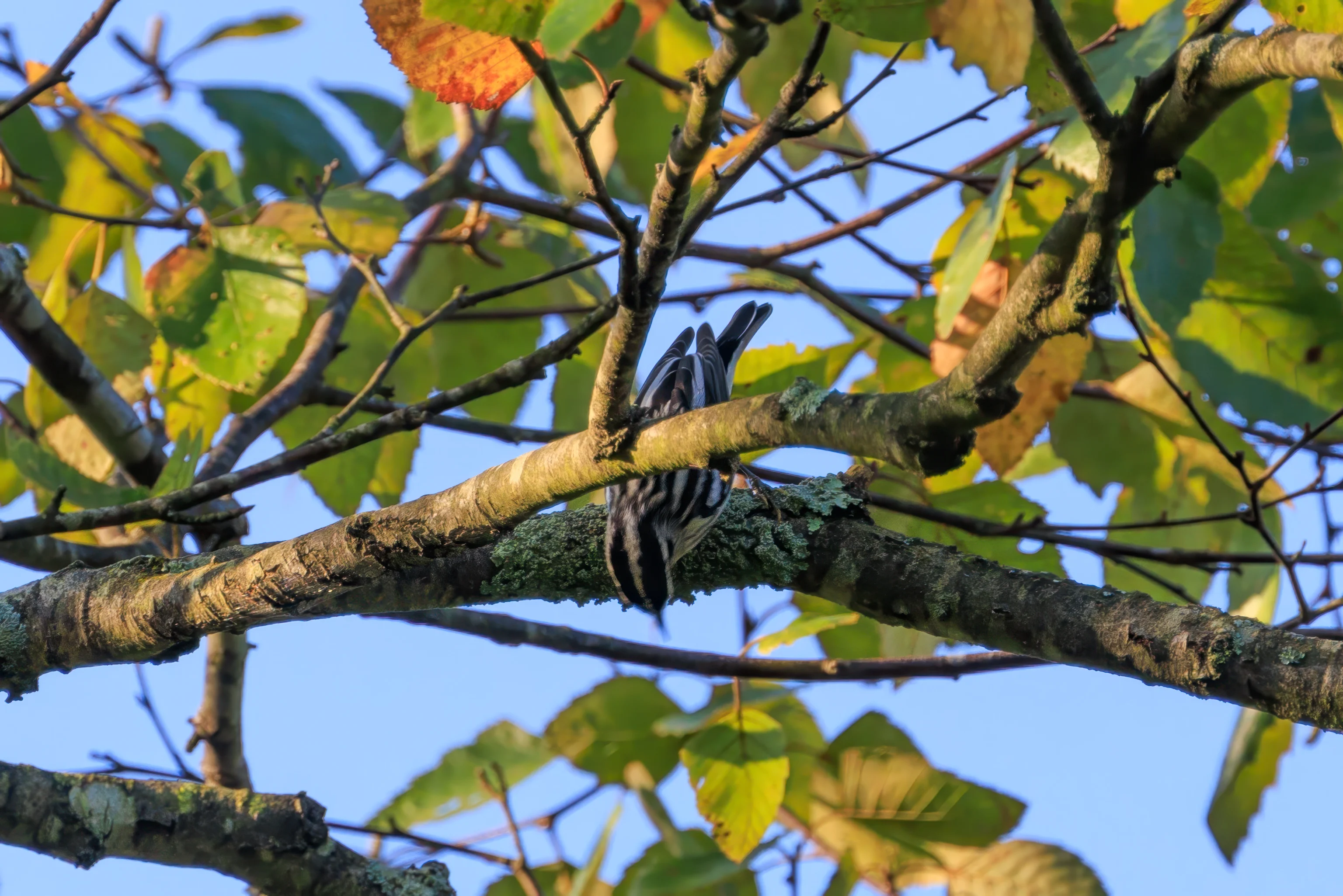
This next bird that we found is also a warbler and much easier to identify. It is a Black-and-White Warbler! The name is descriptive and obvious! Like the American Redstart, this is just the 4th time we’ve seen this species, again with our last sighting in 2020.
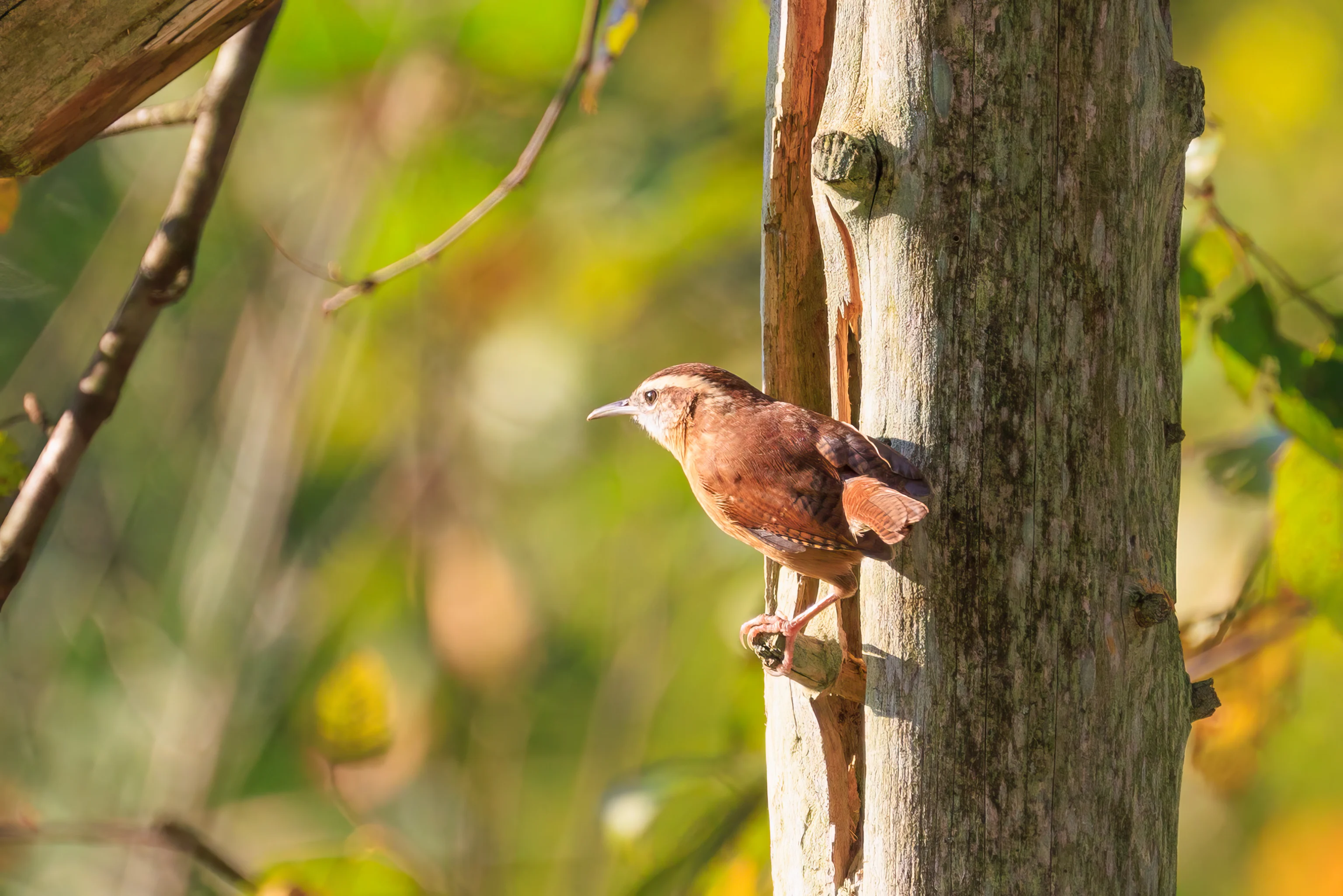
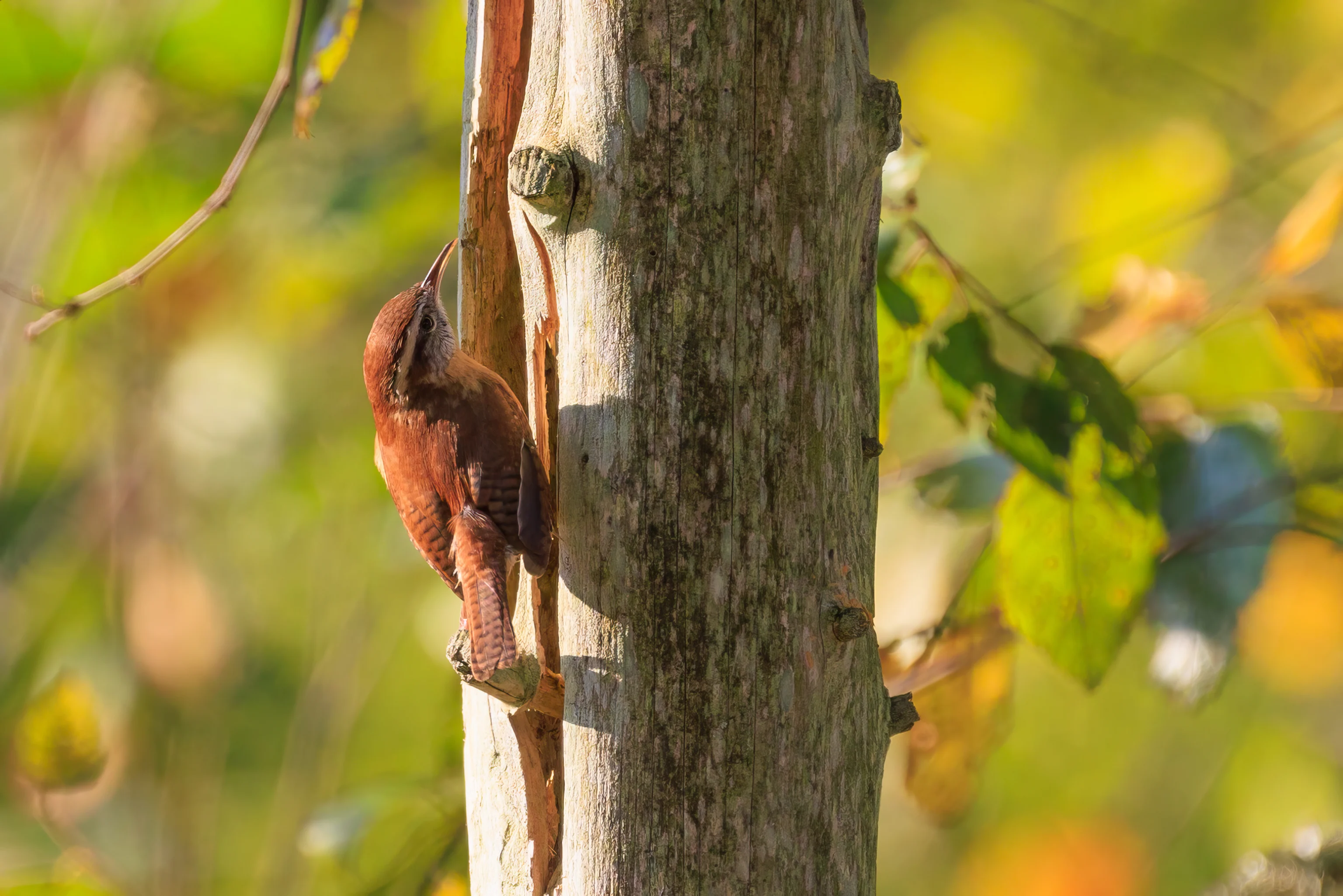
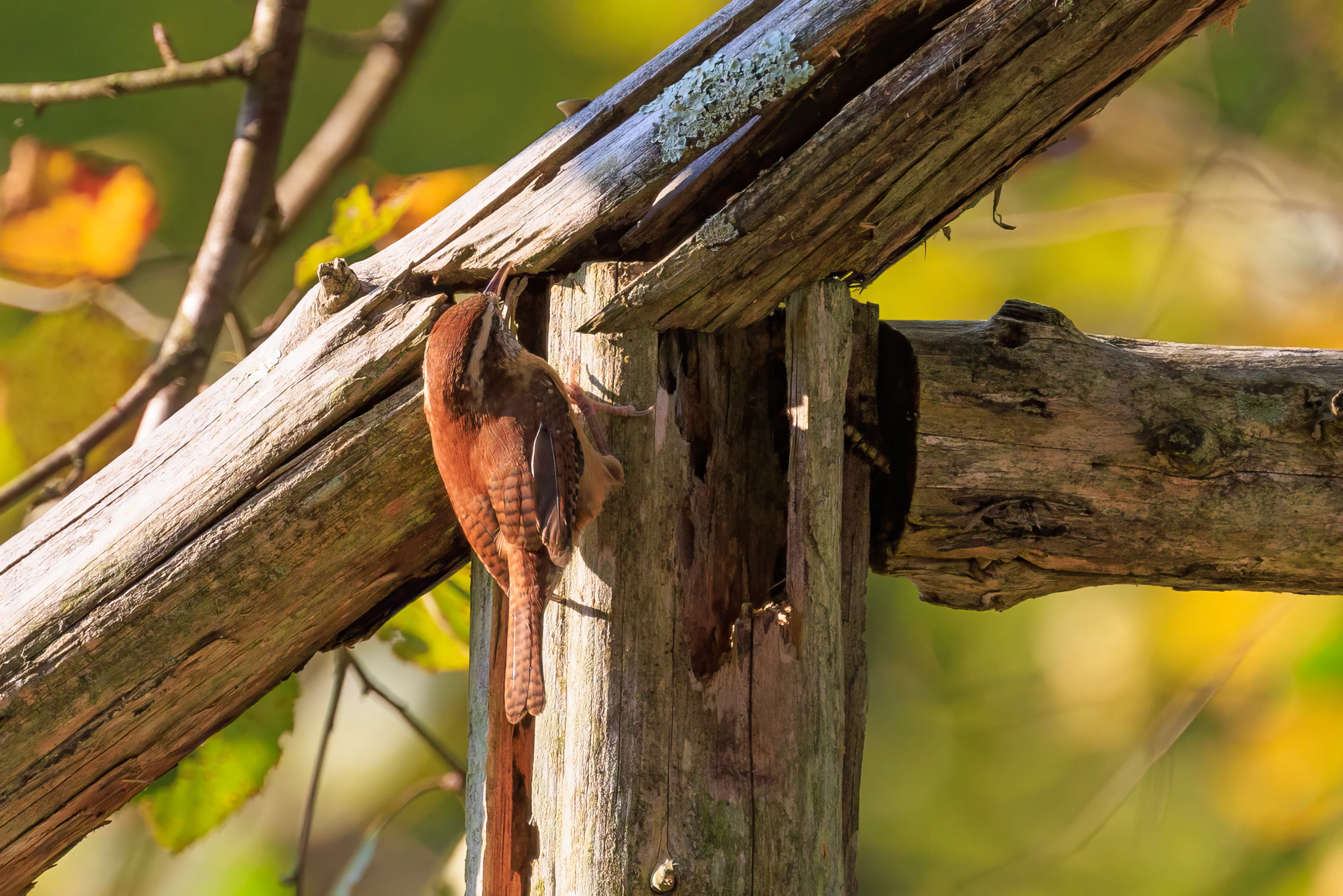
We briefly spotted this tiny but much more common bird, a Carolina Wren. It seemed to be looking for bugs to eat, advancing up the frame of a wooden structure almost like a woodpecker.
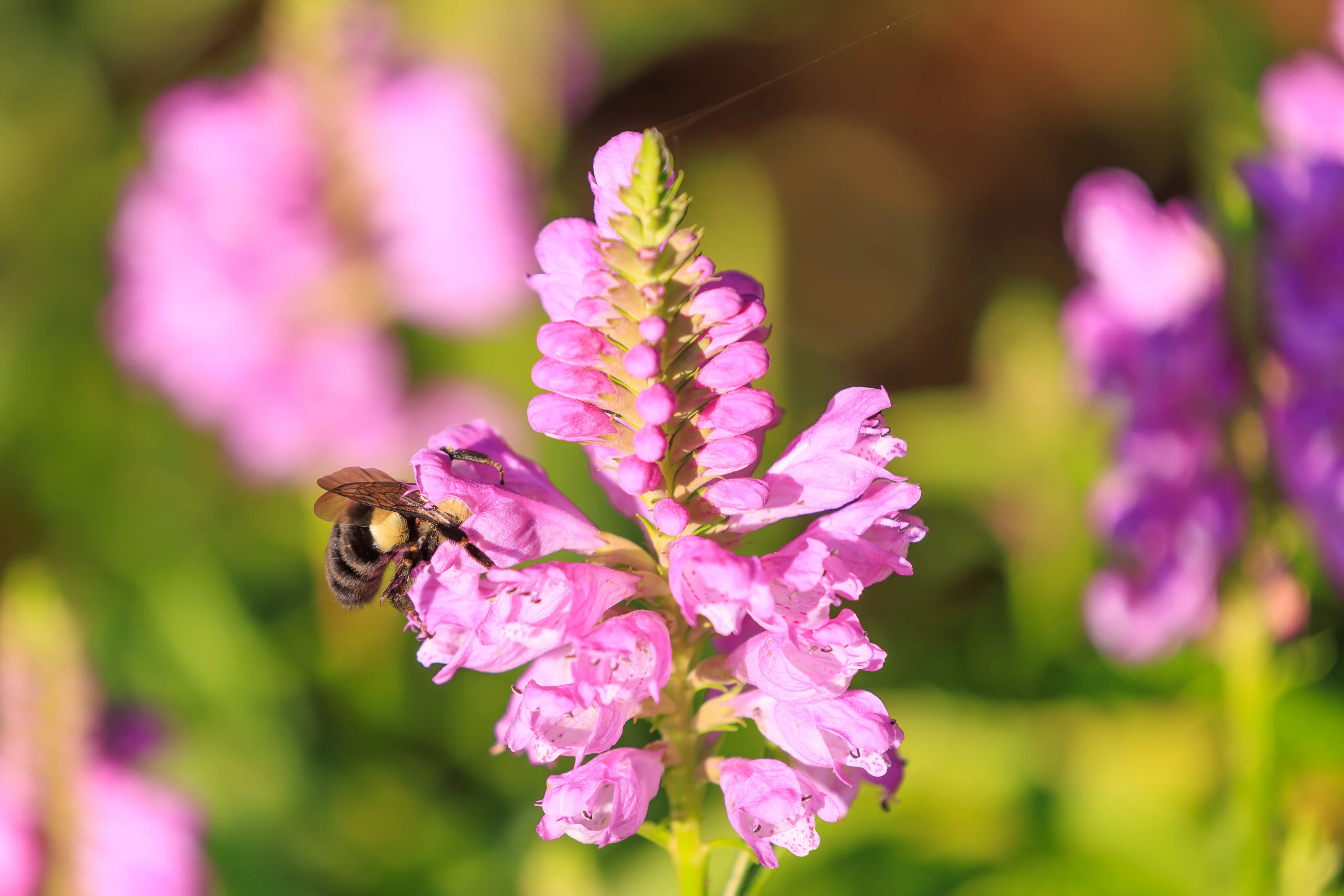
We spotted a much smaller flying creature, a bee, enjoying the flowers. It stuck its head into a flower to find nectar.
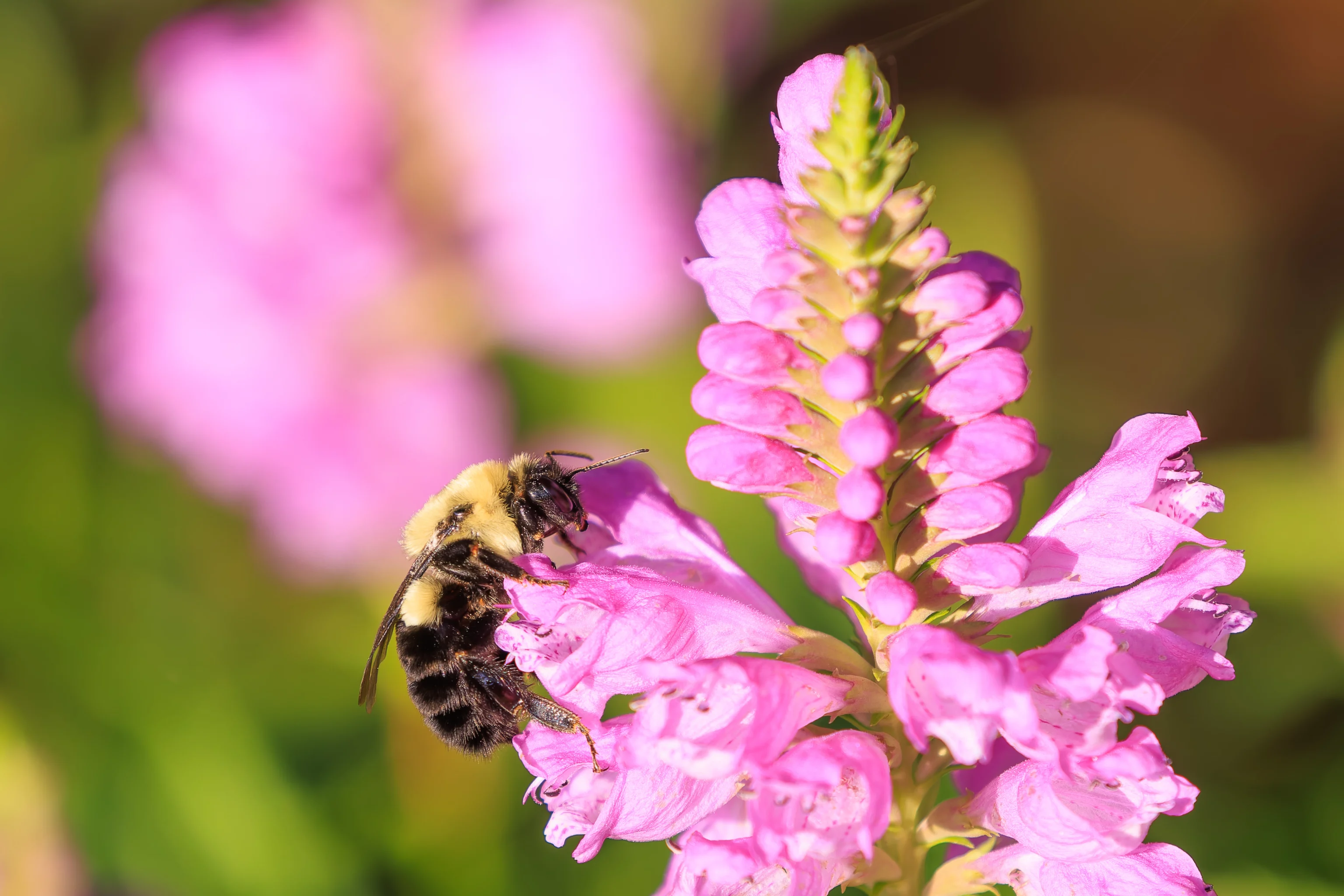
The same bee, probably looking for more nectar.
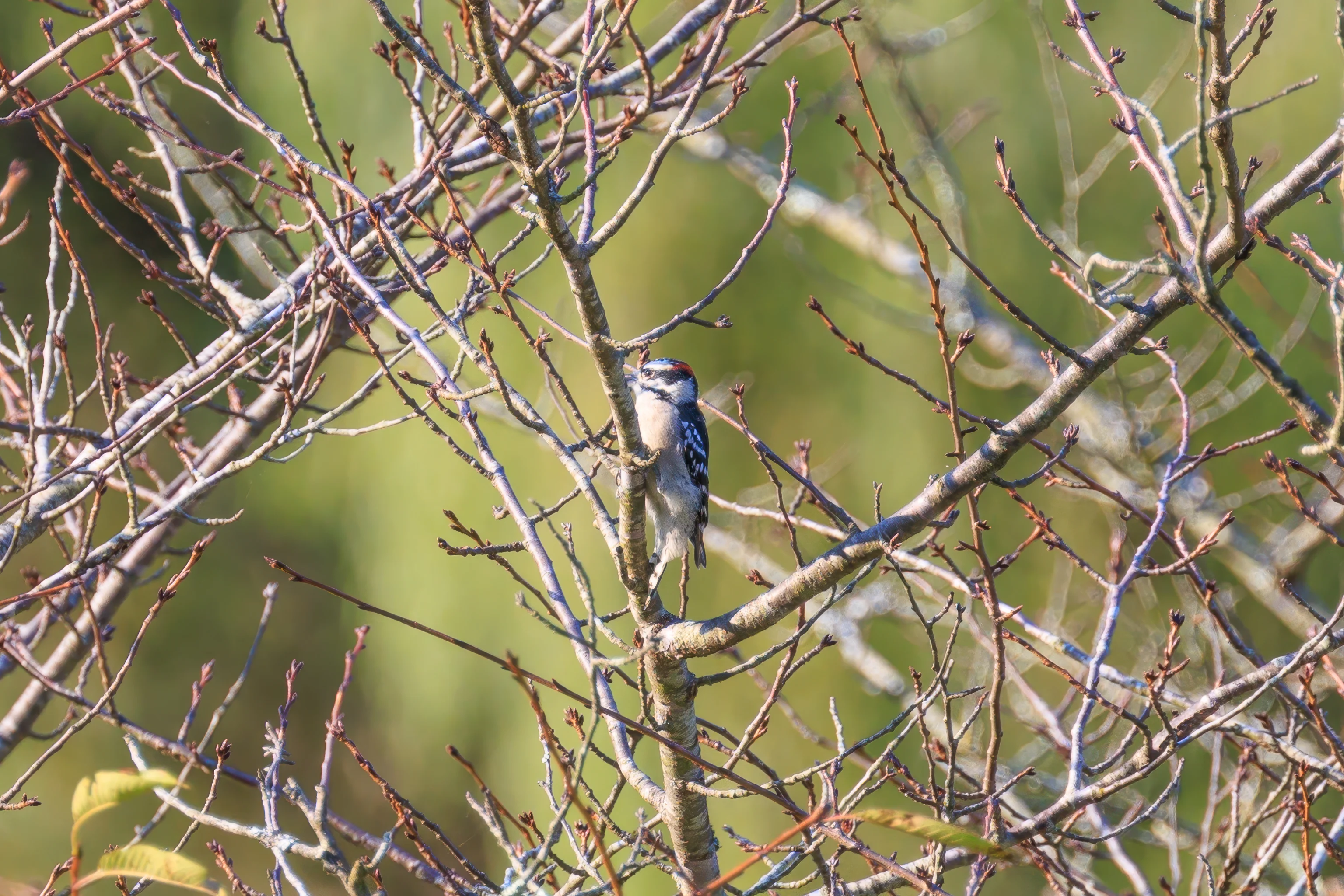
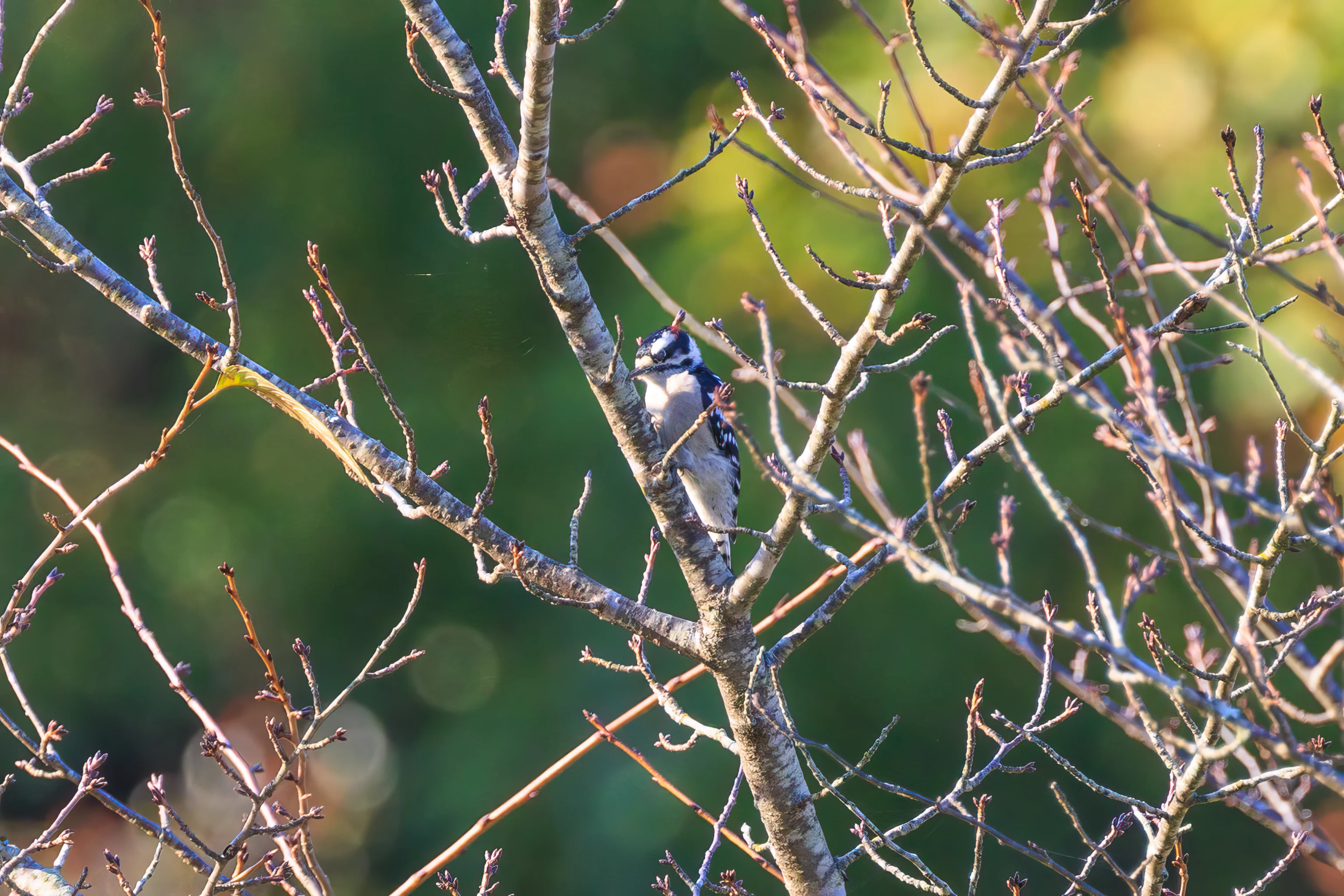
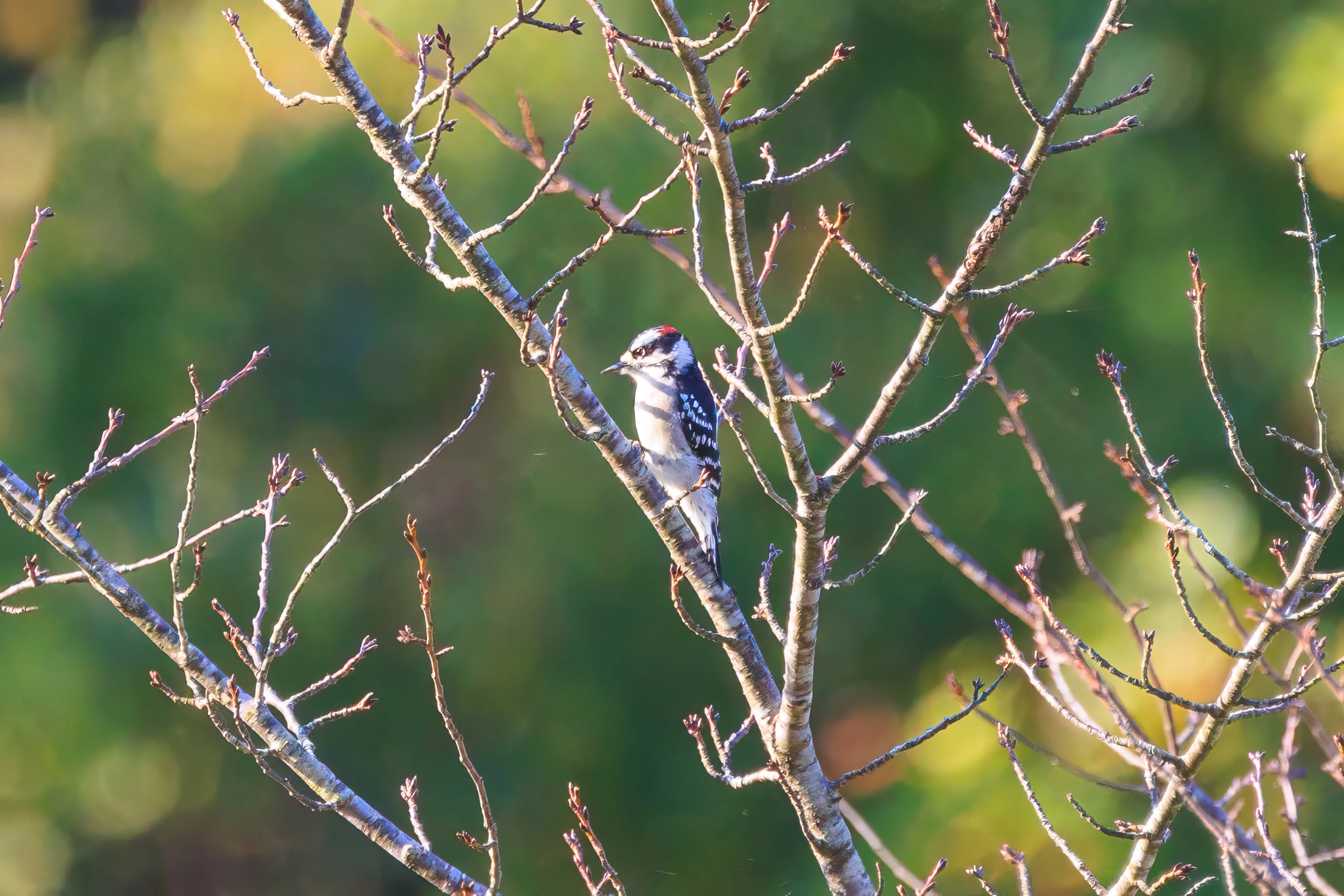
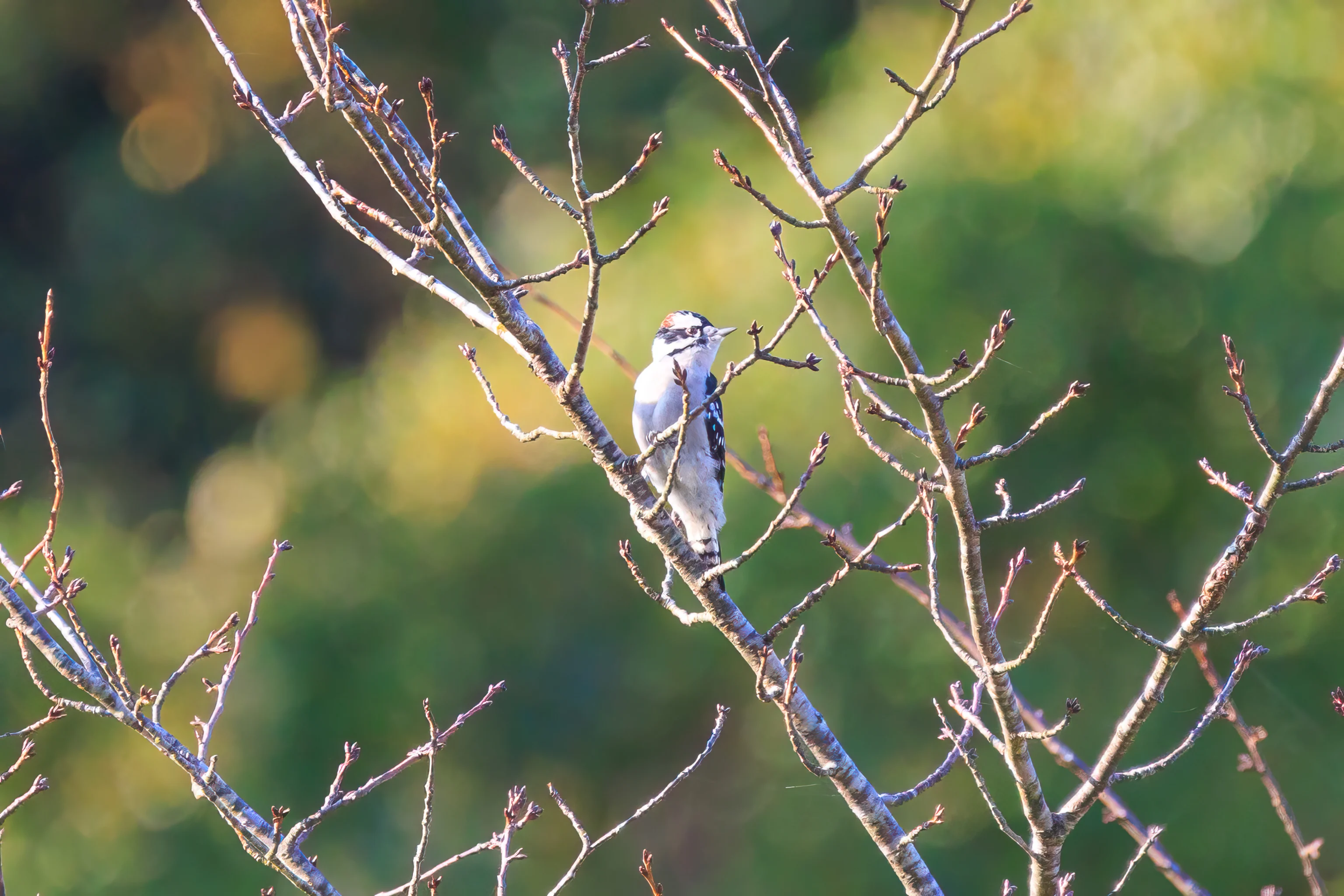
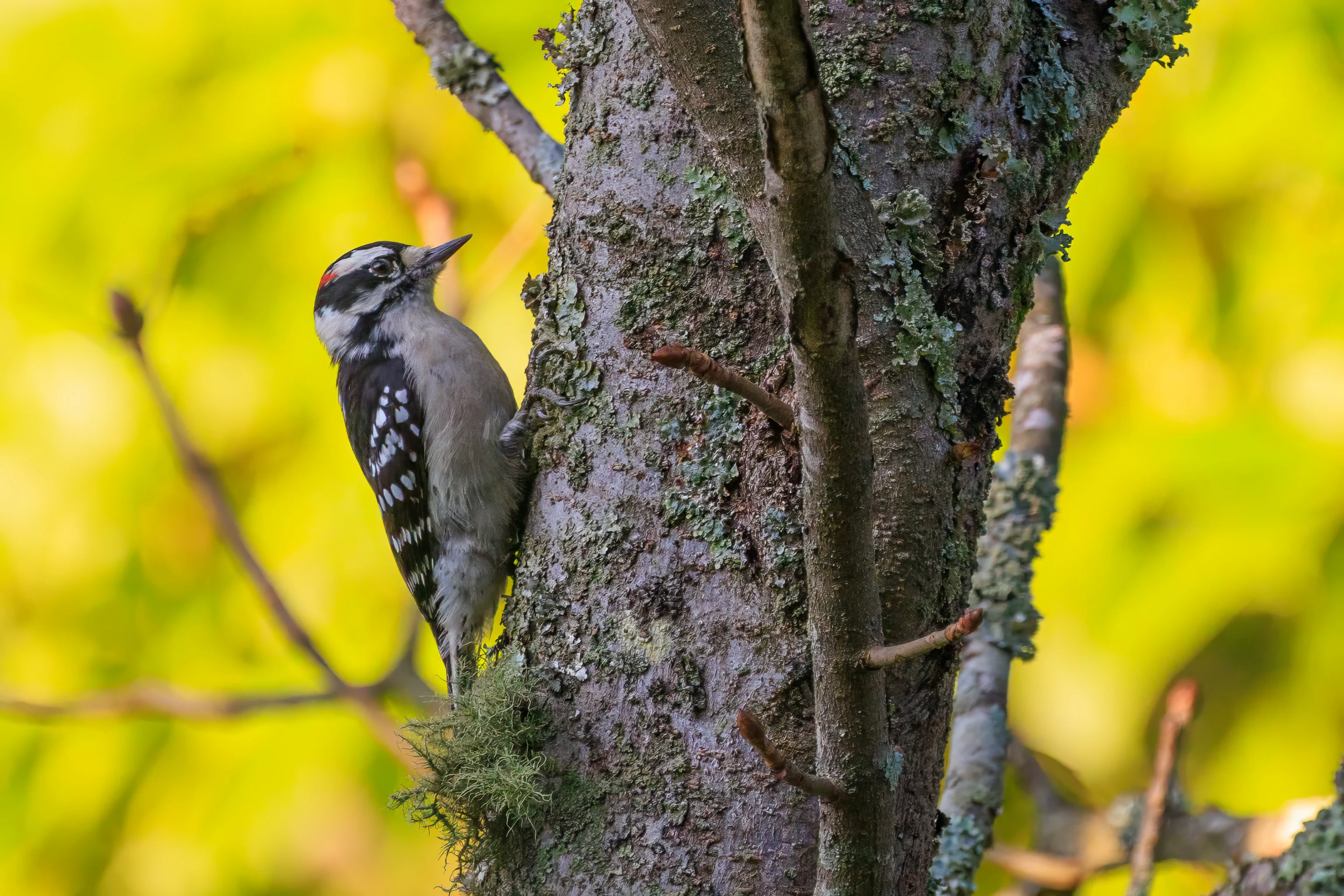
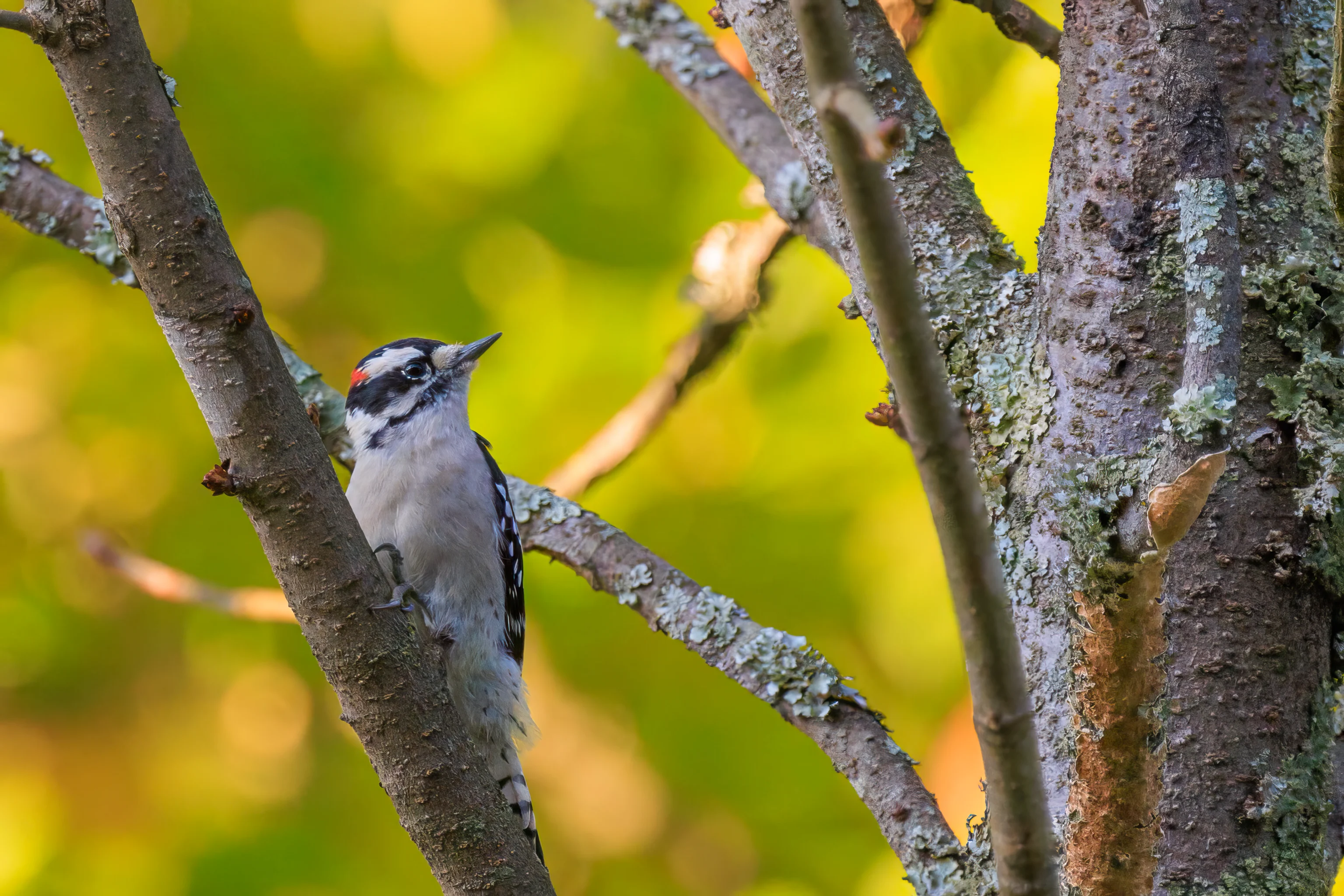
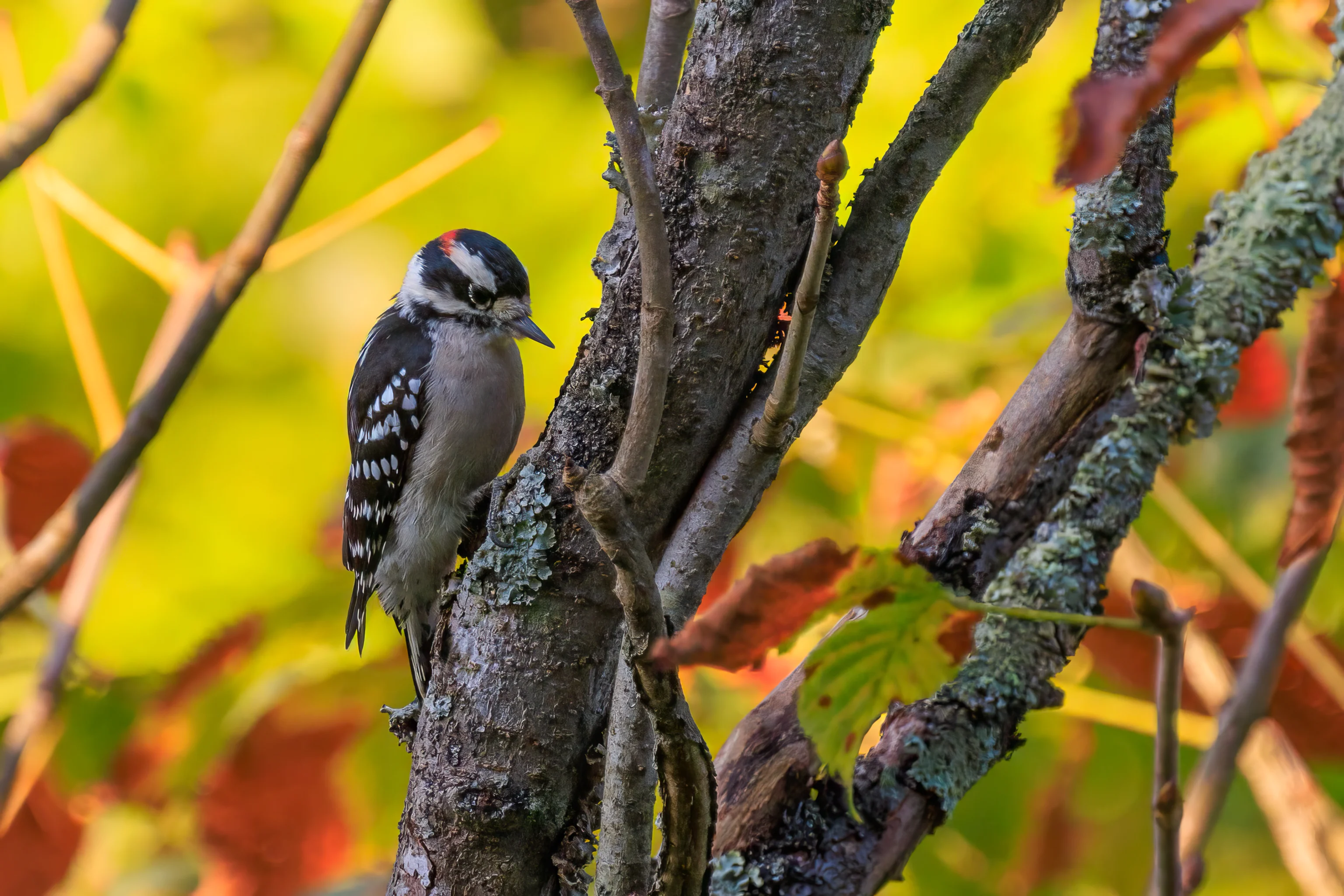
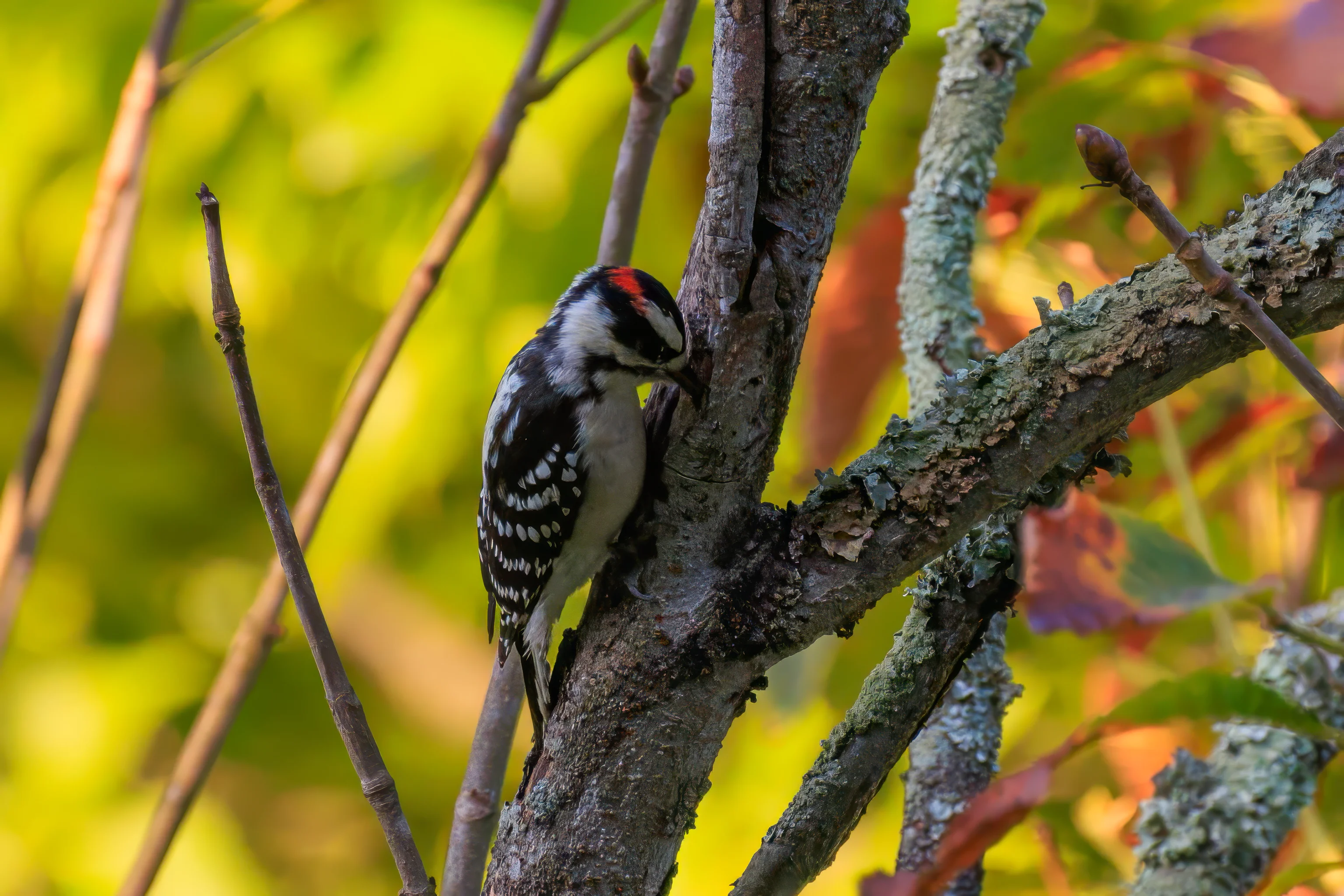
As we started walking back to the entrance, we spotted a Downy Woodpecker. We watched him for awhile as it looked for bugs.
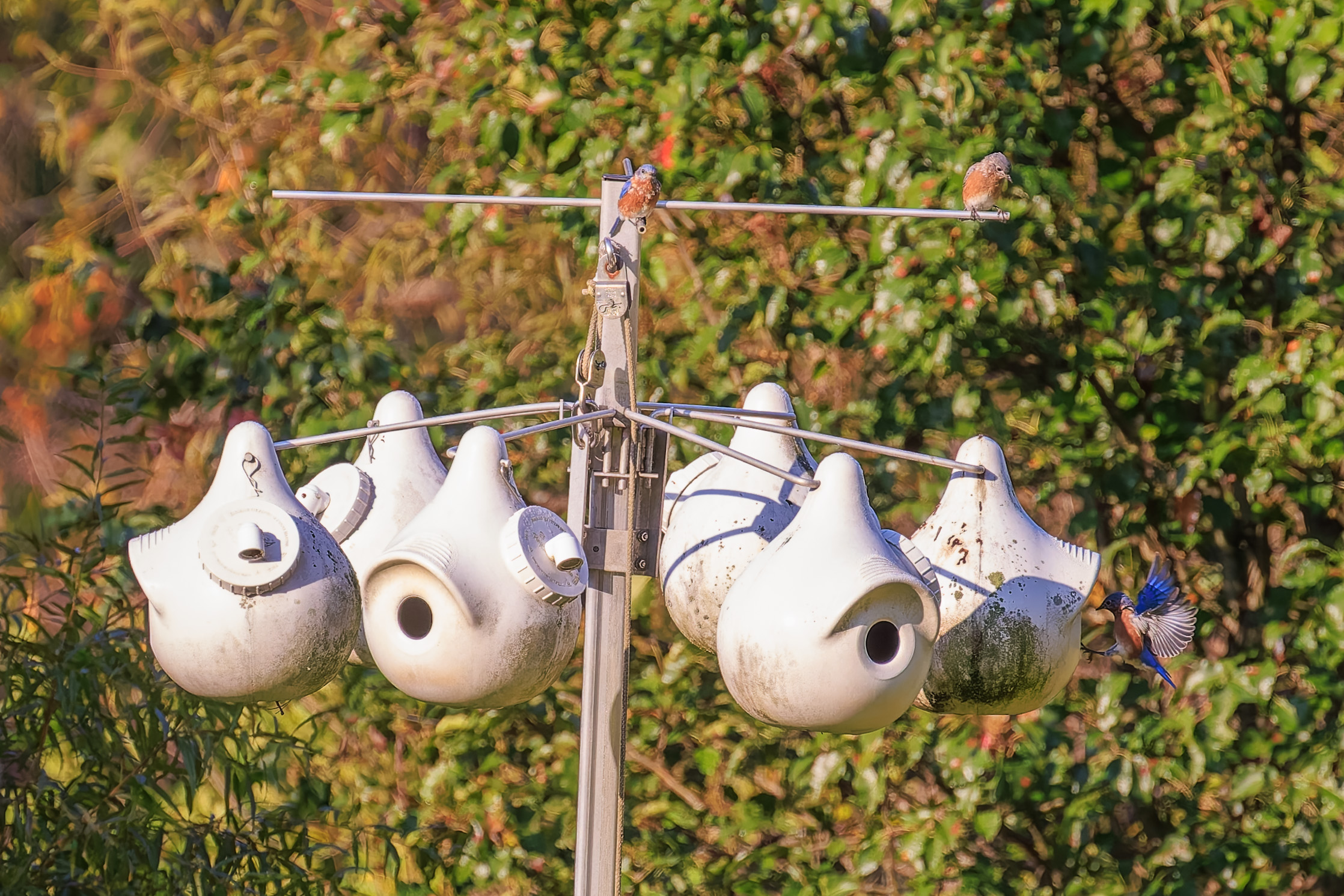
As we continued, we noticed Eastern Bluebirds on the Purple Martin nest boxes. One of them, a male based on its deep blue color, seemed to be trying to get into one of the boxes. He kind of hovered for a bit while trying to grab onto the edge of the entrance but the hole is probably too small for him to safely enter.
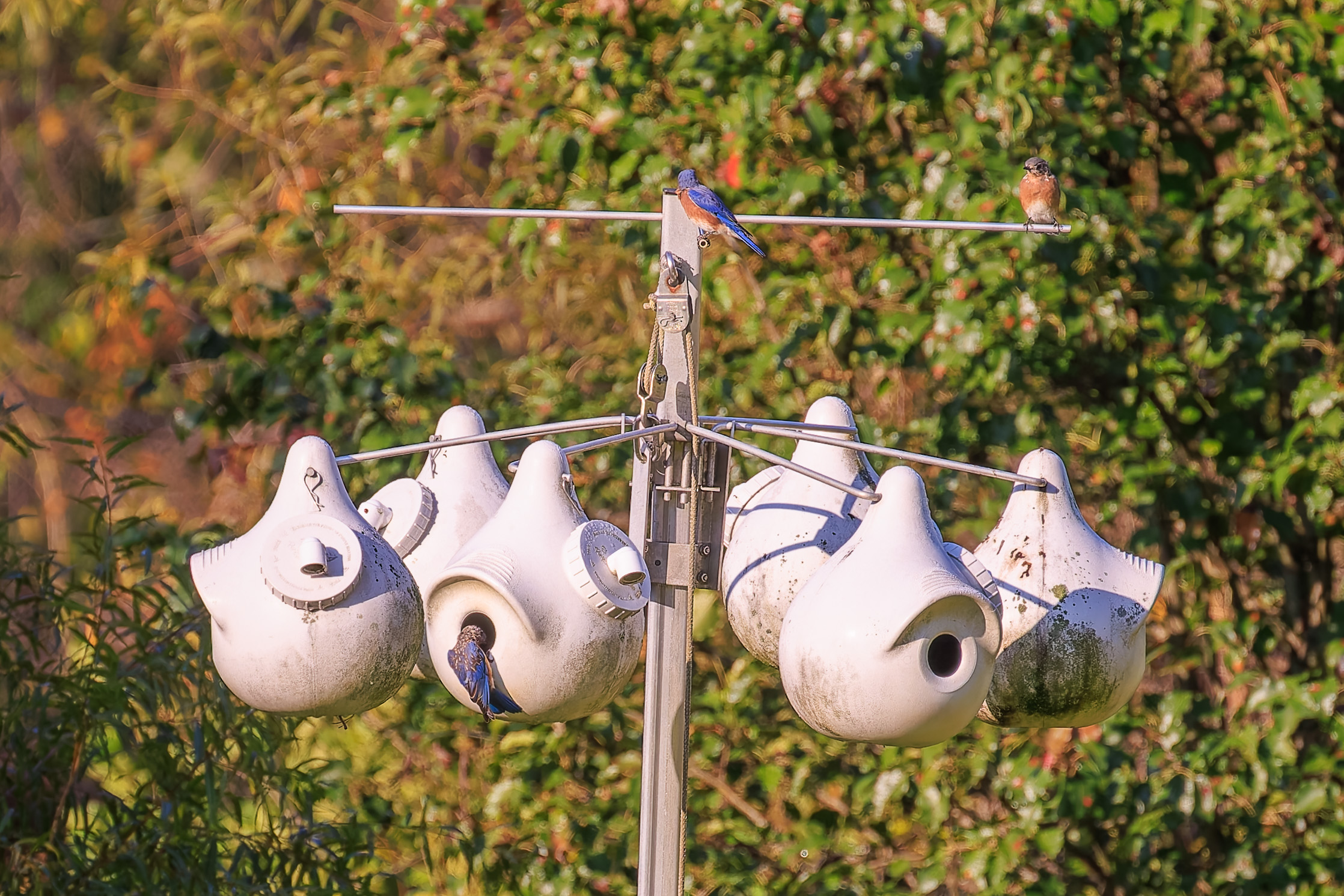
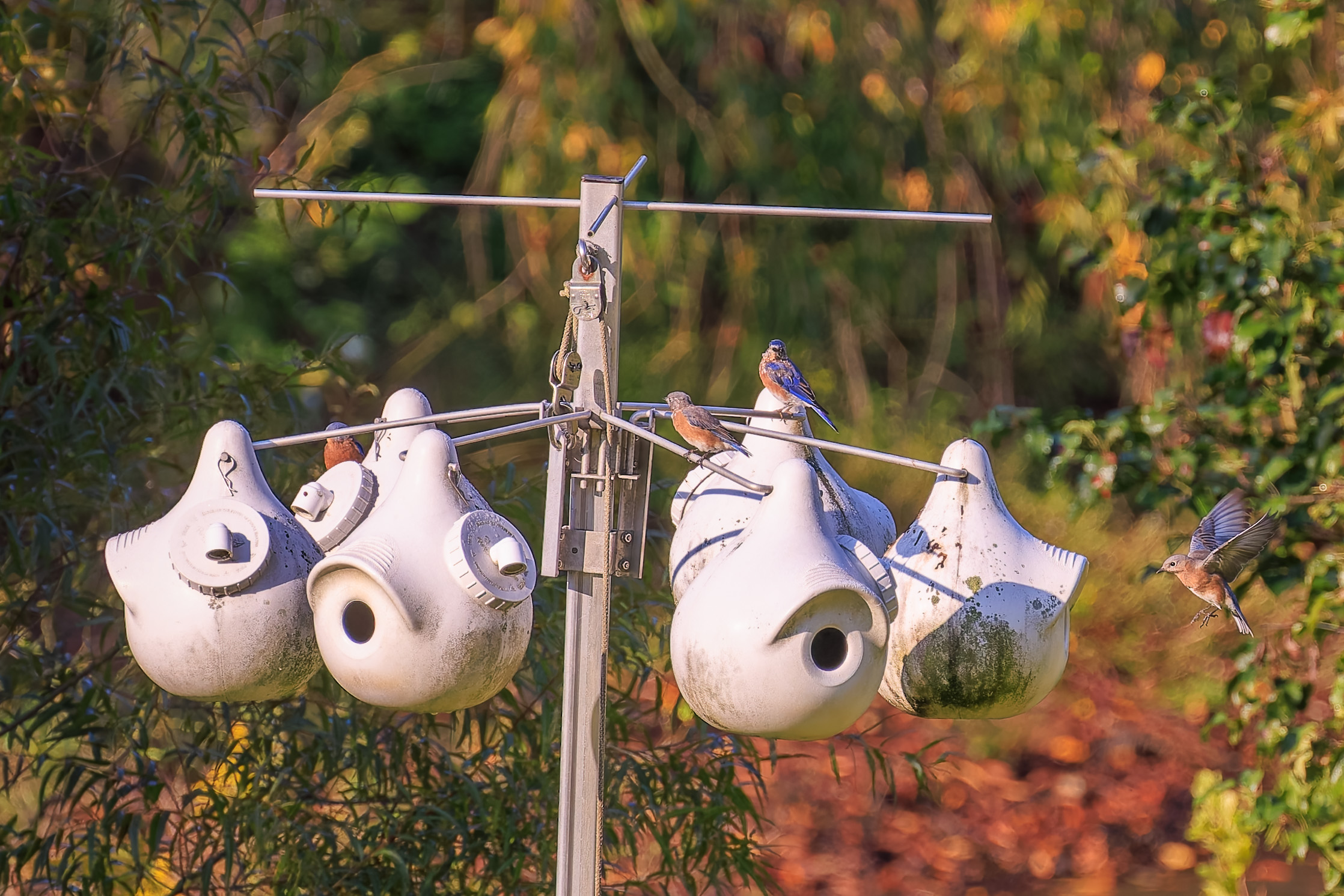
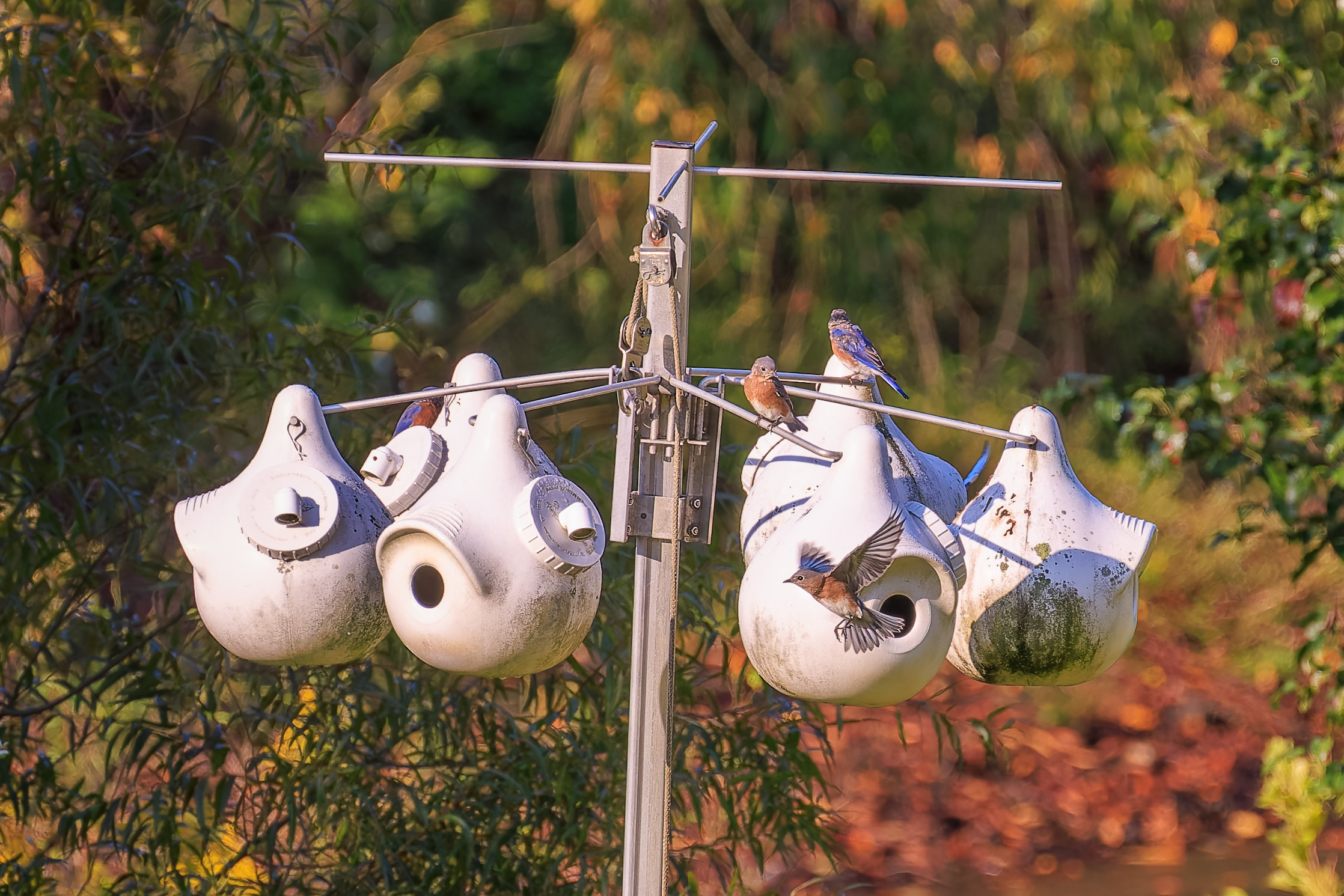
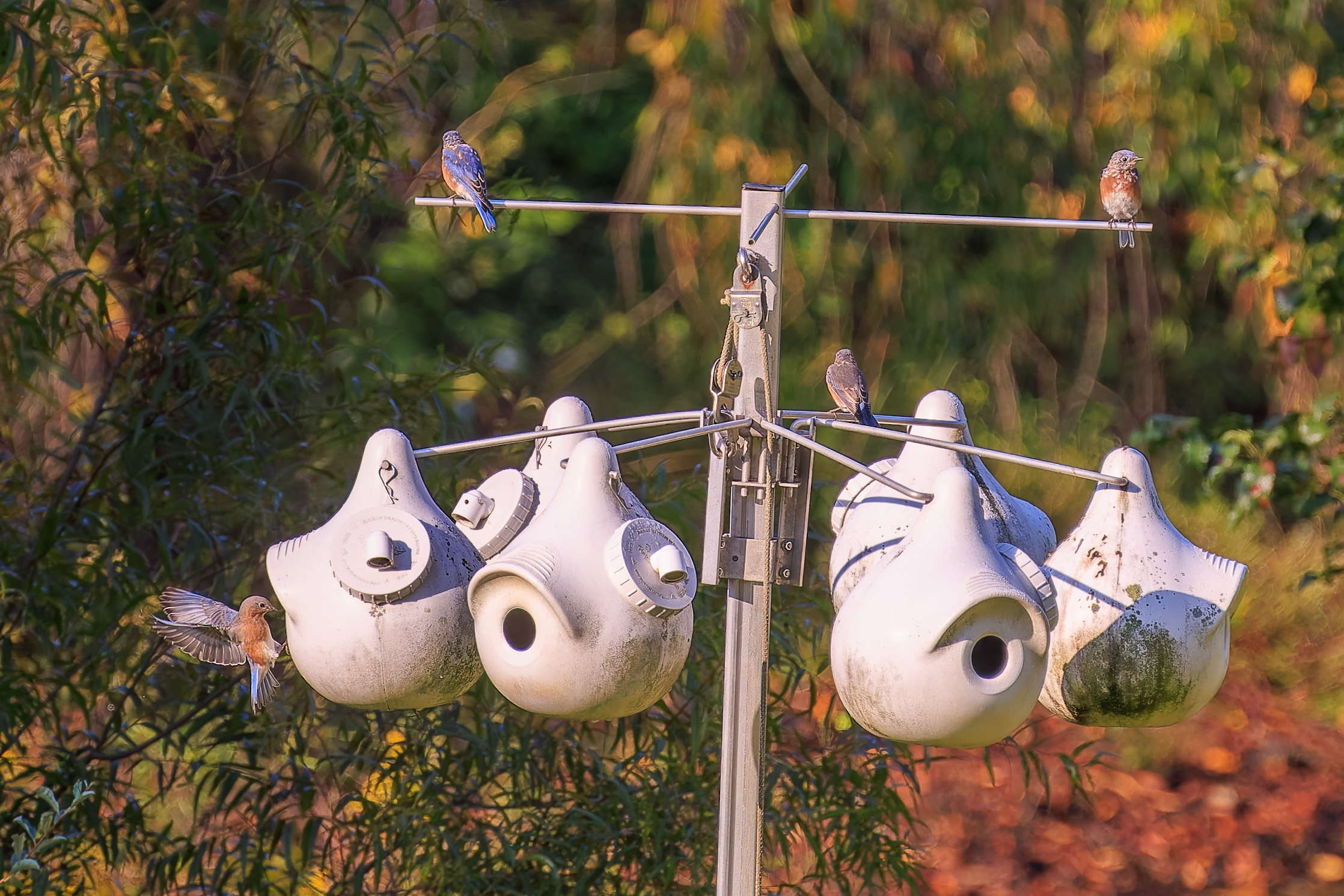
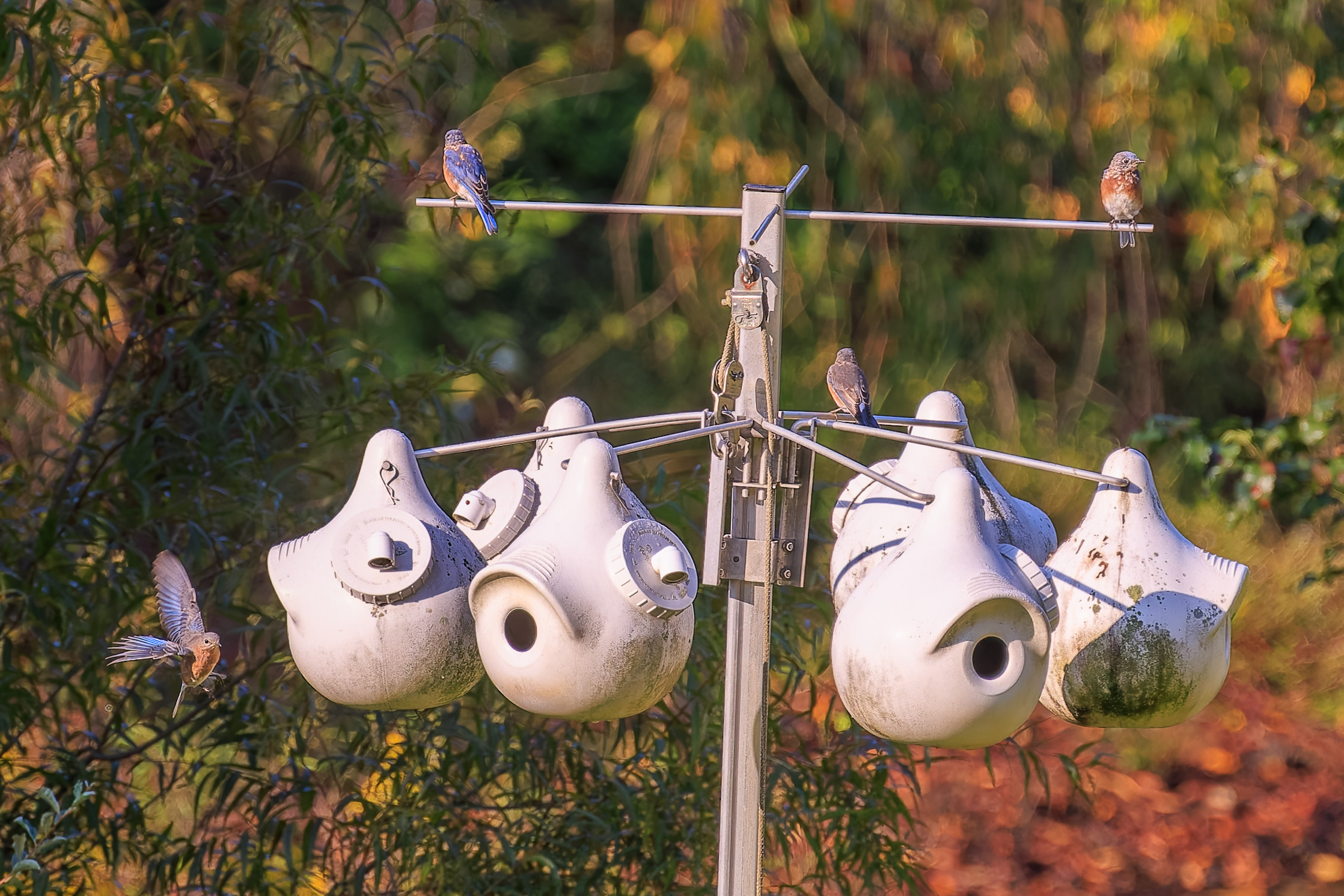
Checking out the nest boxes seemed to be a popular activity for these bluebirds!
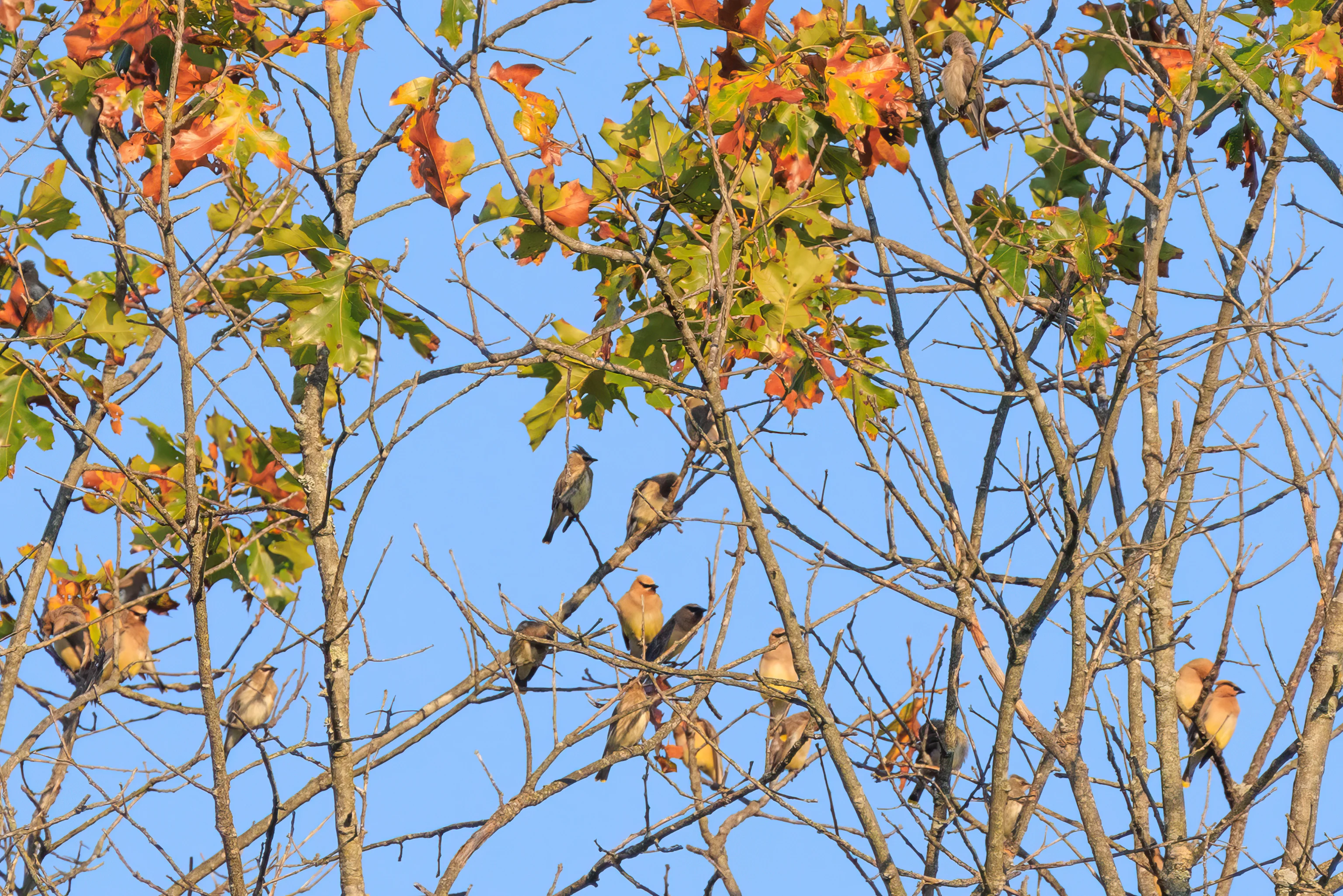
We again noticed a large group of Cedar Waxwings at the top of a tree. It is possible this is the same tree and the same birds we saw earlier in the morning.
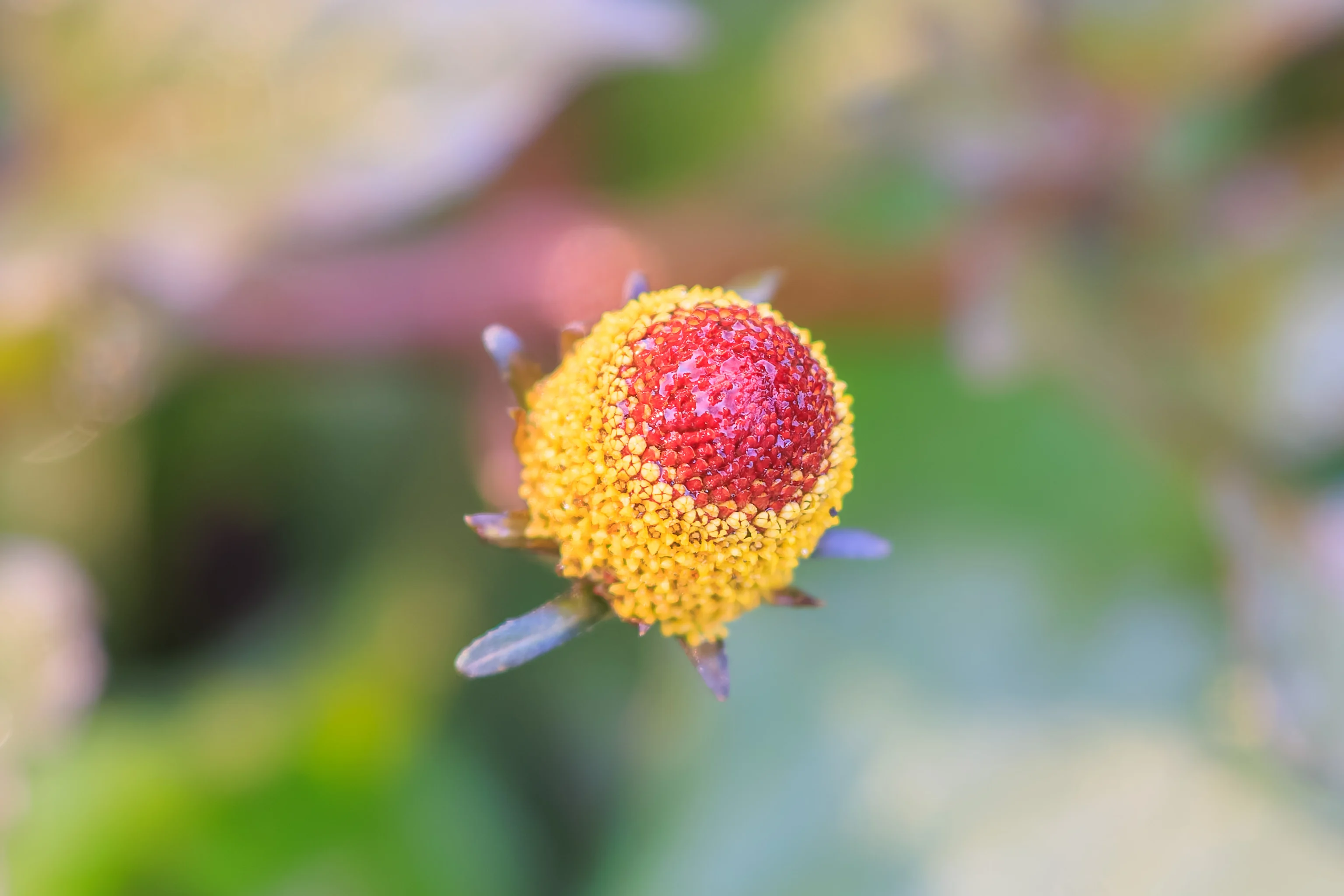
This funny looking flower seems to be Acmella Oleracea, also known as an Eyeball Plant. Eating the plant apparently triggers salivation and causes numbness.
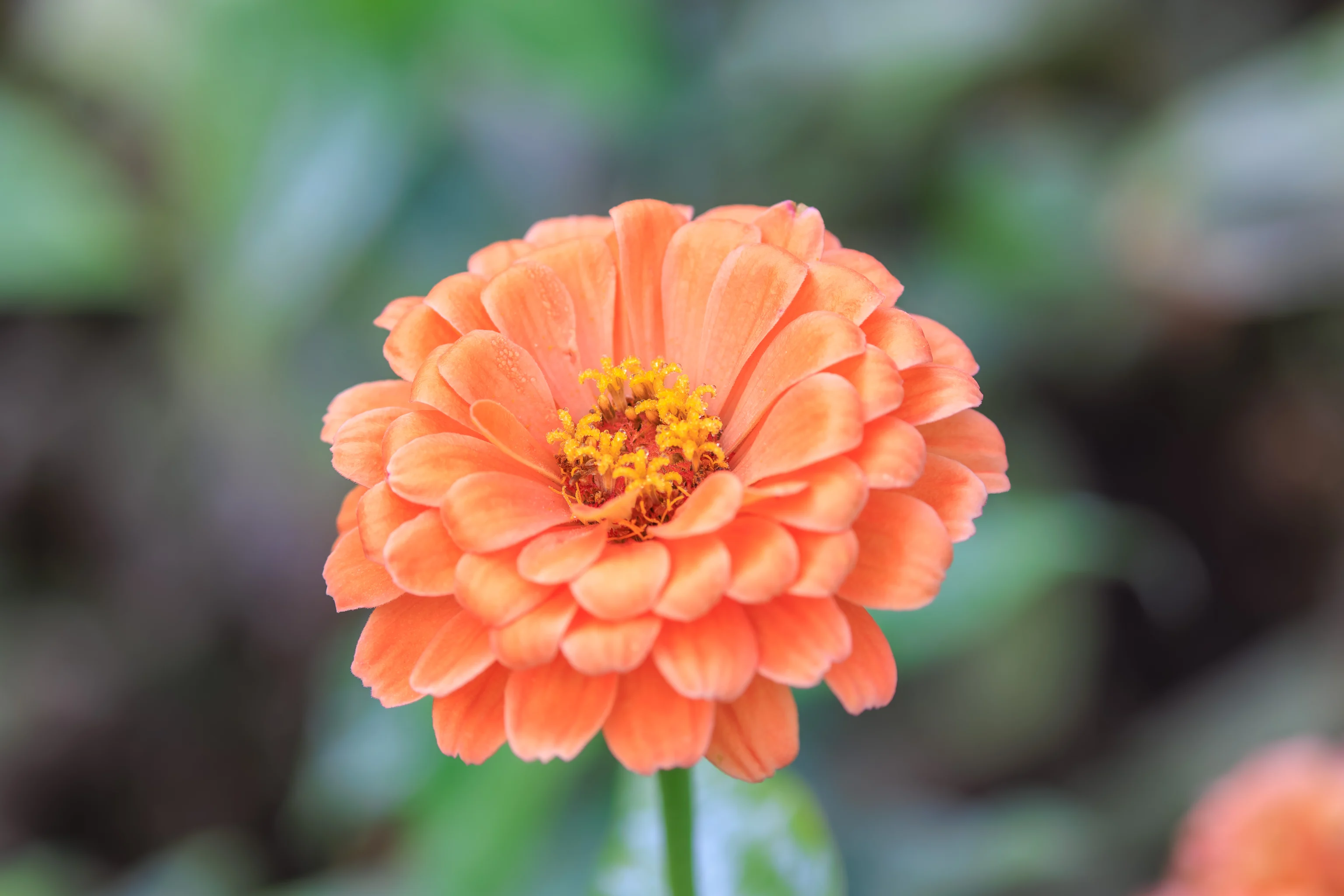
This seems to be some variety of Zinnia Elegans. They come in various colors and with various petal configurations.
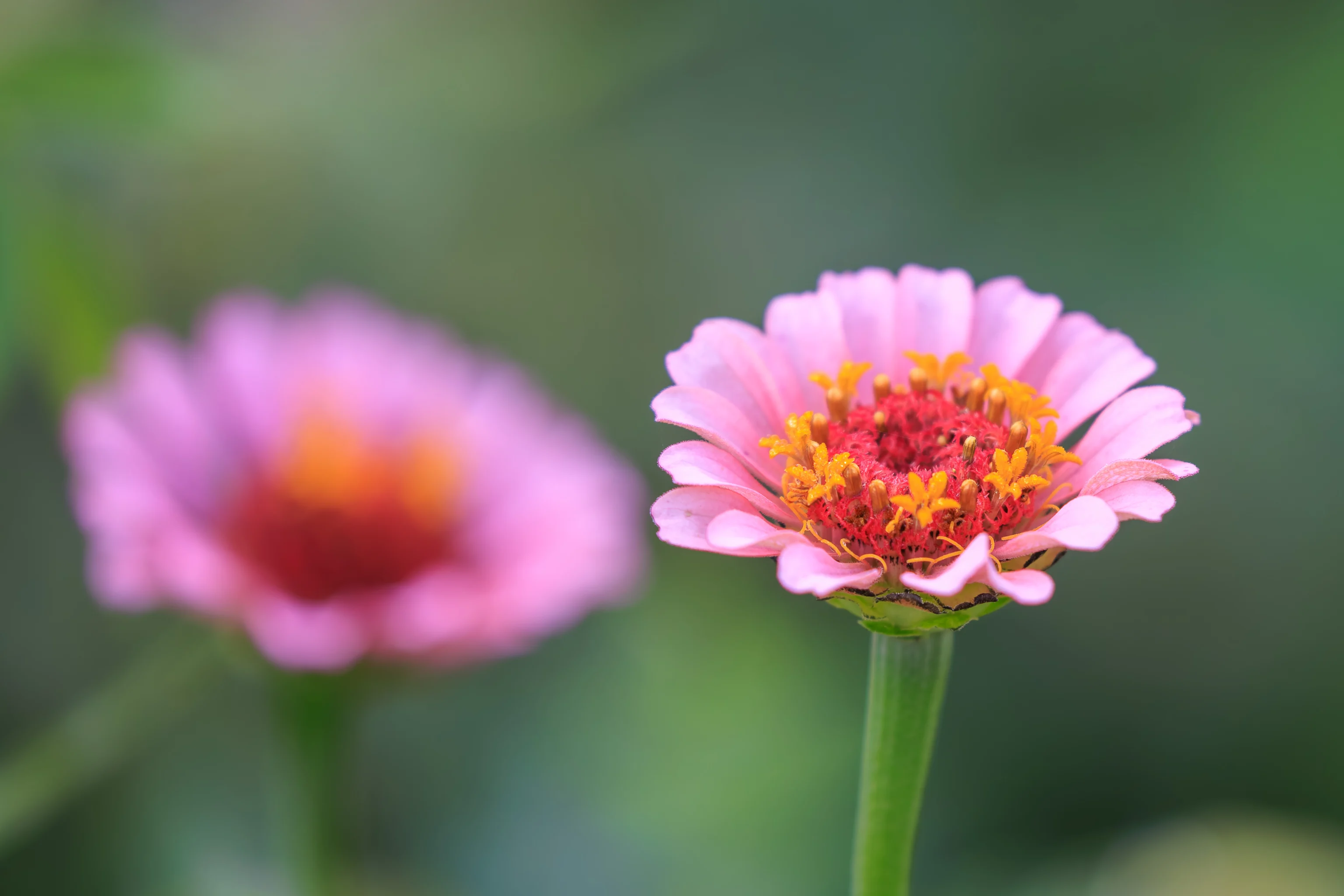
This might be another variety of the same species.
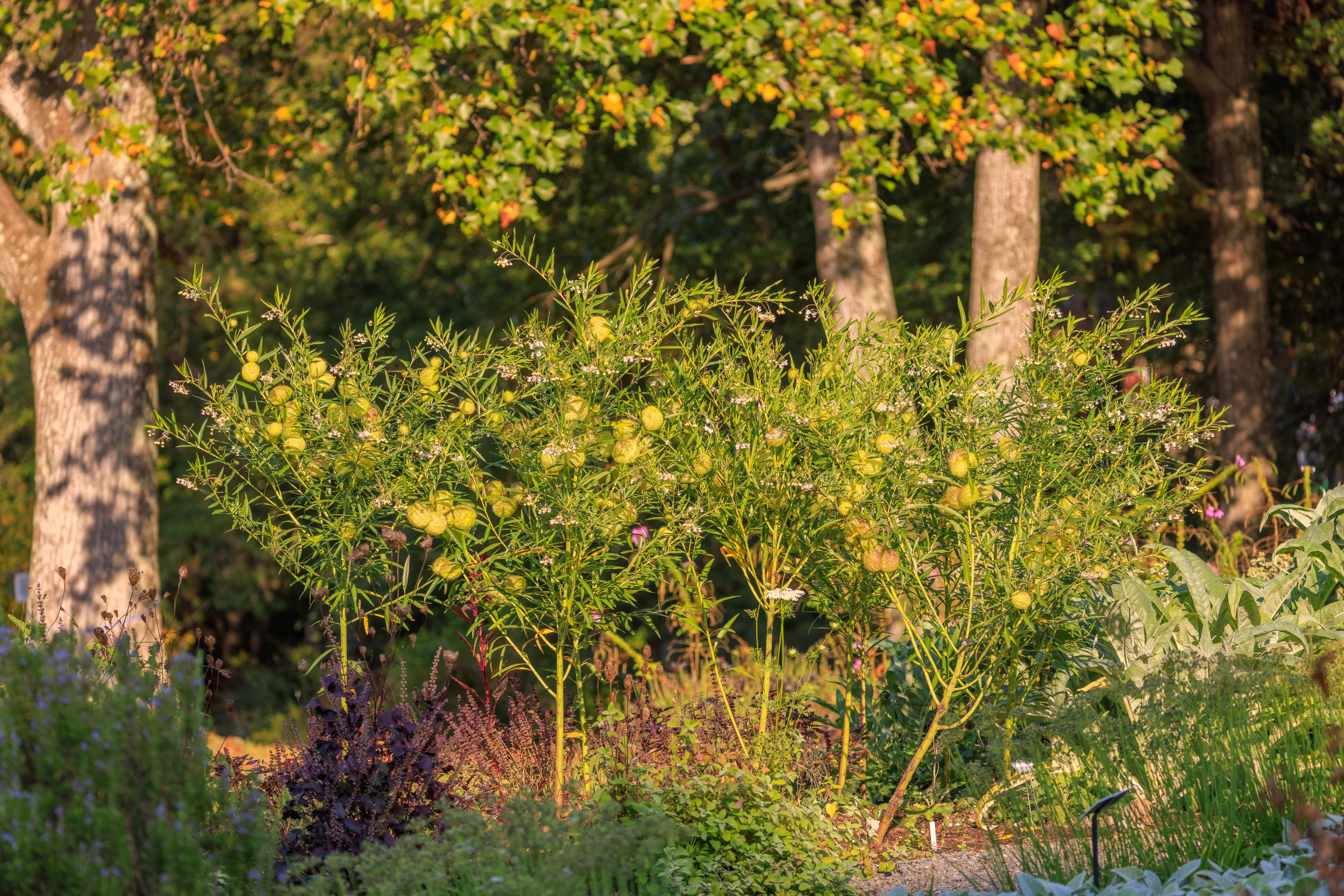
We photographed these earlier in the morning.
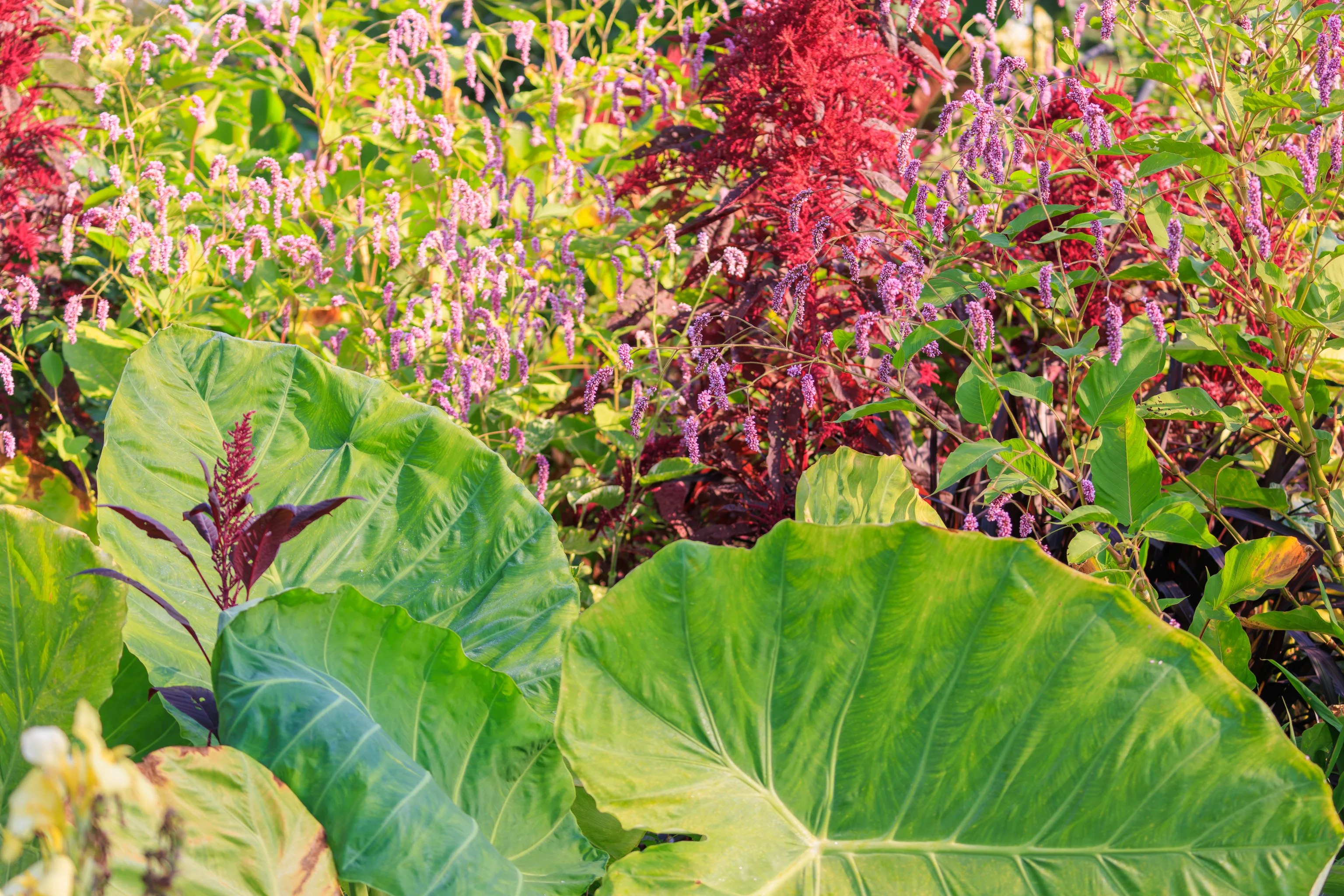
As we continued past the greenhouse near the entrance, we noticed these giant leaves.
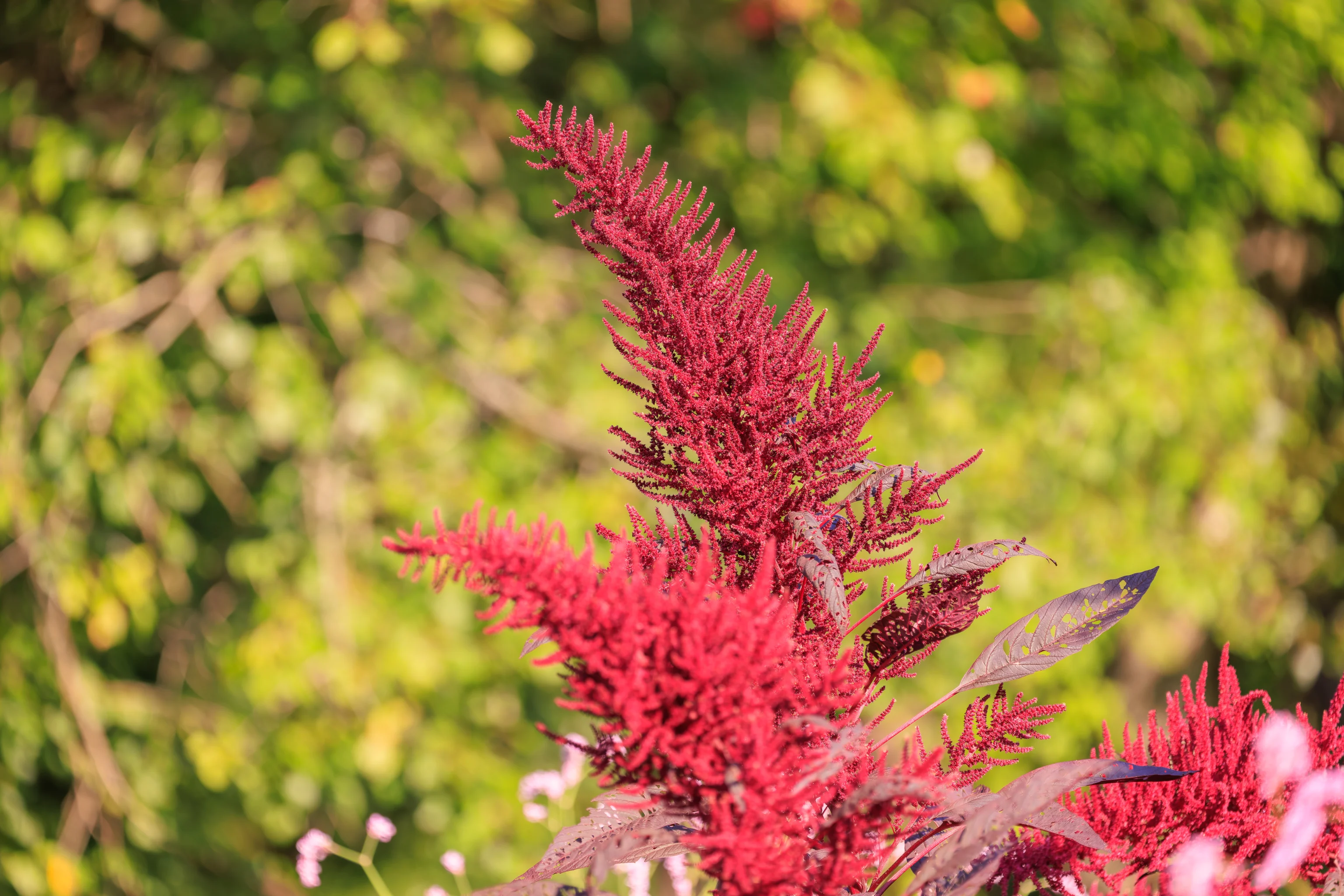
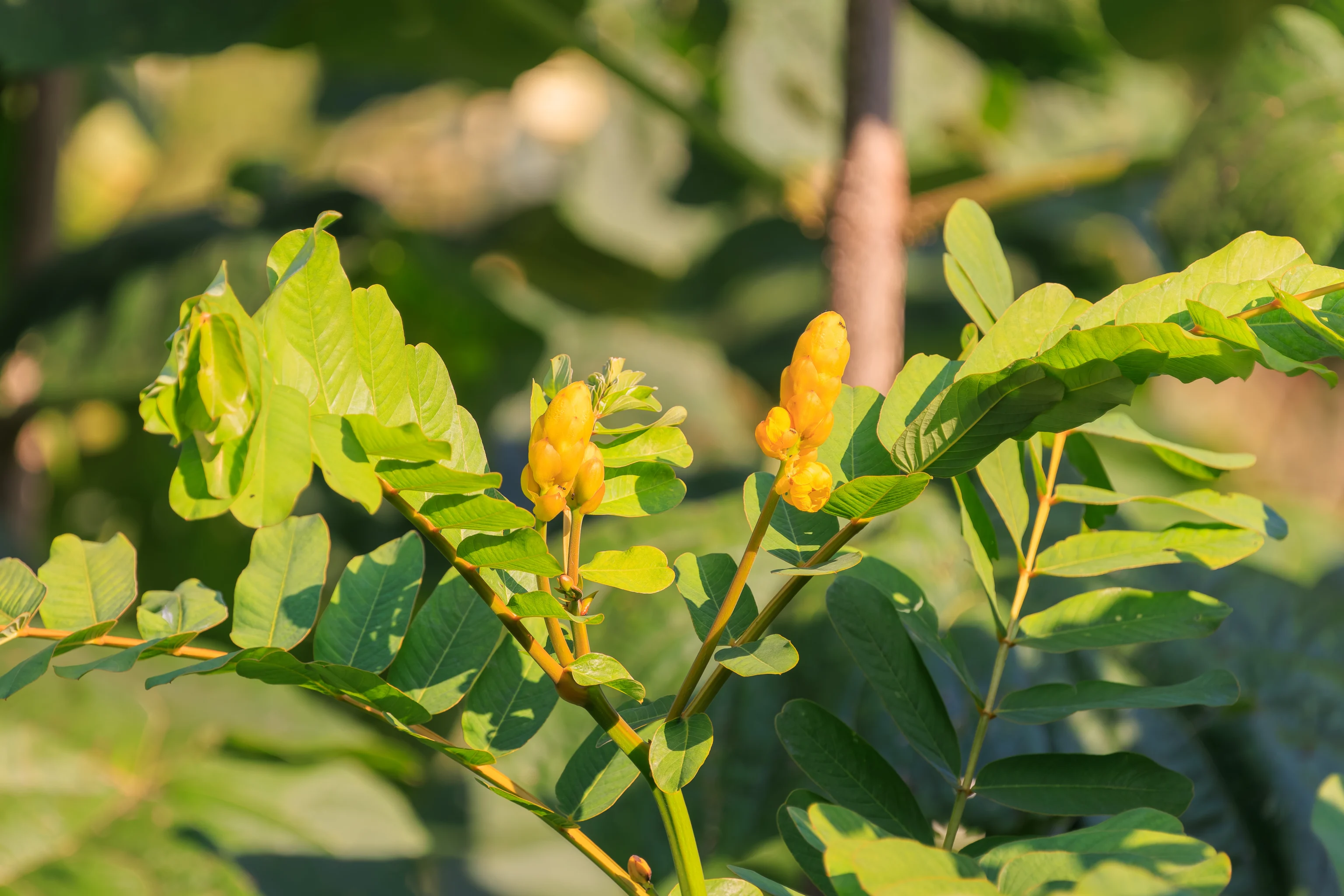
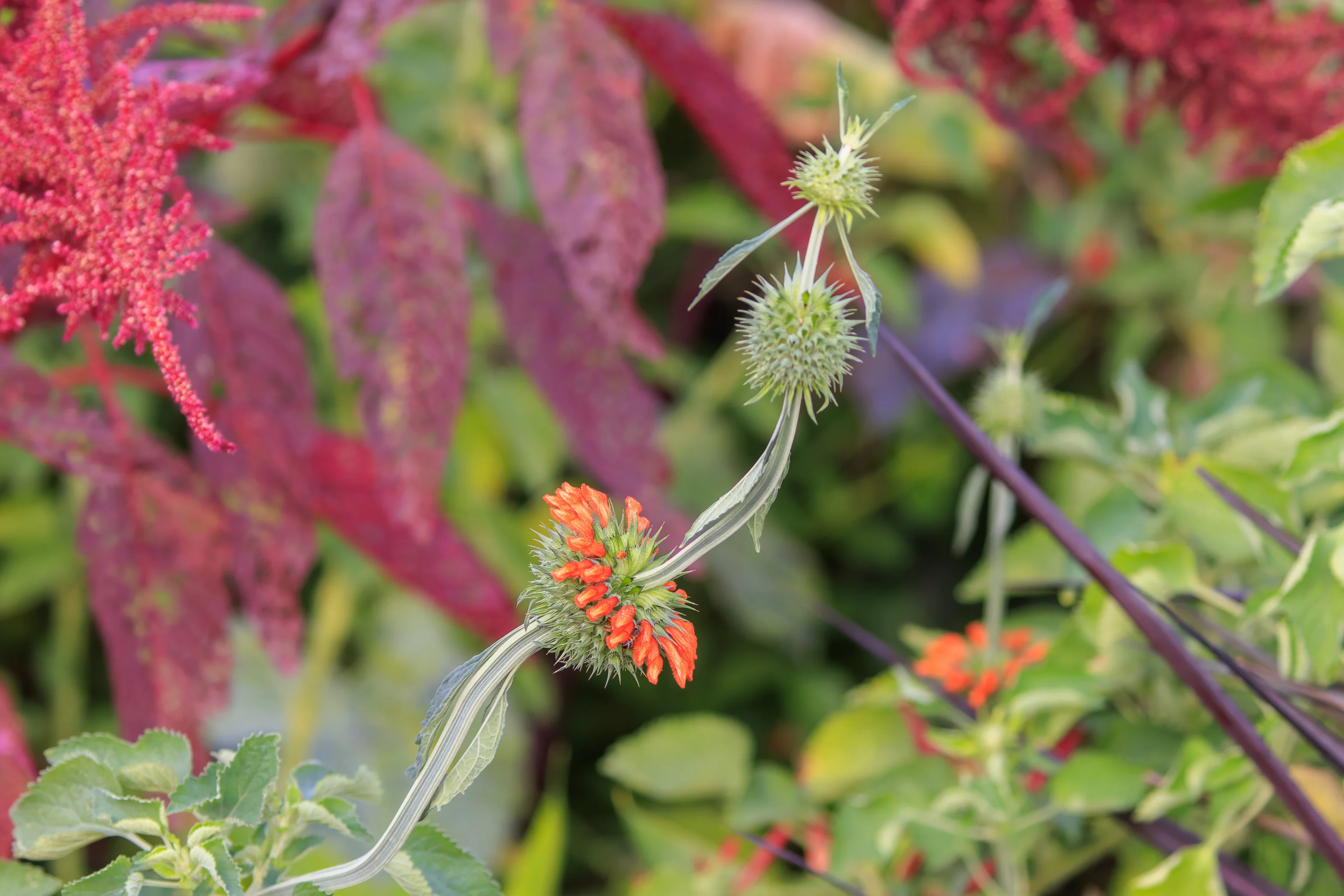
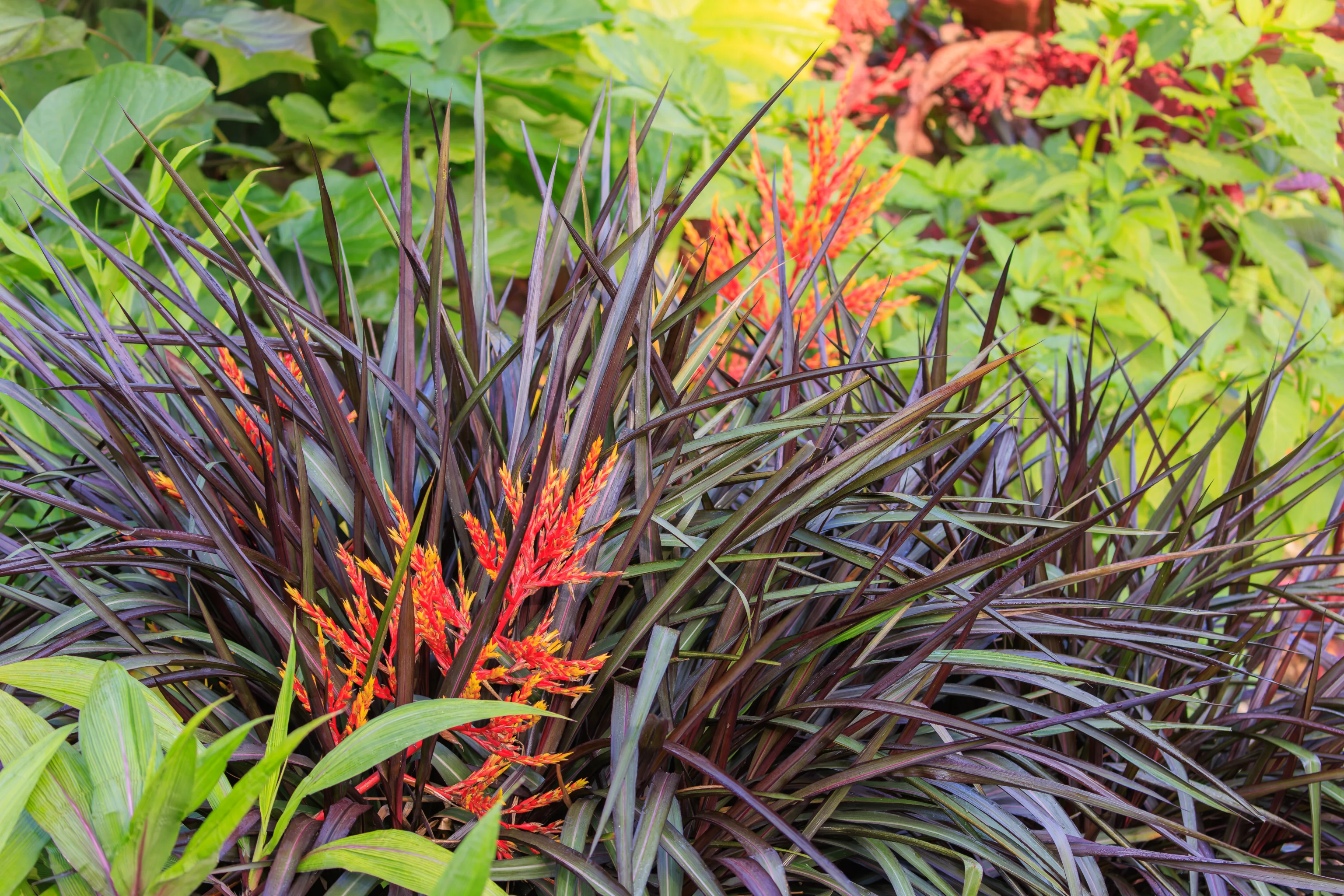
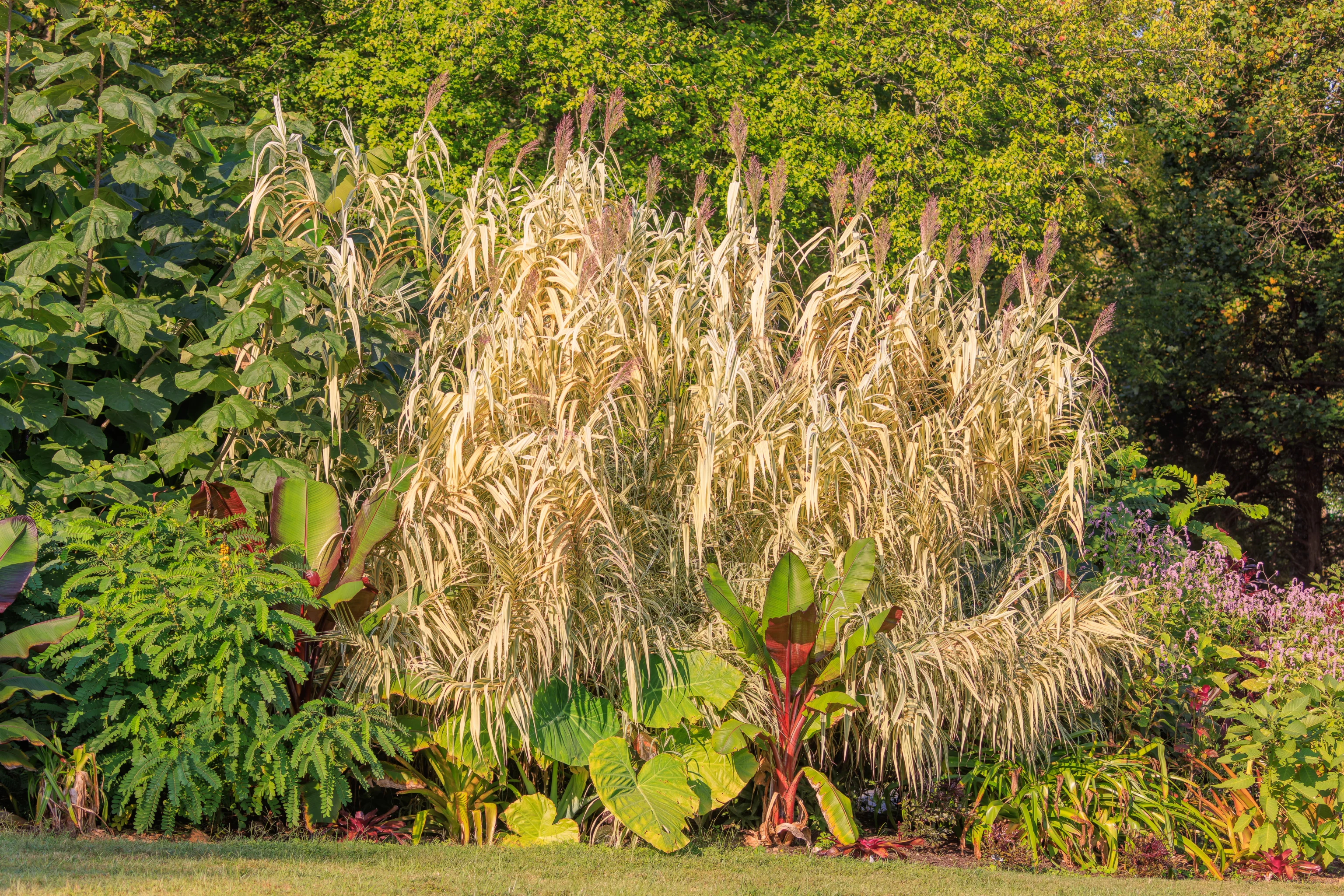
There was a large variety of plants in this small area.
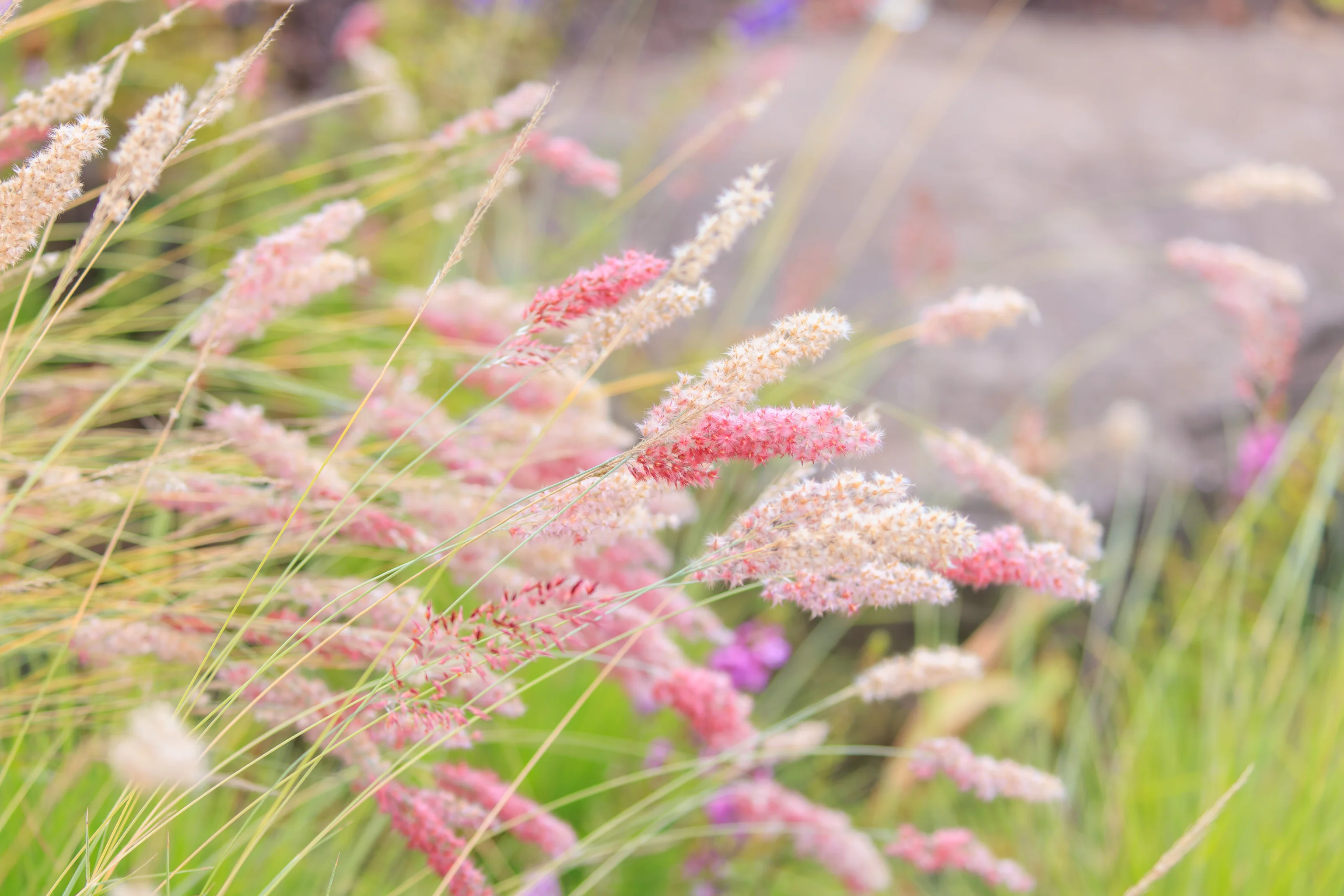
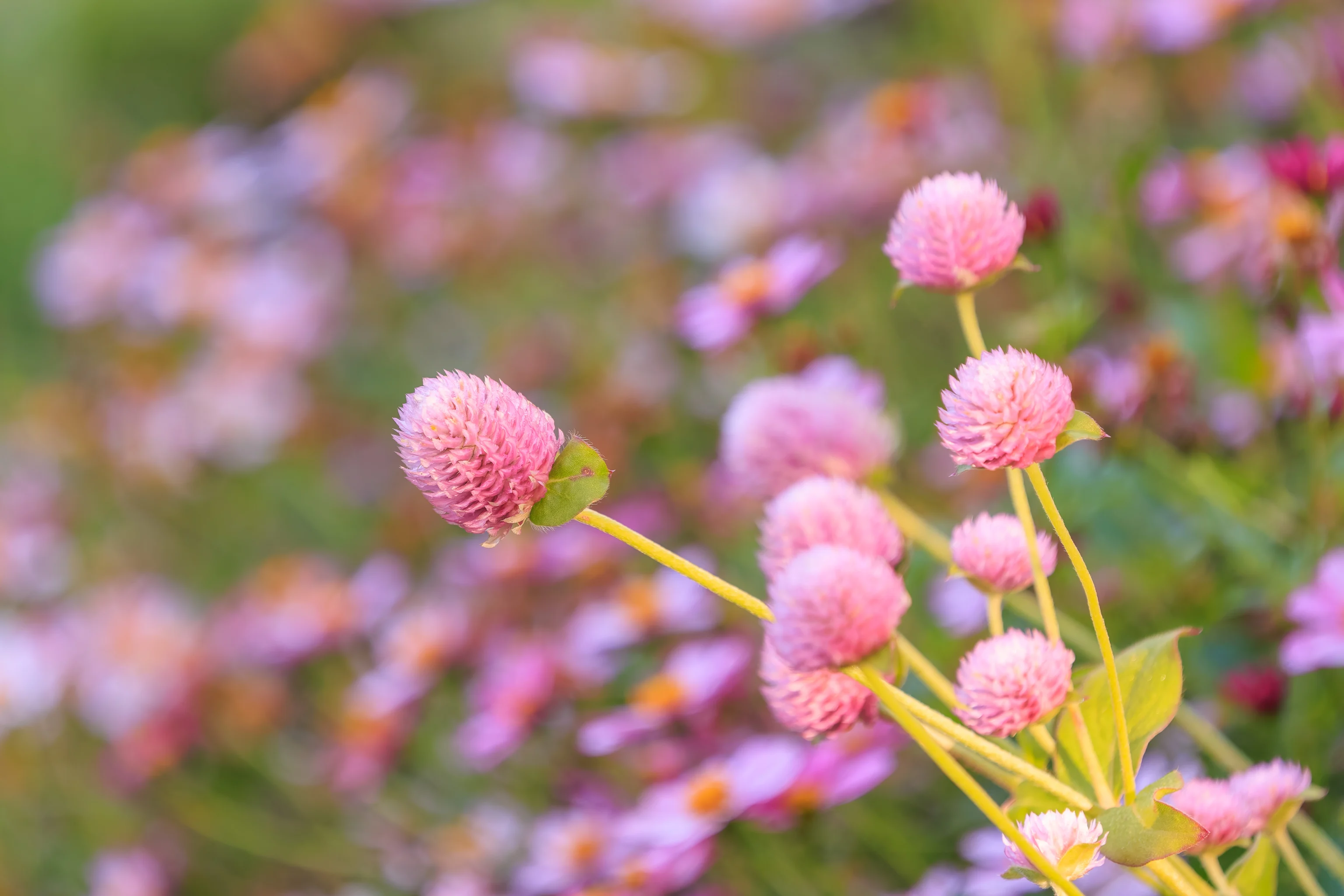
We spotted these flowers on our way out.
Sunday Afternoon, September 22nd
We returned Sunday afternoon as we were still in the area.
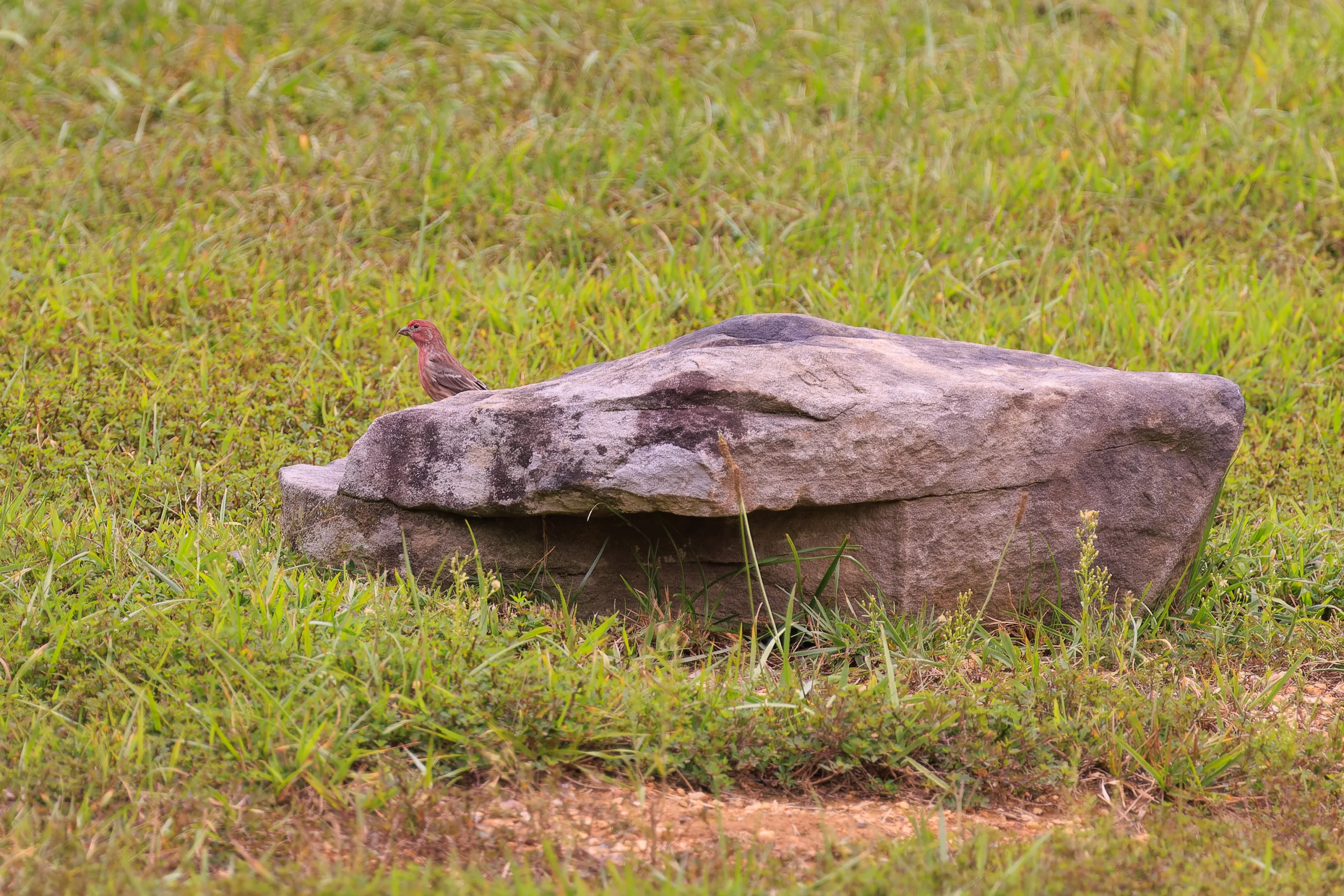
As we entered, we walked the same route that we did yesterday. We saw quite a few small birds on the ground at the edge of an area with a high canopy from some very tall trees. We spotted a male House Finch on a stone.
A minute after we saw this House Finch, we briefly spotted and photographed a Northern Parula, one of the warbler species that we found yesterday. The photo was very blurry, though it was good enough to identify the bird.
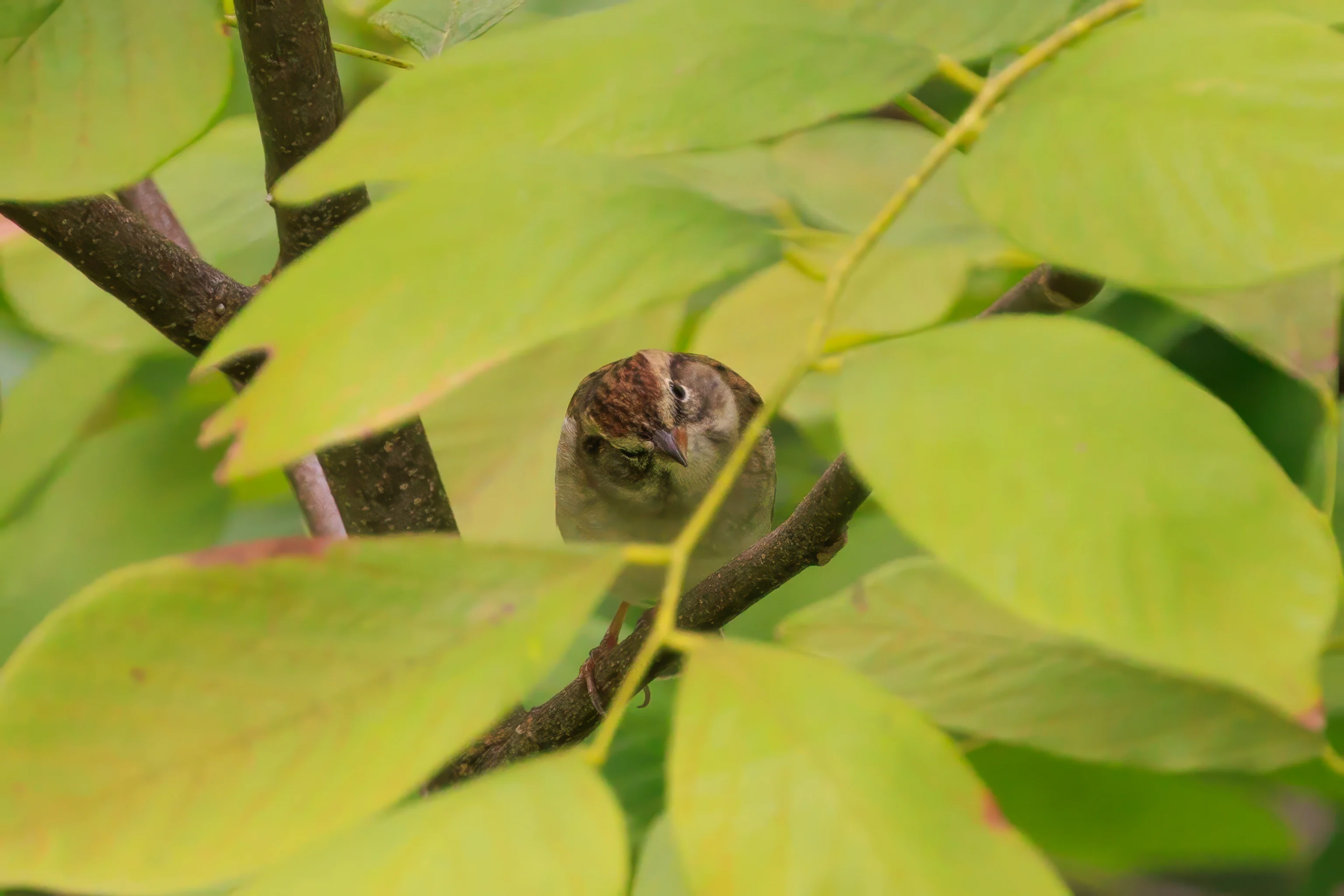
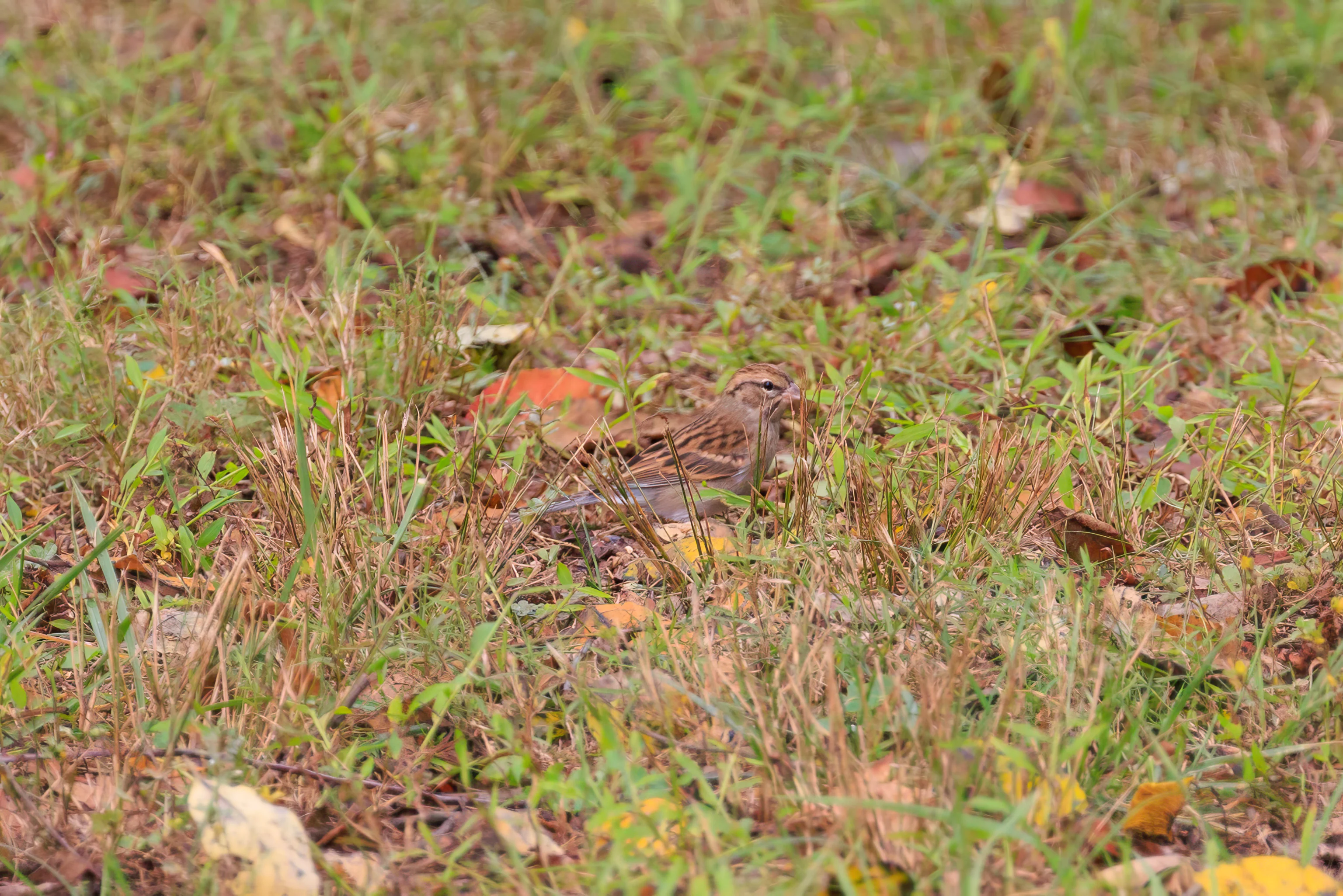
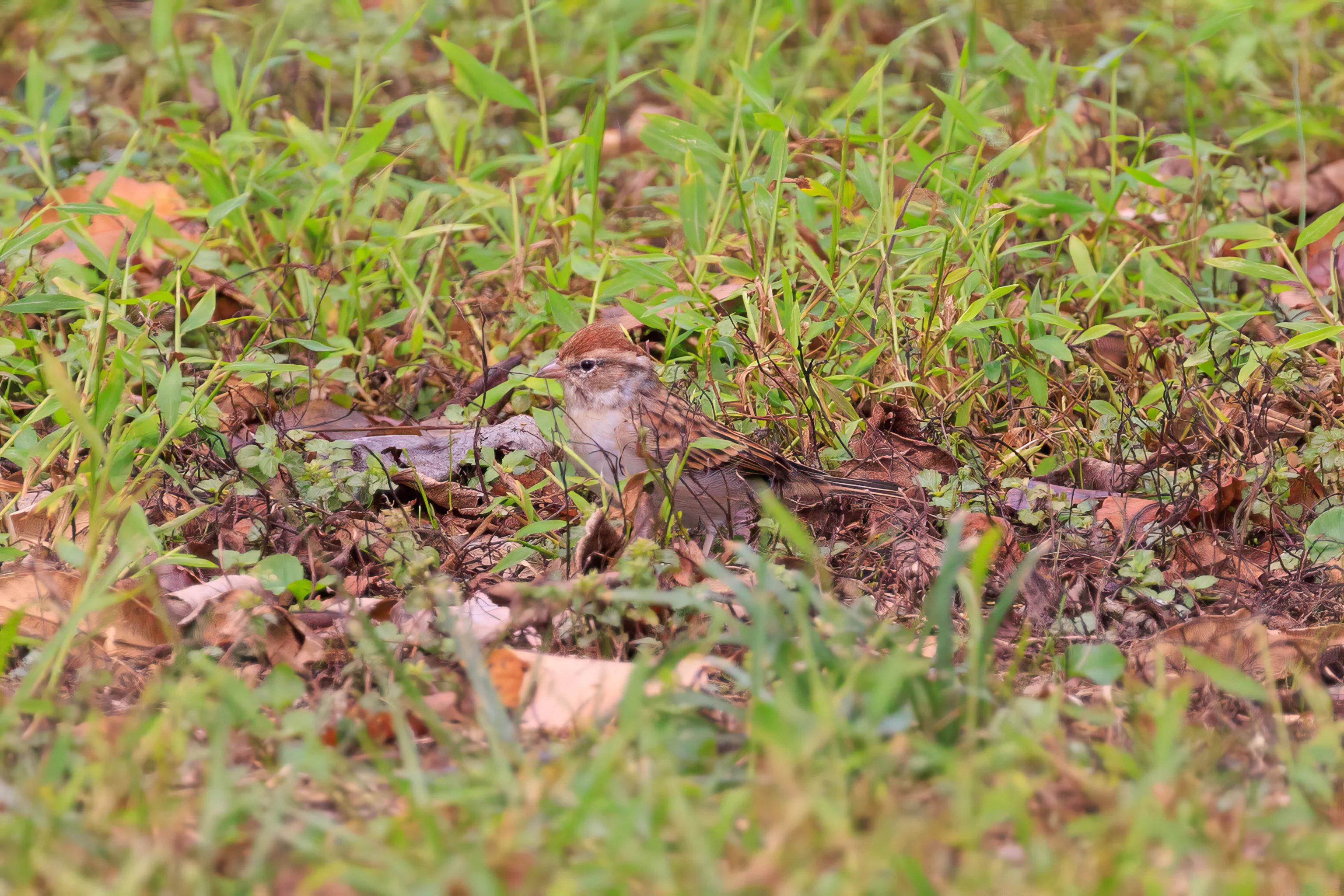
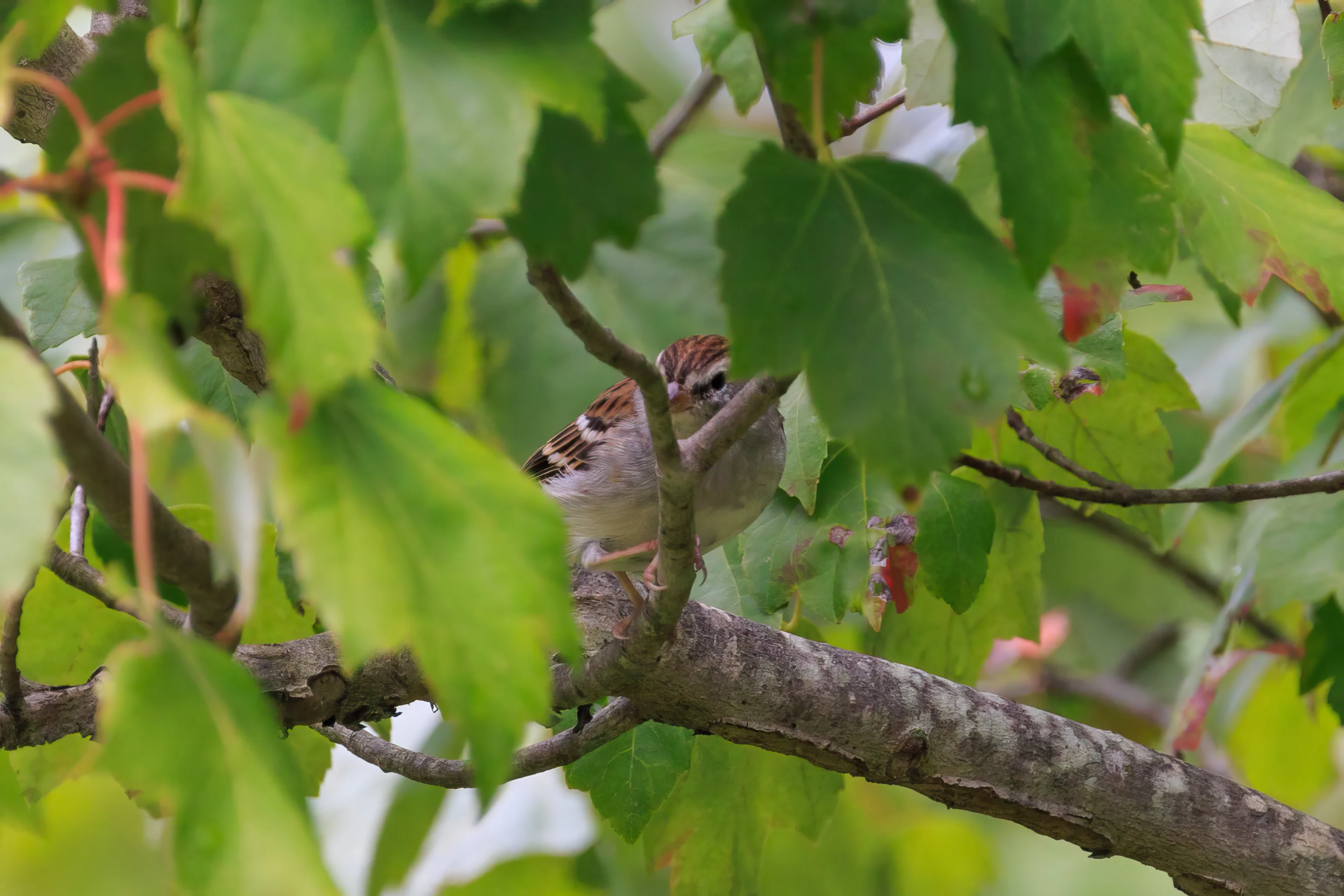
We also found quite a few Chipping Sparrows on the ground and in the trees. They’re tiny and can move pretty fast. They blend in pretty well here when they’re on the ground!
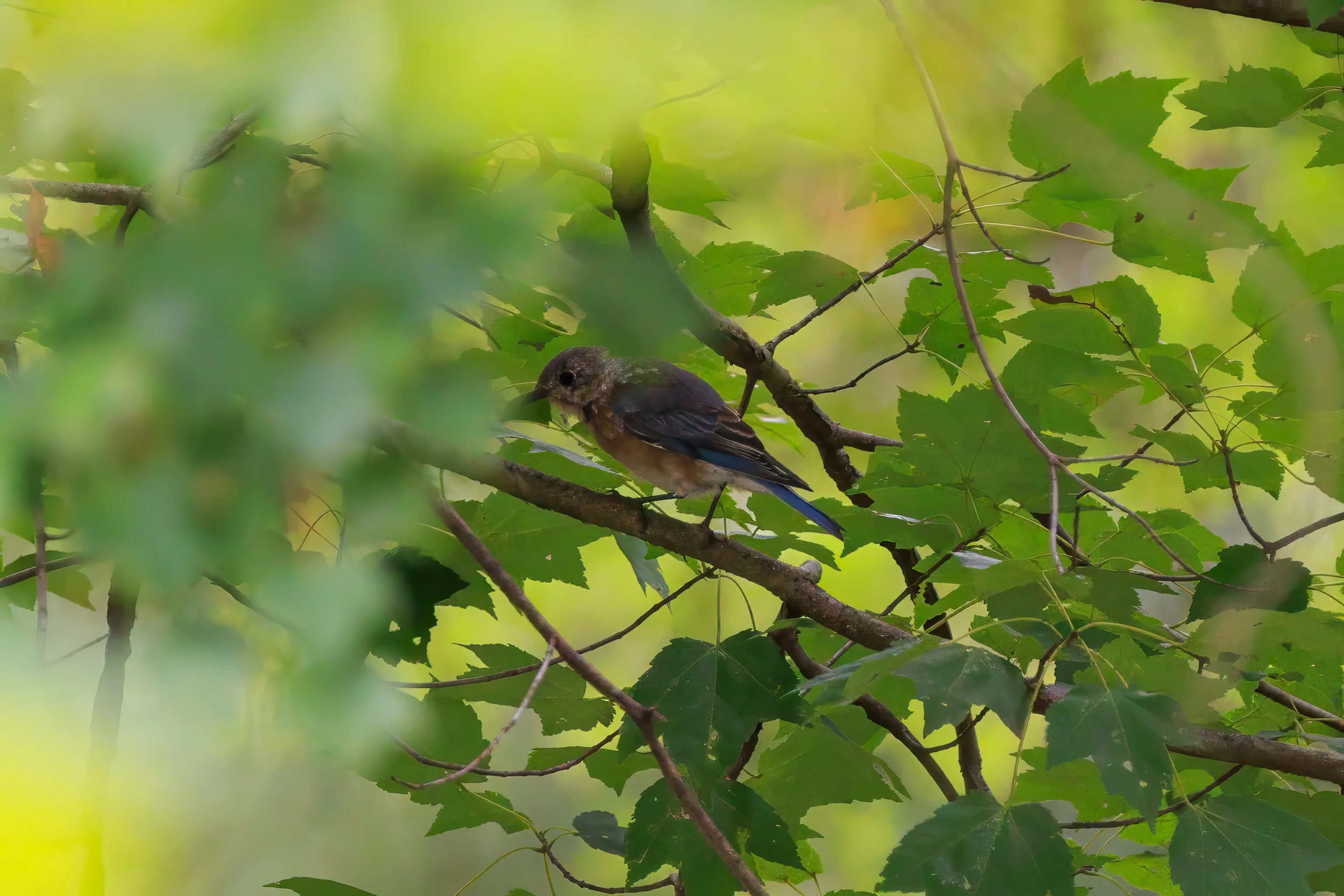
We also saw Eastern Bluebirds, although they were pretty actively moving around and were hard to photograph.
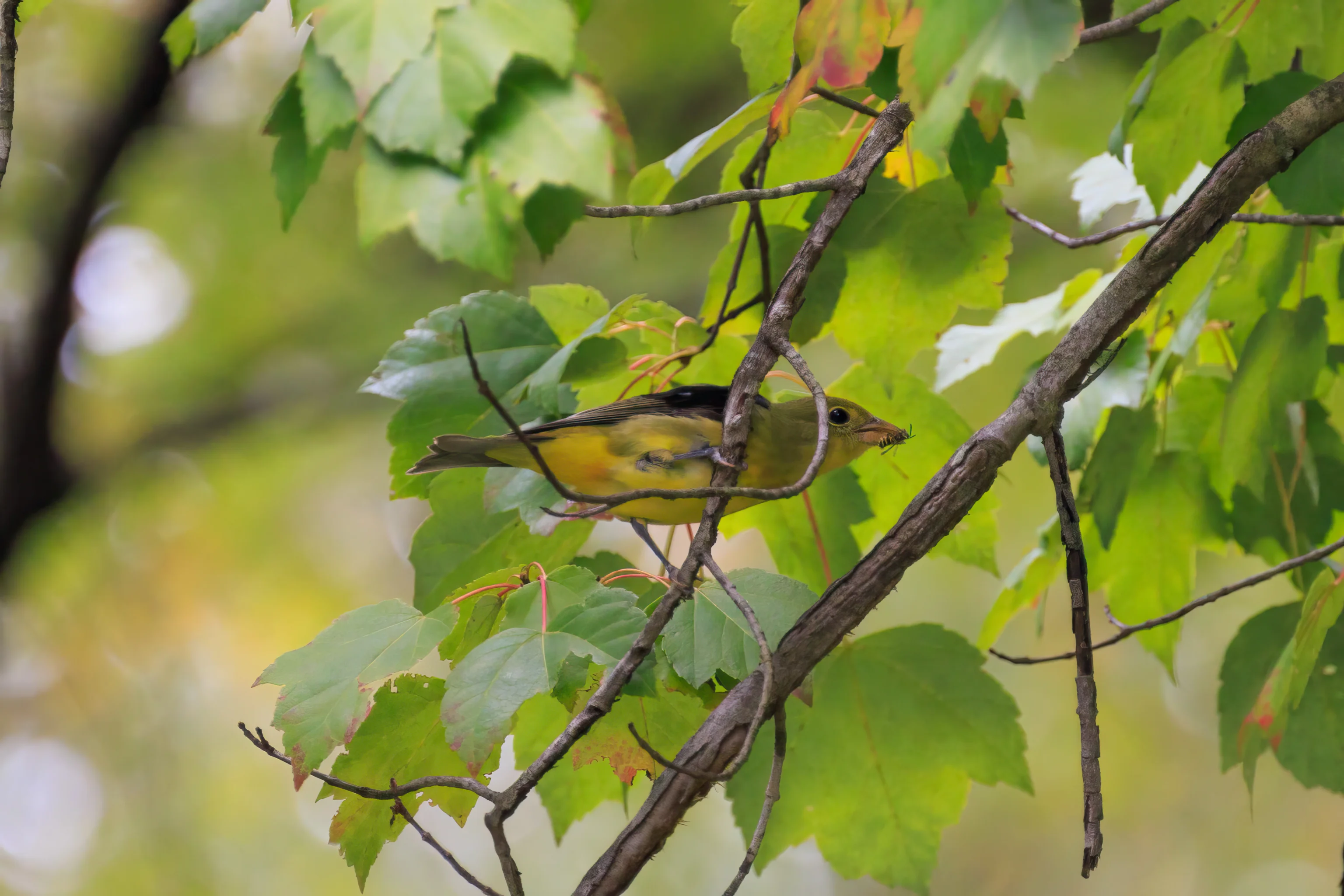
There was also at least one American Goldfinch! We spotted it while it was holding a small insect.
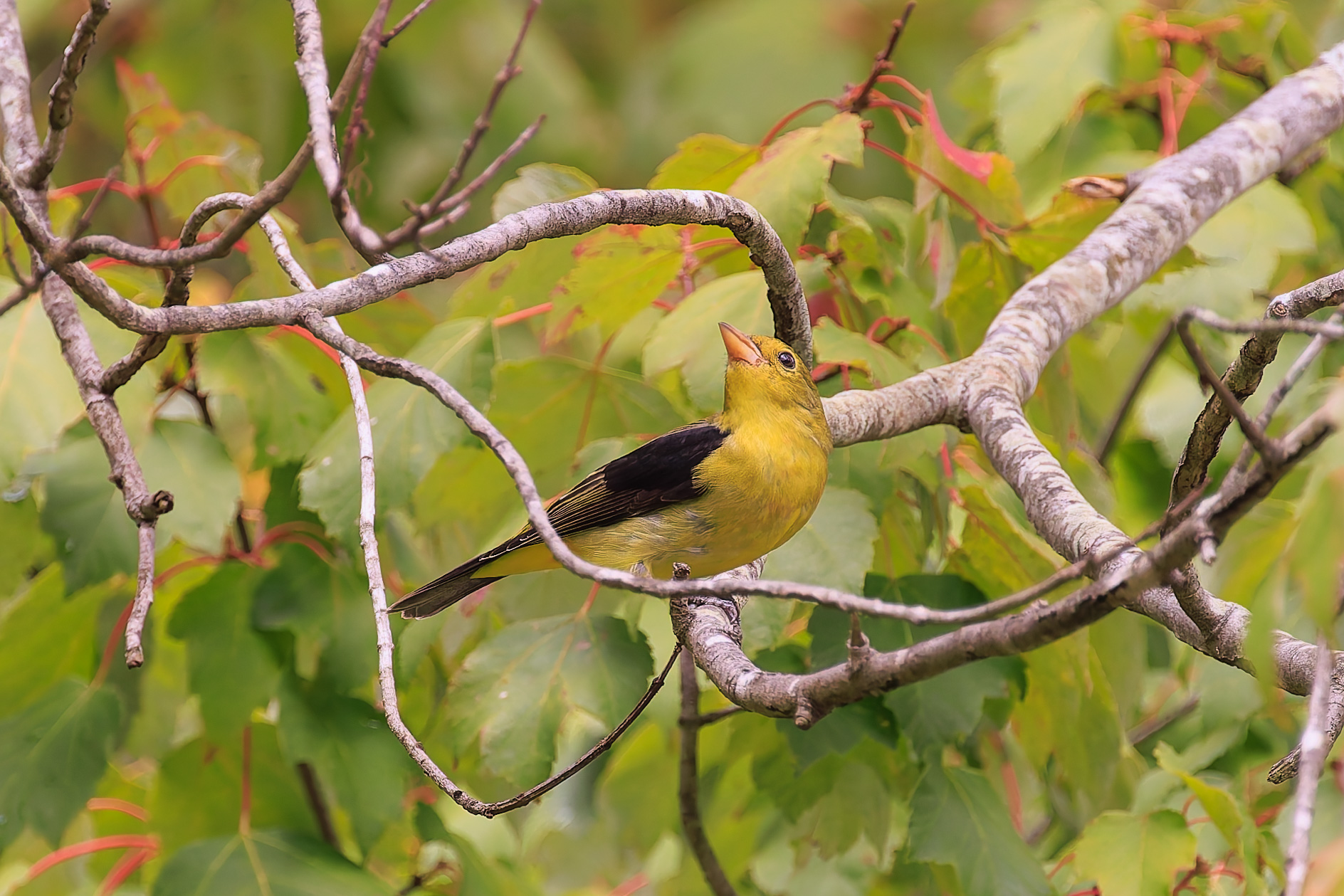
A more typical American Goldfinch pose and appearance.
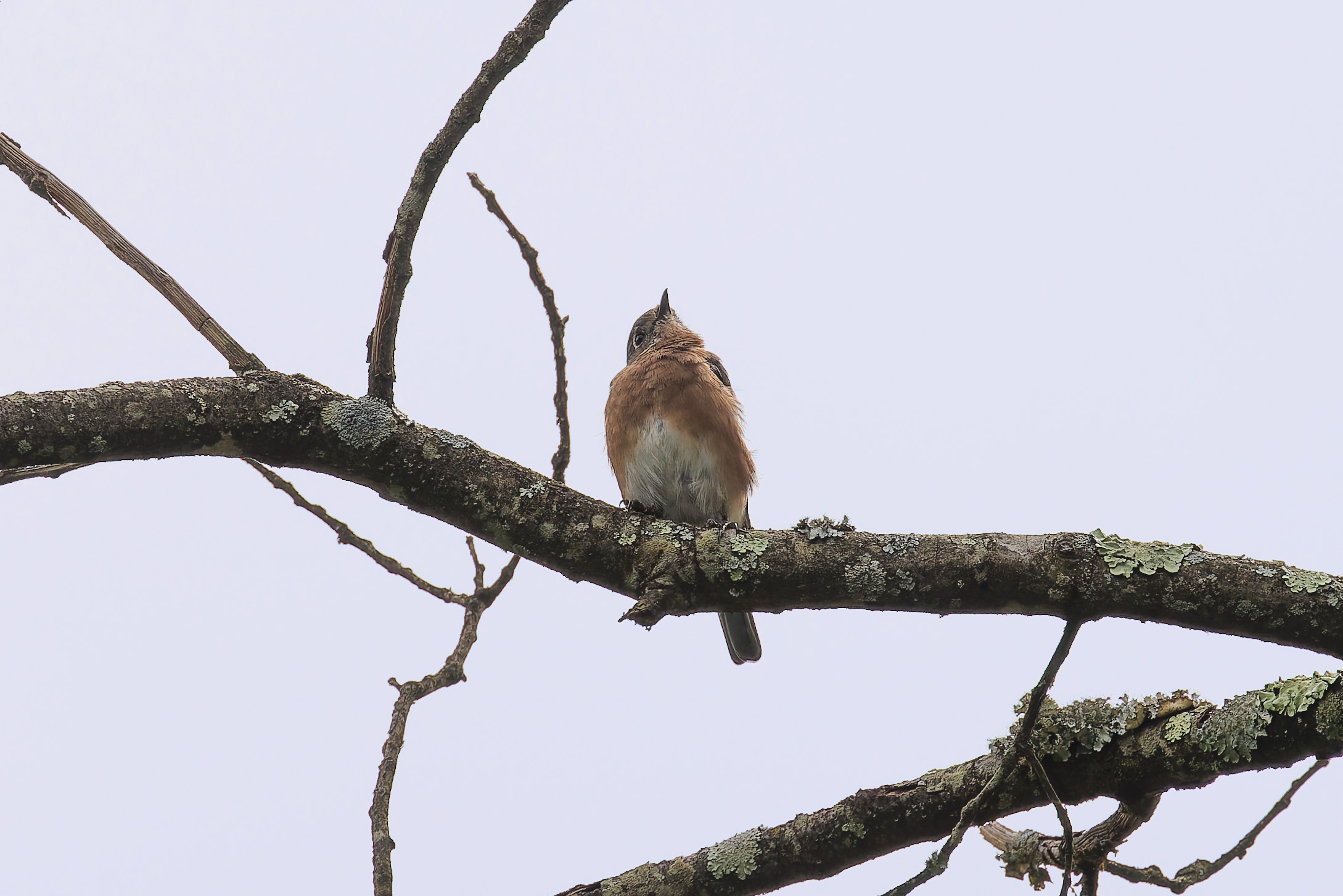
We managed to photograph one of the Eastern Bluebirds from below.
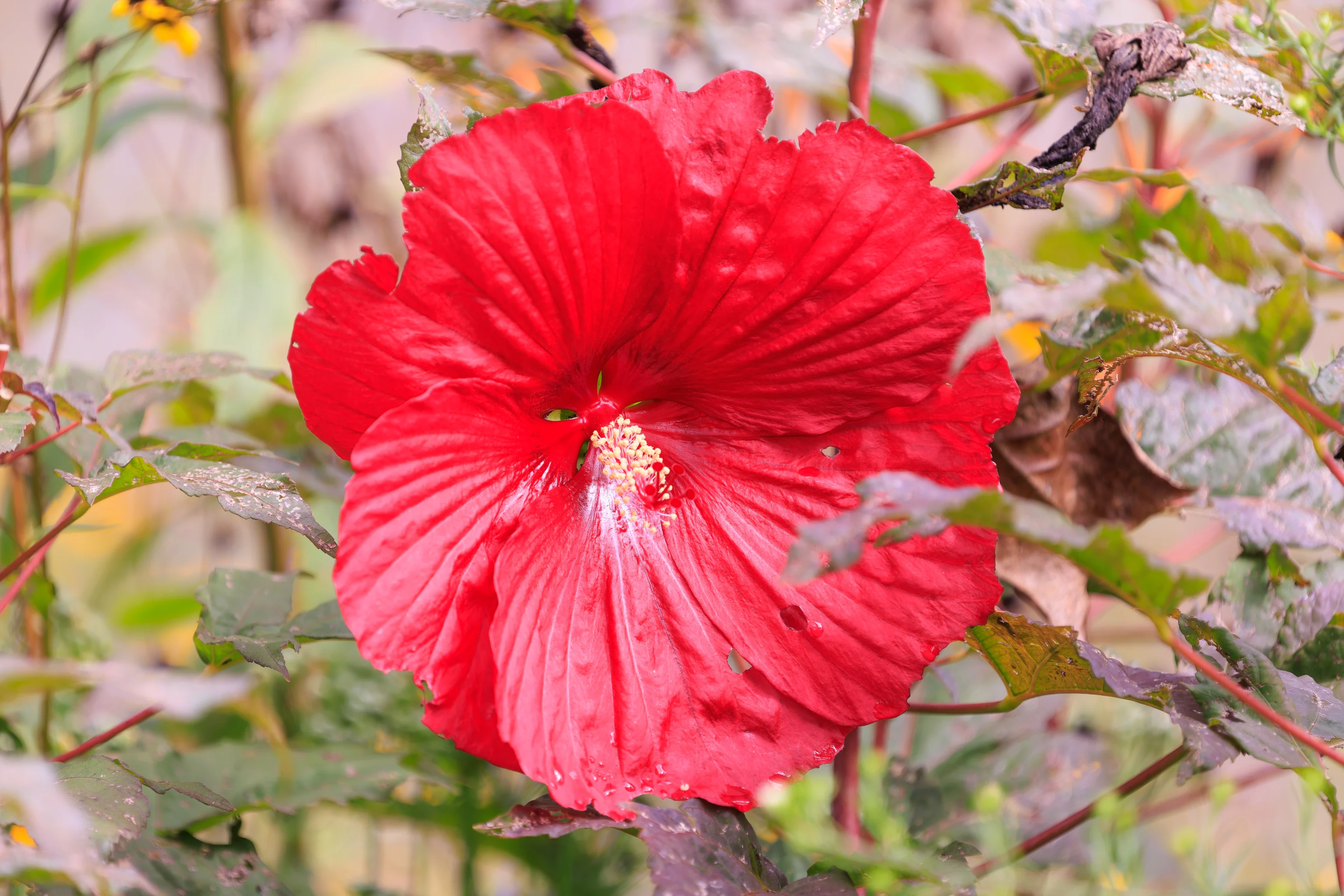
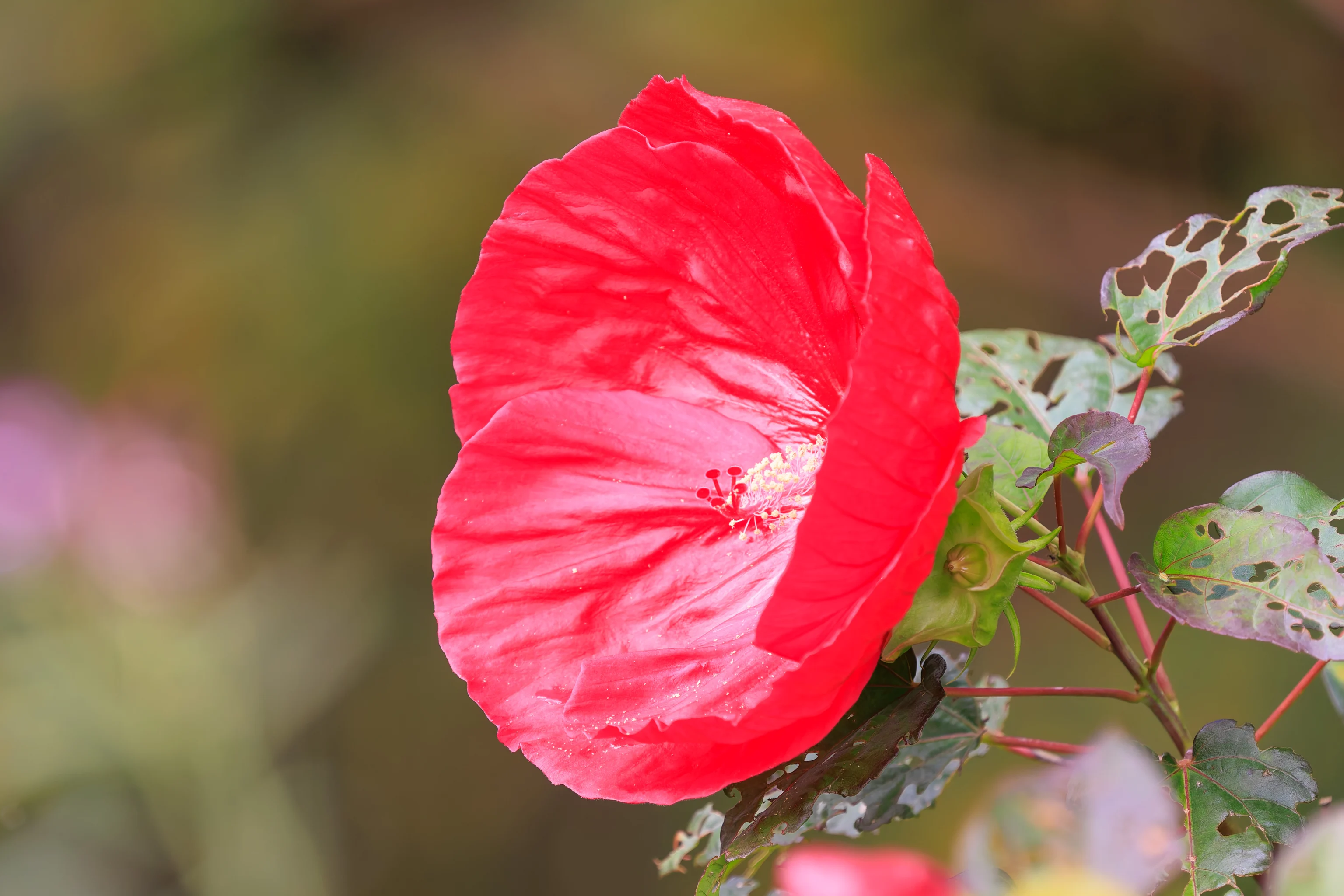
We noticed these huge flowers. We’ve seen them locally near home as well. This seems to be a variety of Hibiscus. Could it be the Lord Baltimore hybrid?
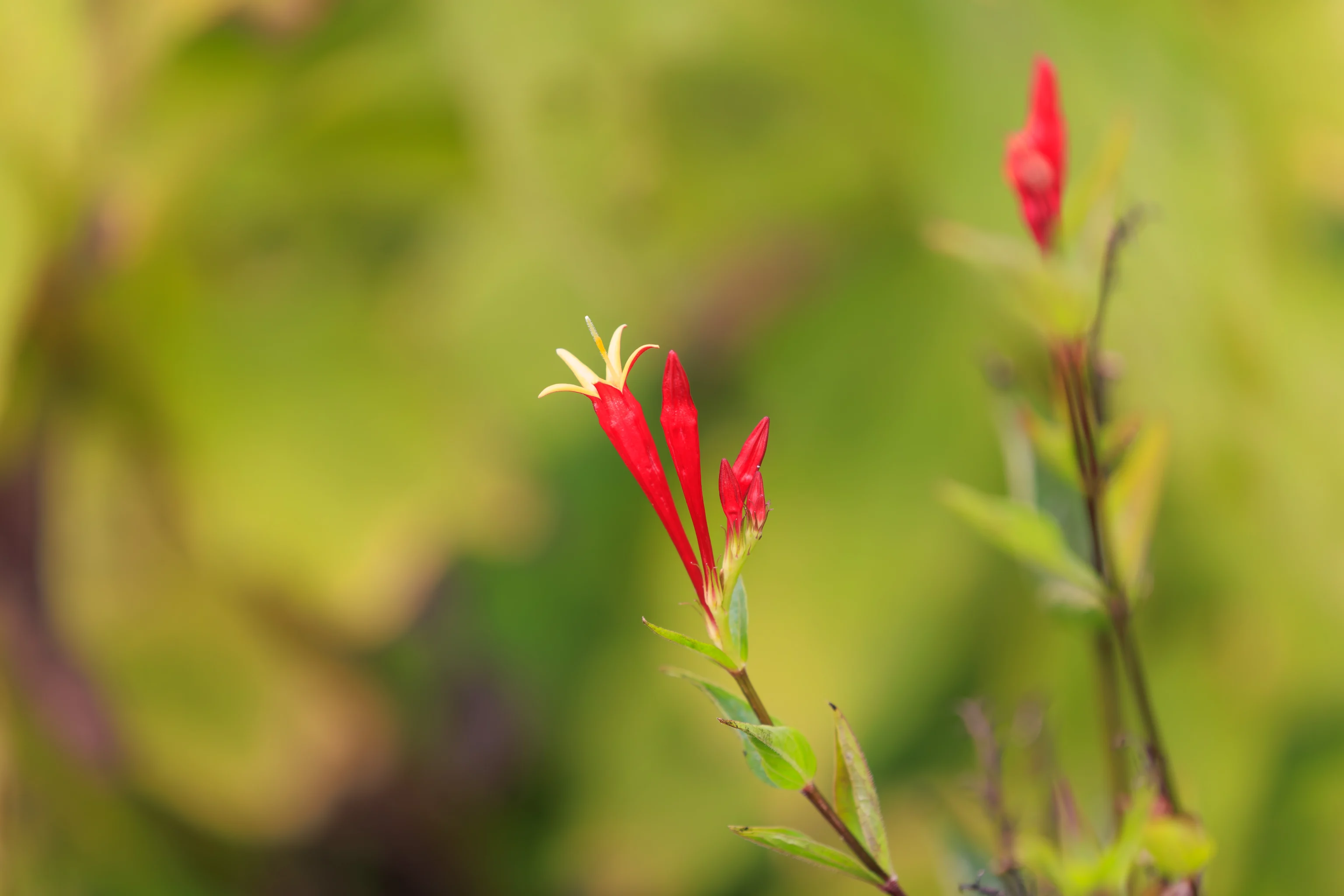
This could be Spigelia Marilandica, though it seems this isn’t the time when they should be flowering. Apparently the roots can cause hallucination and death when overdosed.
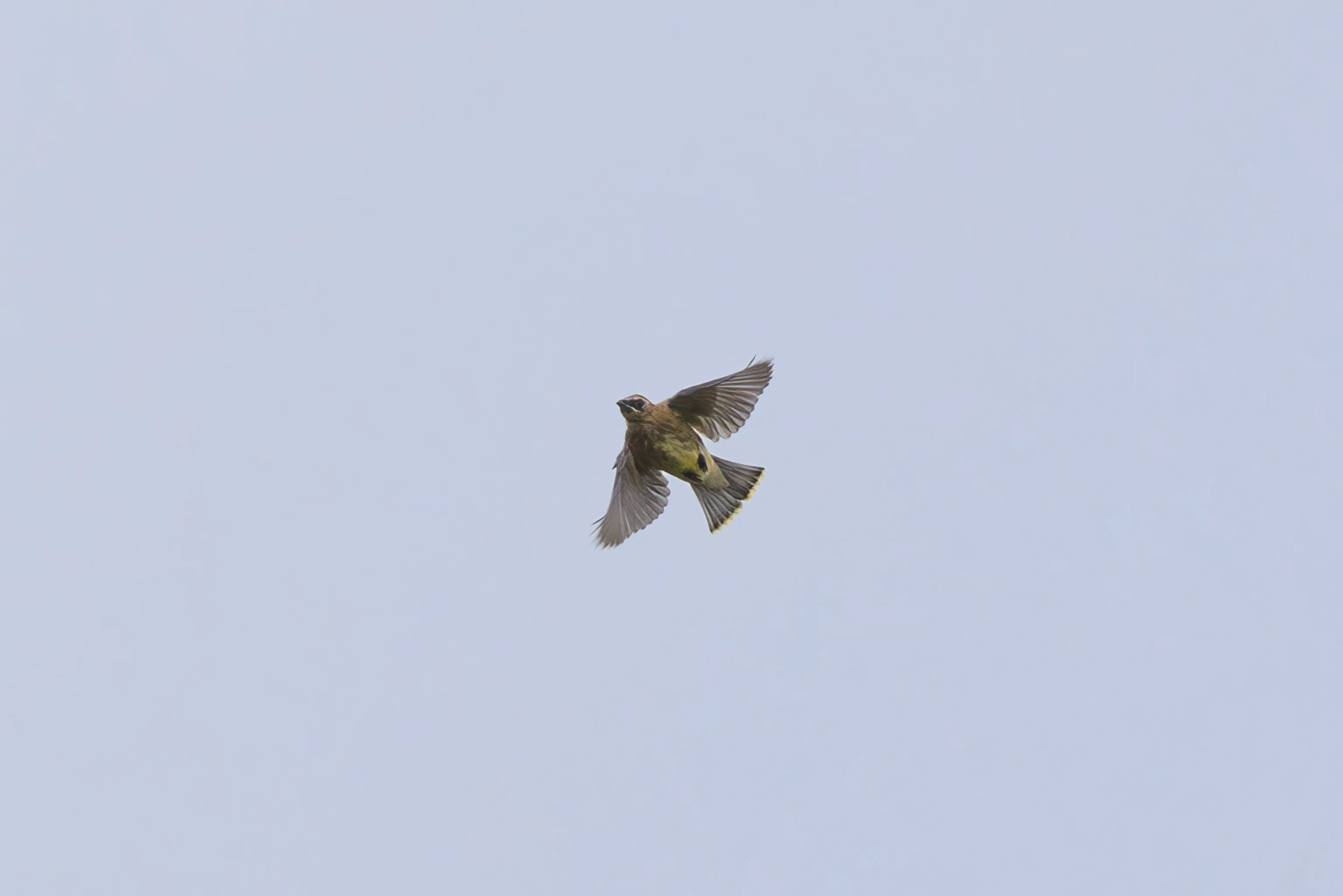
We noticed quite a bit of flight activity near a somewhat distant tree. The birds in flight were Cedar Waxwings!
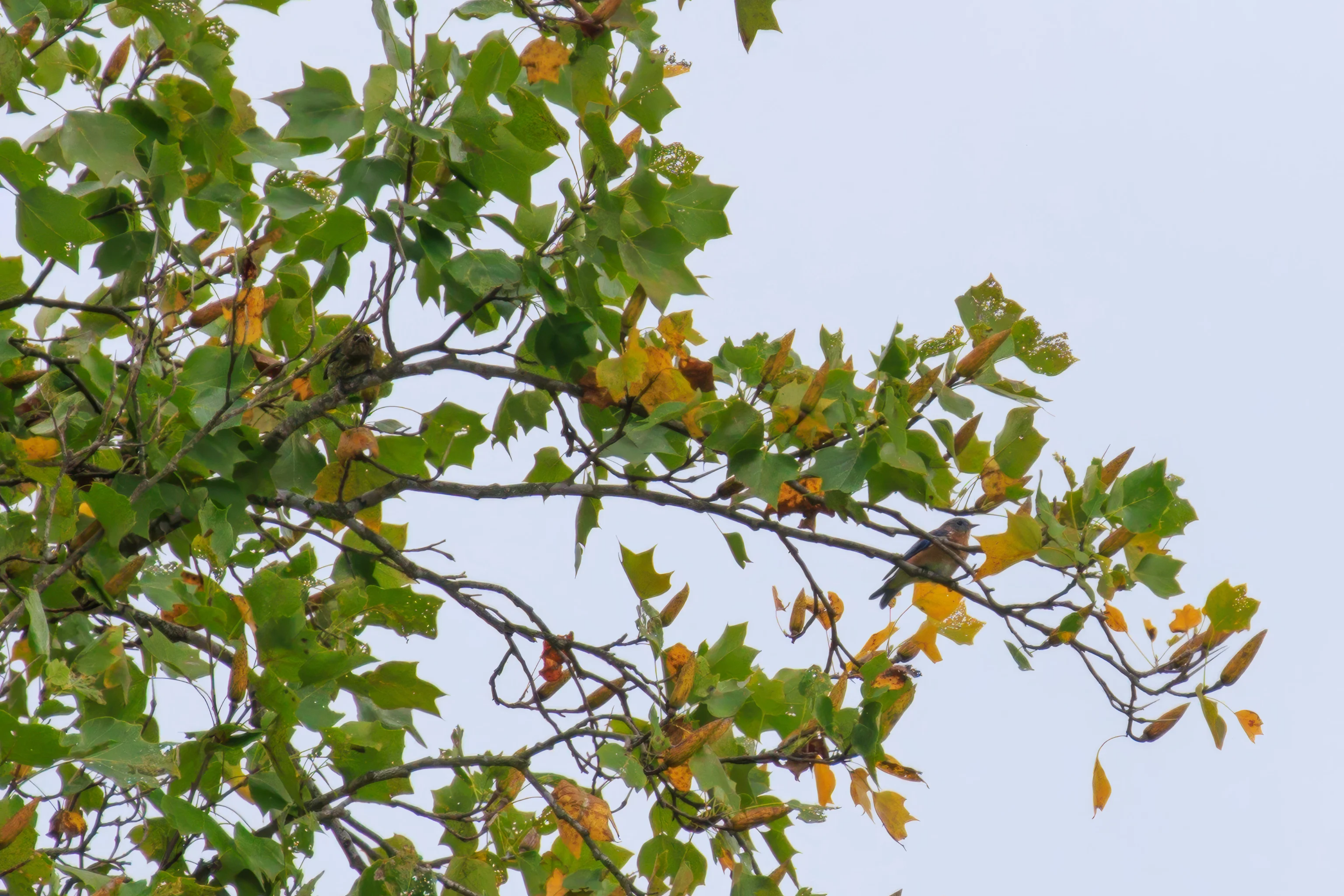
The tree they were near had quite a bit of leaves so it was hard to locate birds in the tree. We did find an Eastern Bluebird and a Cedar Waxwing at the edge though.
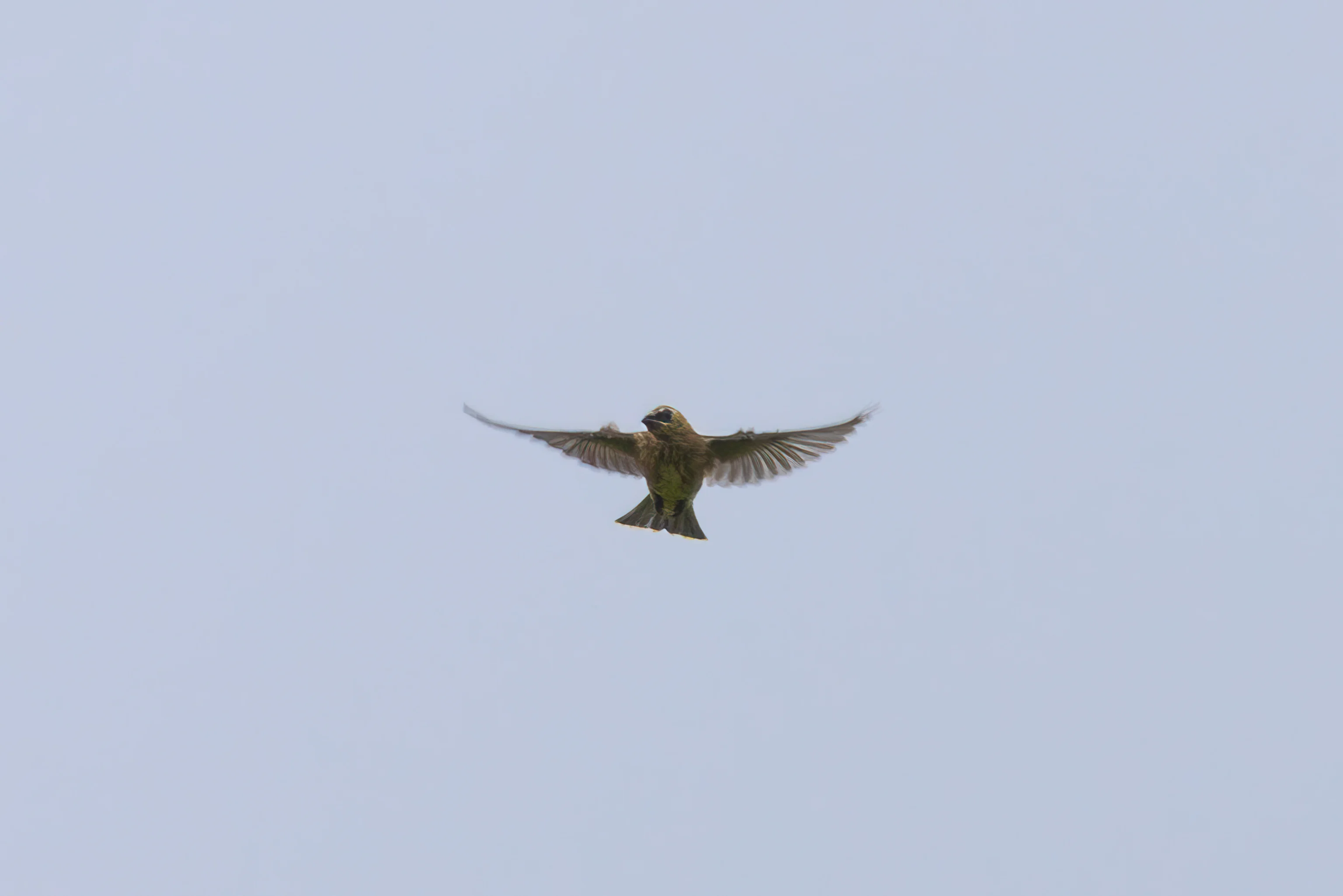
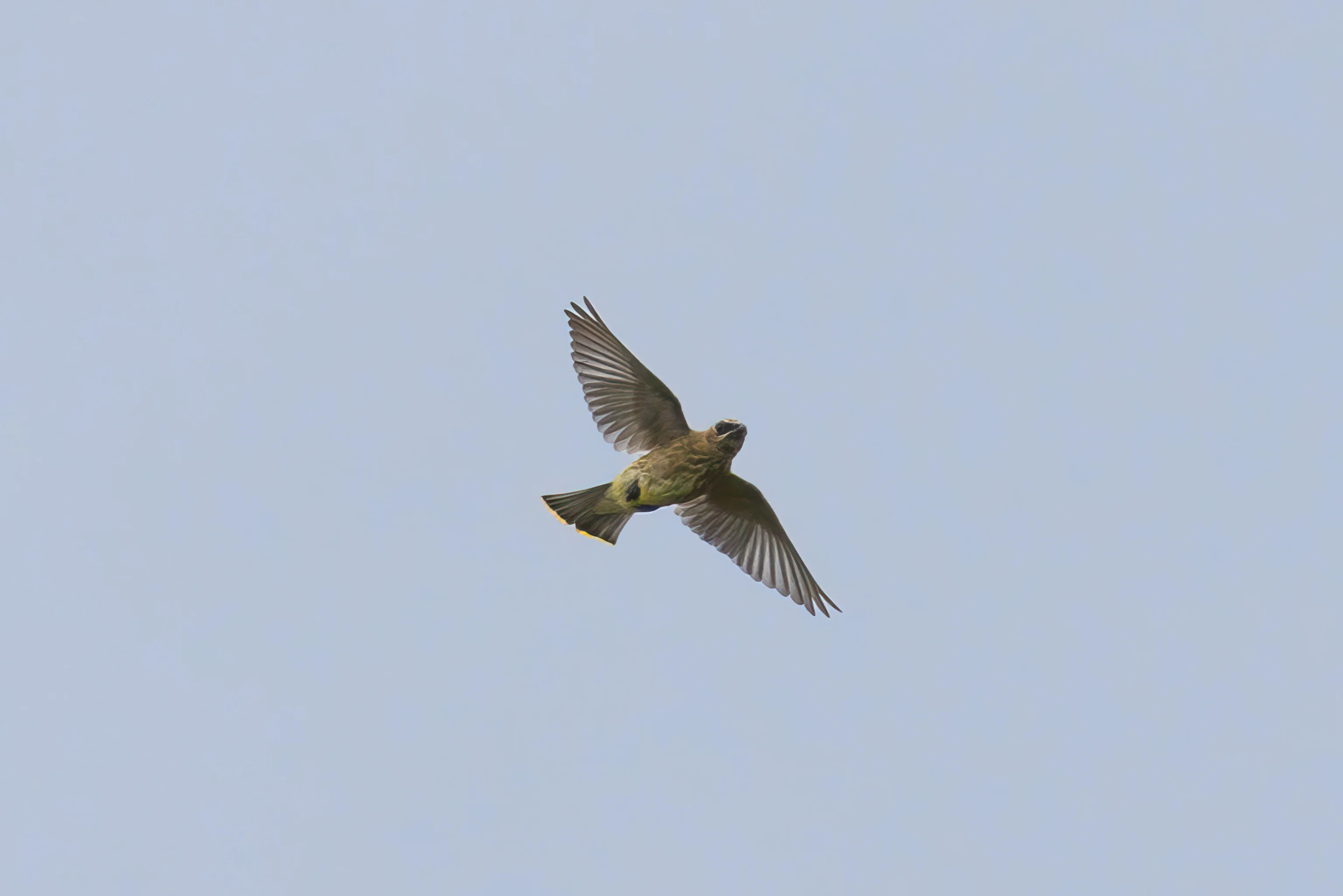
The way the Cedar Waxwings were flying, they seemed to be catching flying bugs. All About Birds indicates that they do eat “mayflies, dragonflies, and stoneflies, often caught on the wing.”
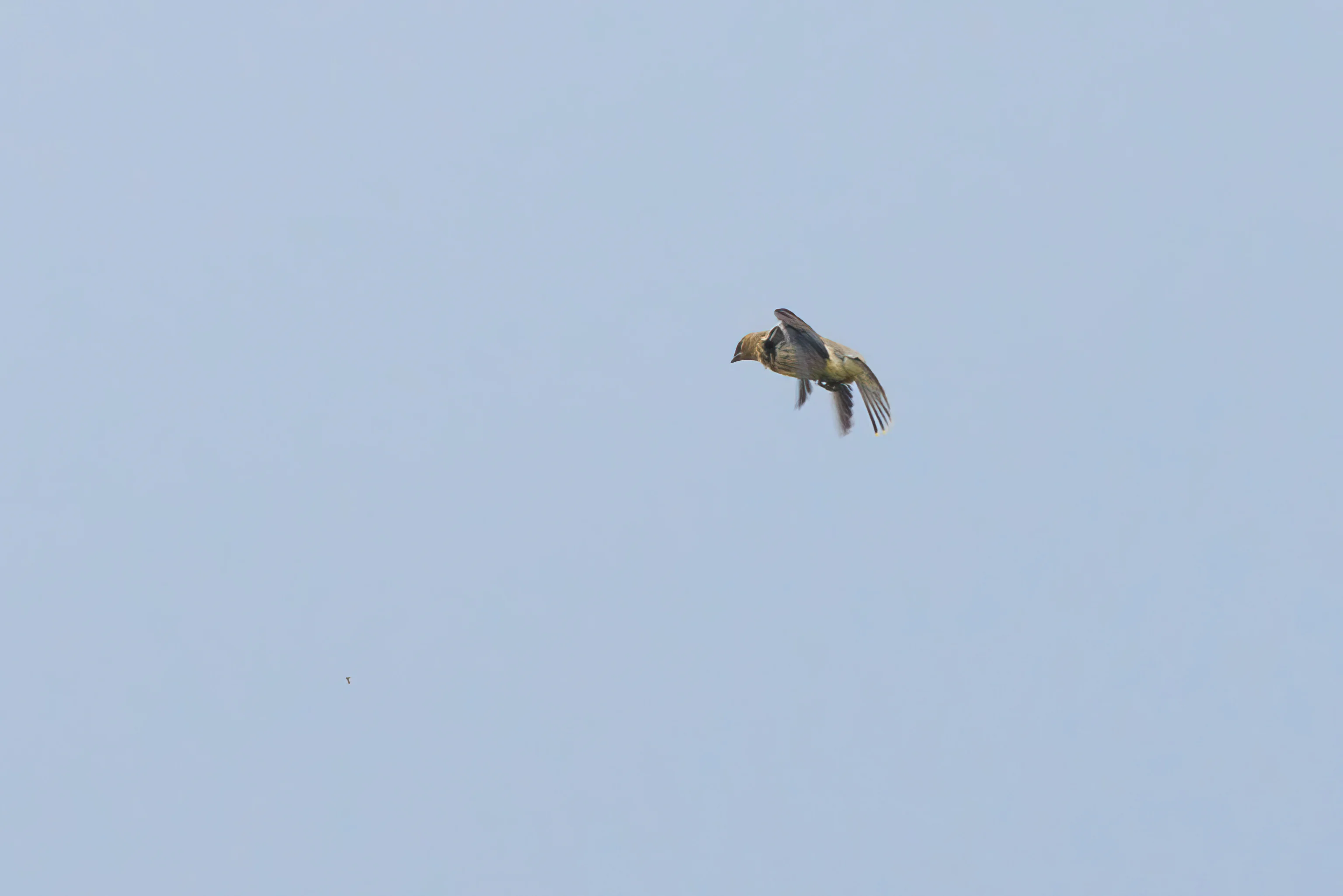
We photographed one of the waxwings as it seemed to be targeting a bug.
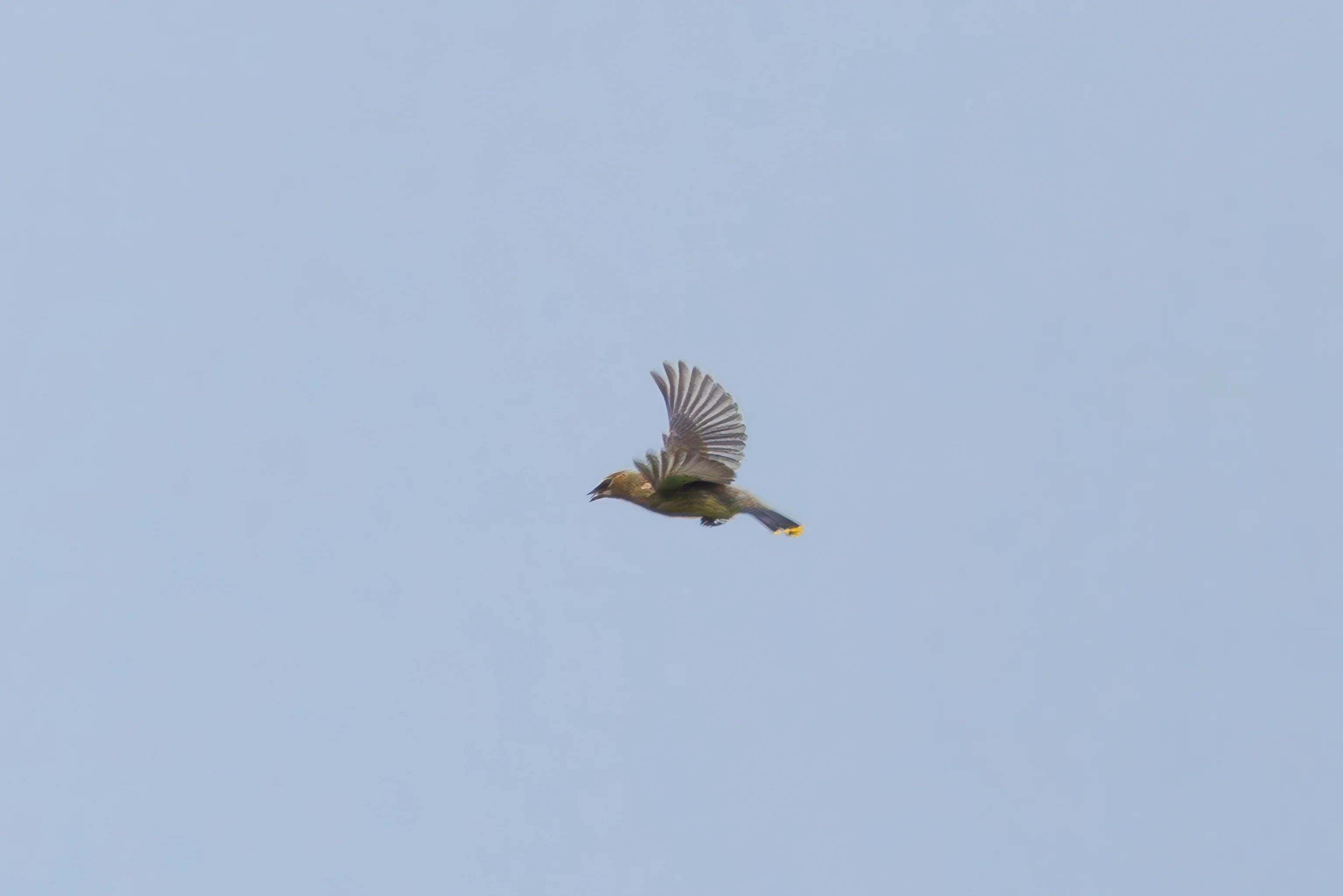
Maybe it caught it?
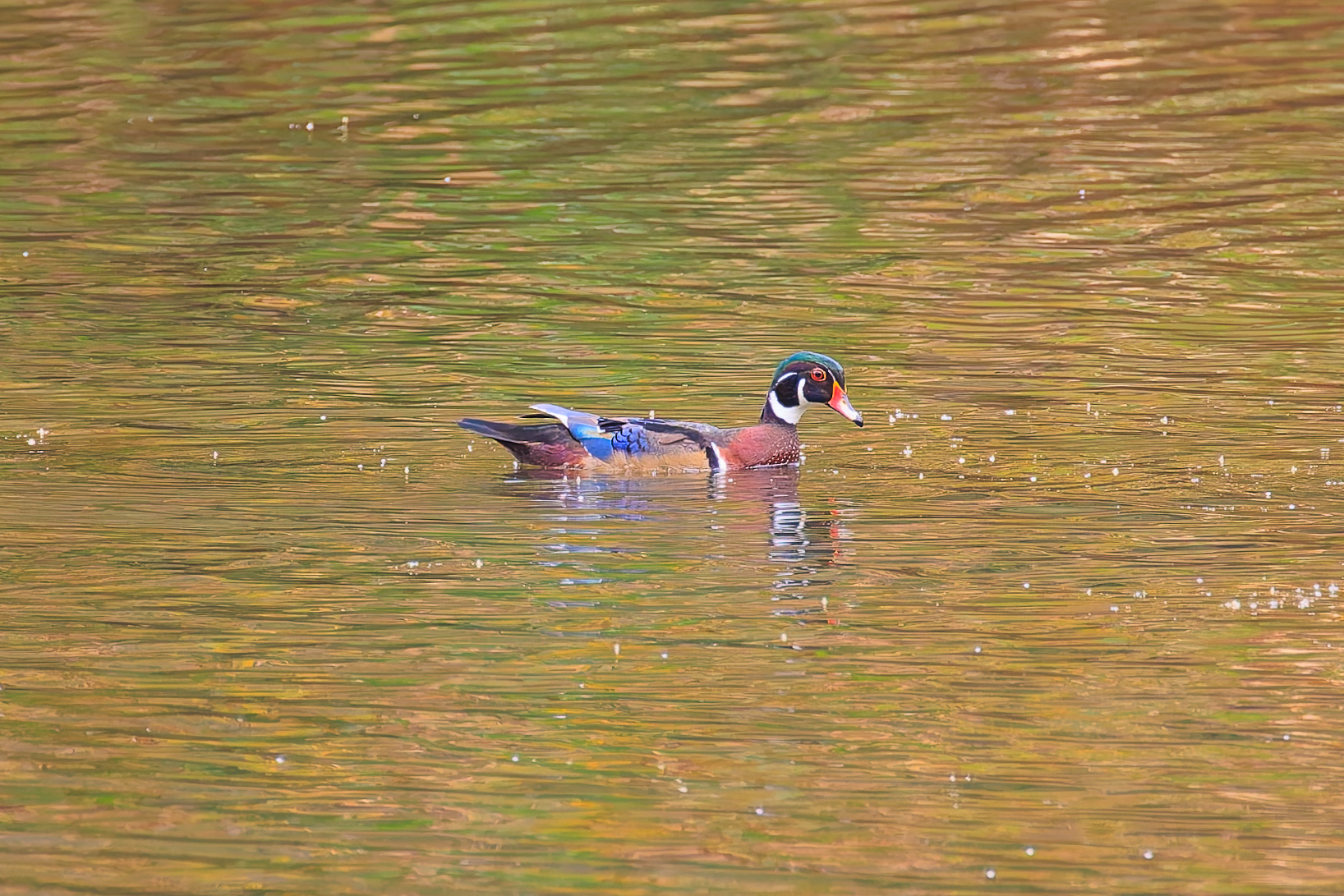
As we approached the large pond, Lake Caroline, we spotted Wood Ducks again! We only saw six today though.
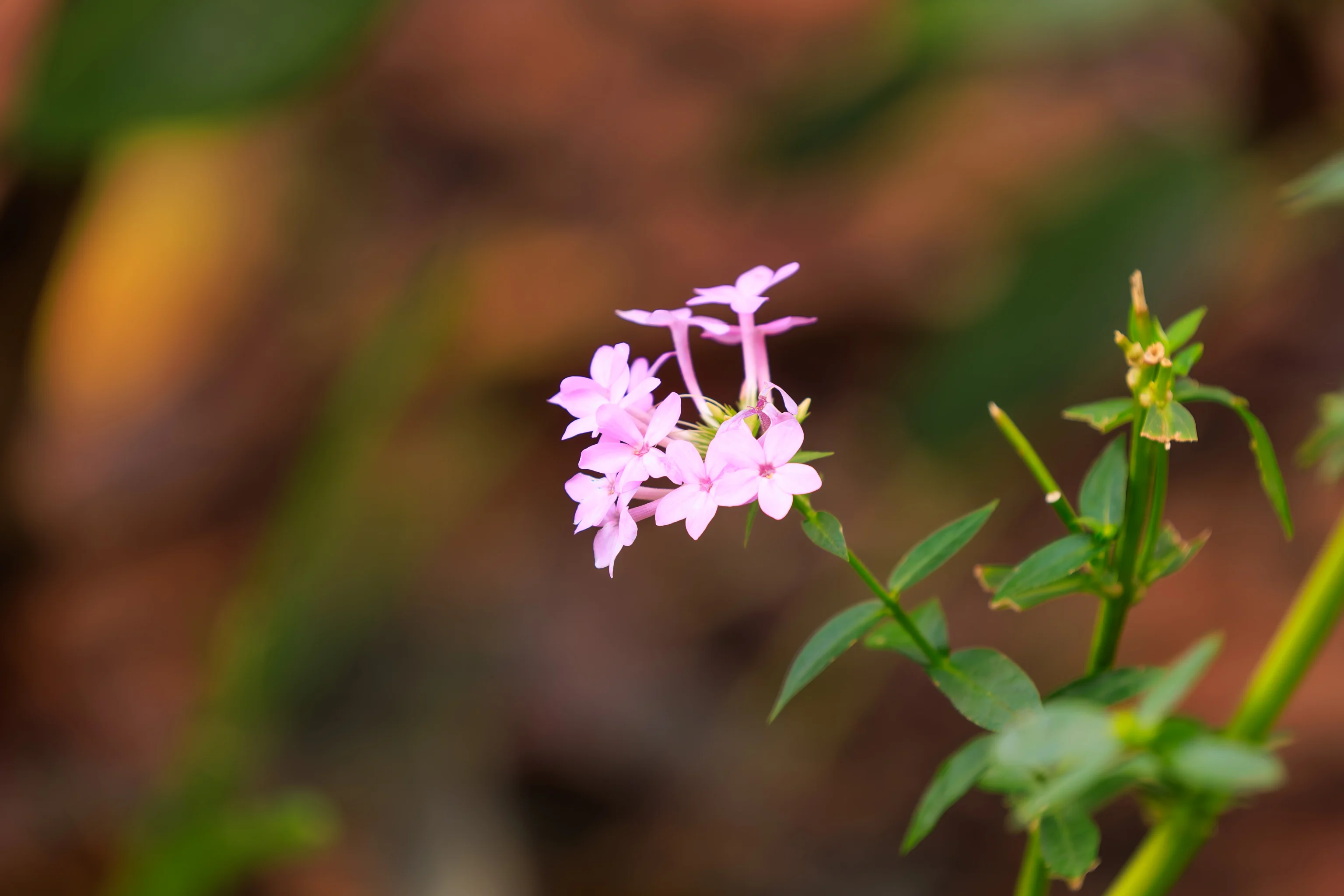
These flowers were at the eastern tip of Lake Caroline. Possibly a Phlox species?
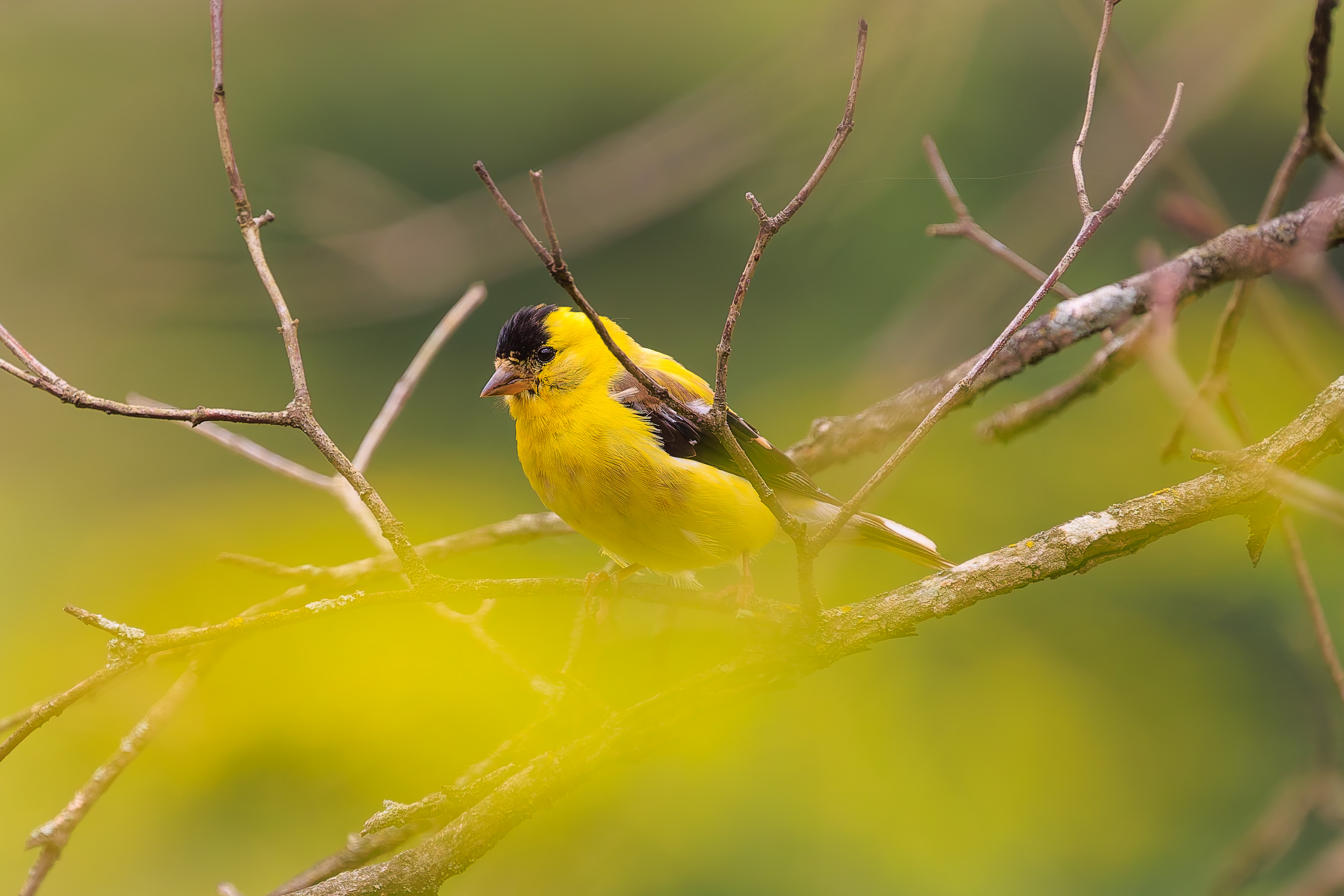
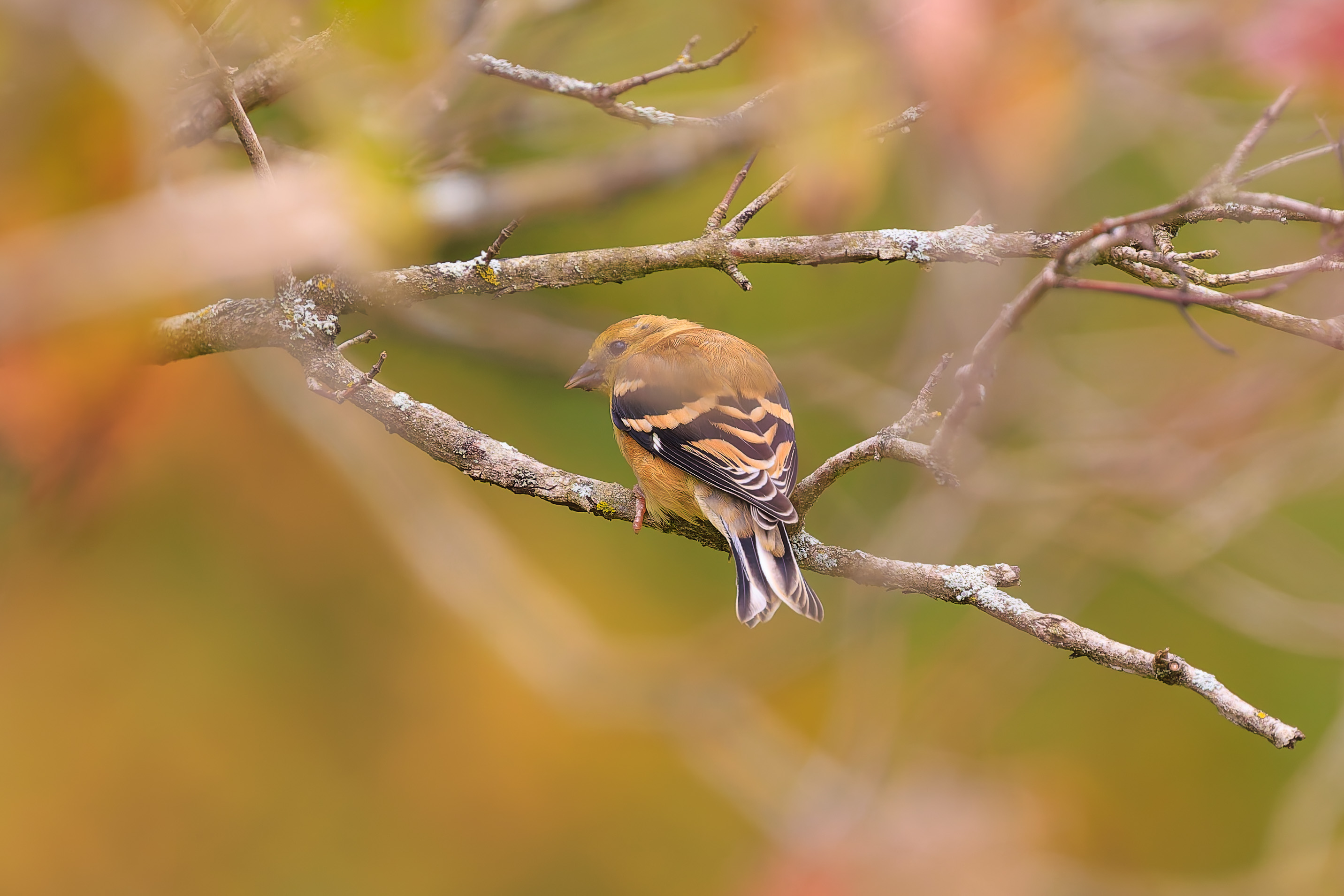
As we continued between Lake Caroline and Lake Gardiner, we spotted two more American Goldfinches. The bright yellow one is definitely a male while the other is either a female or immature male.
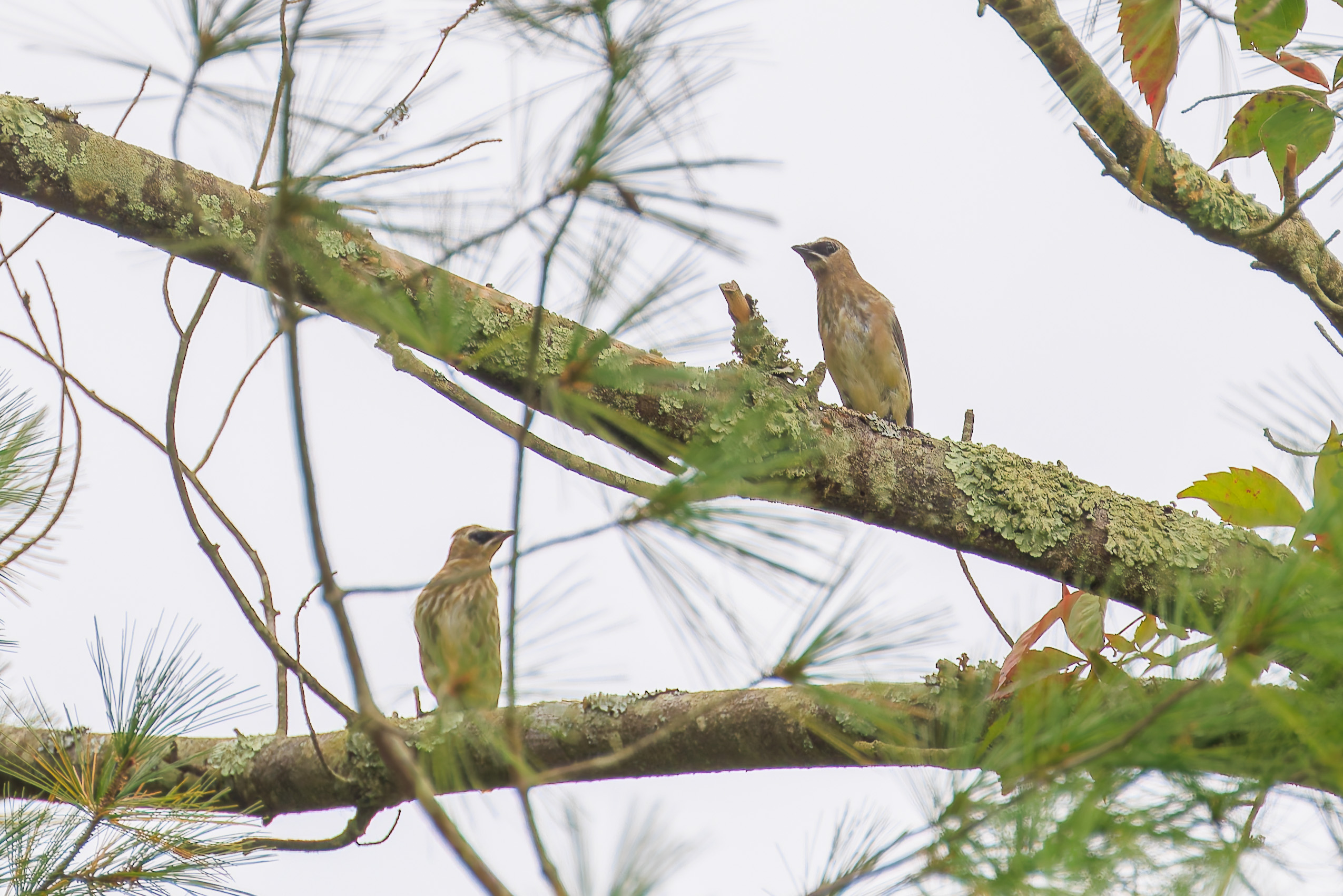
We also spotted two Cedar Waxwings here. They are immatures given their messy appearance.
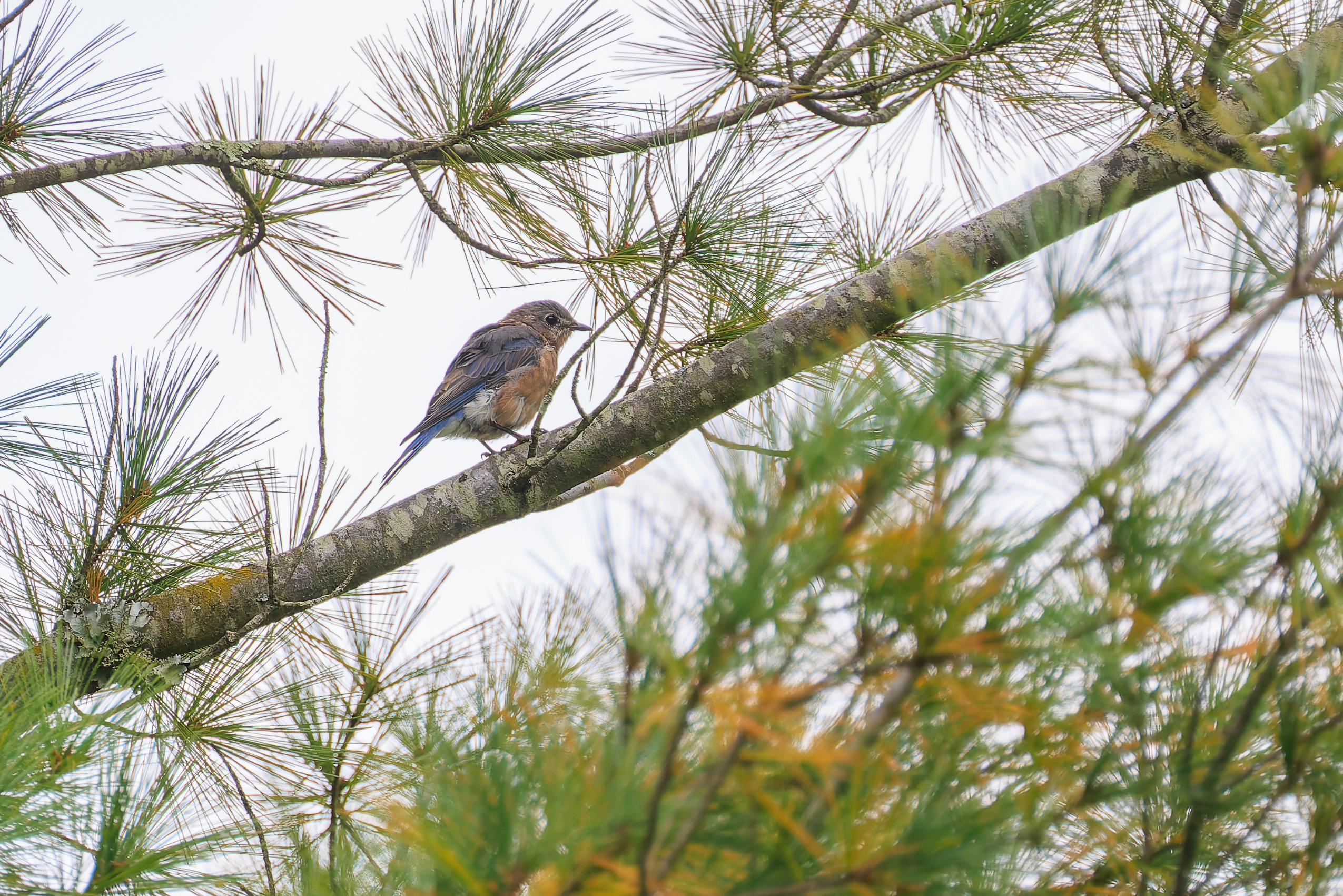
There was also an Eastern Bluebird here.
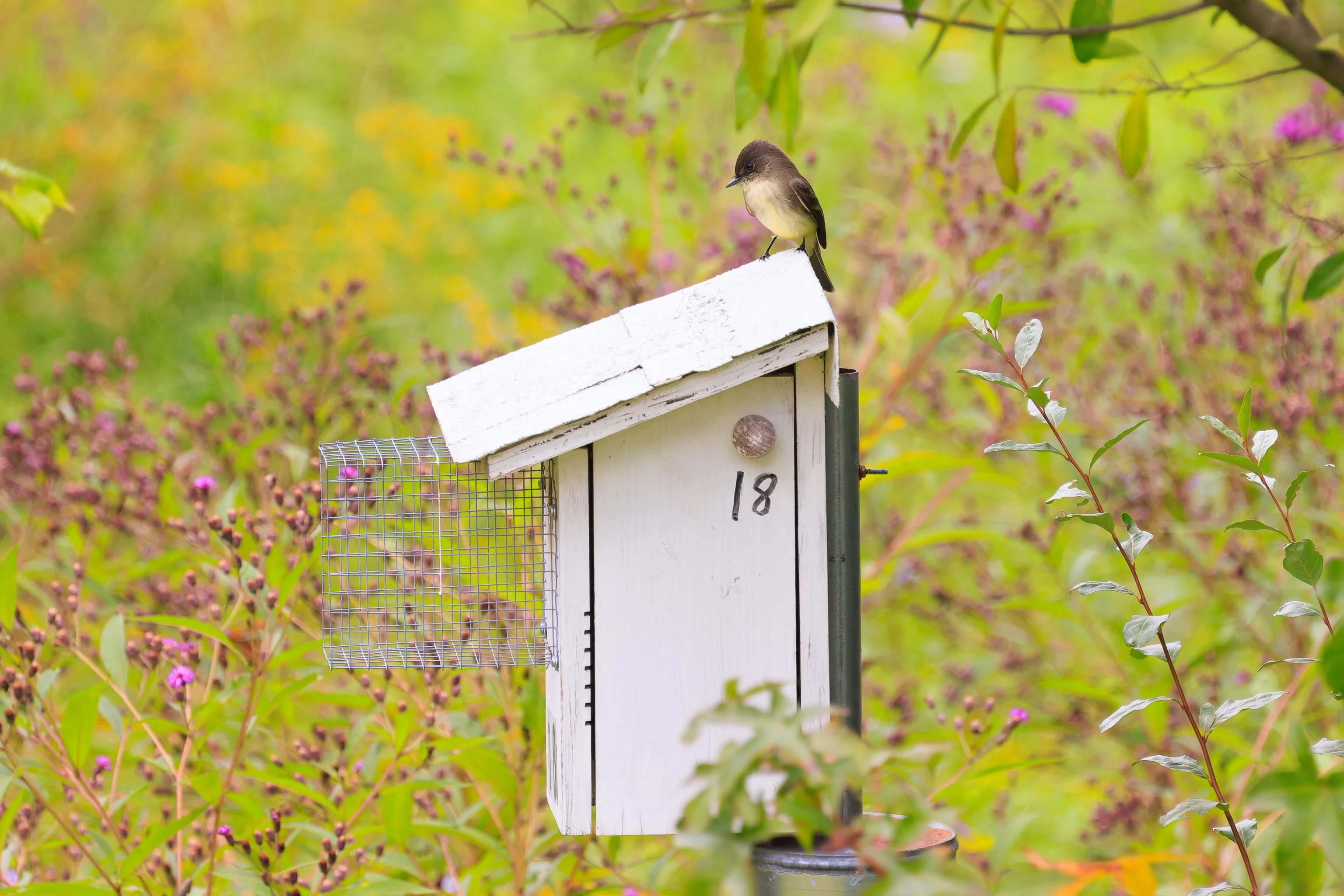
Just a bit further to the north, we spotted an Eastern Phoebe perched atop a nest box.
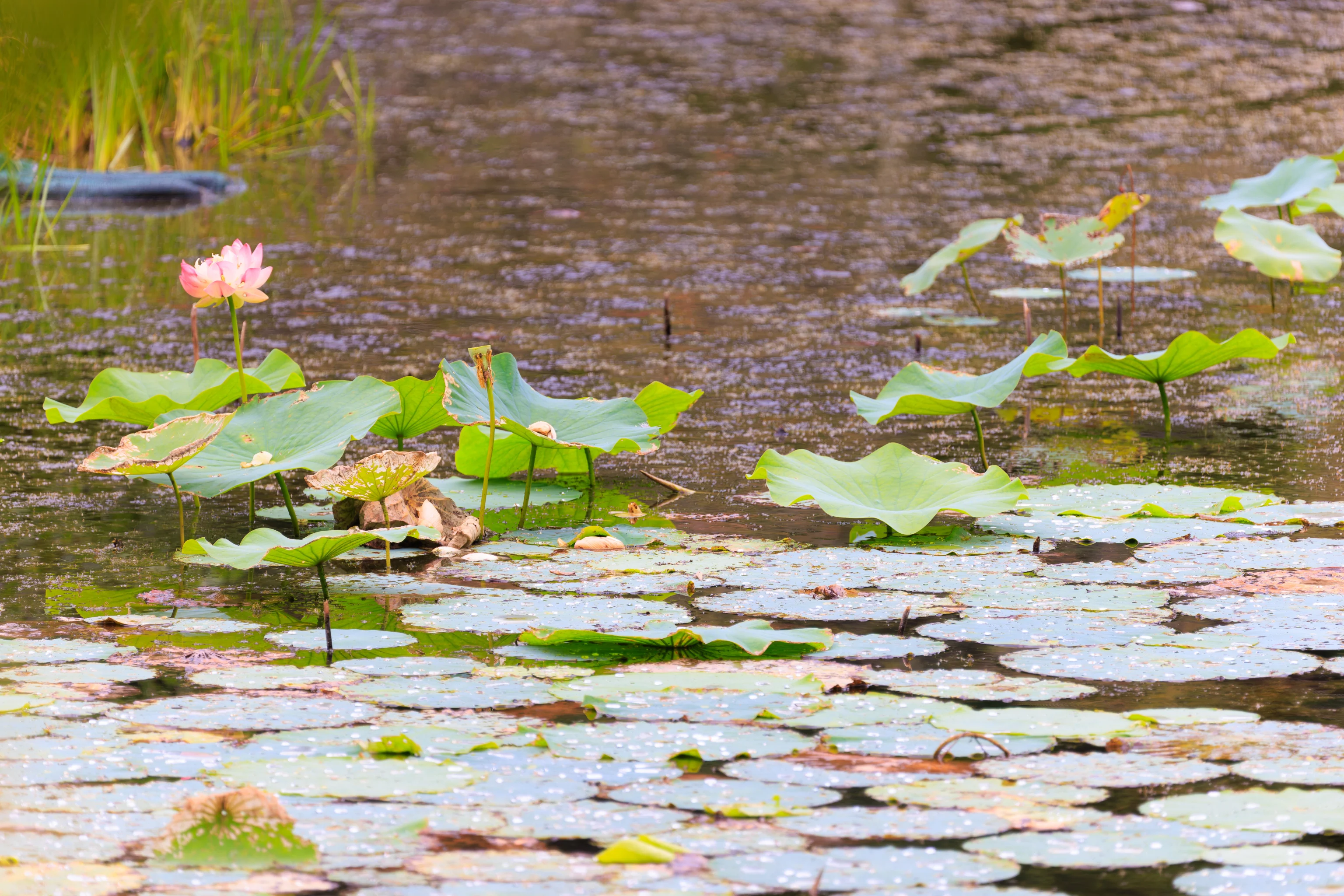
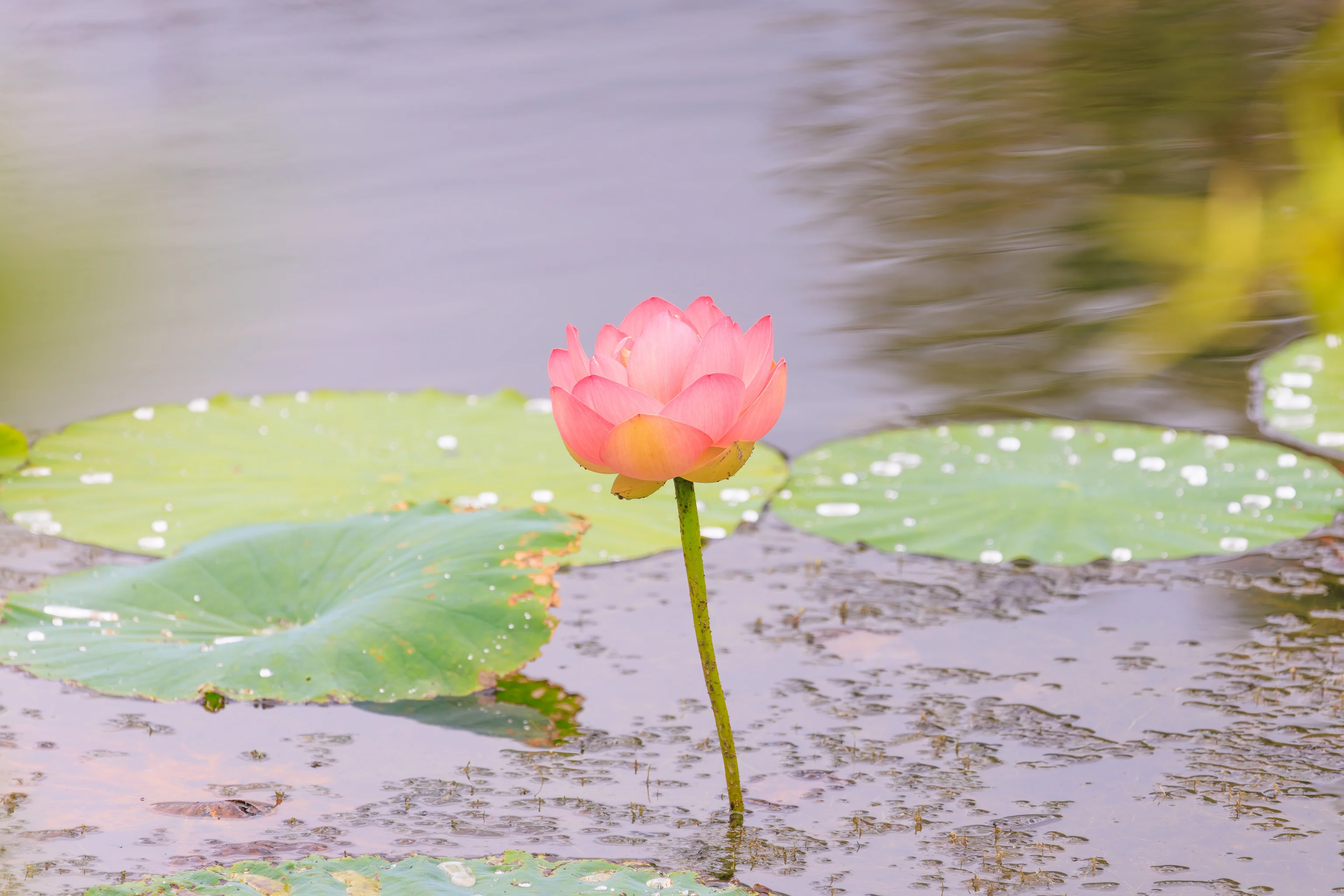
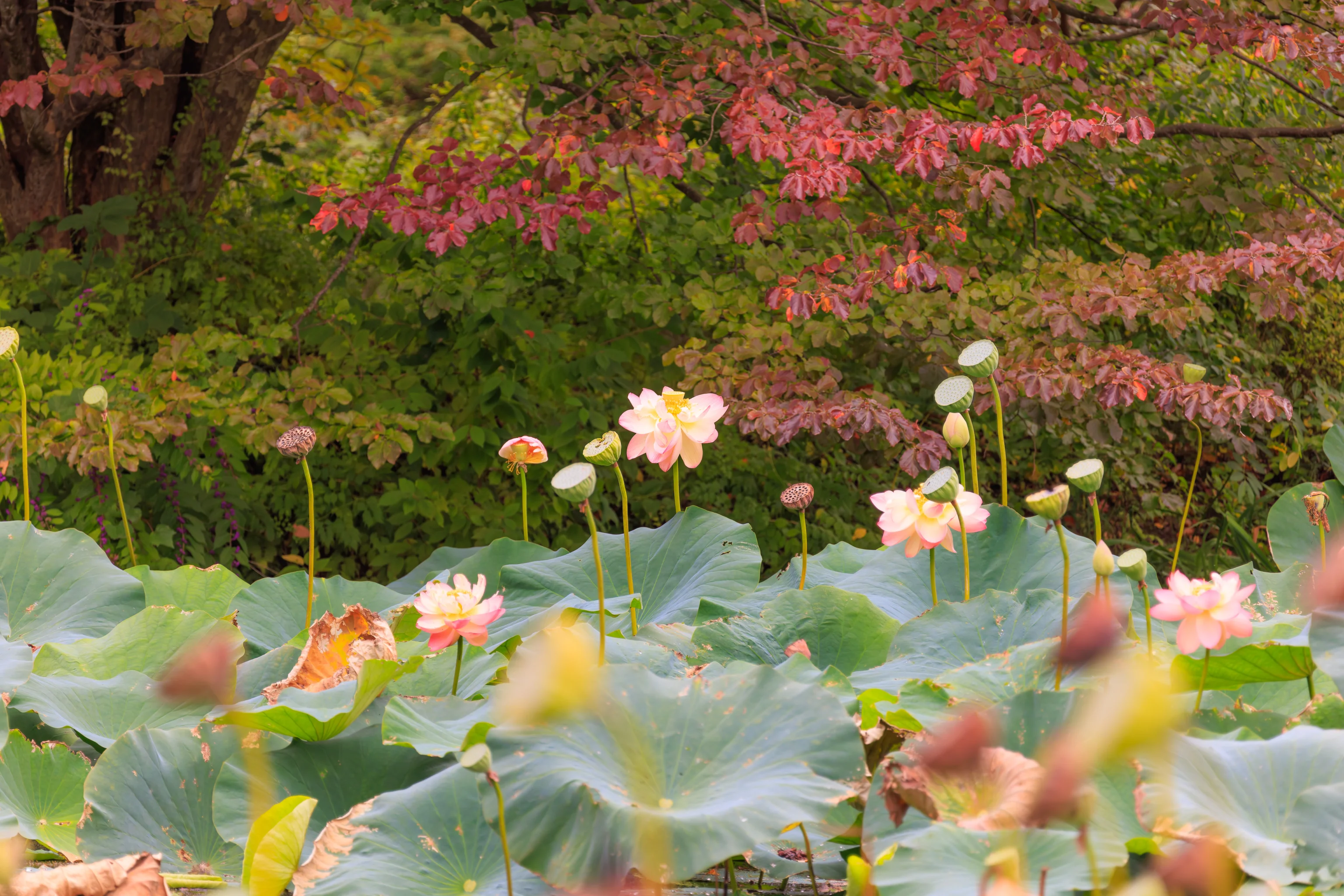
The lotuses were a familiar scene…
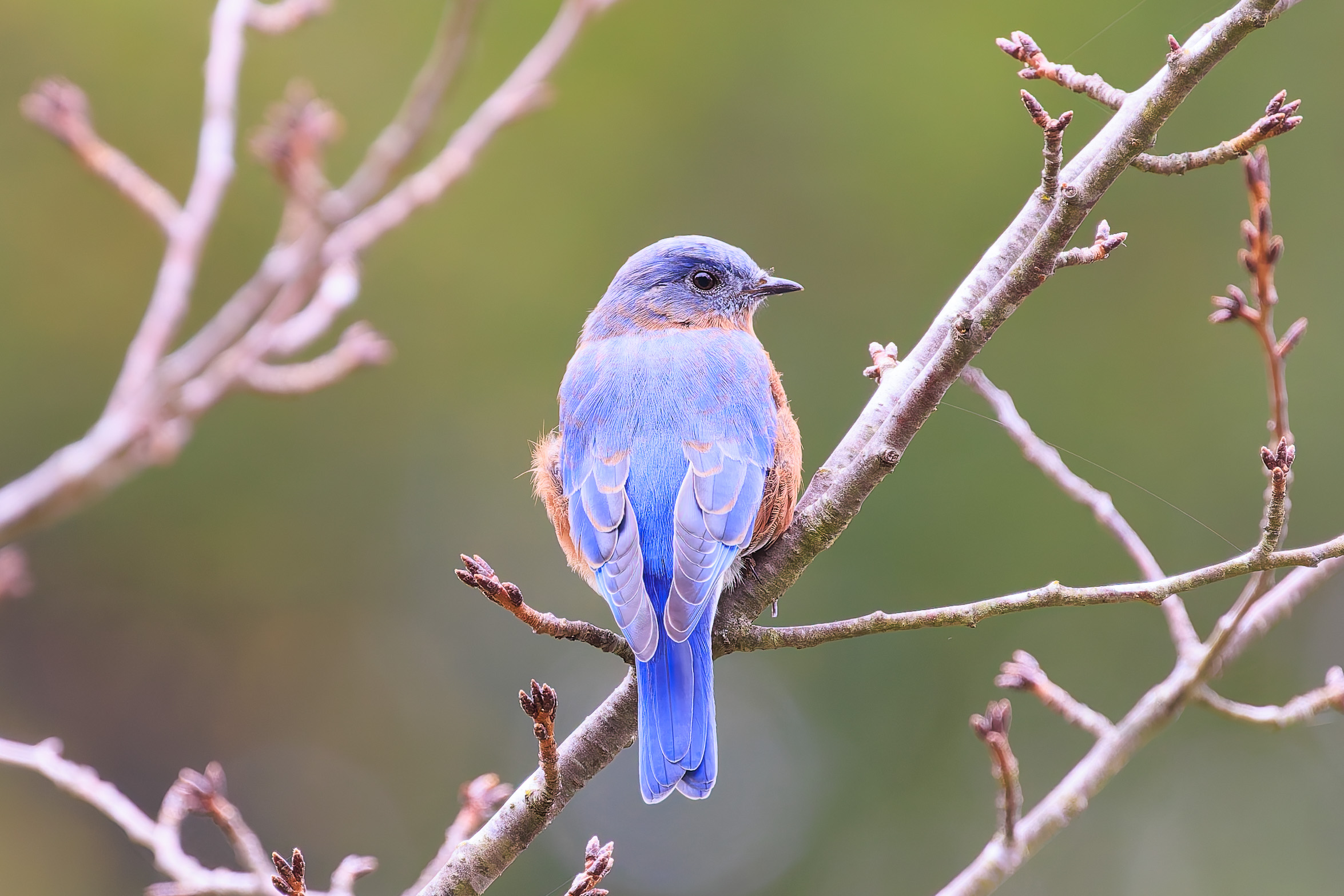
By now, we were on the northeastern side of Lake Gardiner. We managed to capture a very beautiful phot of a male Eastern Bluebird! His fine blue feathers caused a bit of a moire pattern on the photo.
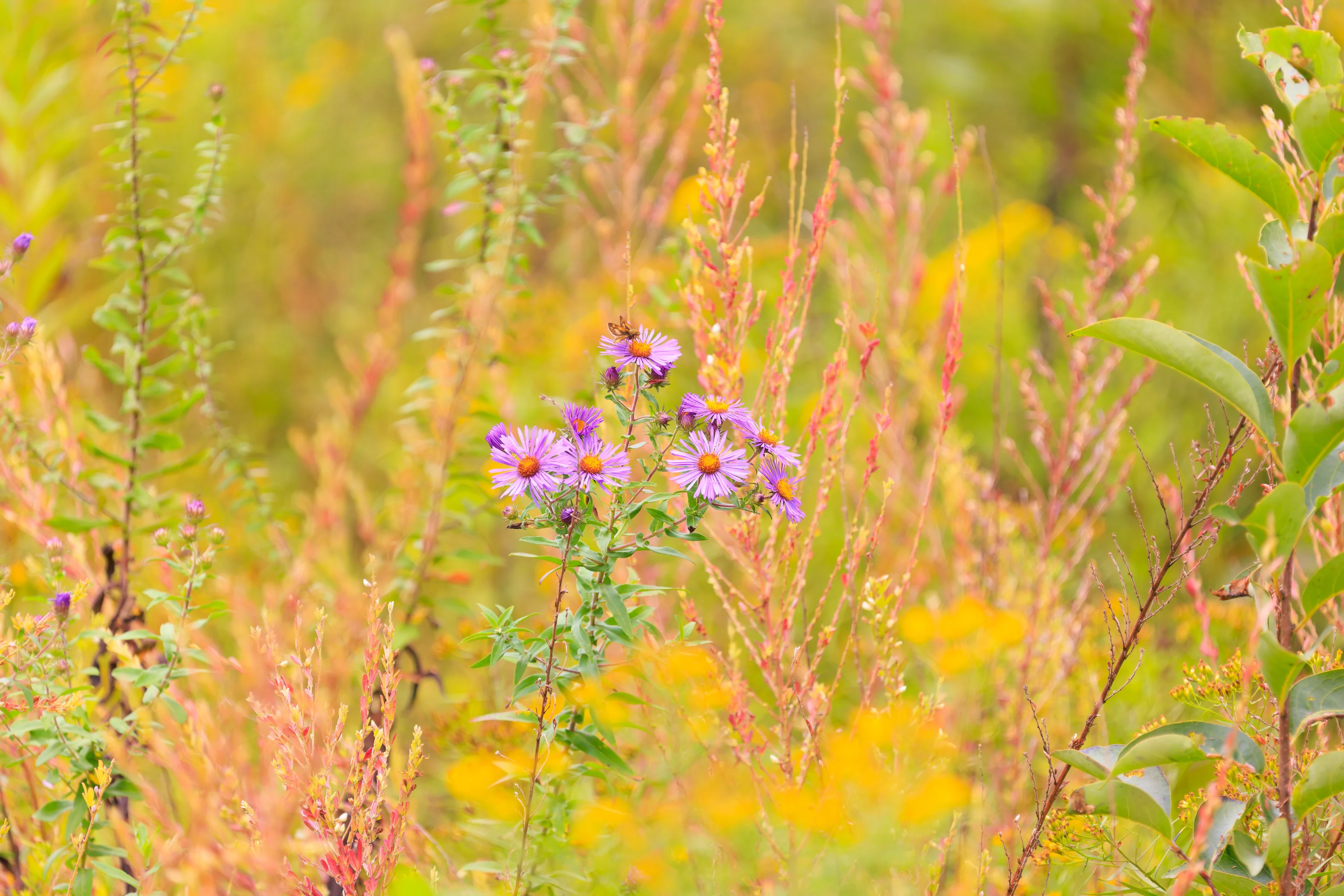
There is a large field of grasses and wildflowers to the east of Lake Gardiner. Maybe a kind of American Aster?
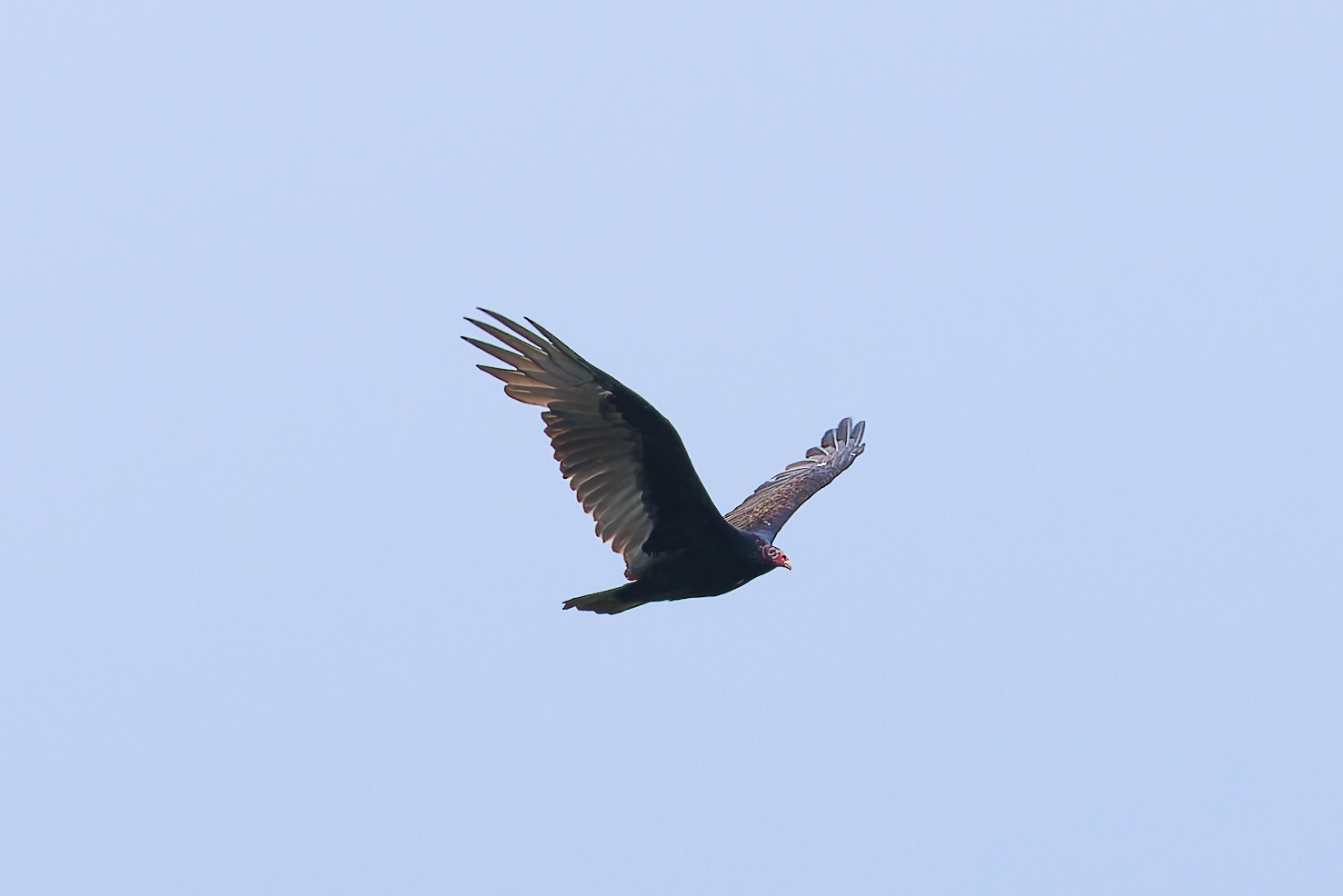
Up above, we saw a Turkey Vulture soaring. We still find it amusing that this species was part of a bird show at the Jurong Bird Park in Singapore! They are extremely common birds here.
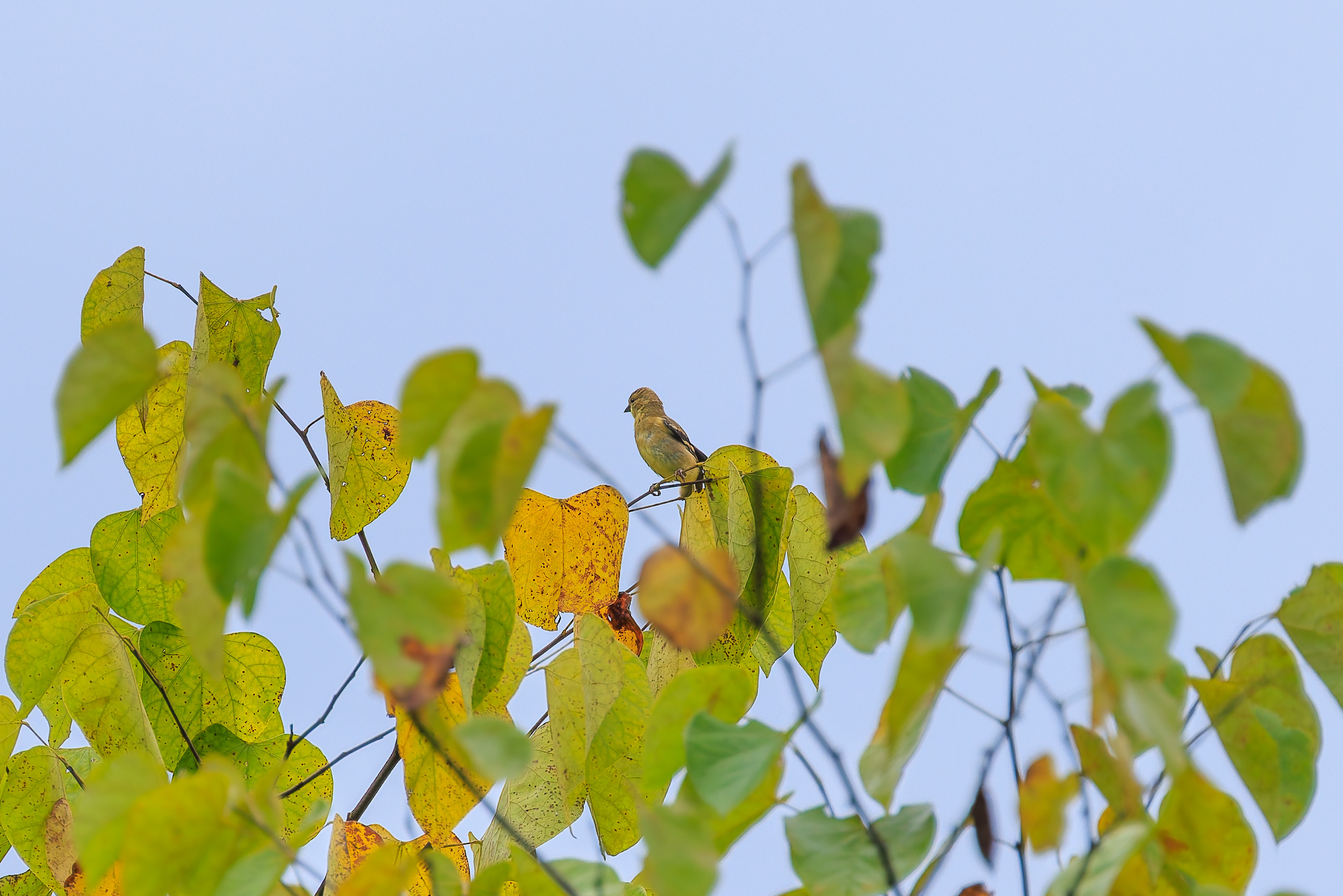
We were hoping to find more warblers today where we saw three different species yesterday. We did find another American Goldfinch.
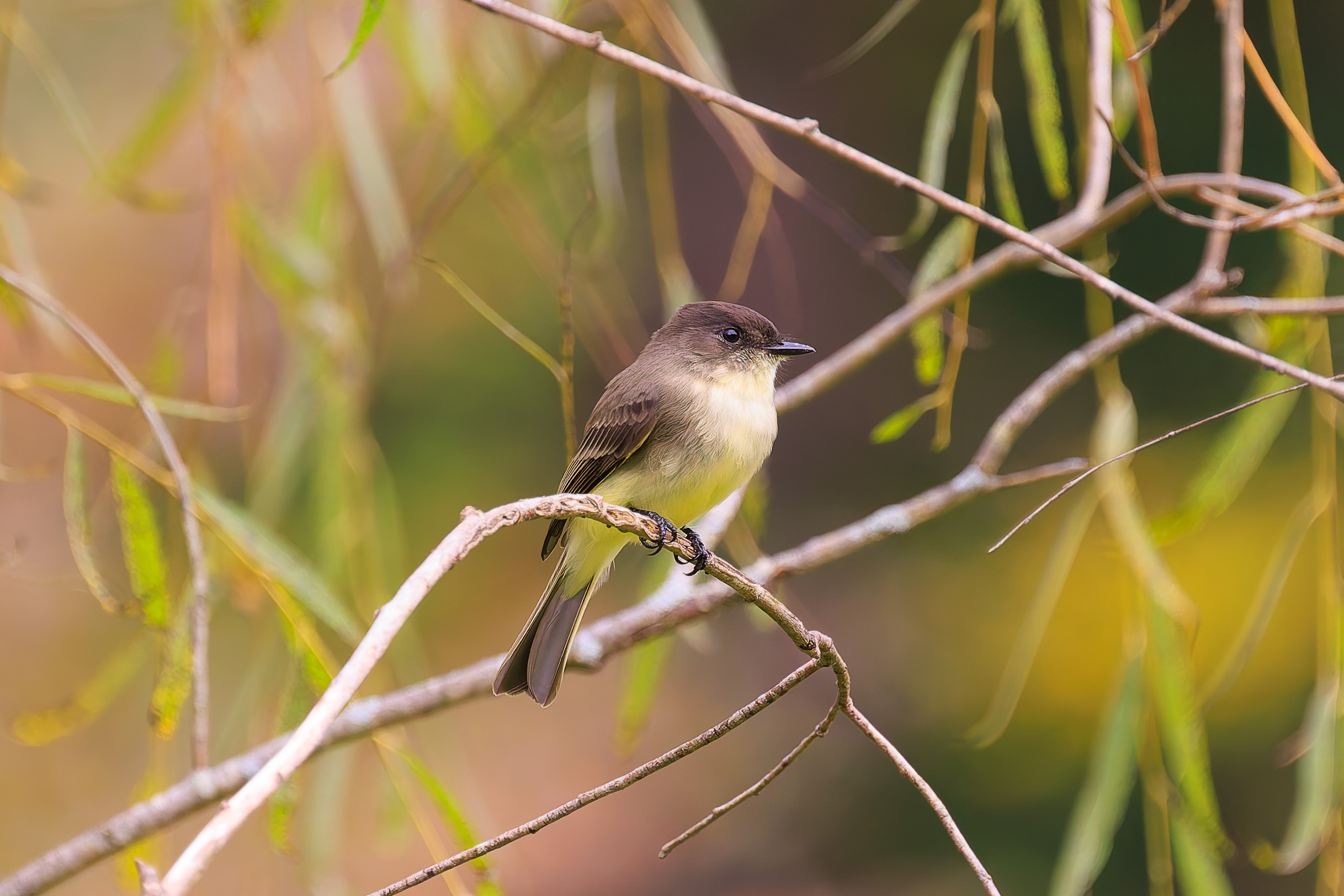
And, we found another Eastern Phoebe. Or maybe the same one. Probably the same one?
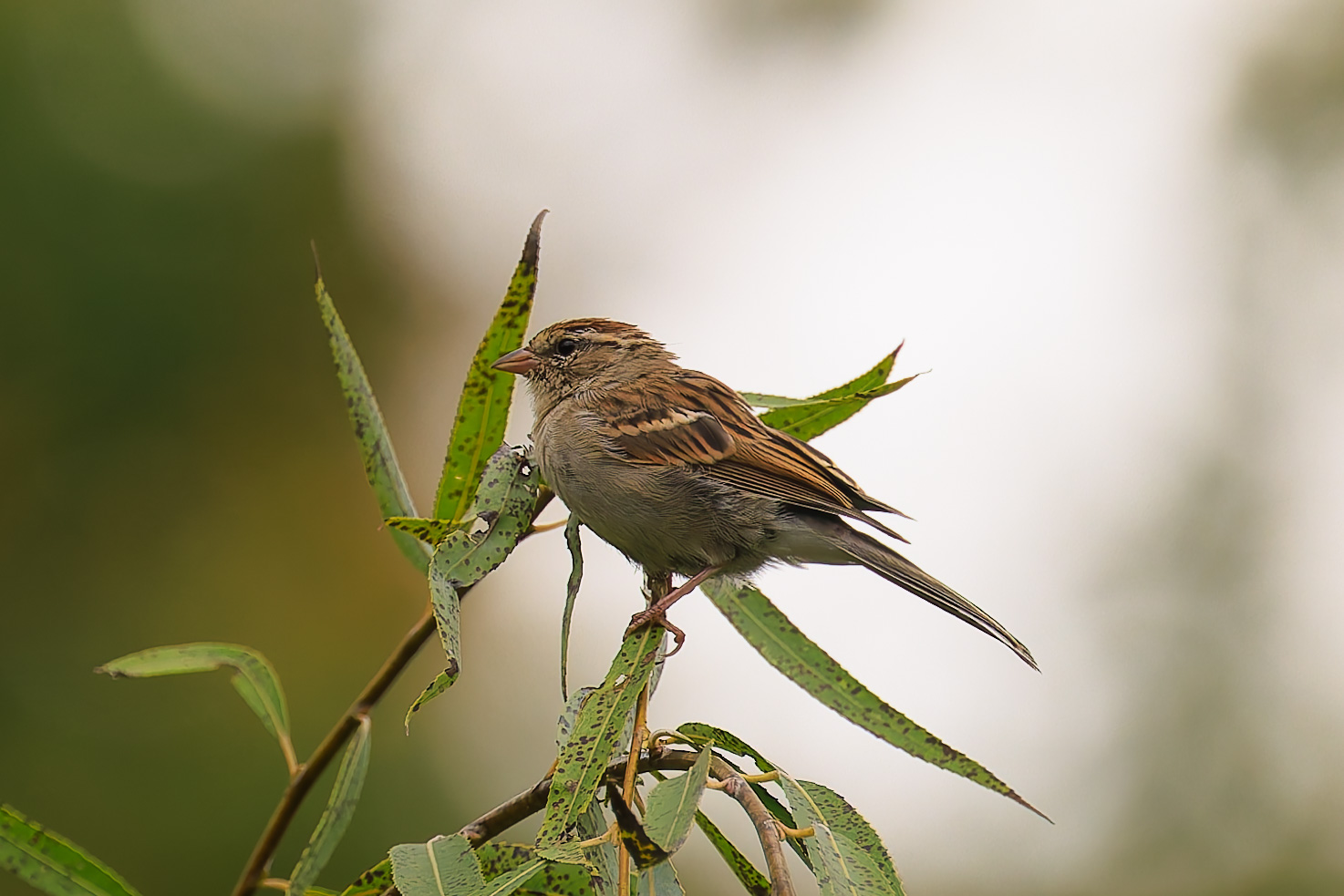
And, another Chipping Sparrow…
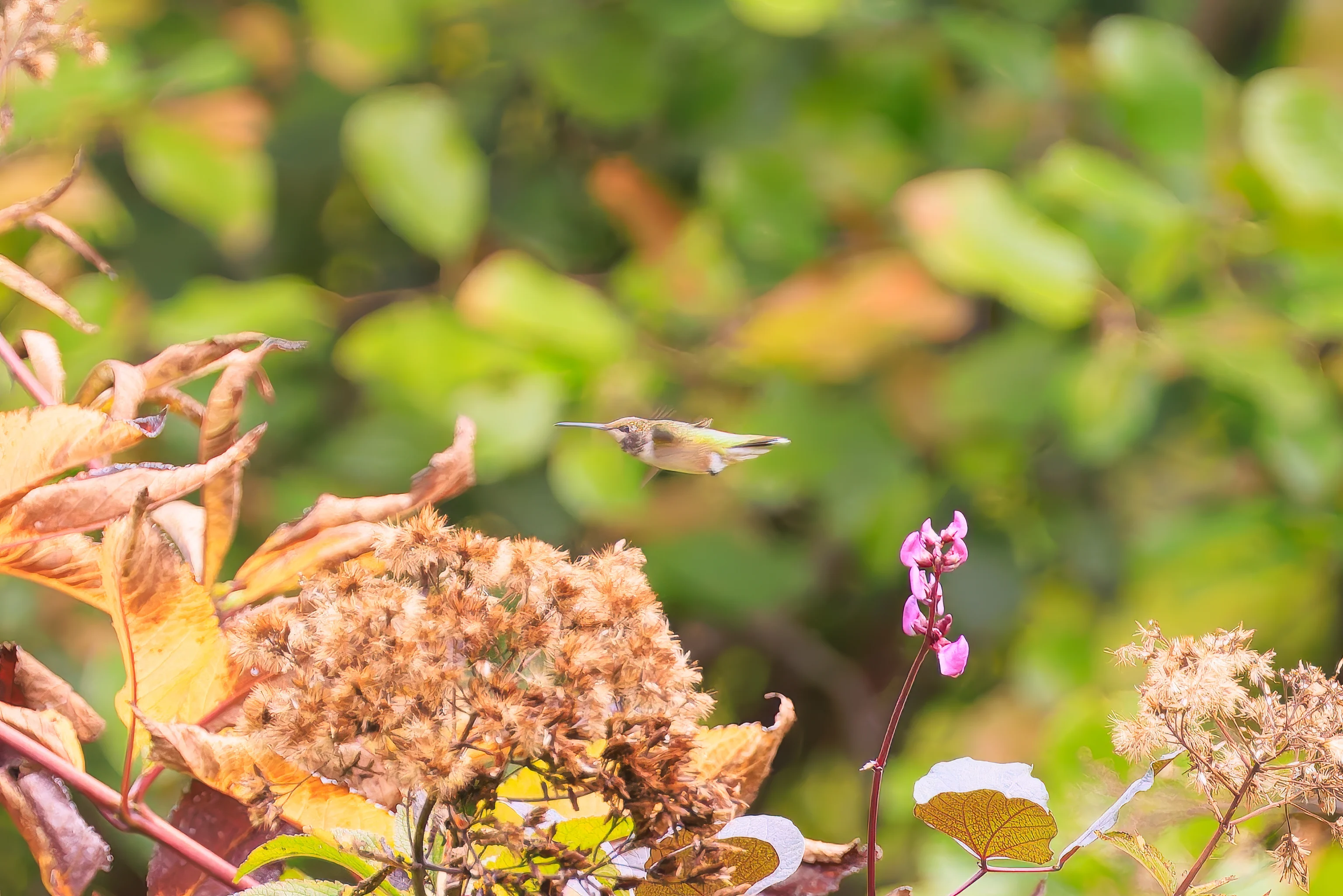
We were lucky to again spot a tiny fast moving bird. A Ruby-Throated Hummingbird, just like yesterday! We are pretty lucky to have gotten a photo of it in flight!
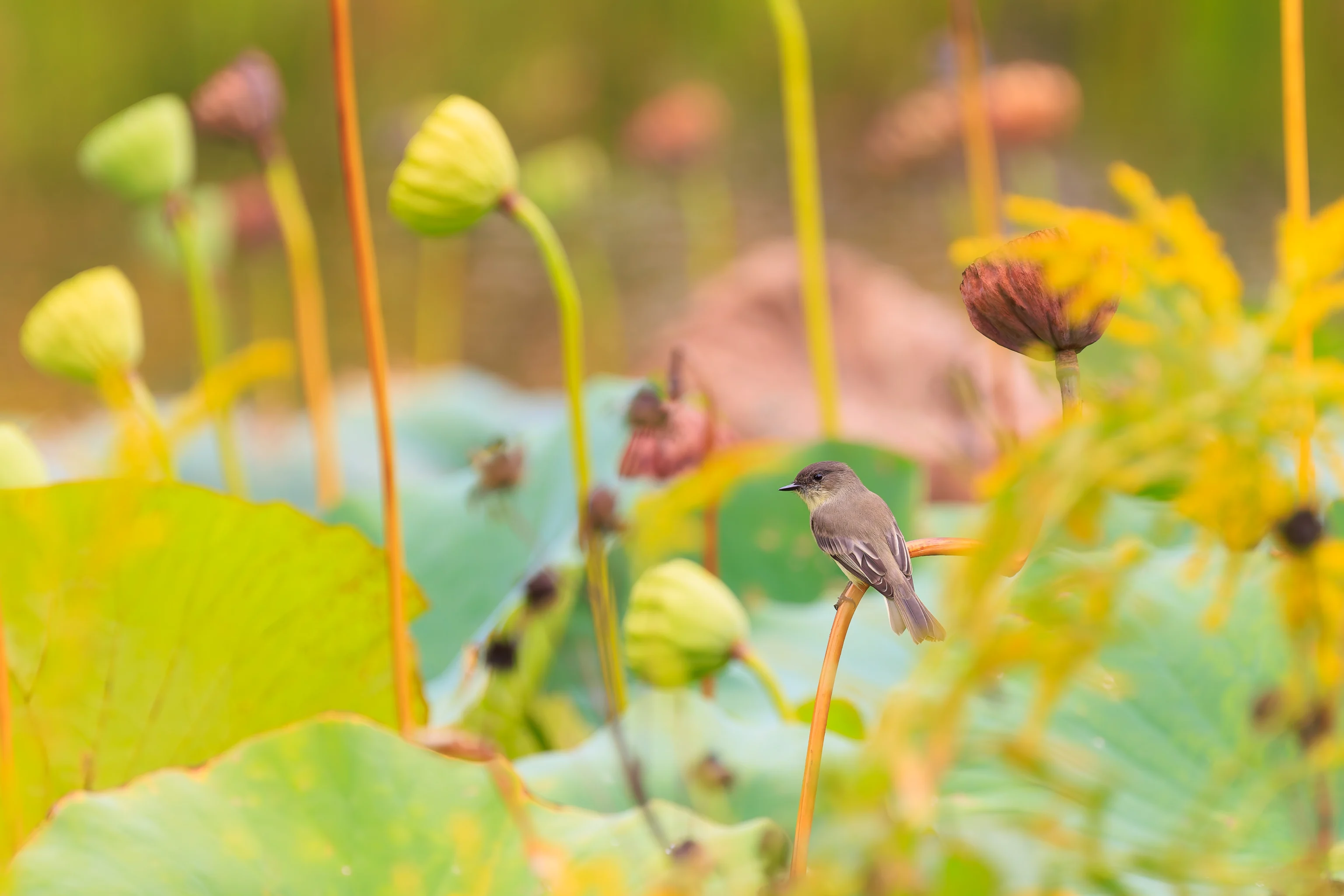
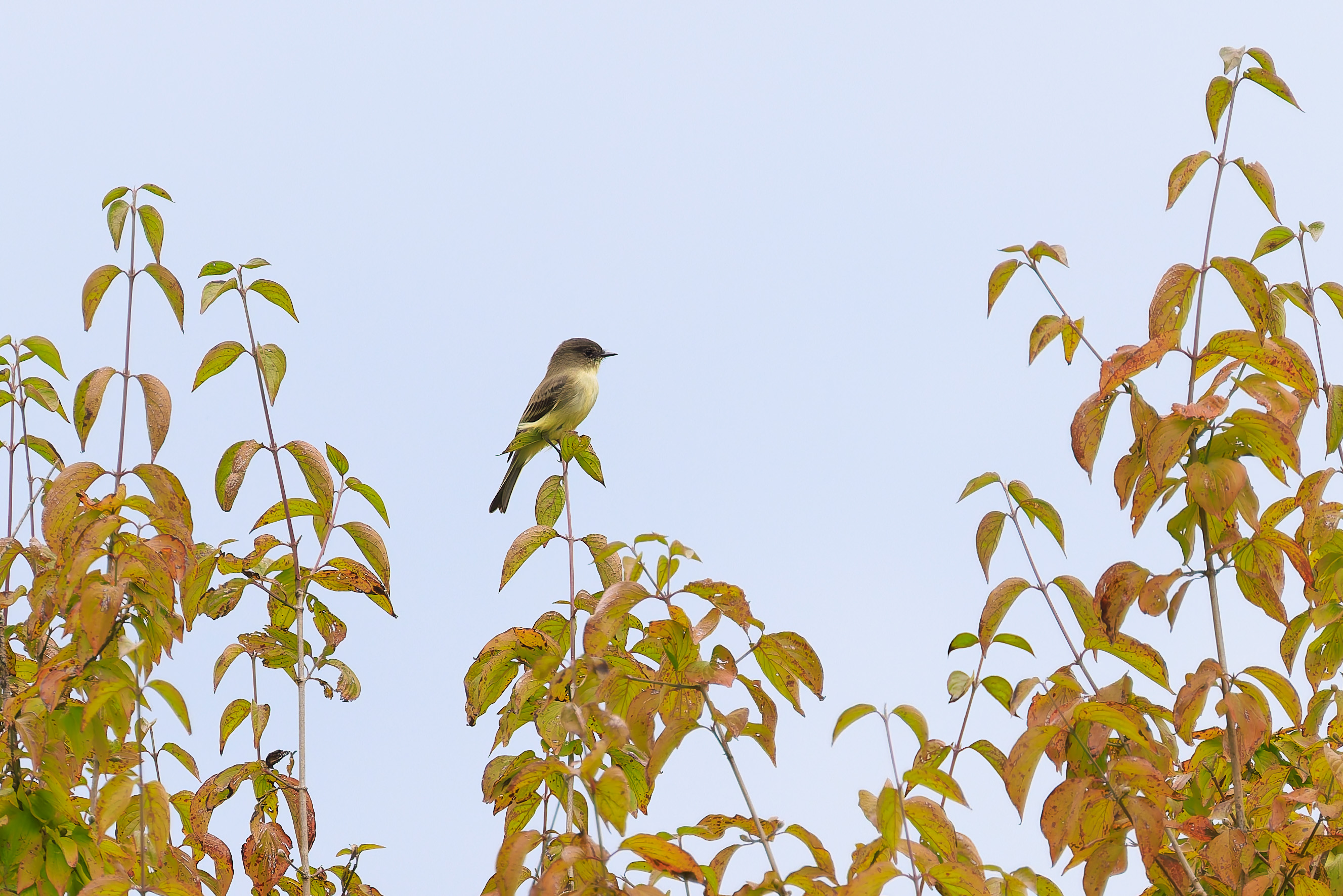
Another Eastern Phoebe? The same one again?
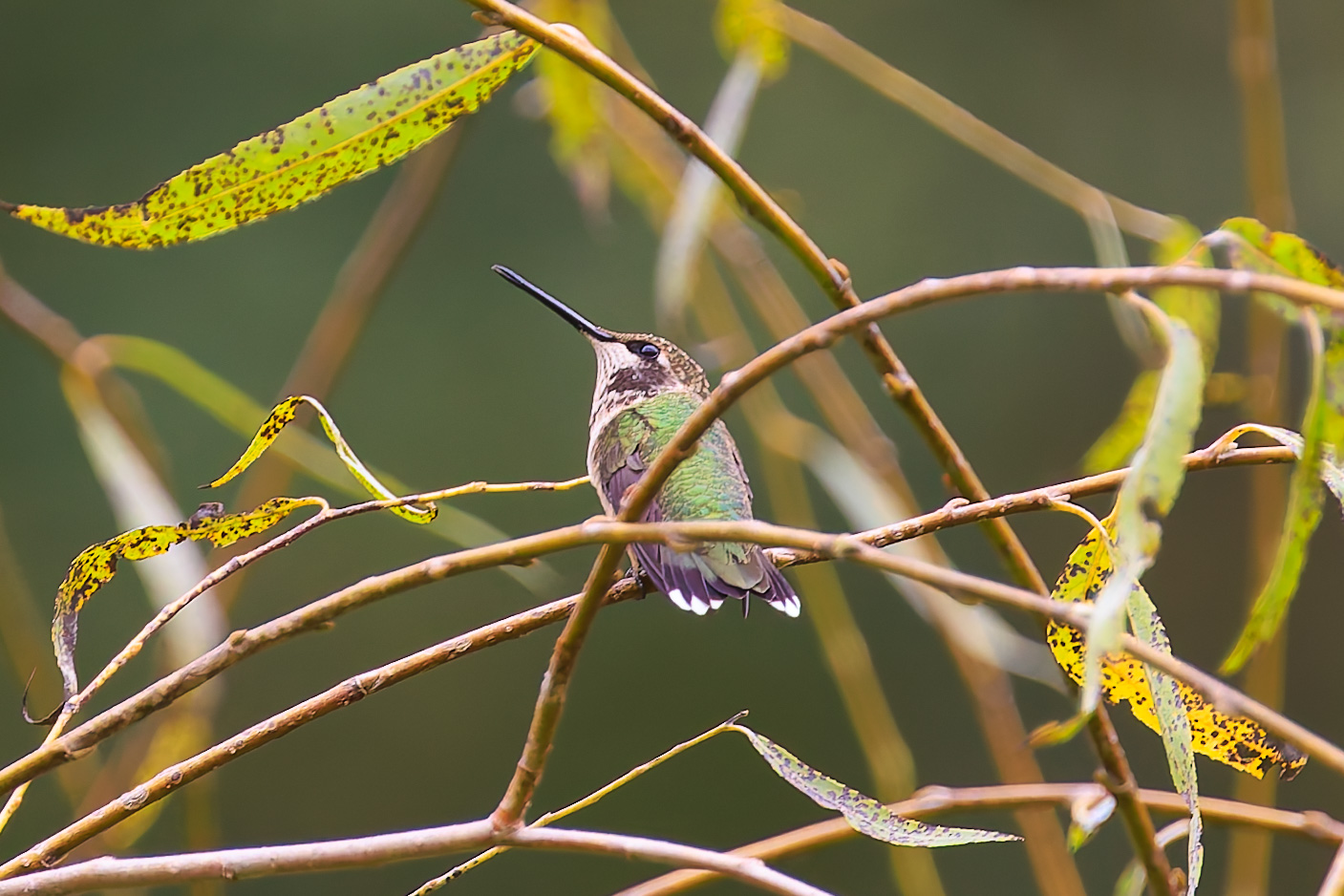
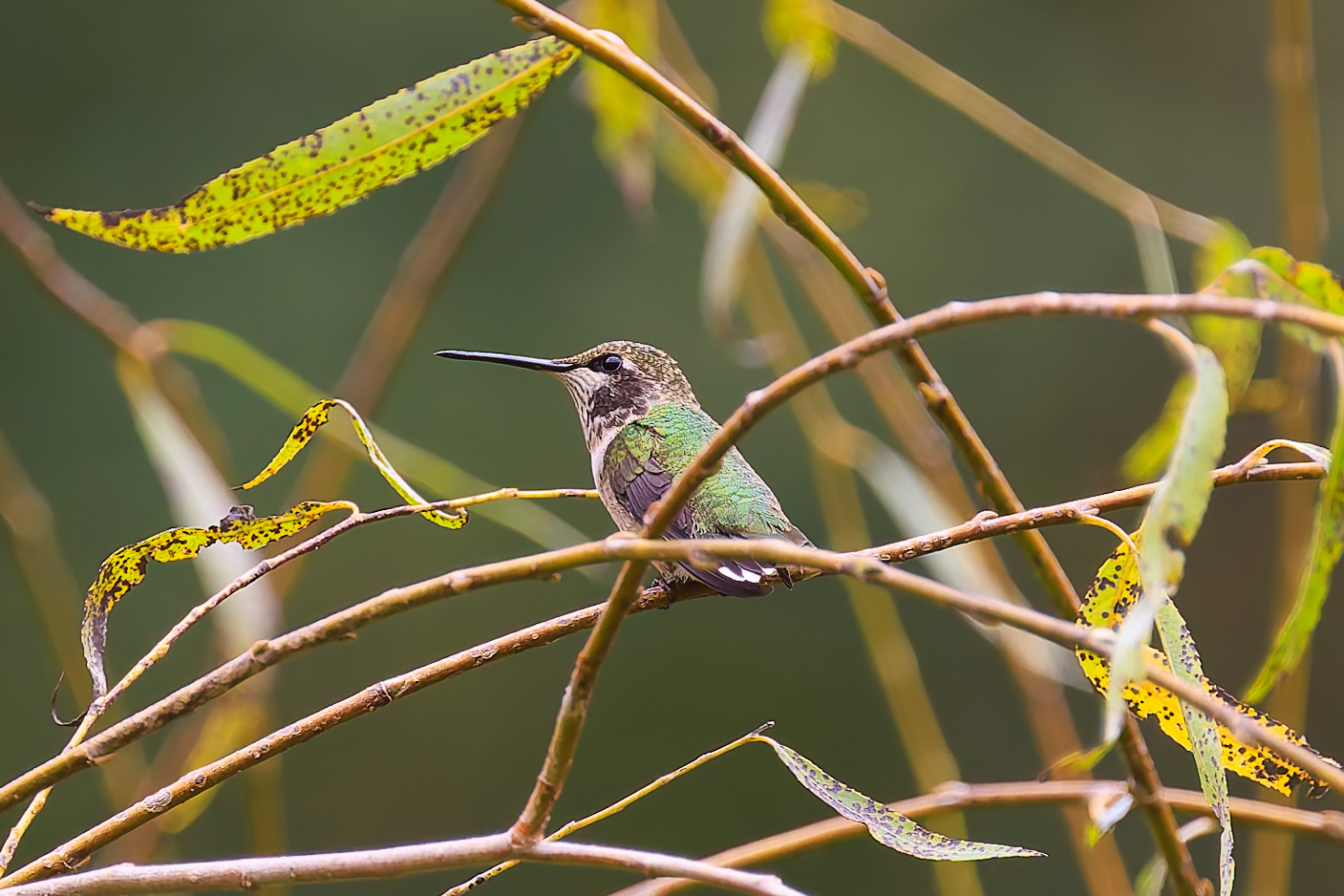
We were incredibly lucky to see that the Ruby-Throated Hummingbird had landed on a branch! It stayed put for a bit, looking around as it perched. After it flew away though, we did not see it again.
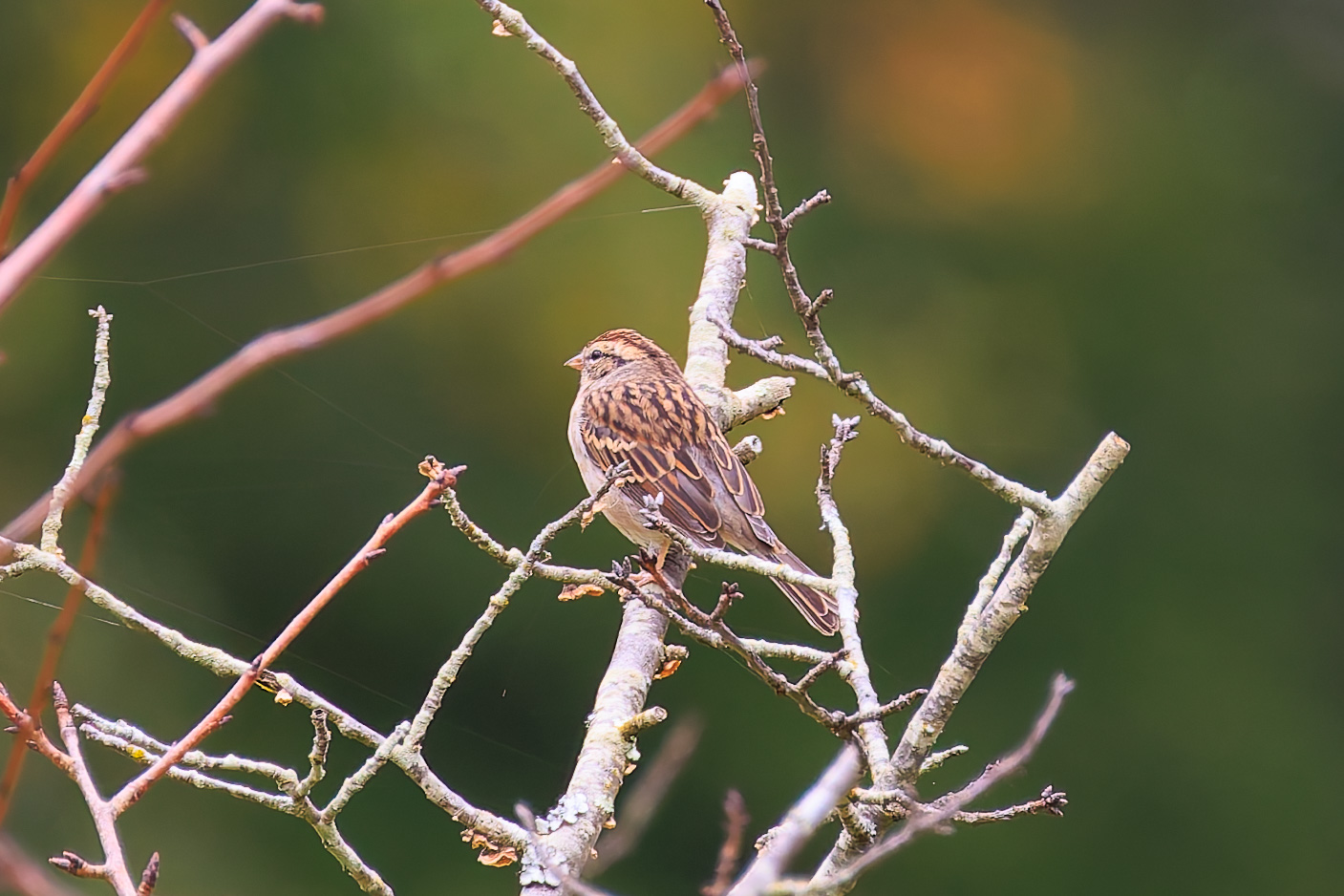
We found a Chipping Sparrow again as we started to head back to the entrance.
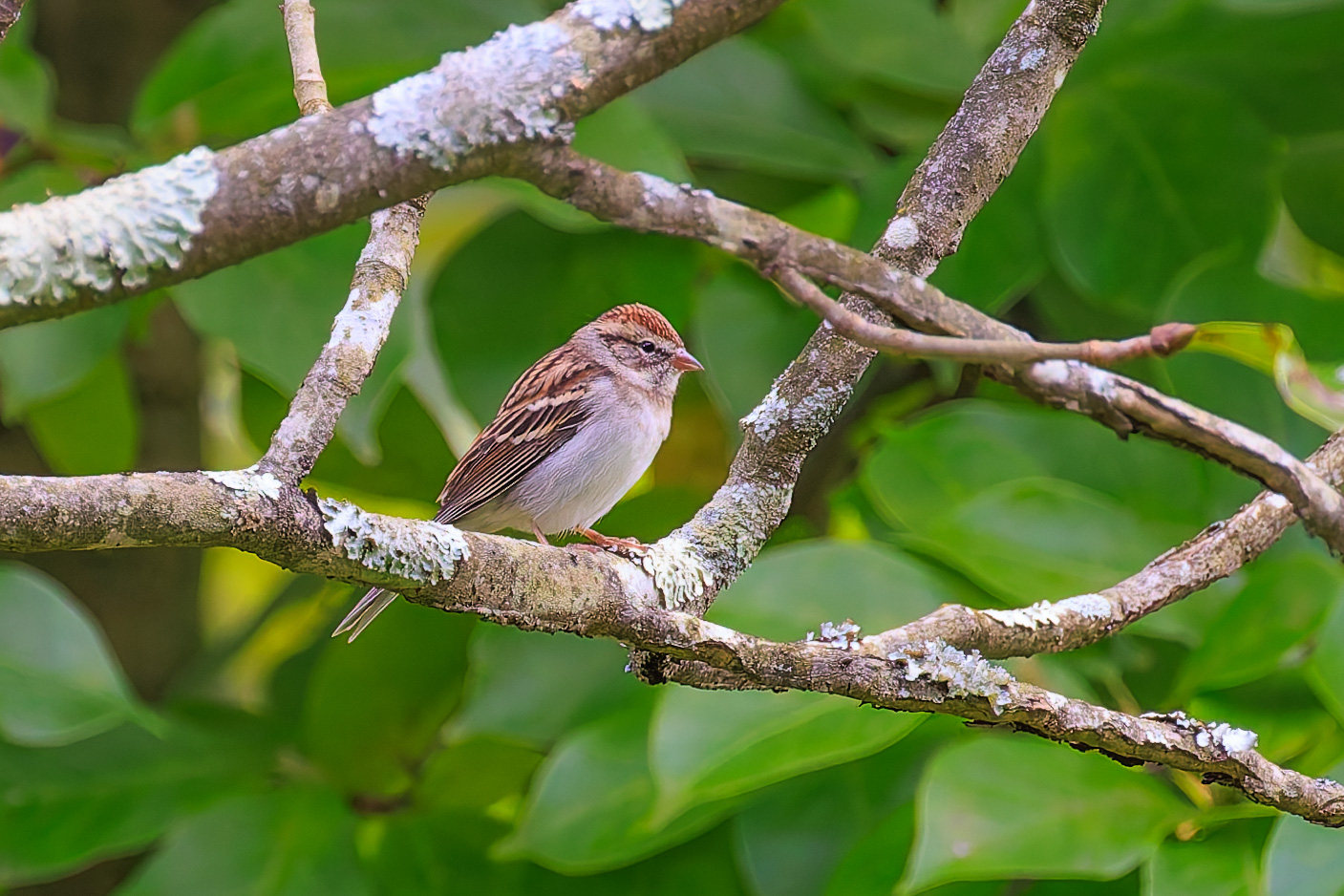
We found another Chipping Sparrow as we ascended the hill to the north of Lake Caroline.
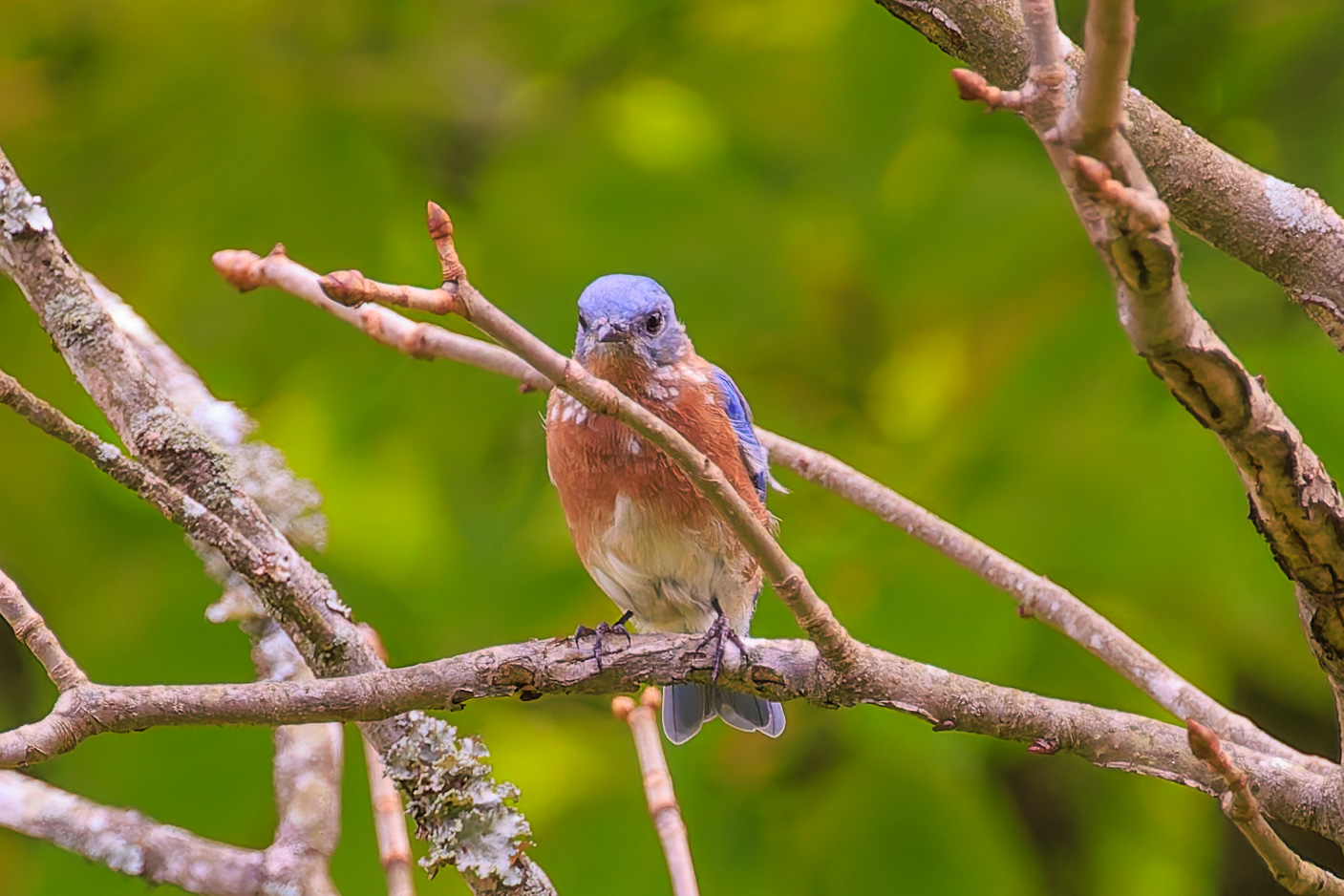
We also found another Eastern Bluebird here.
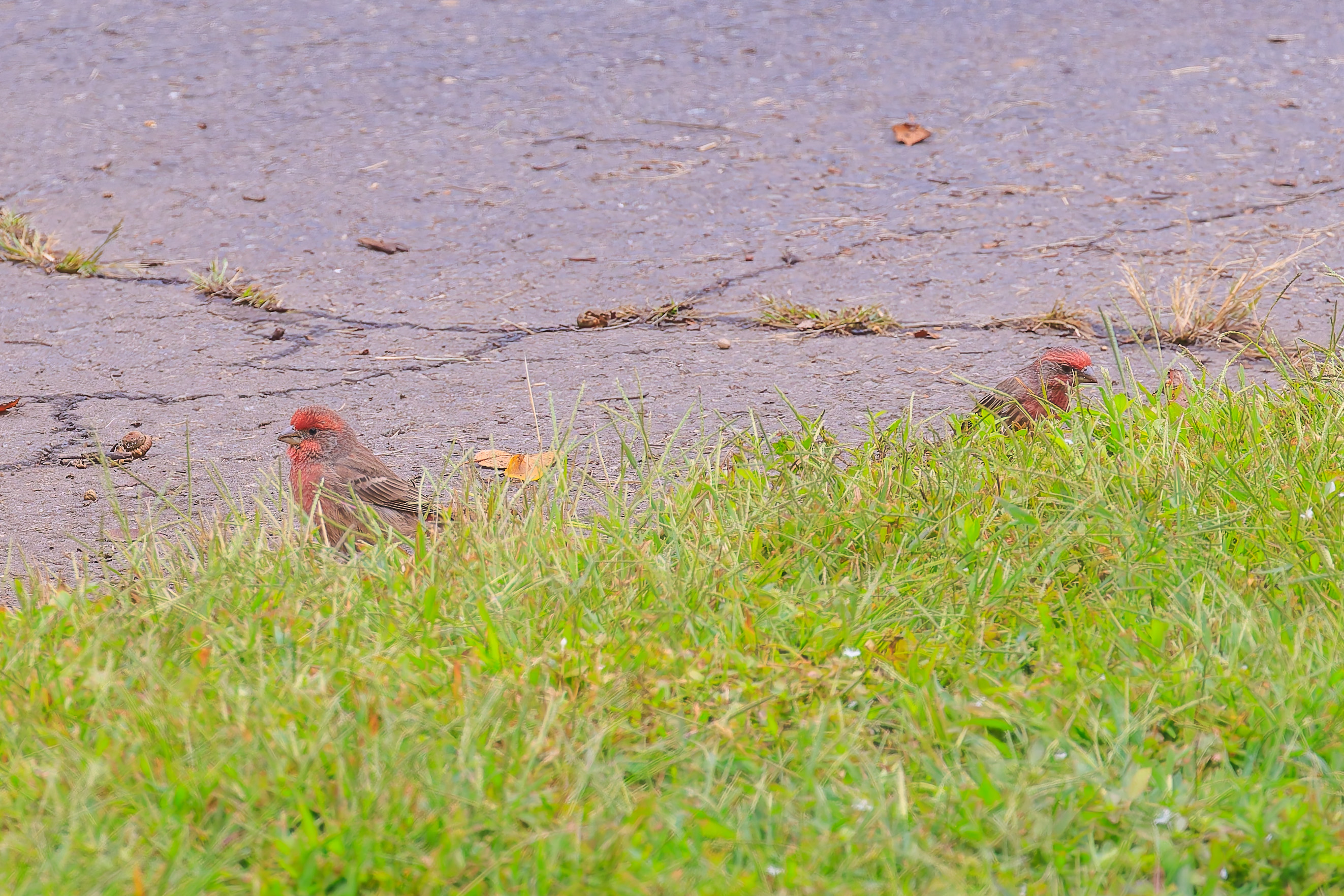
As we reached the top of the hill, we found two male House Finches on the ground at the edge of the grass.
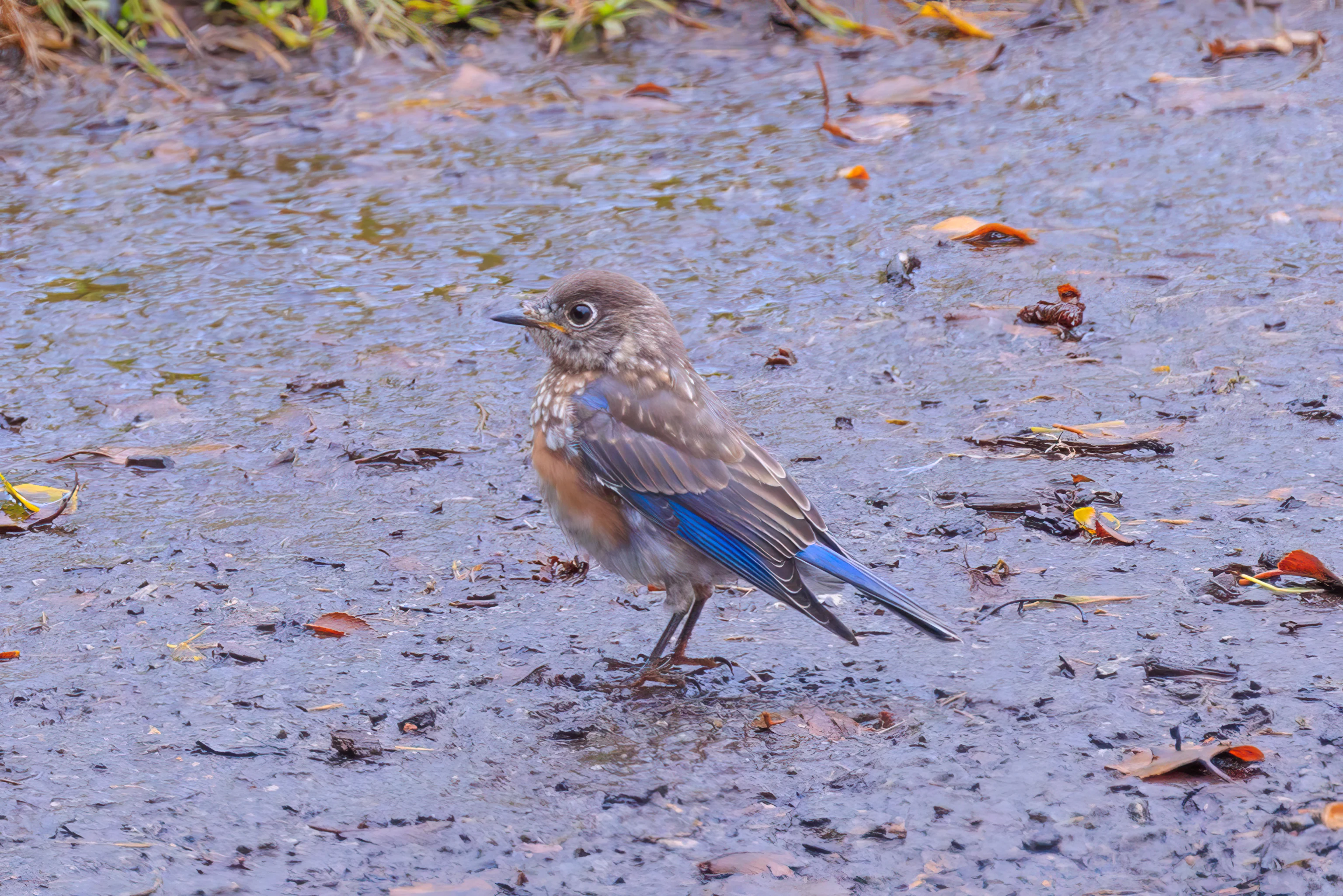
There were also Eastern Bluebirds. This one is easily identified as being an immature.
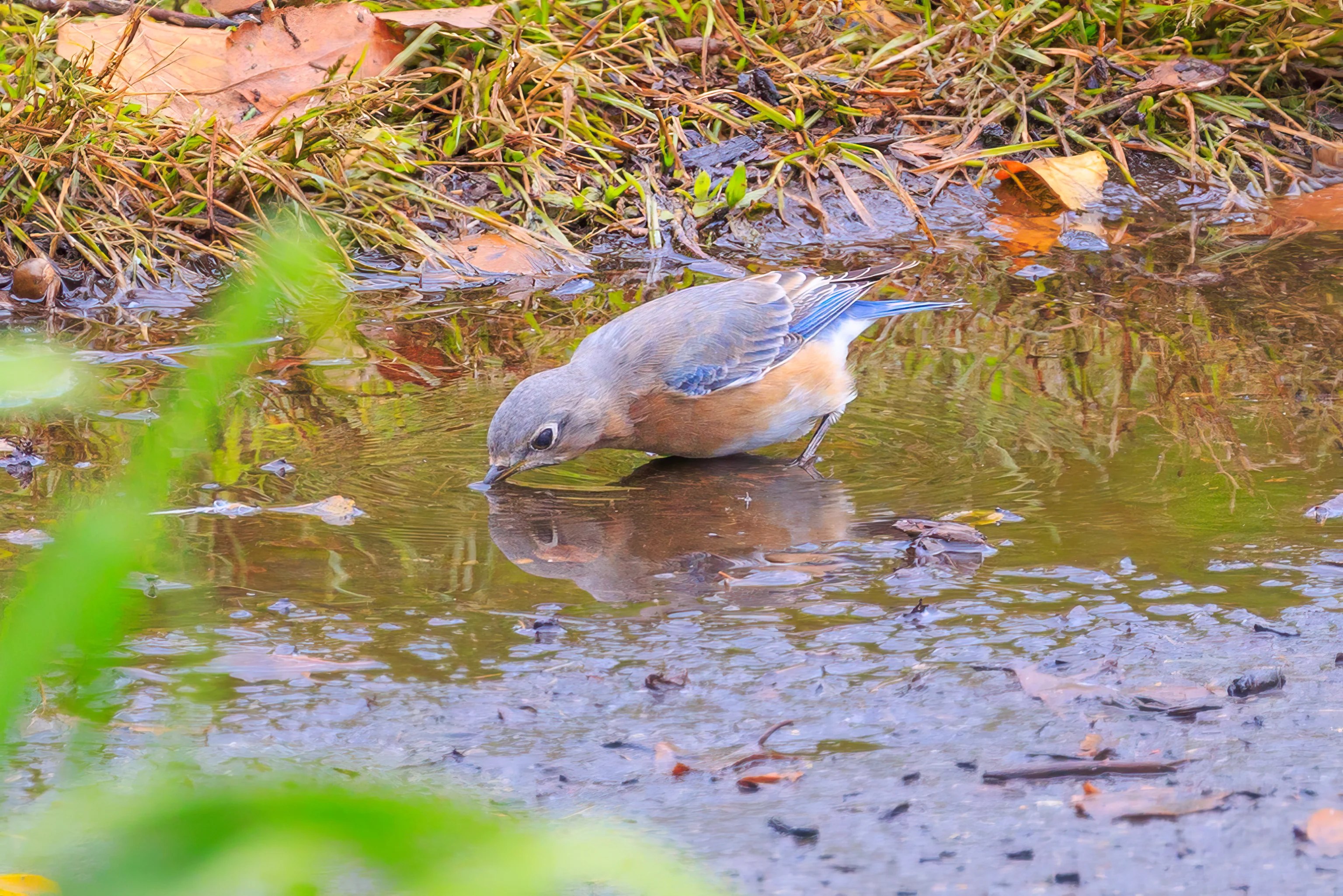
We spotted an adult Eastern Bluebird drinking water from a large puddle!
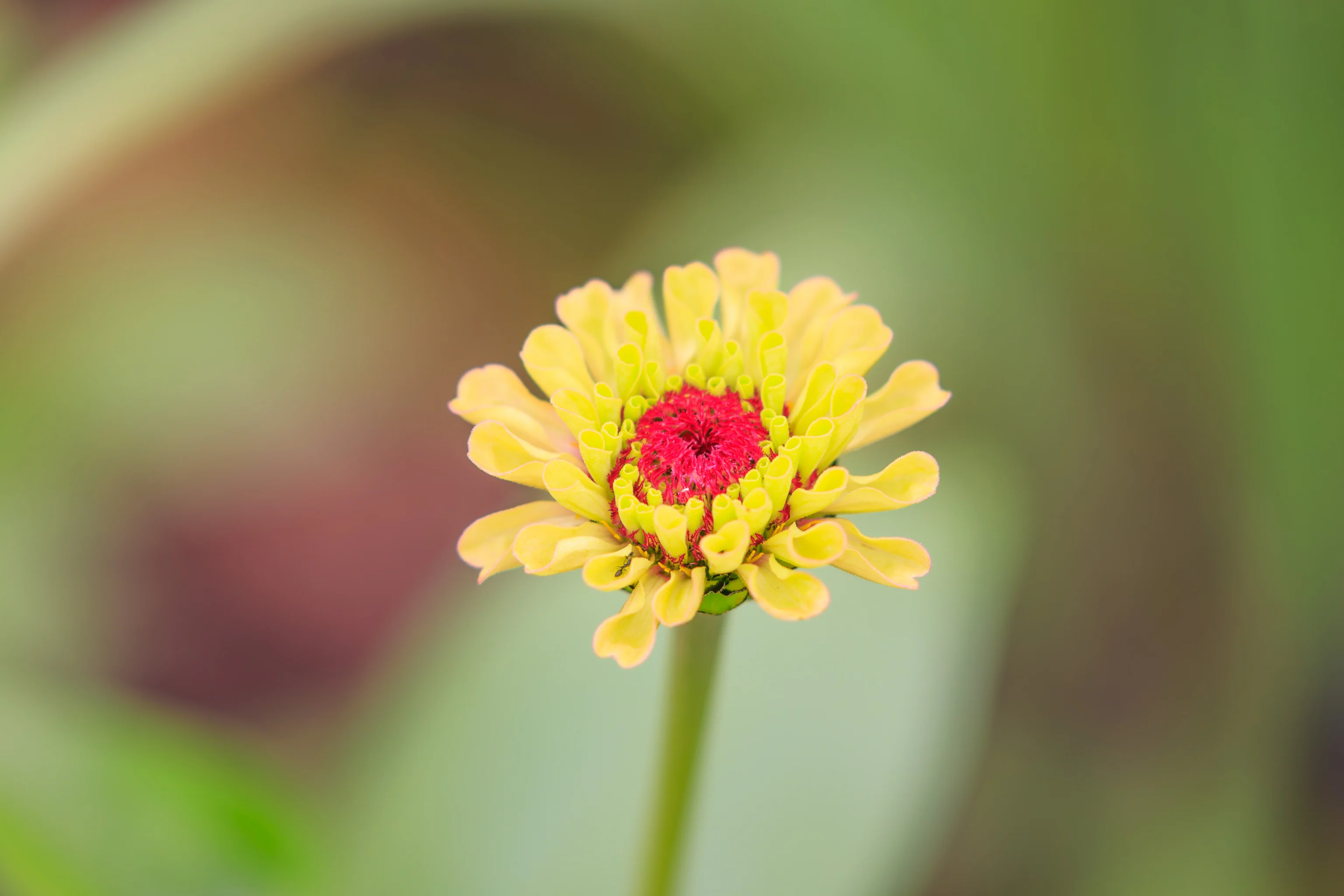
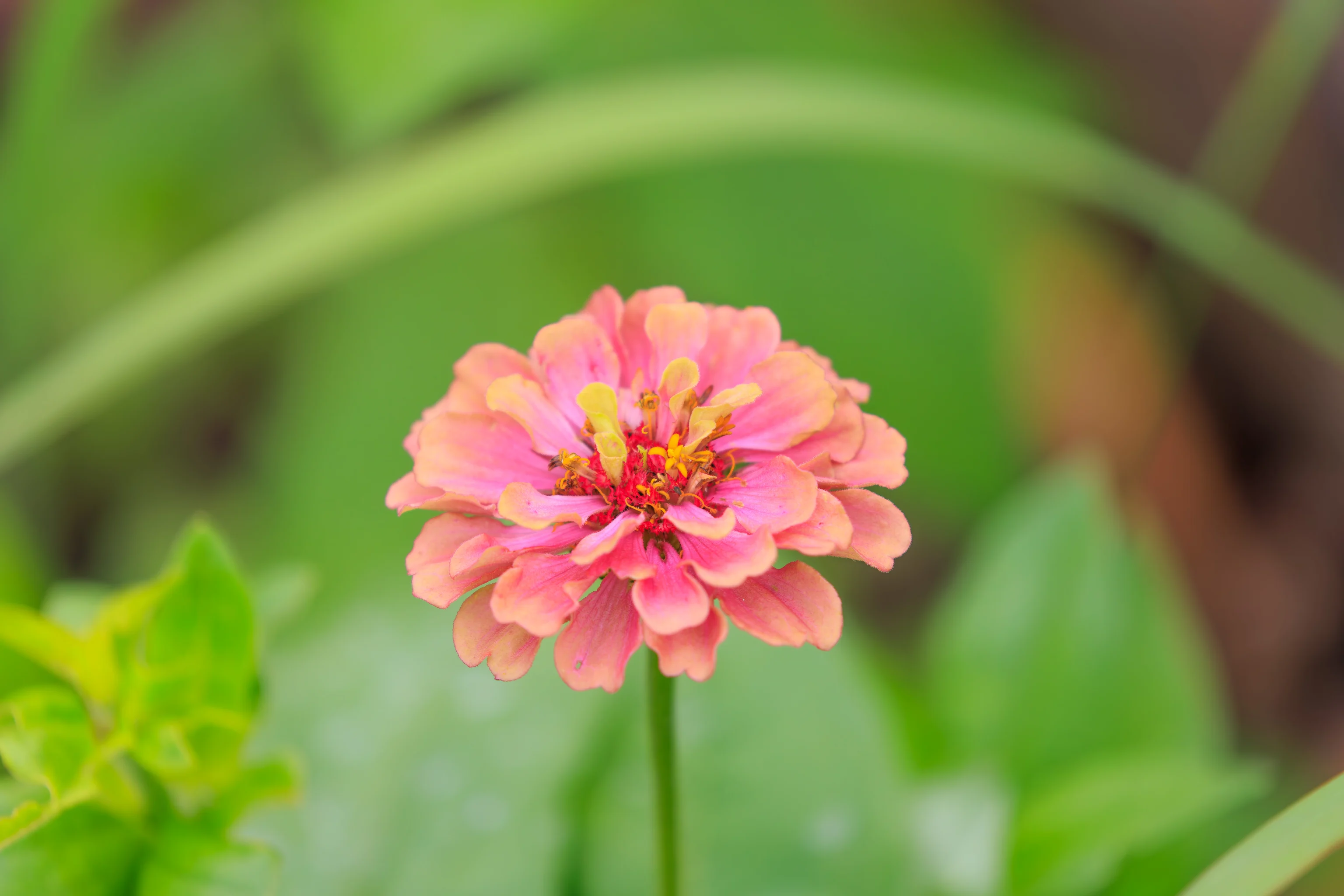
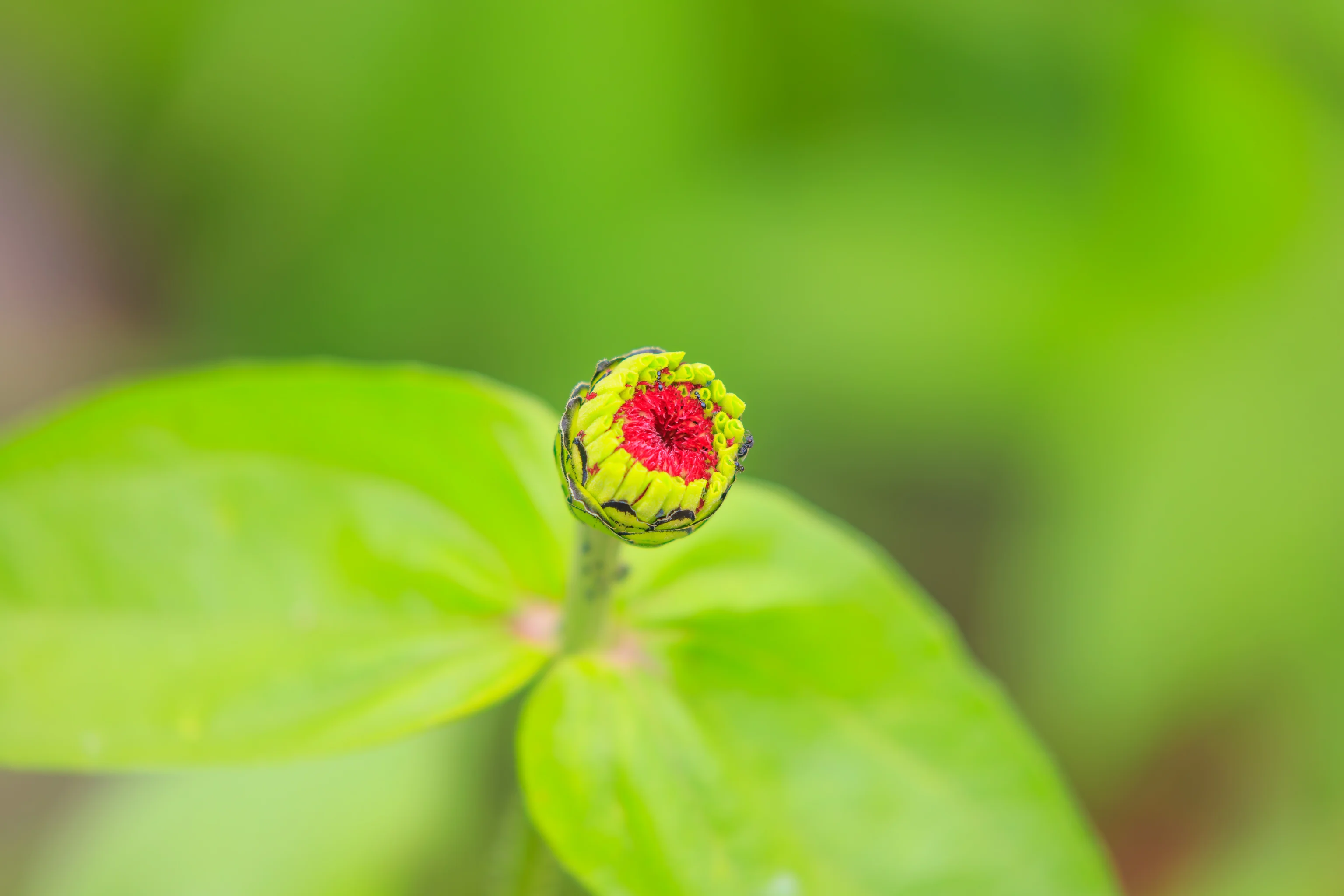
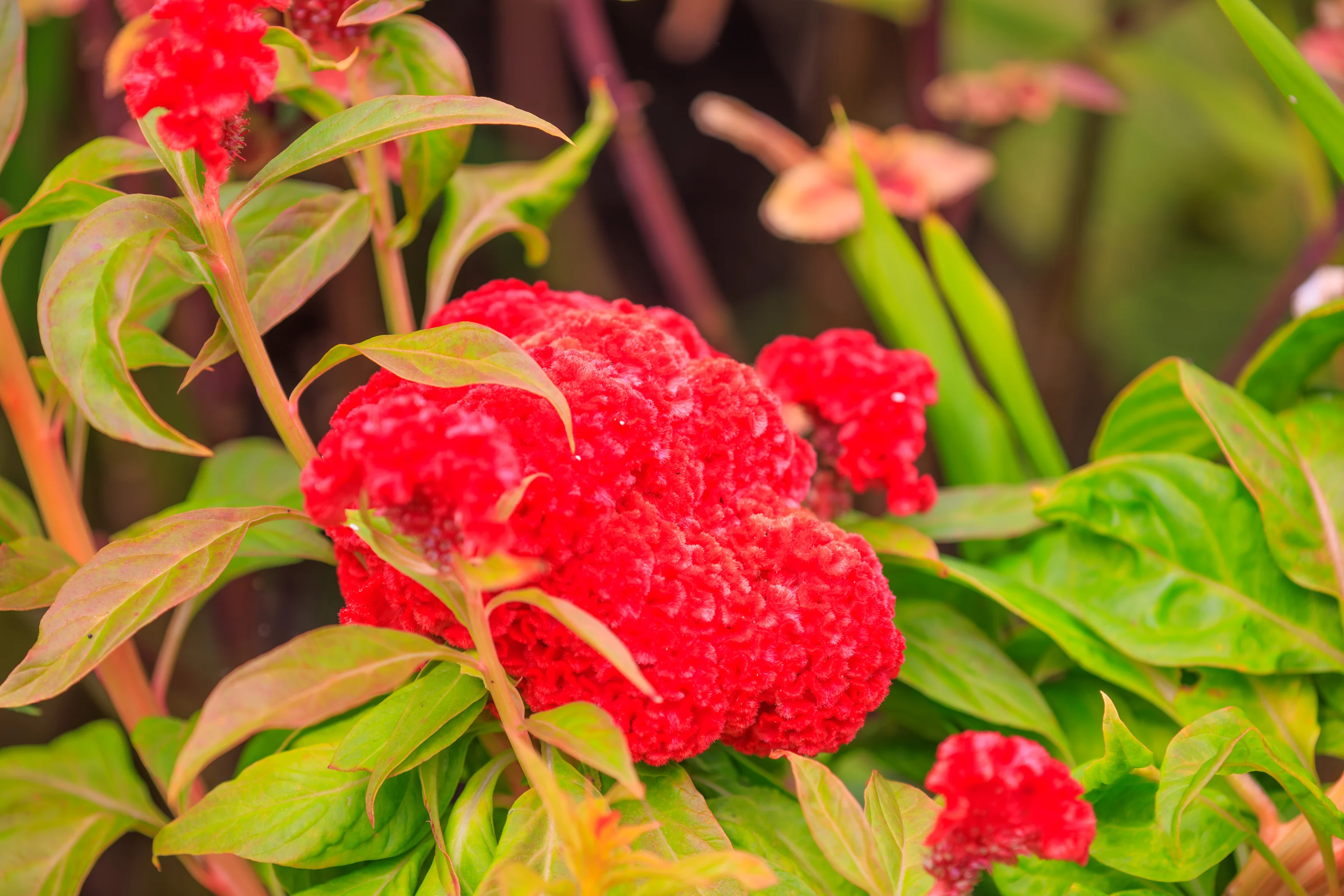
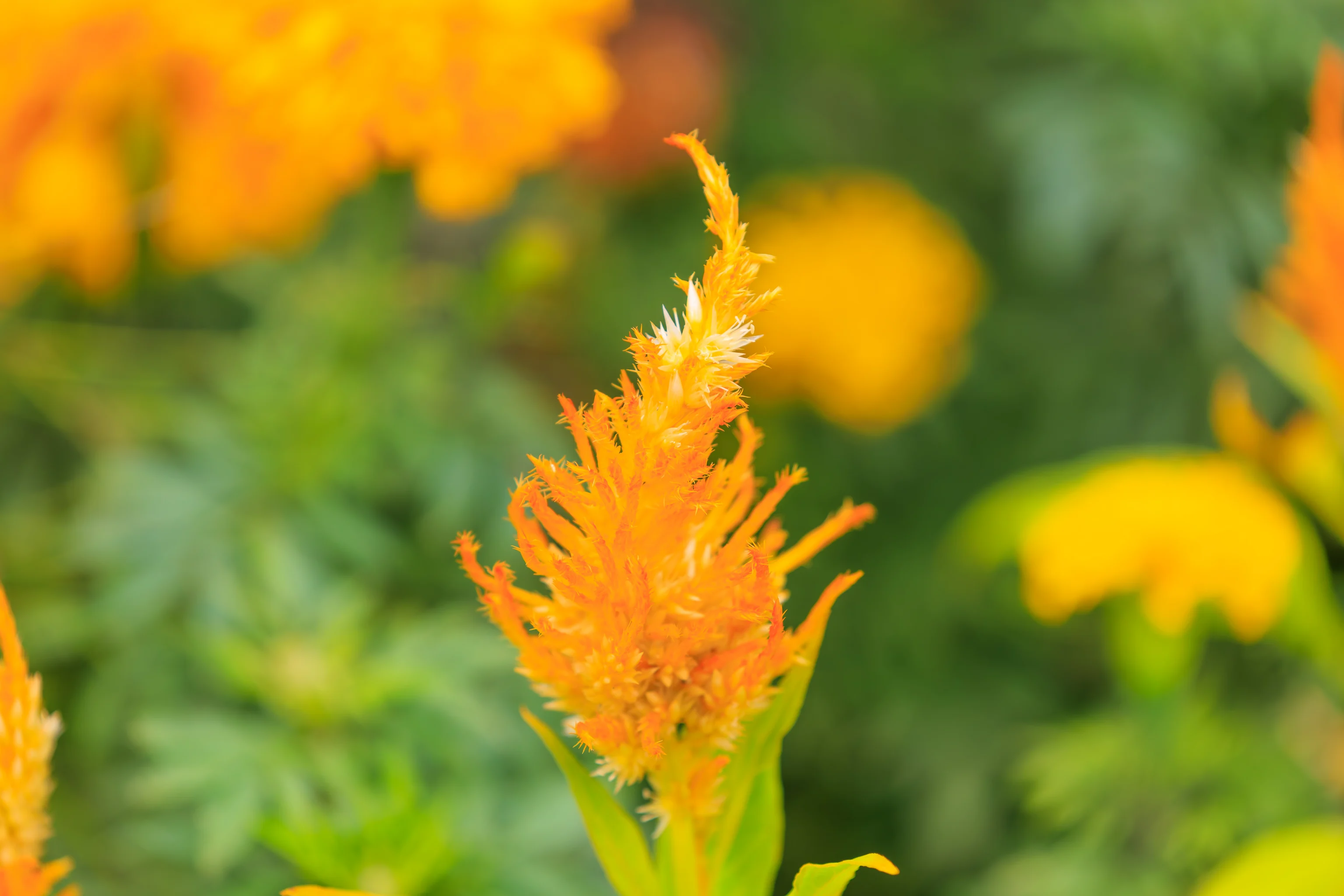
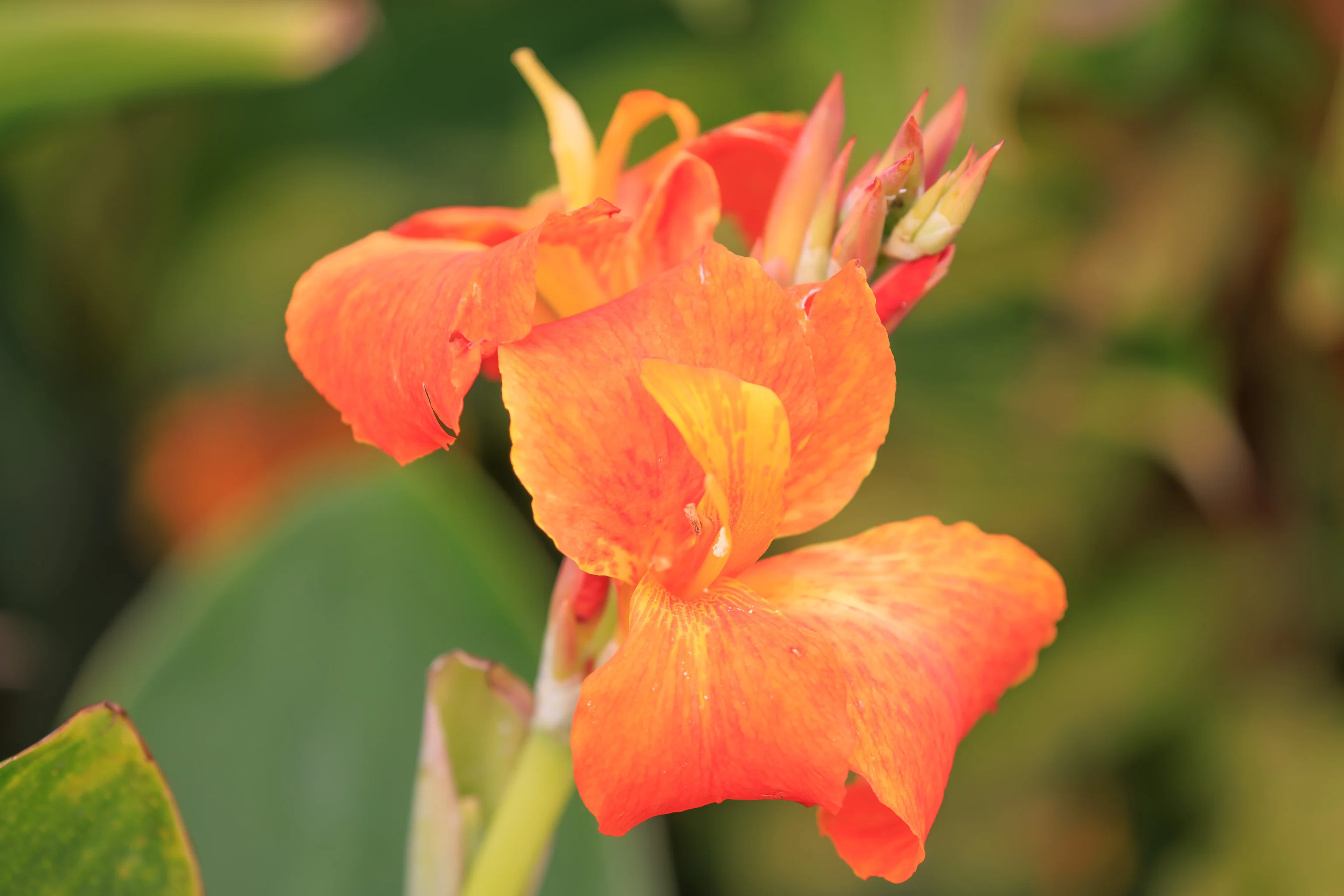
We photographed a number of interesting looking flowers as we continued to the exit.
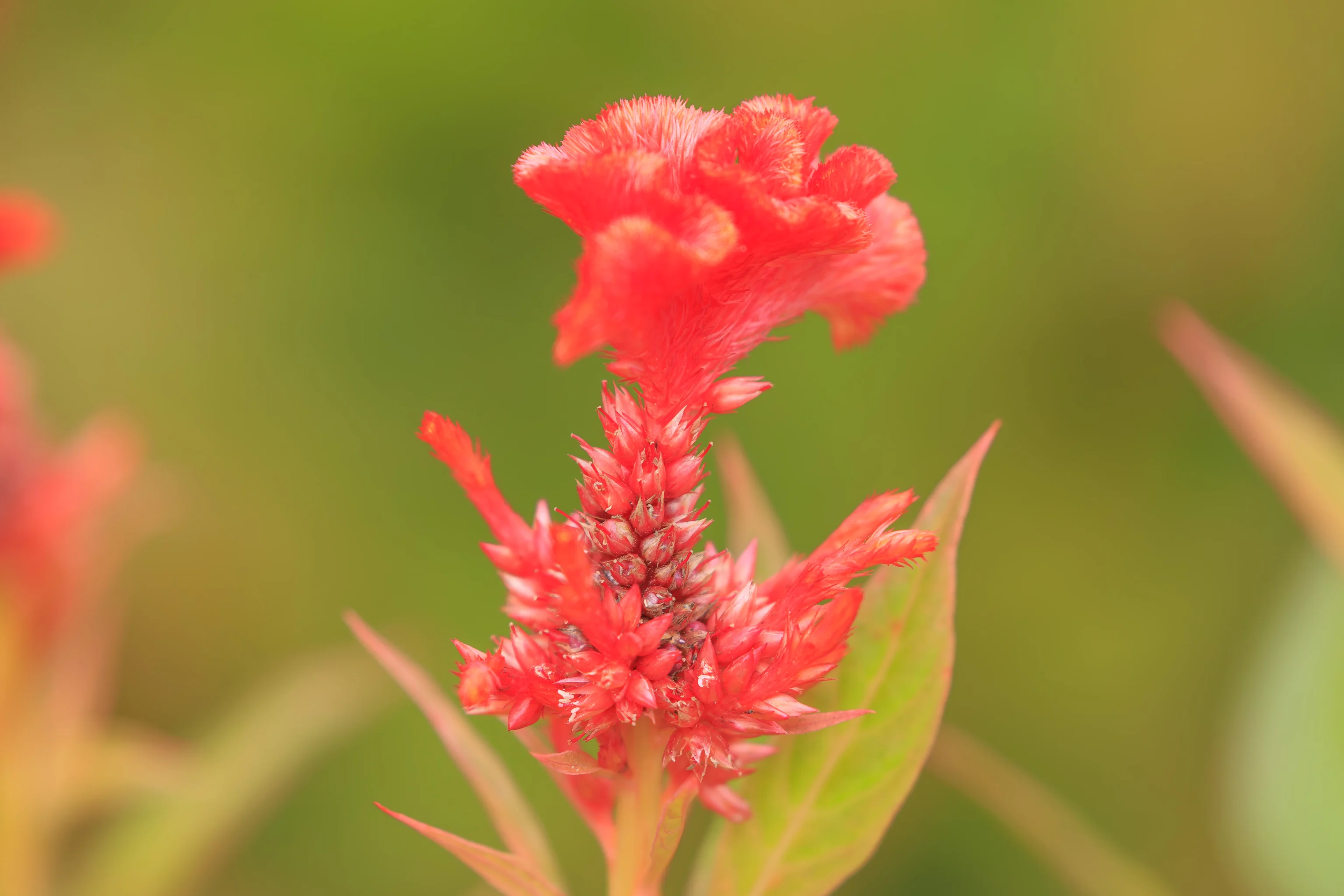
The lower part of this flower sort of resembles a pineapple that has just started to grow. Perhaps the most interesting looking flower that we saw today!


One Reply to “Meadowlark Weekend”